
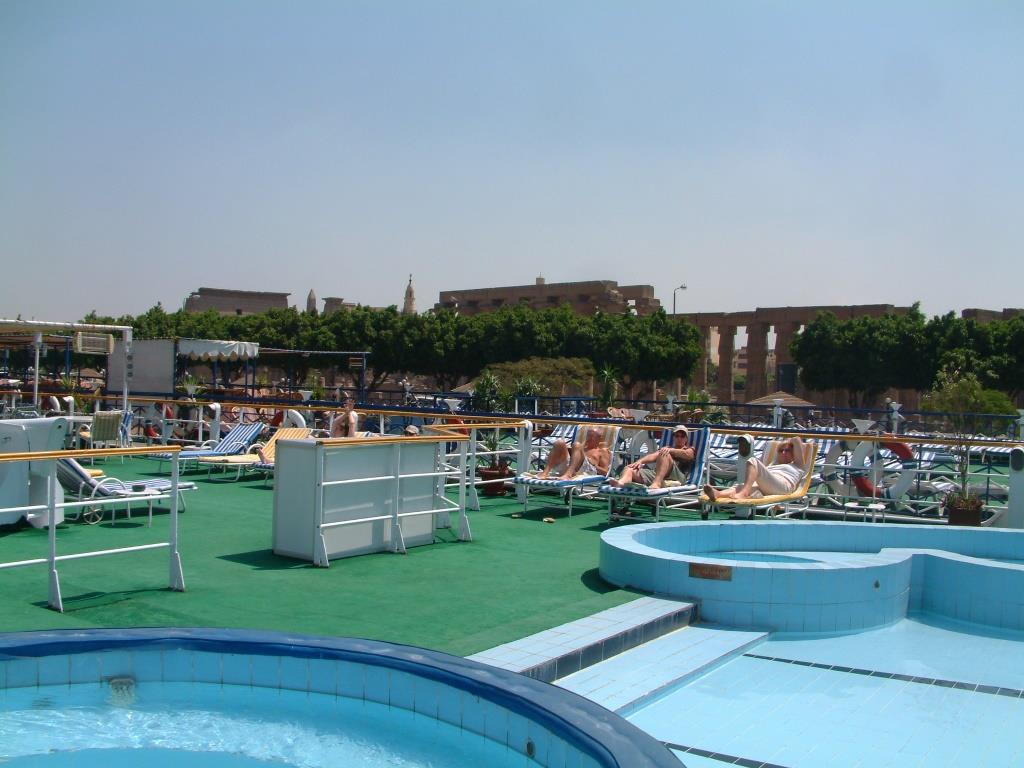
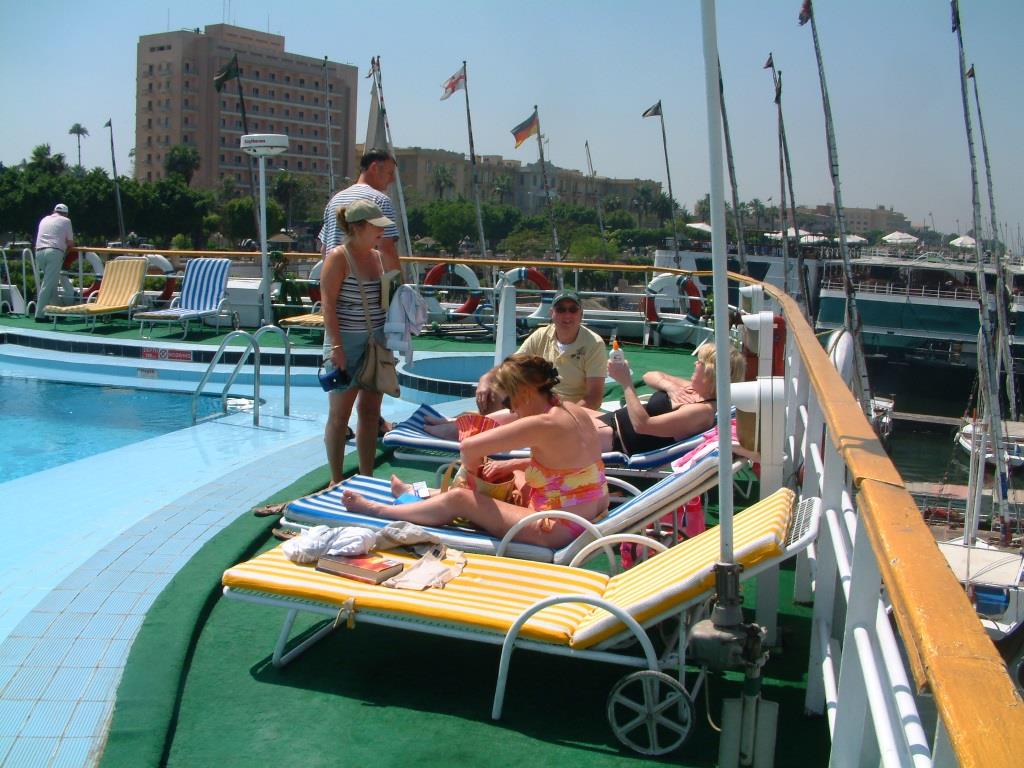
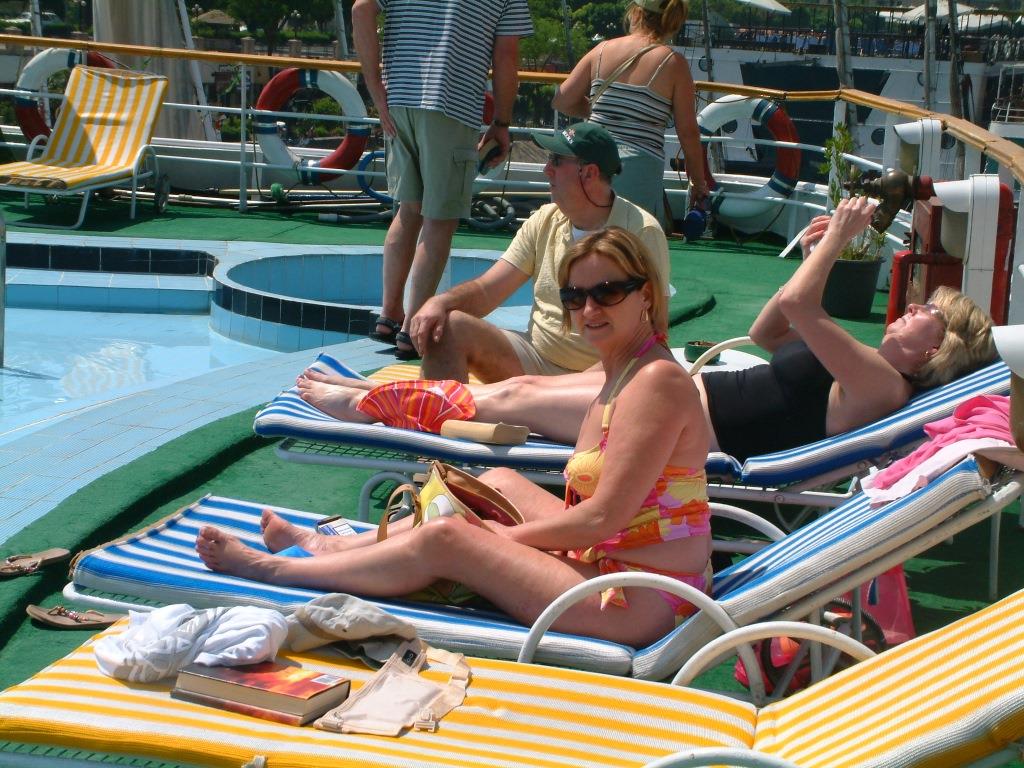
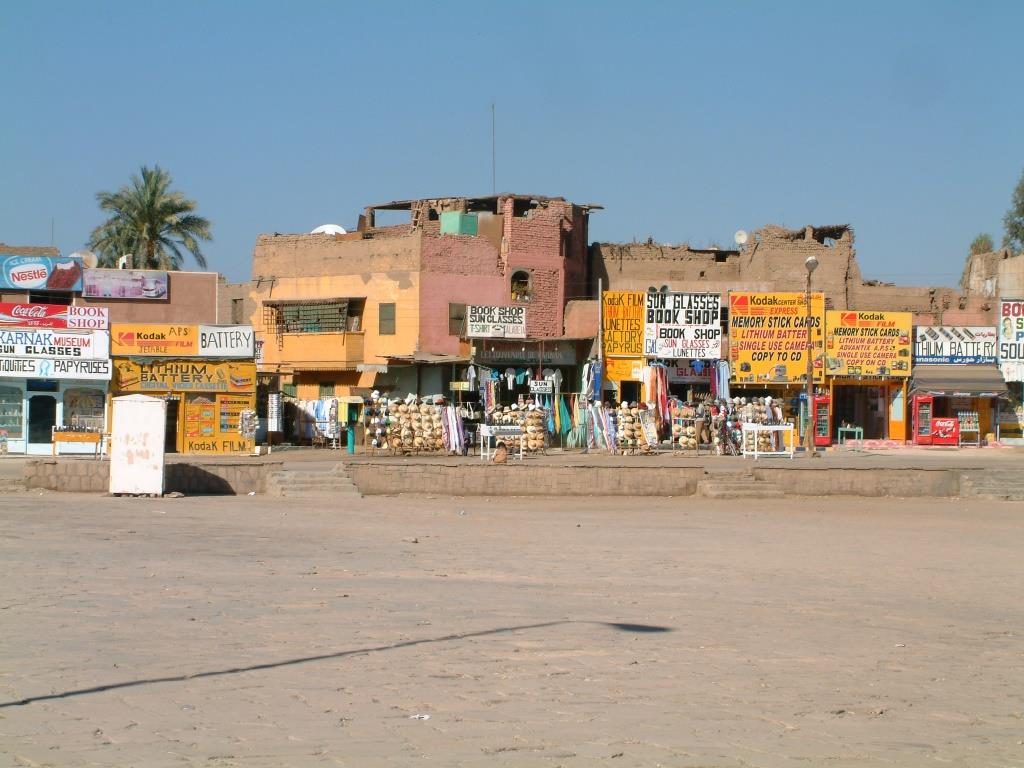
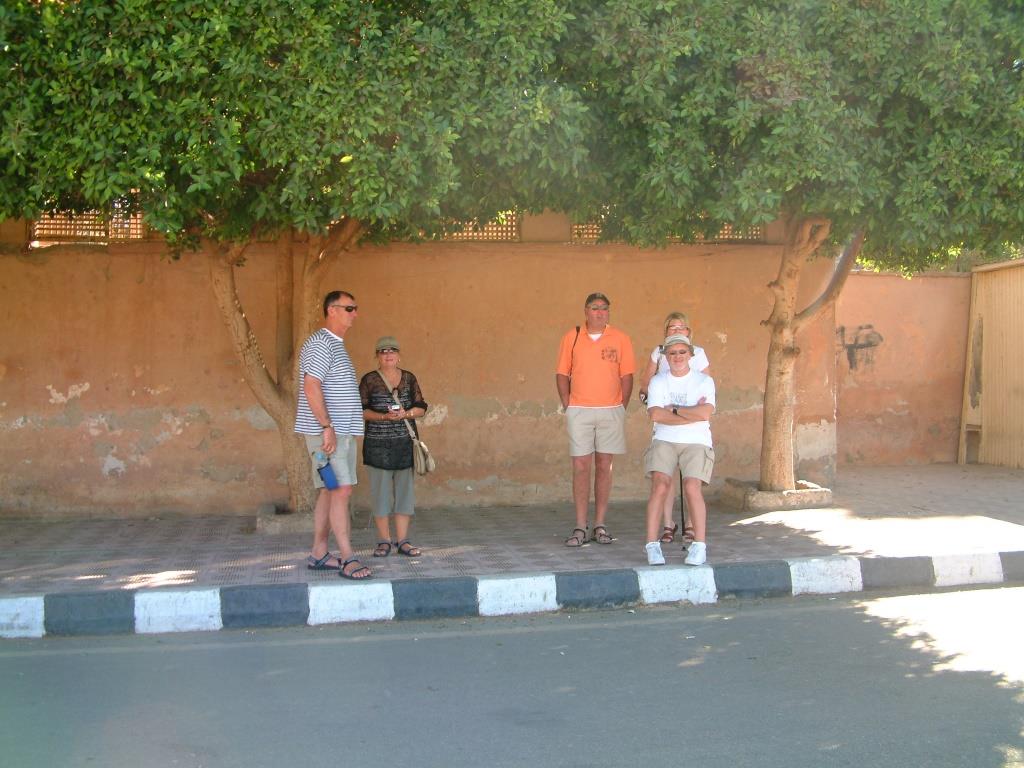
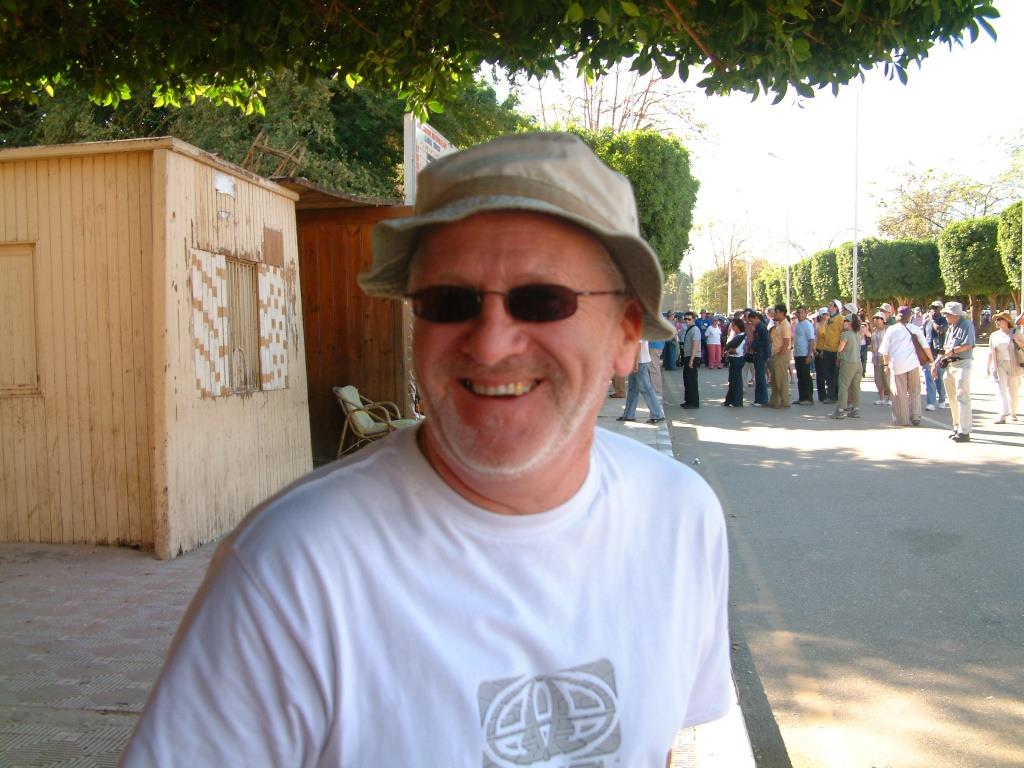
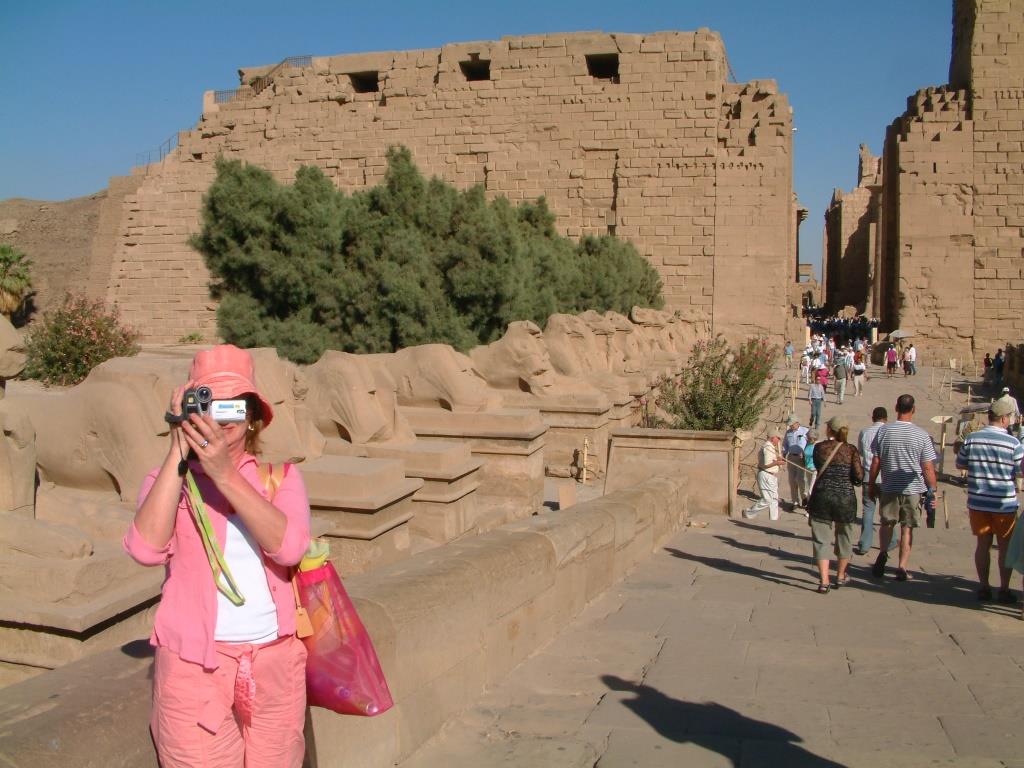
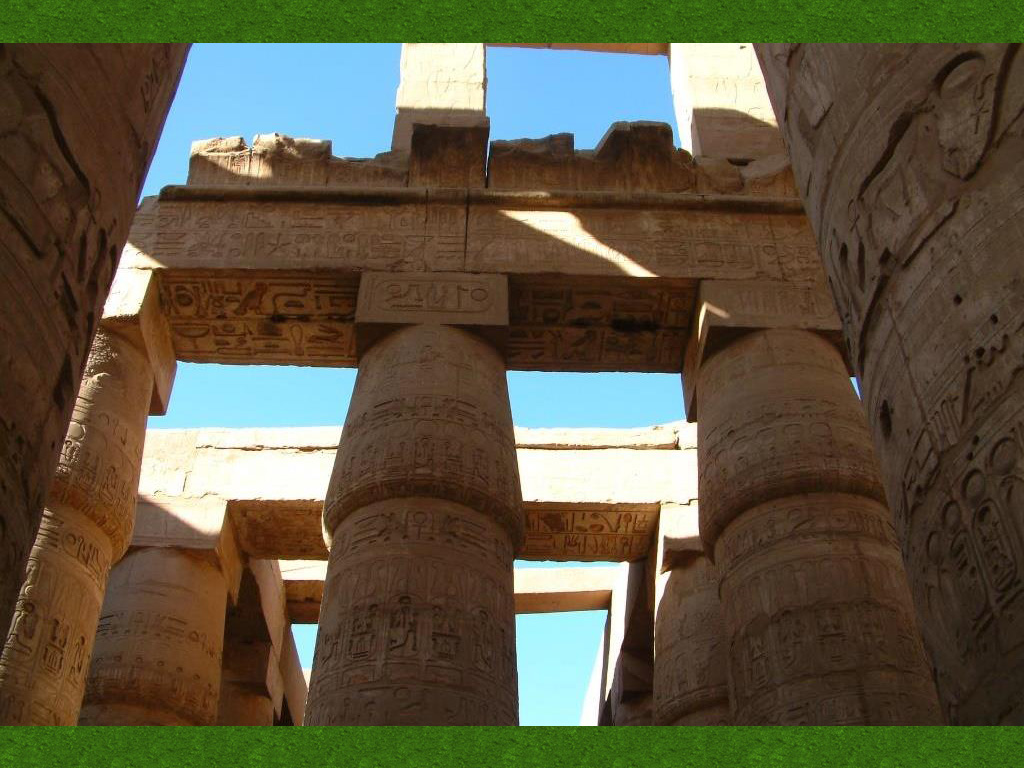

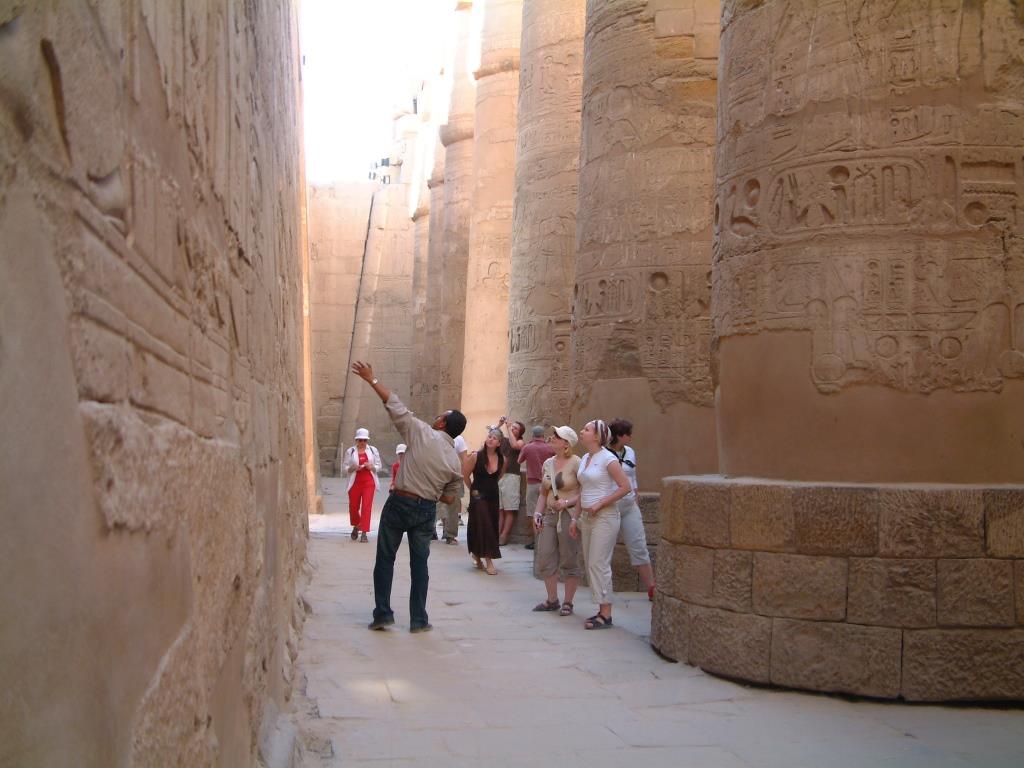
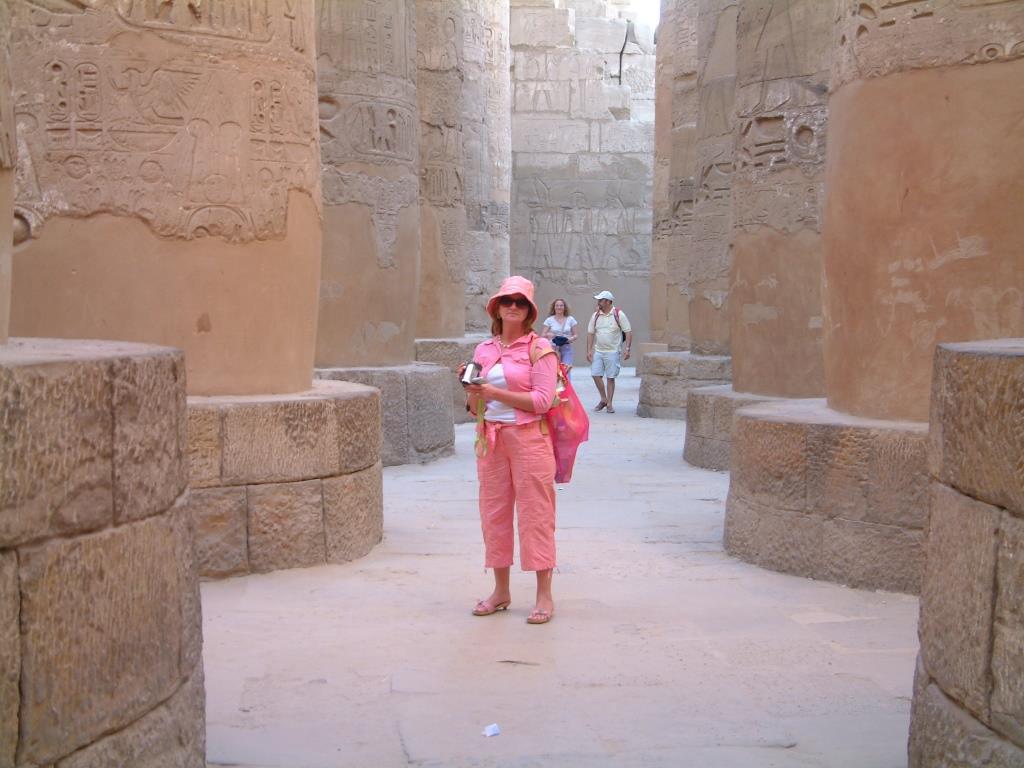
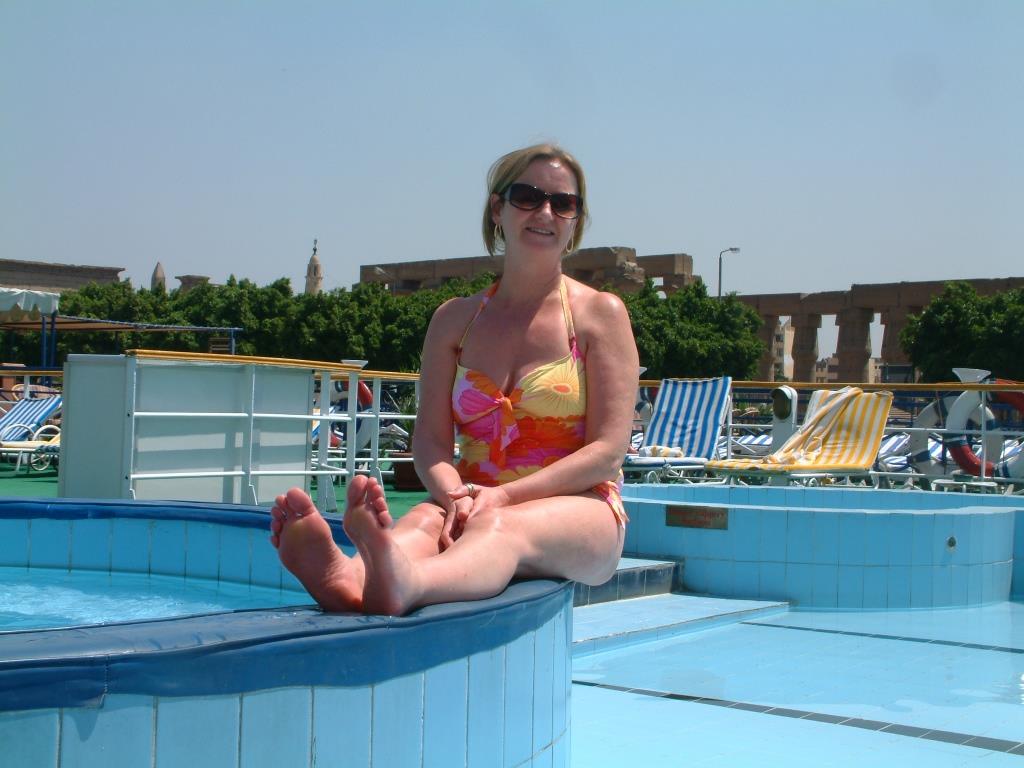
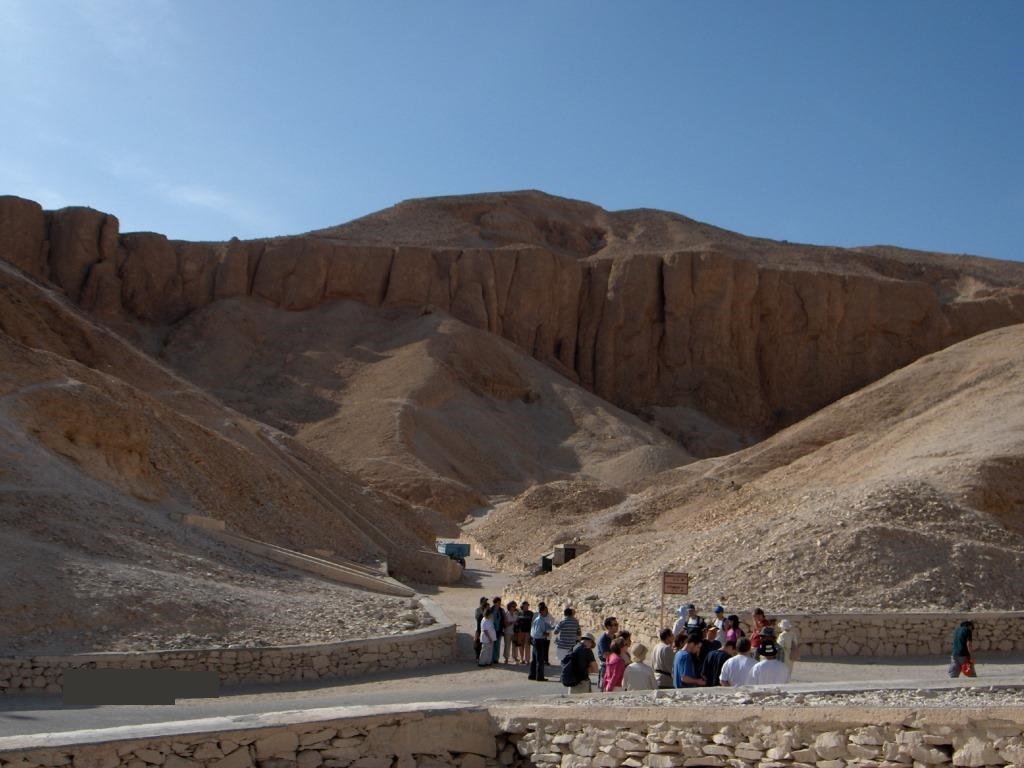
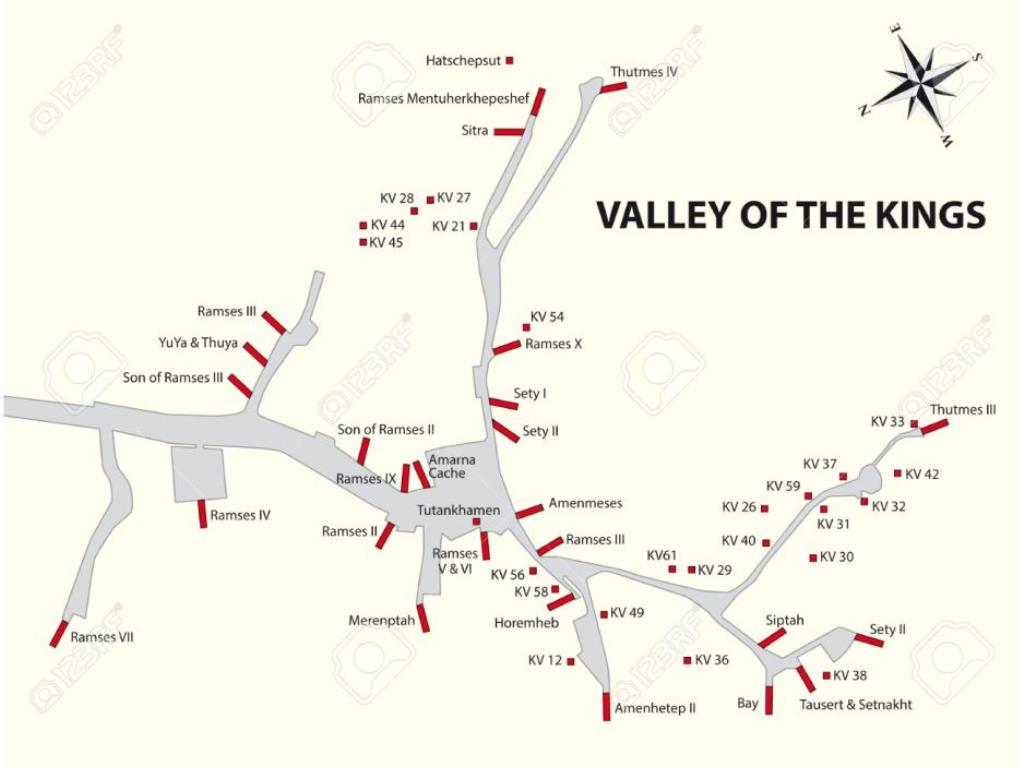
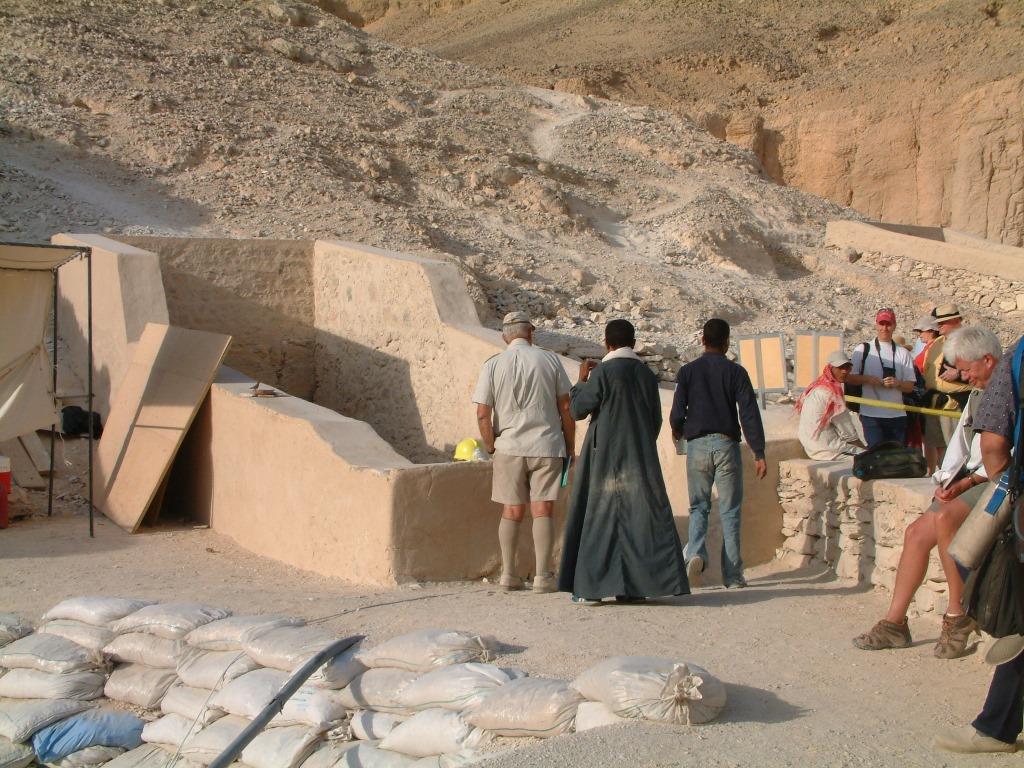
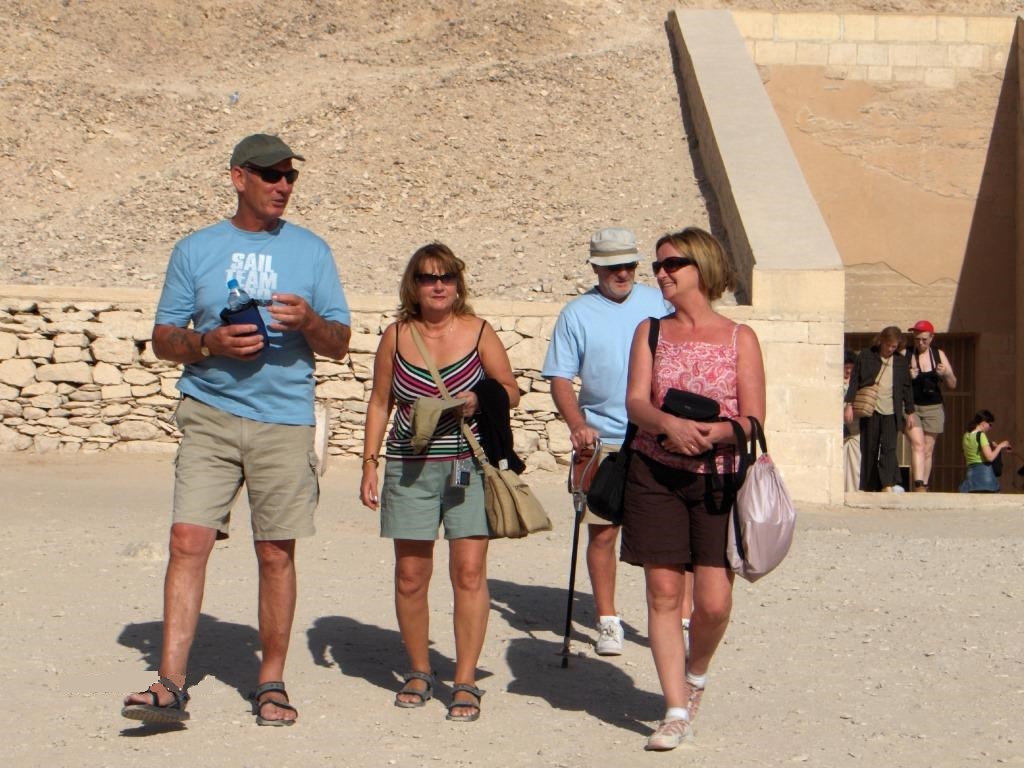
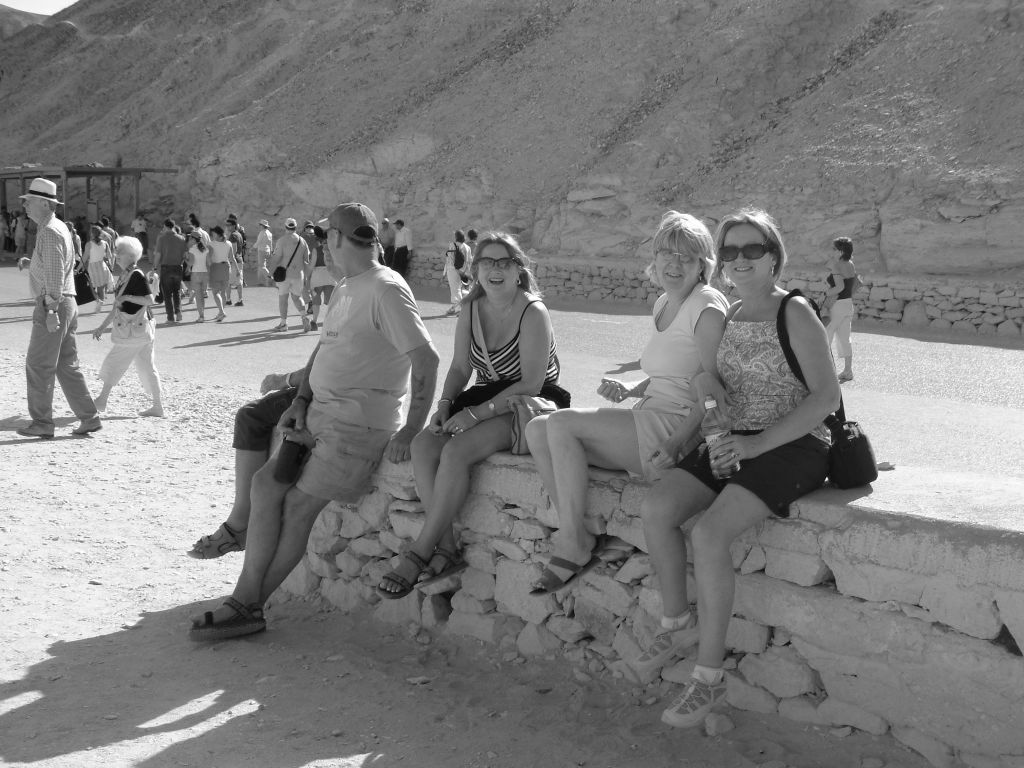
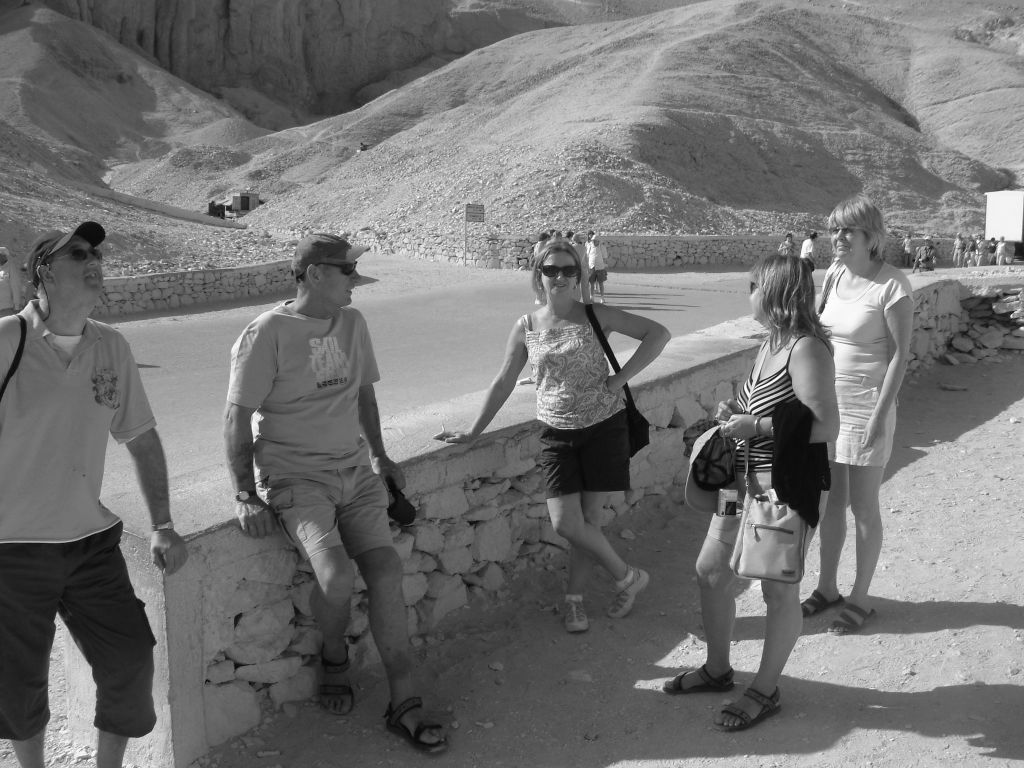
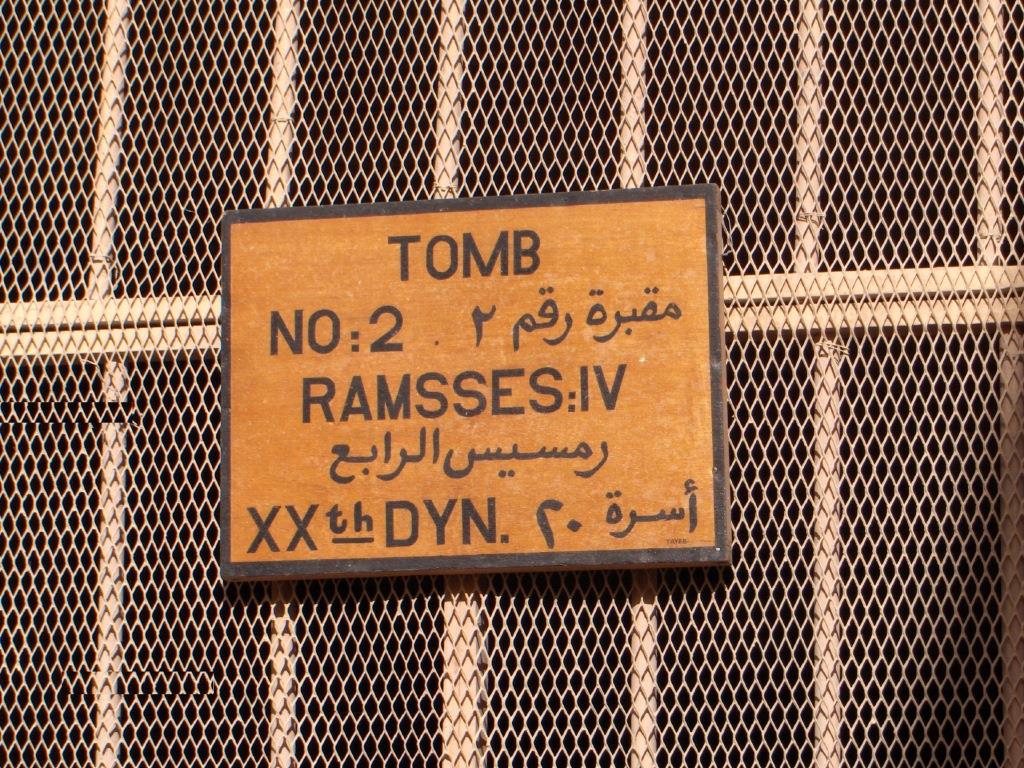
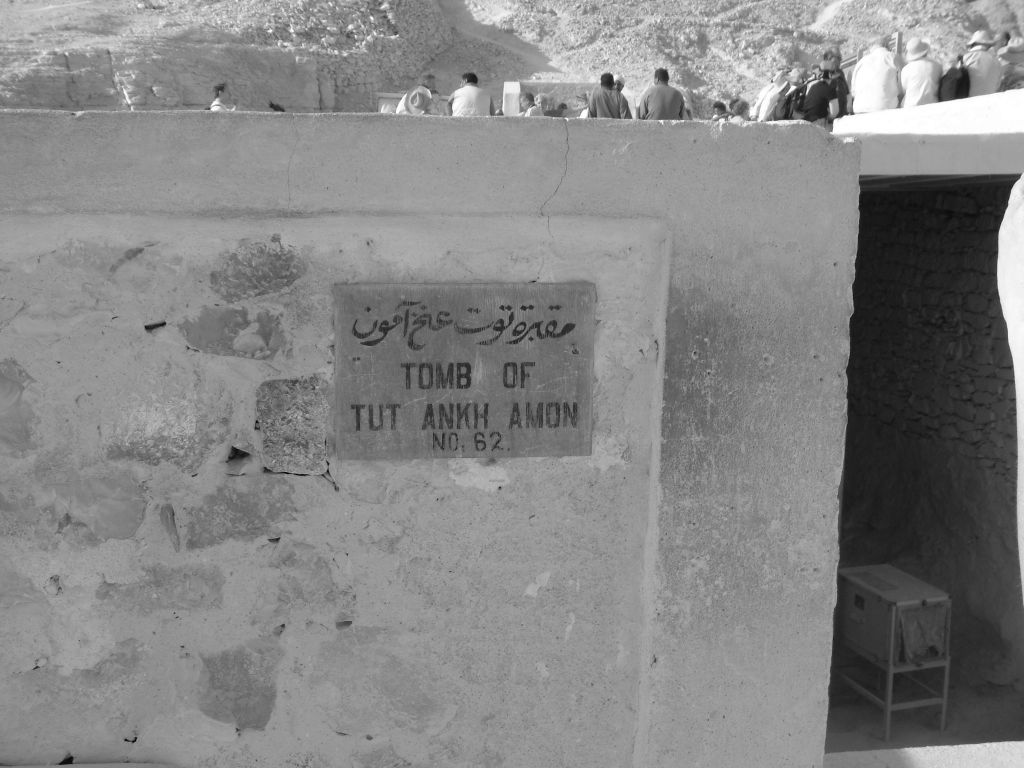
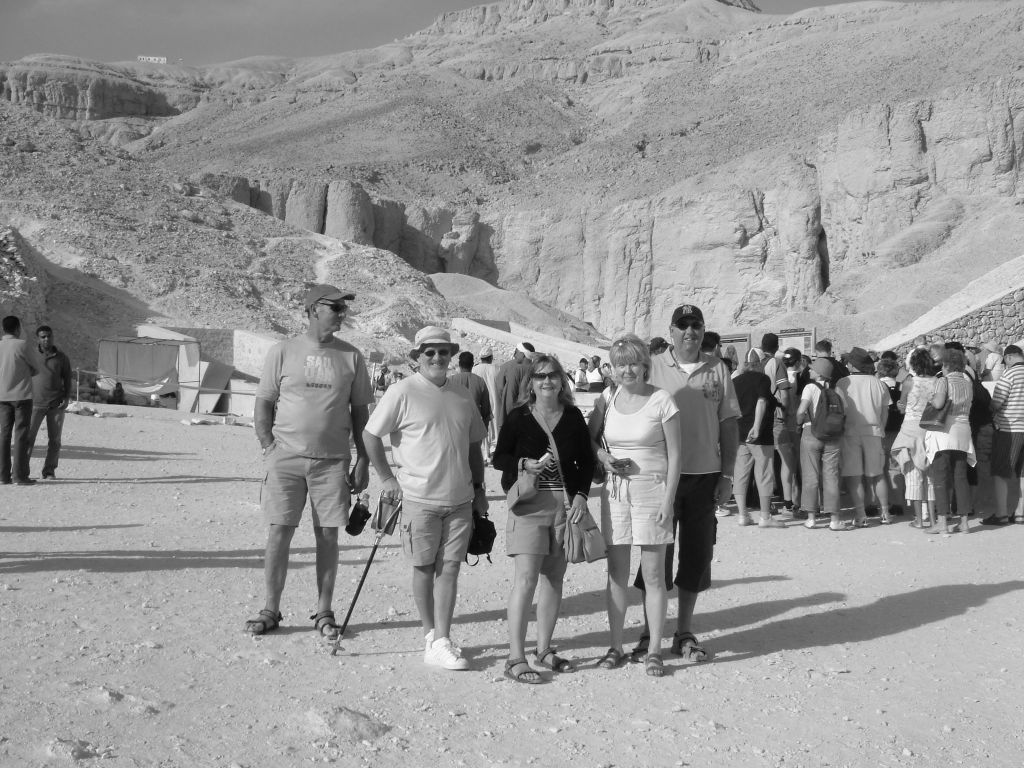
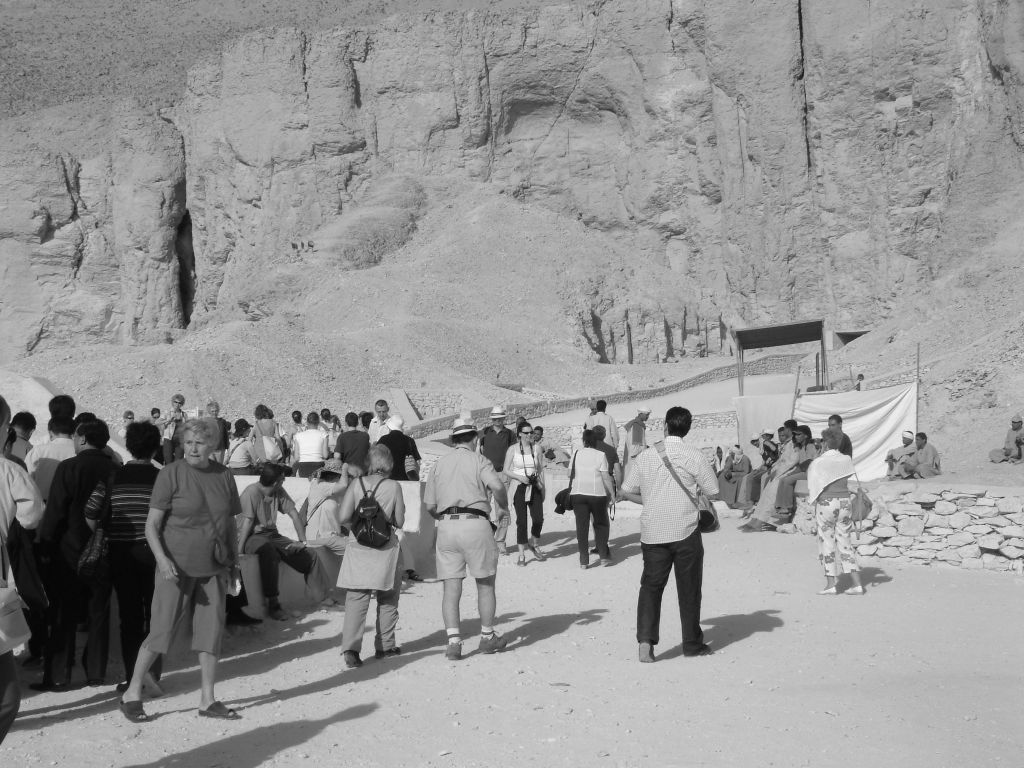
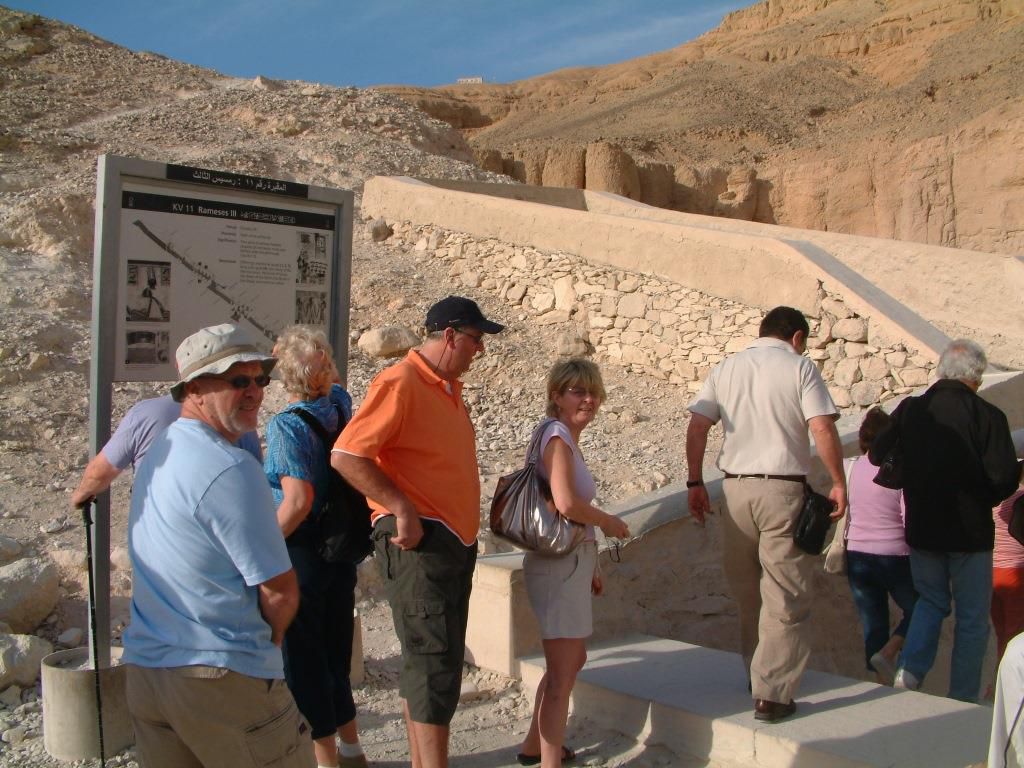
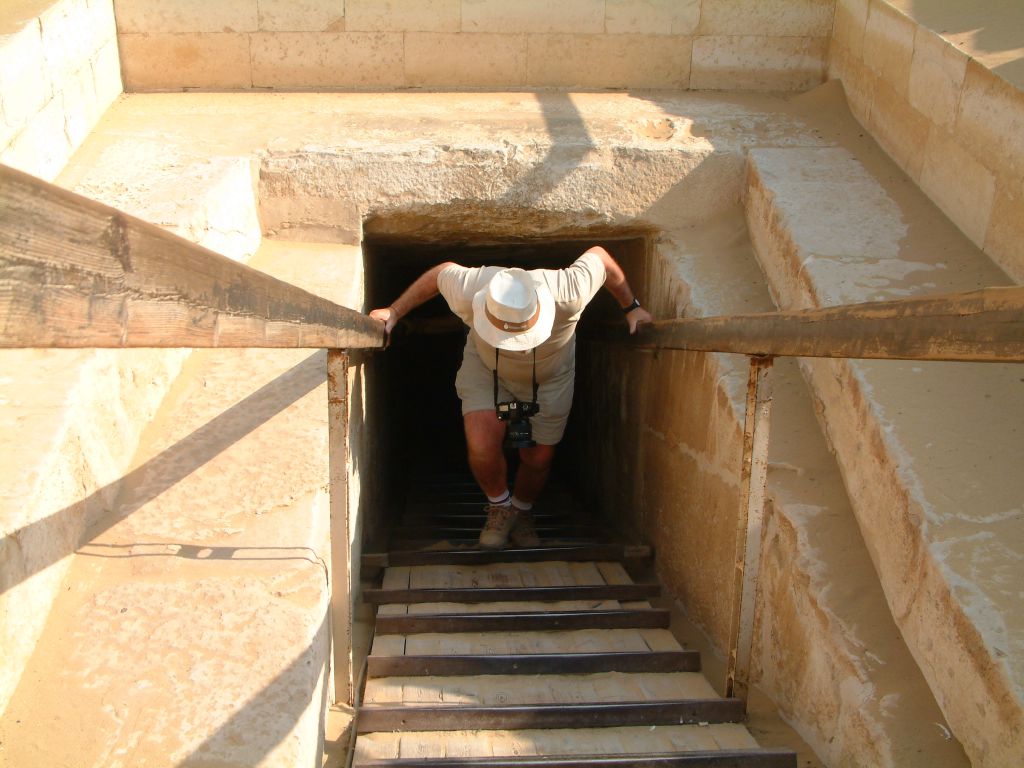

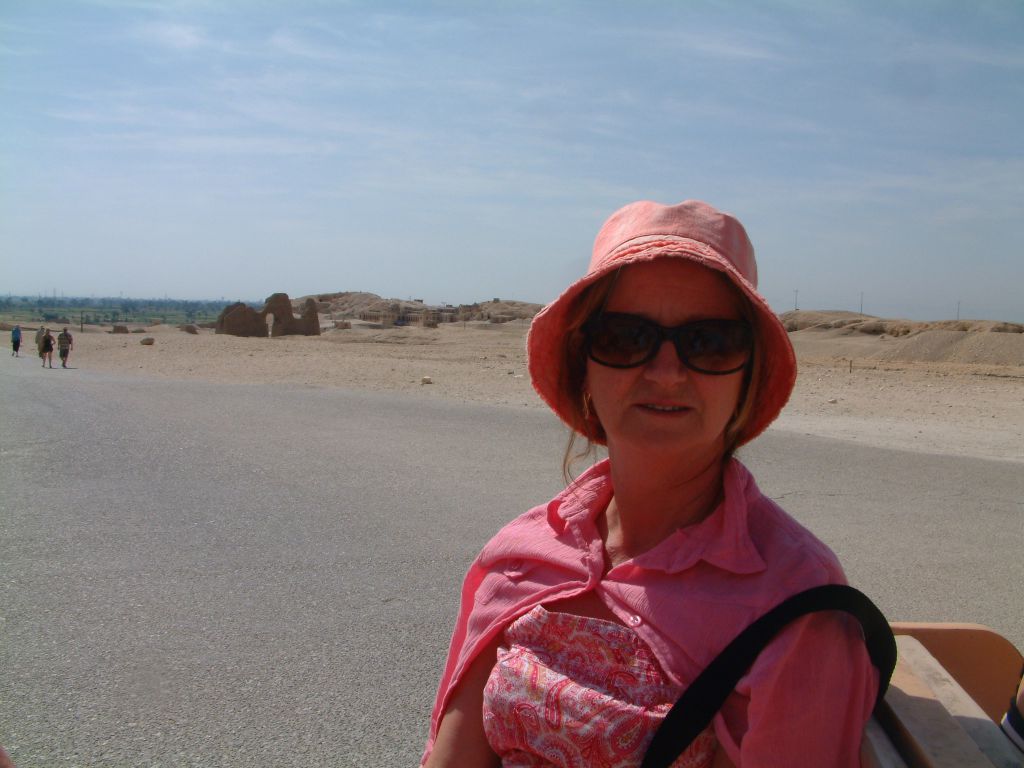
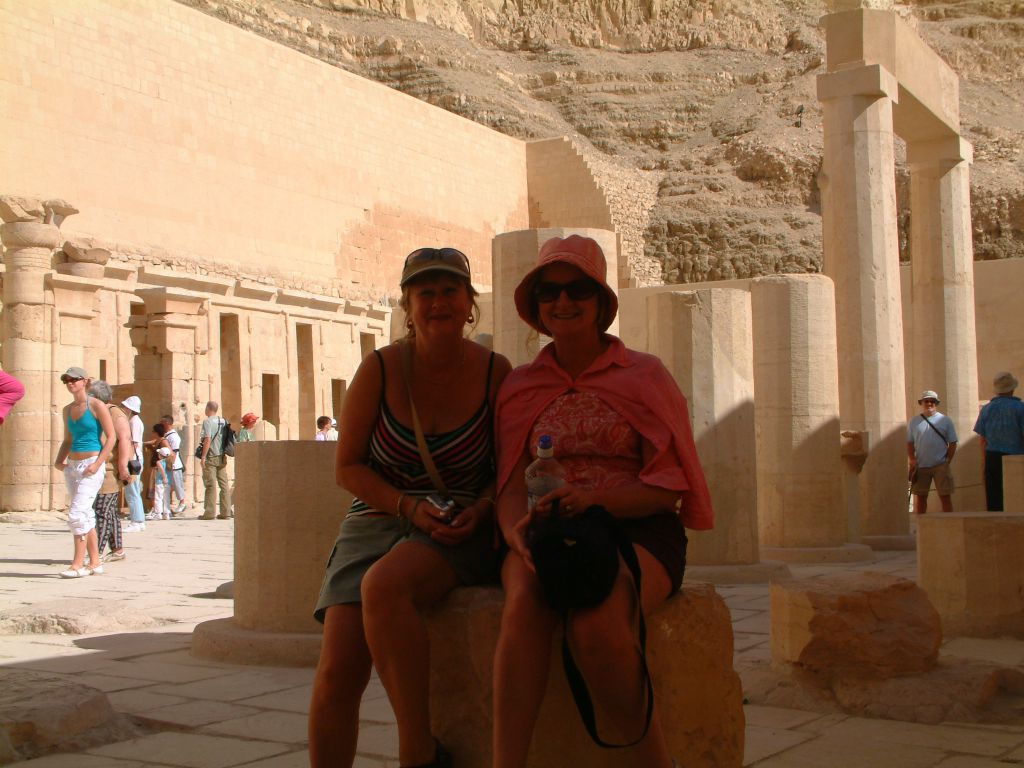
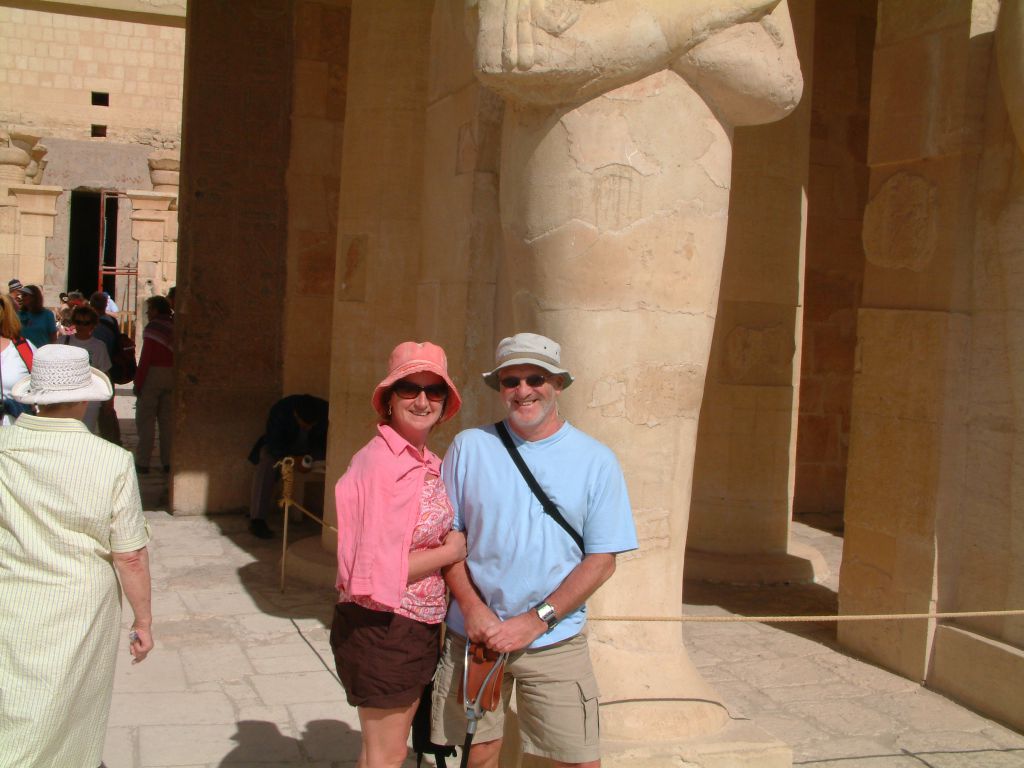
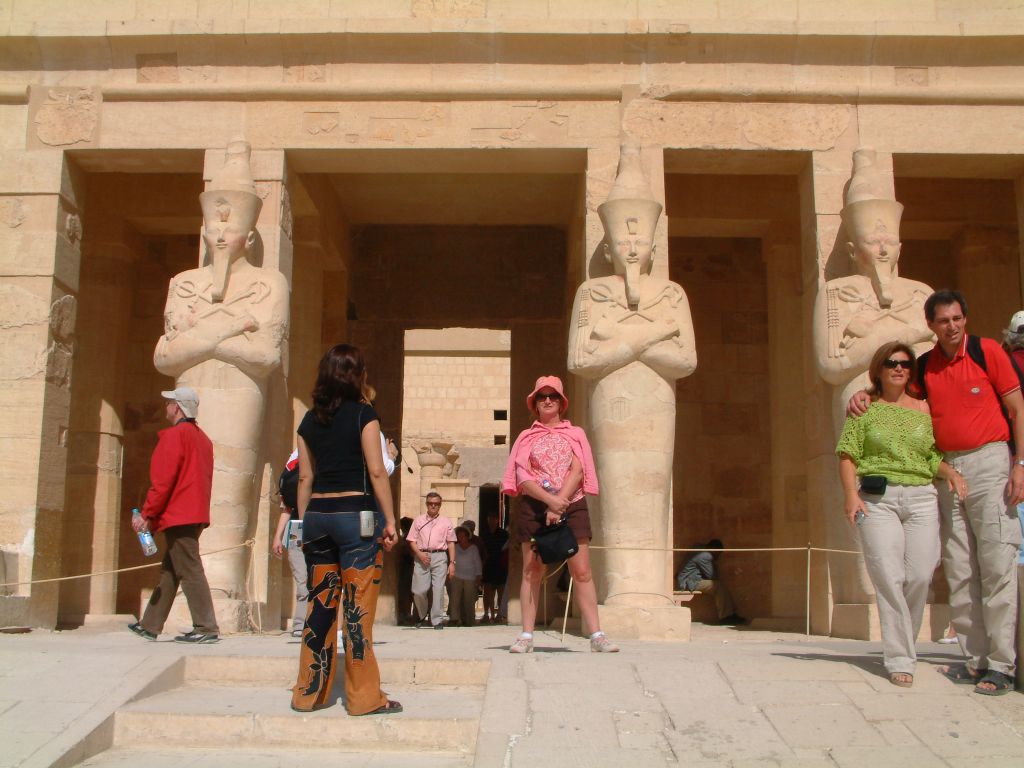
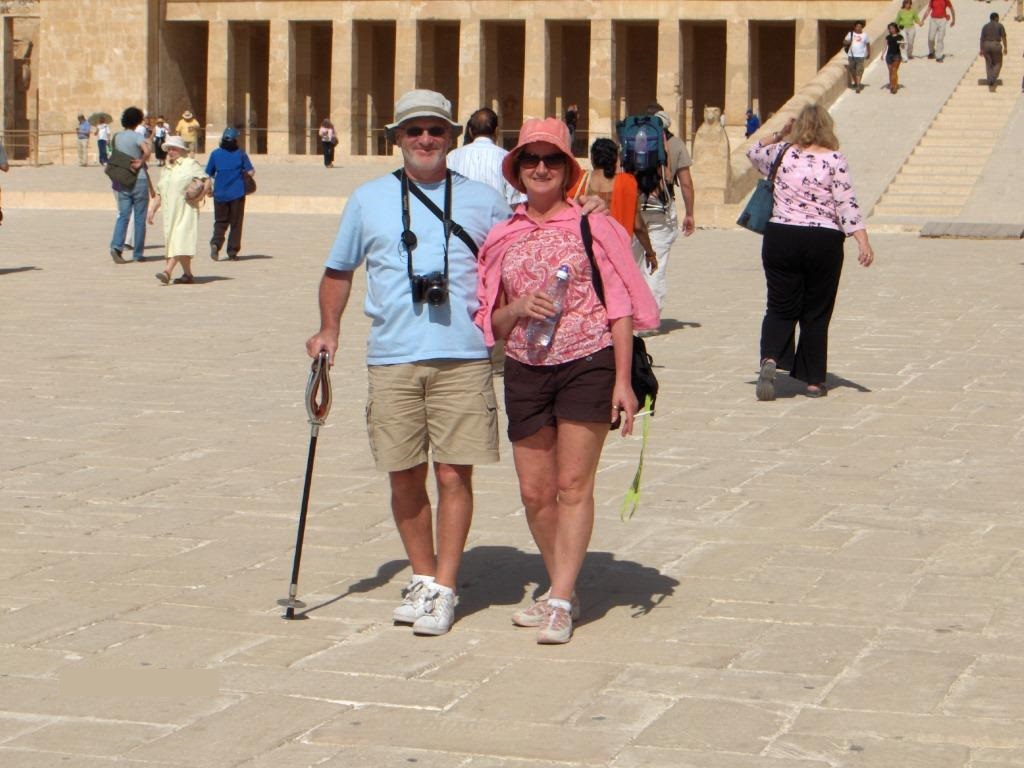
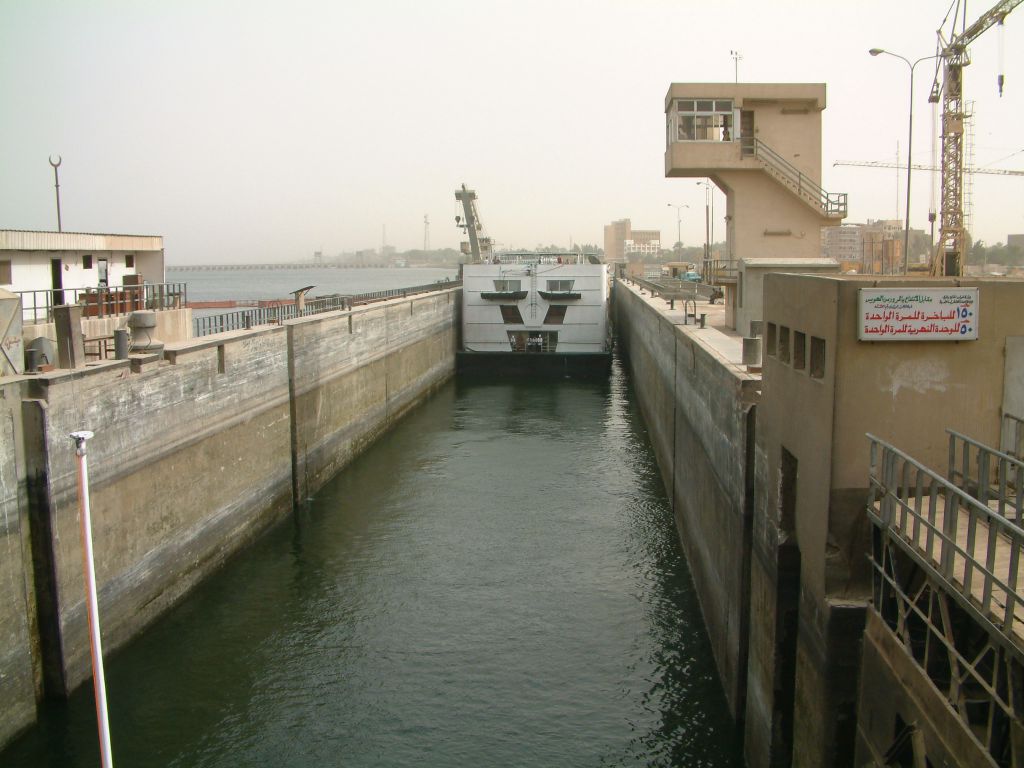
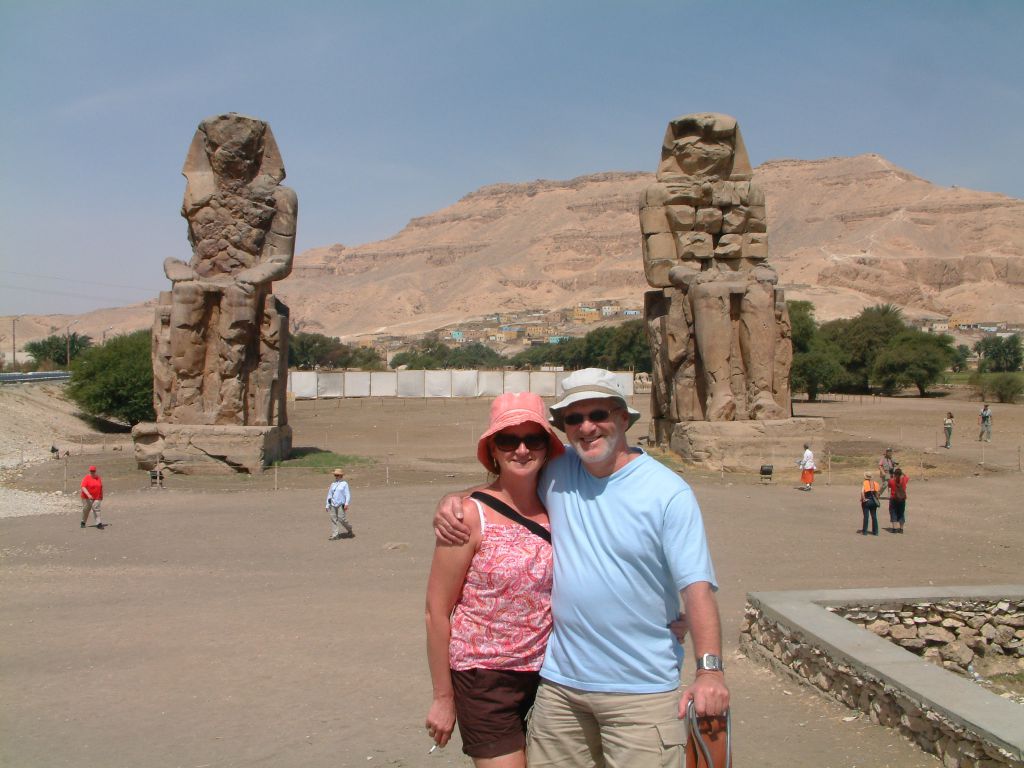
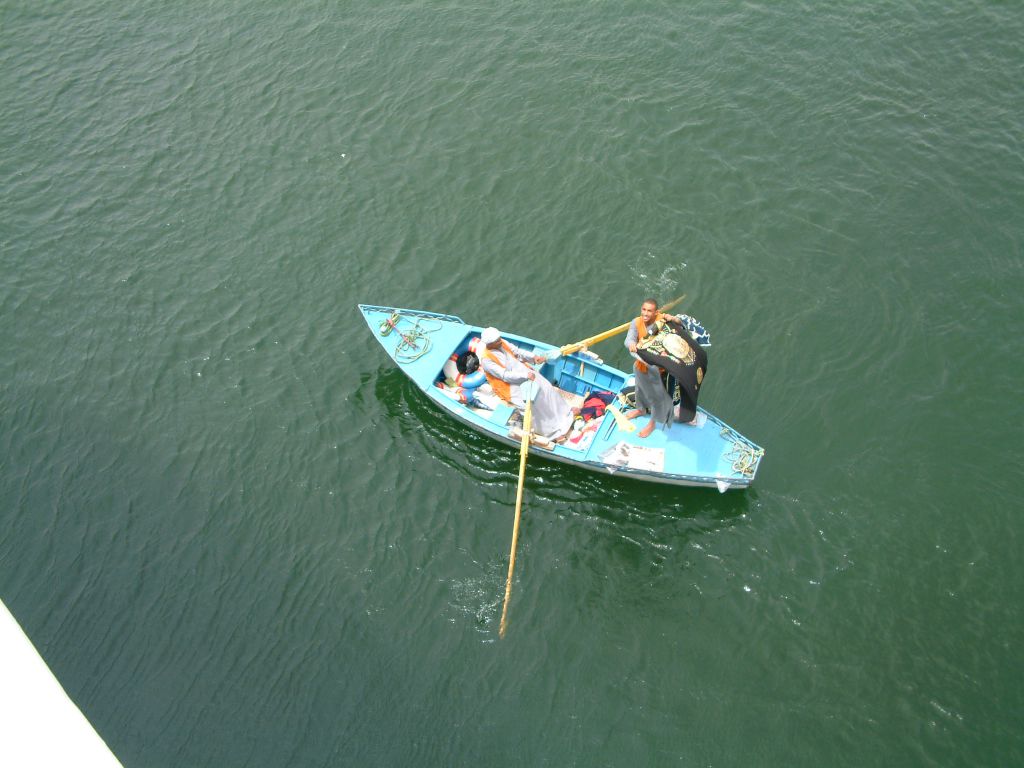
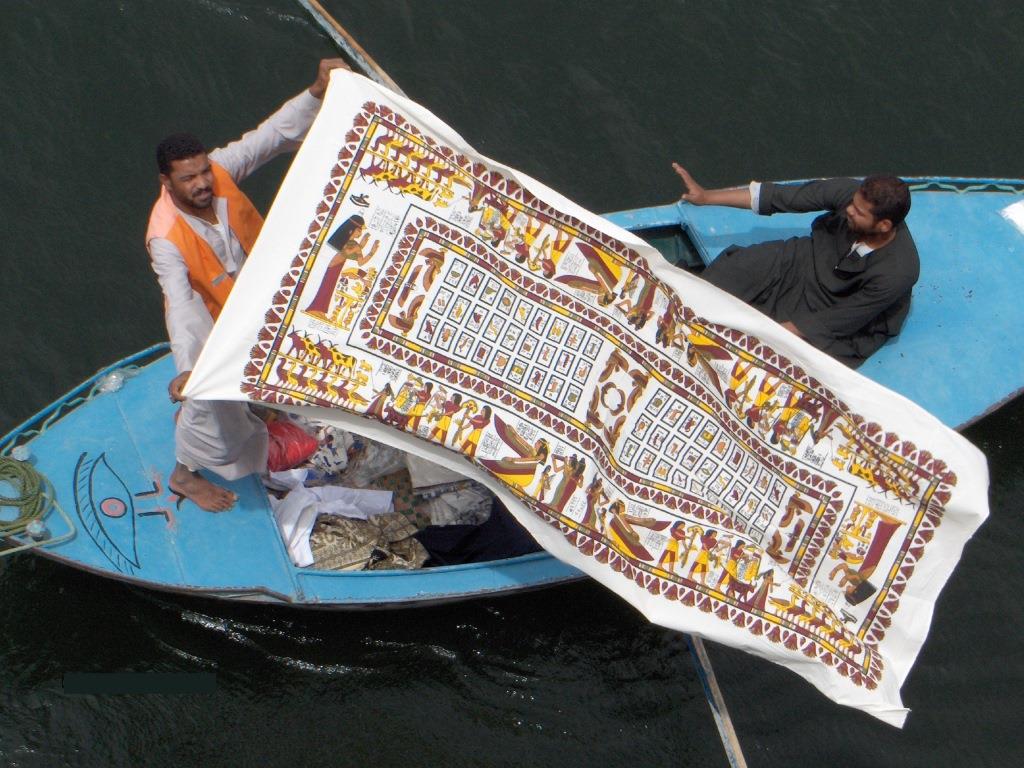
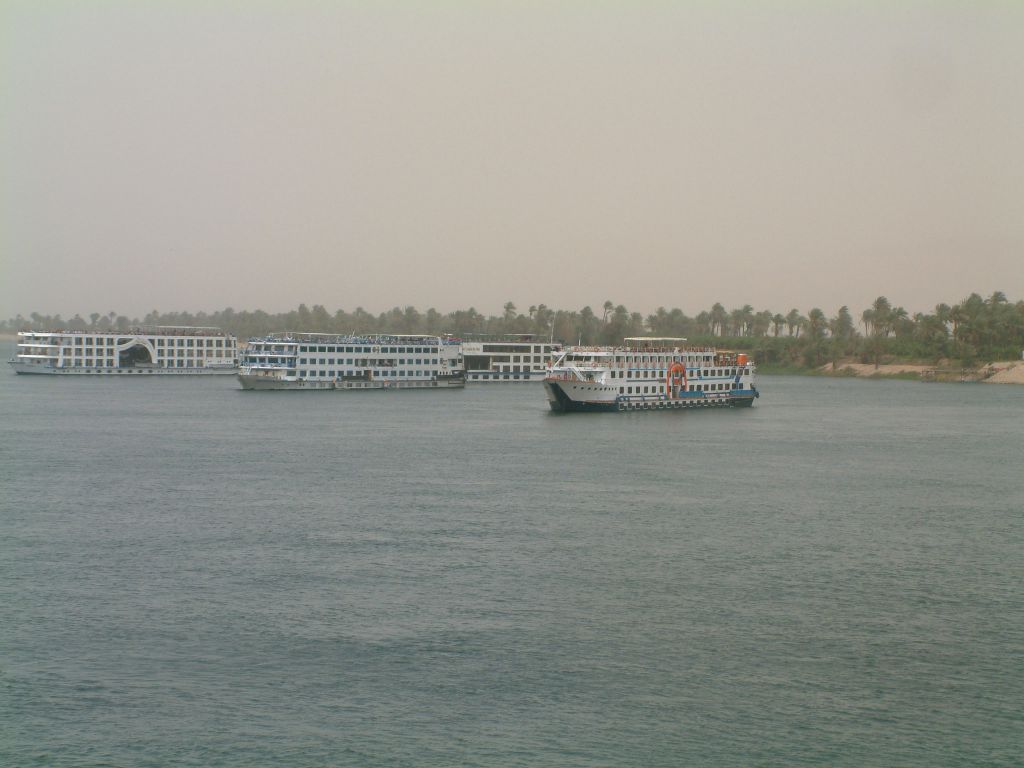
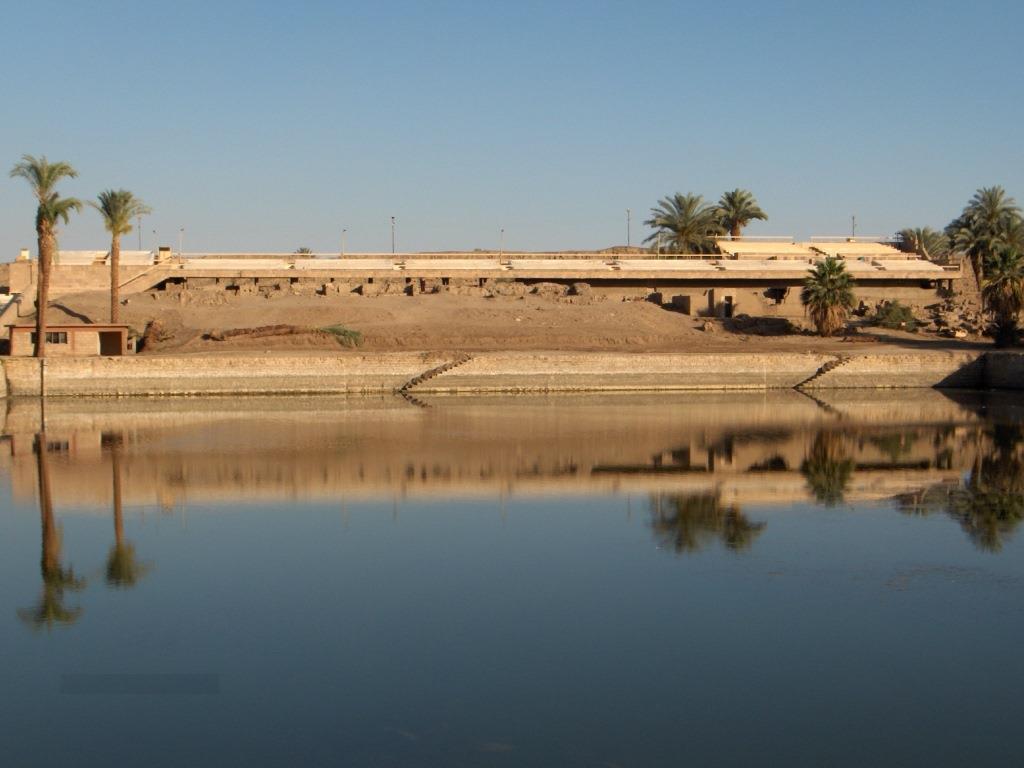
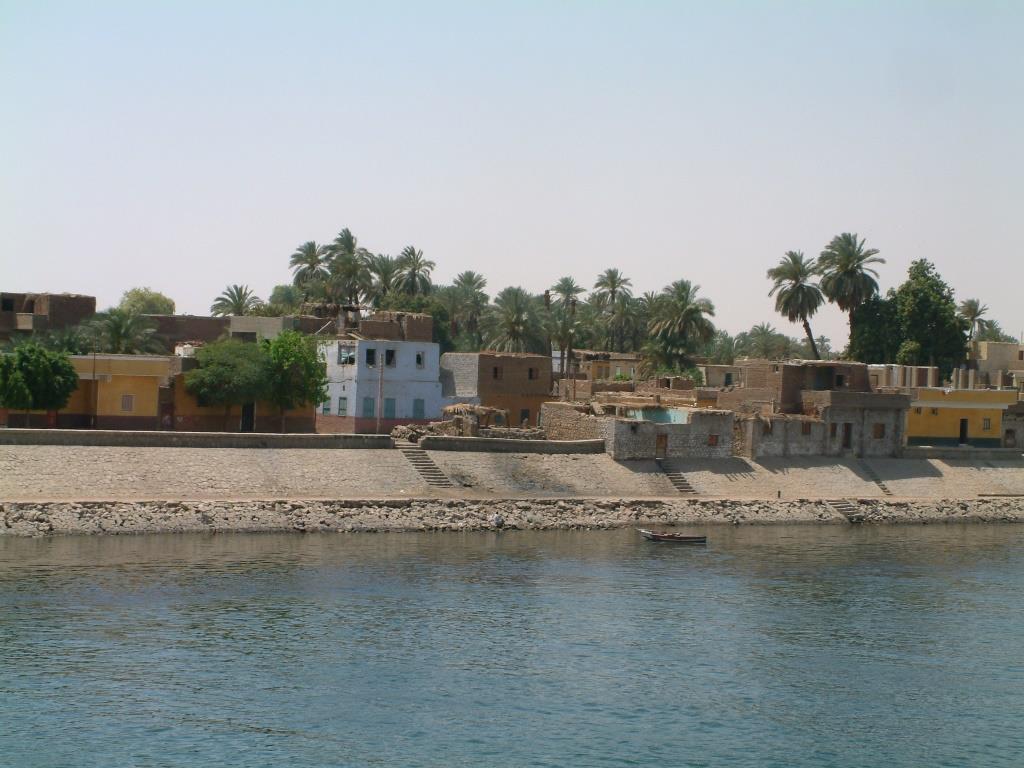
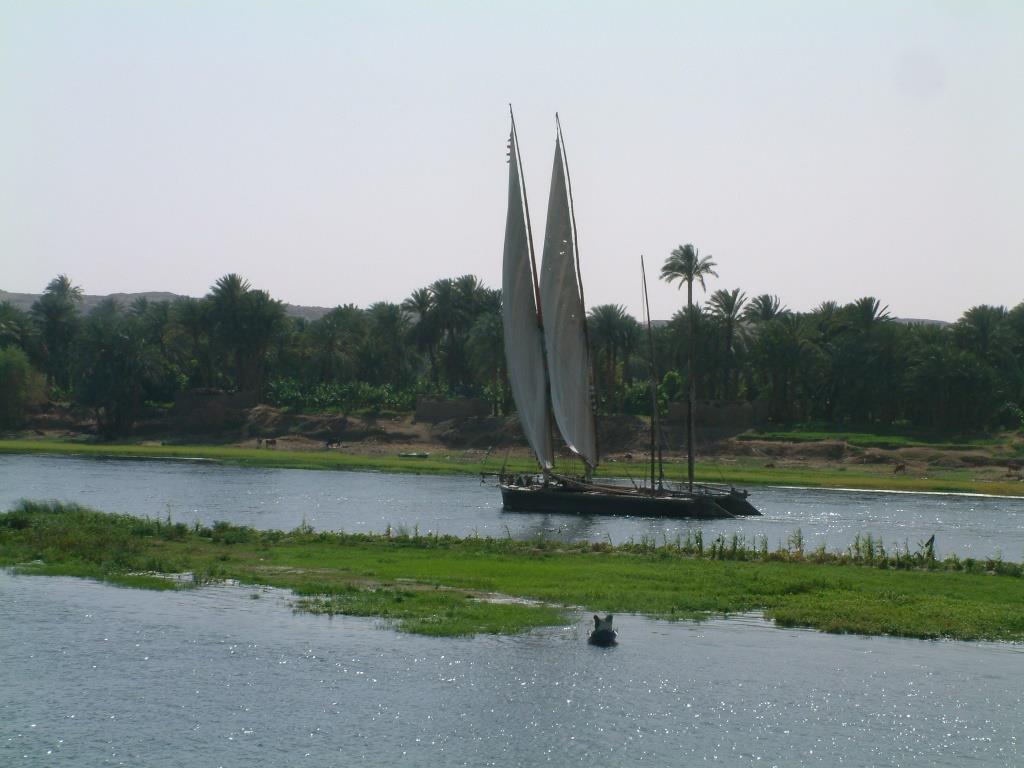
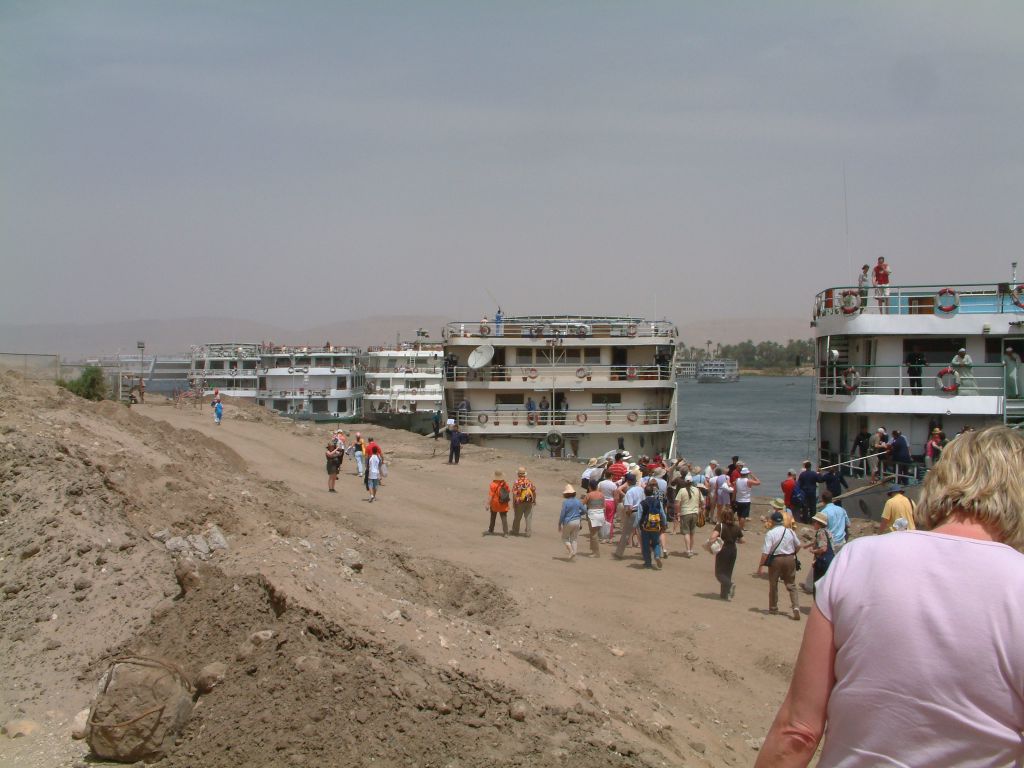
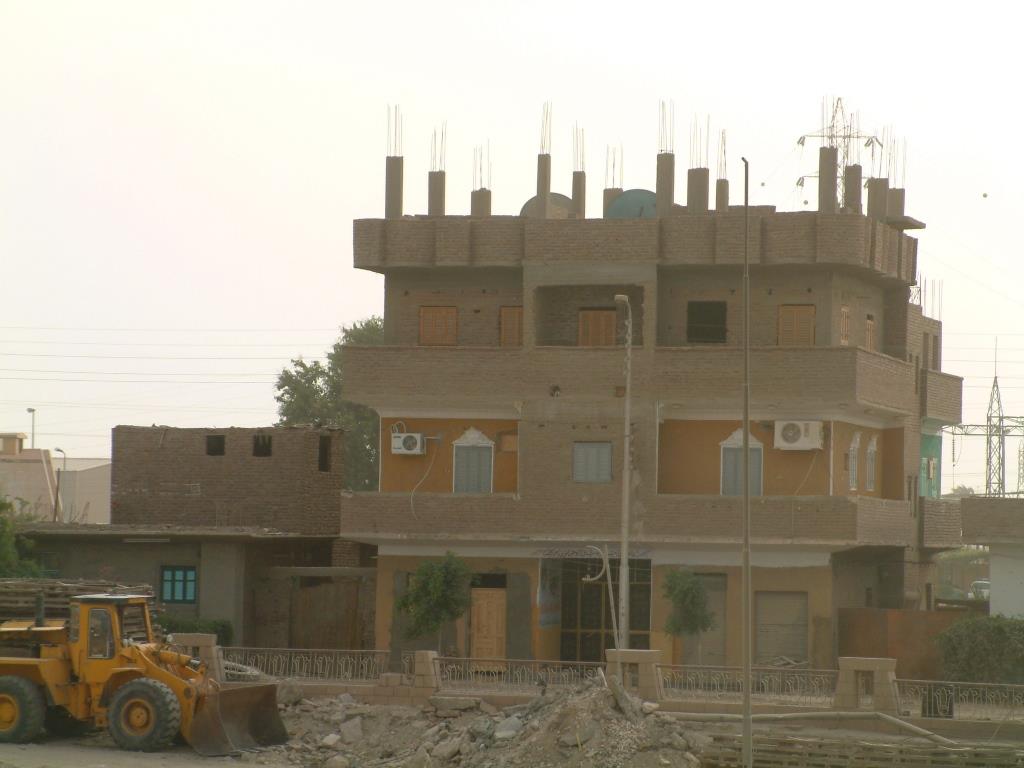
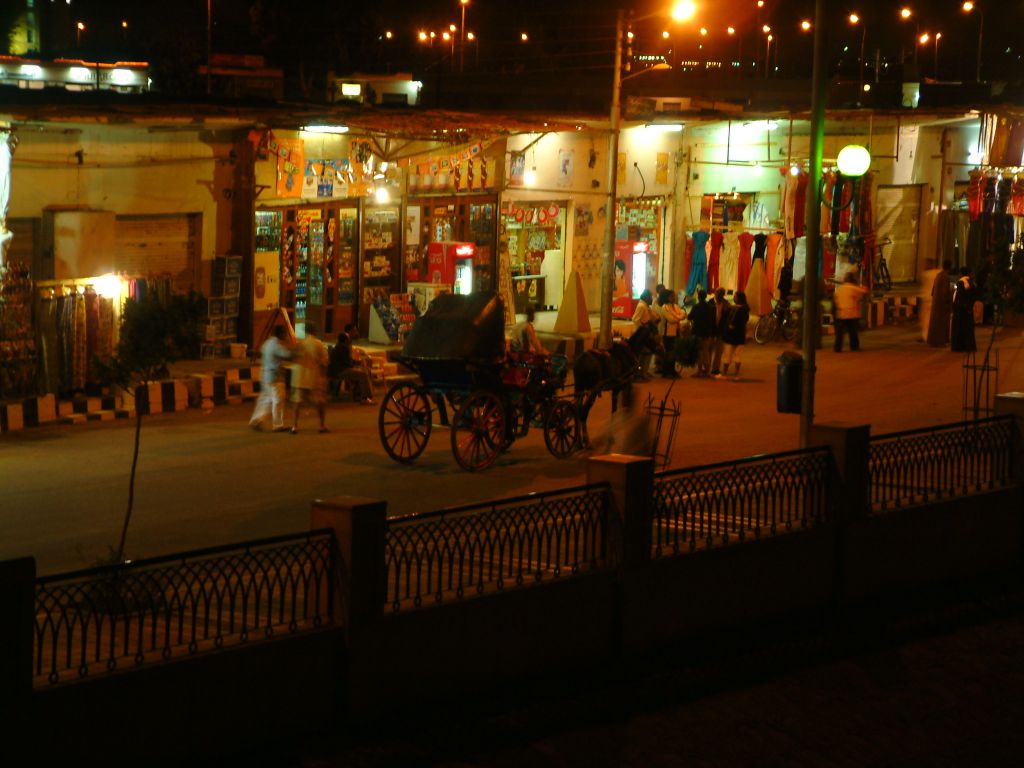
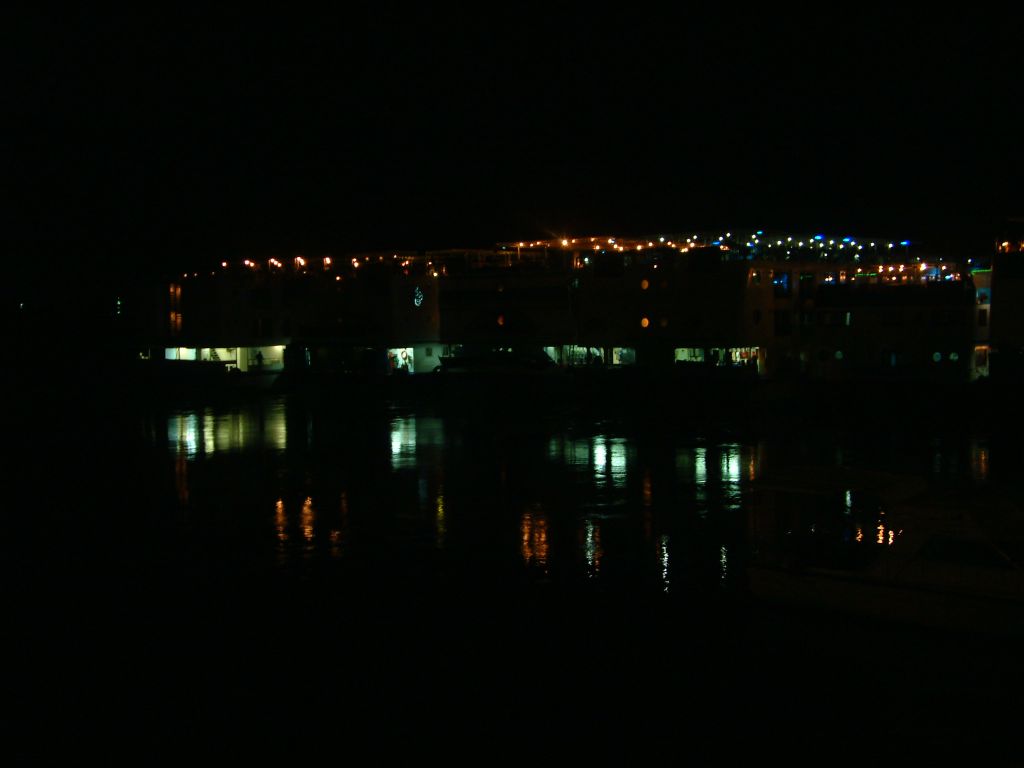
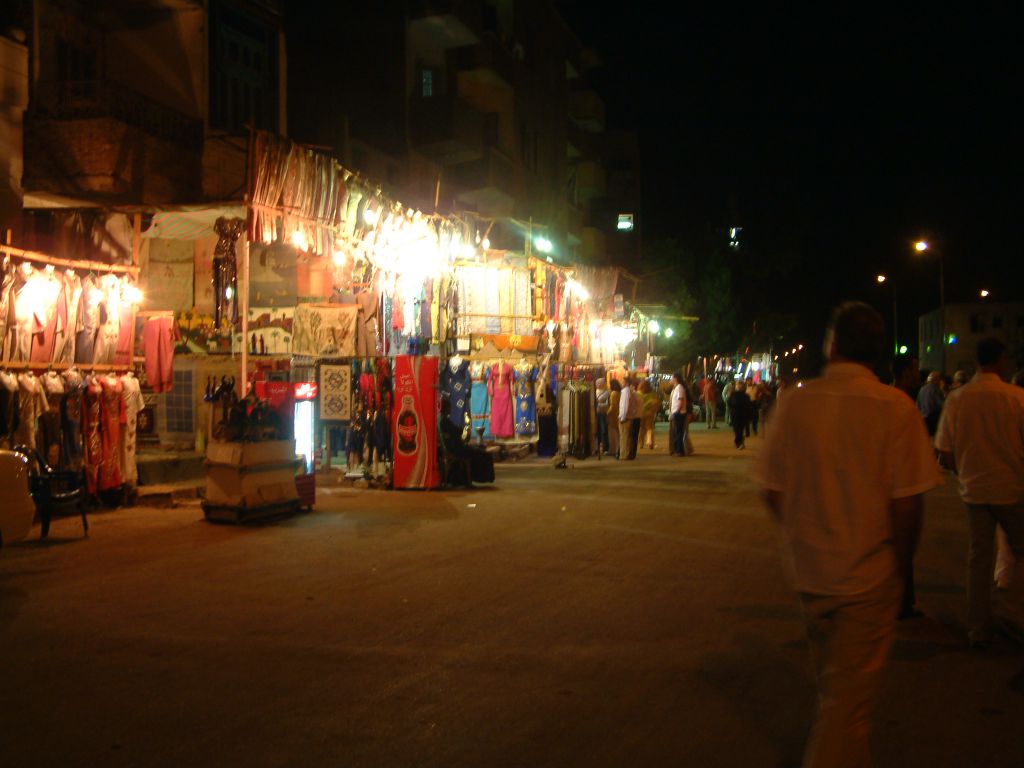
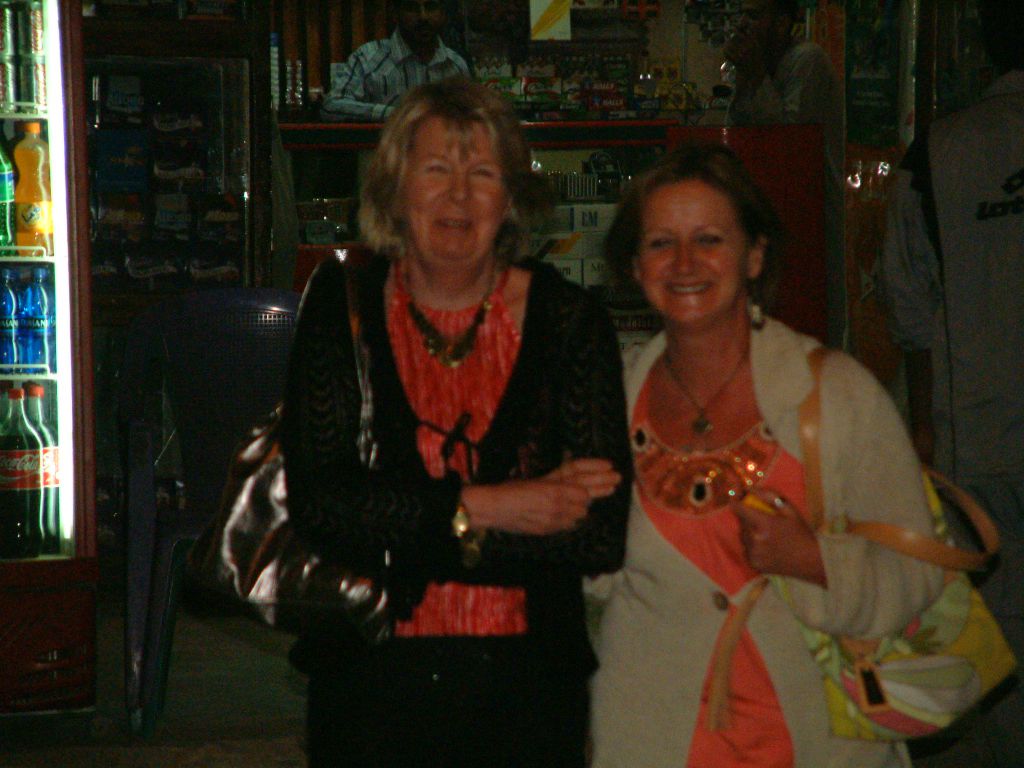
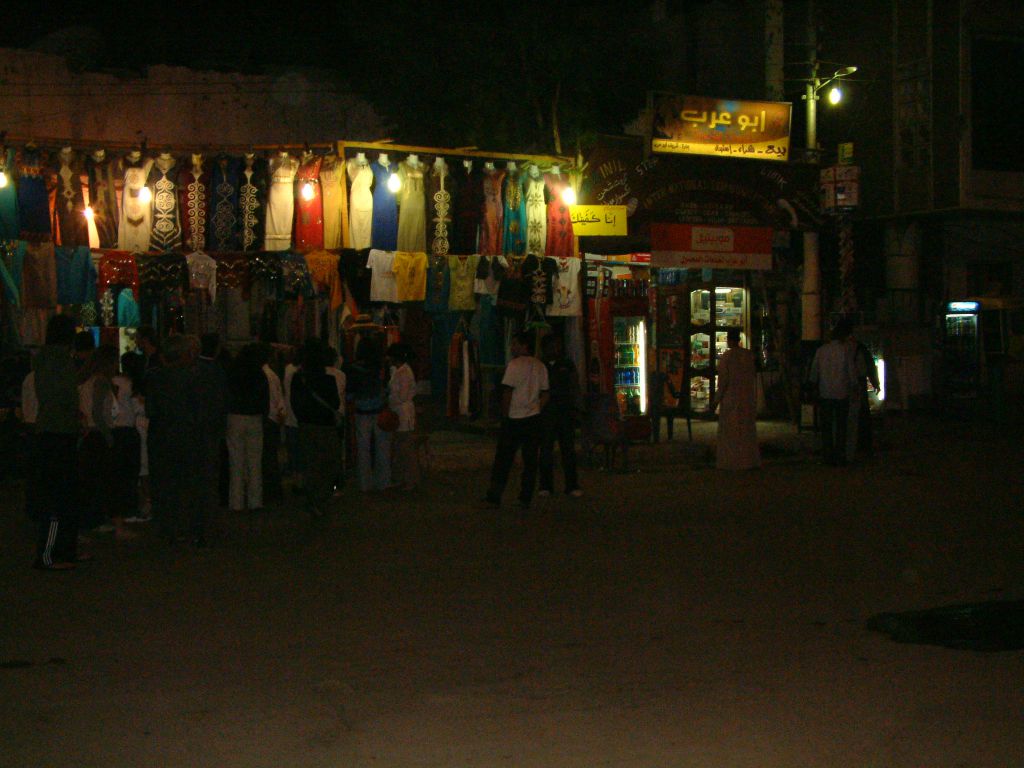
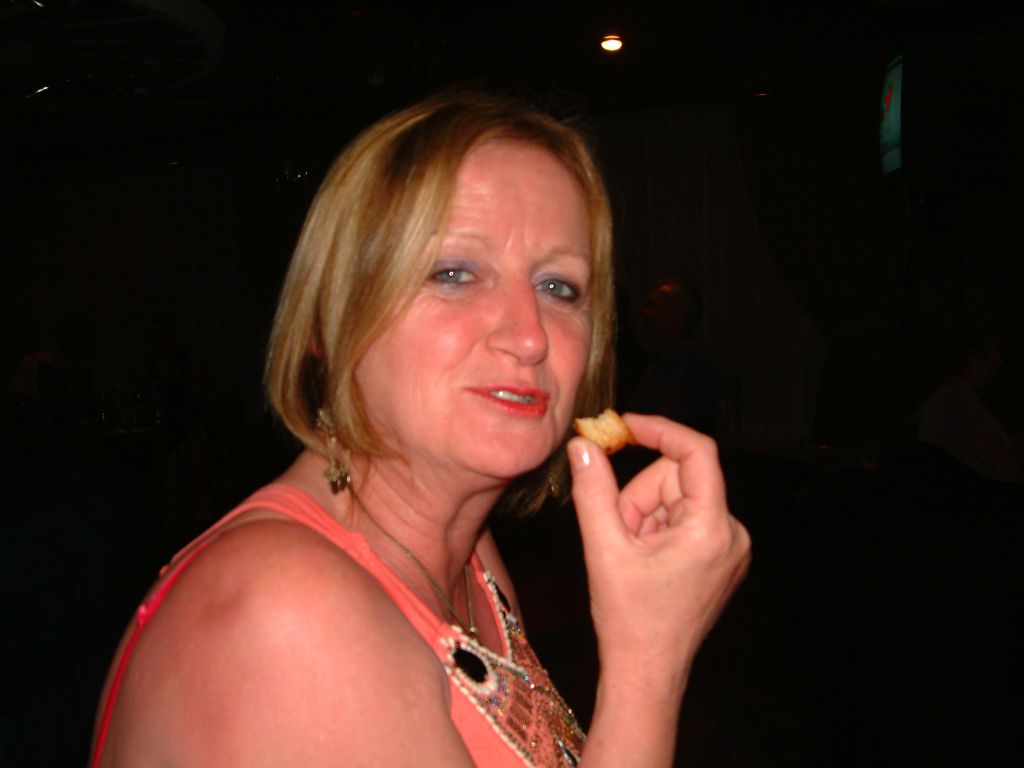
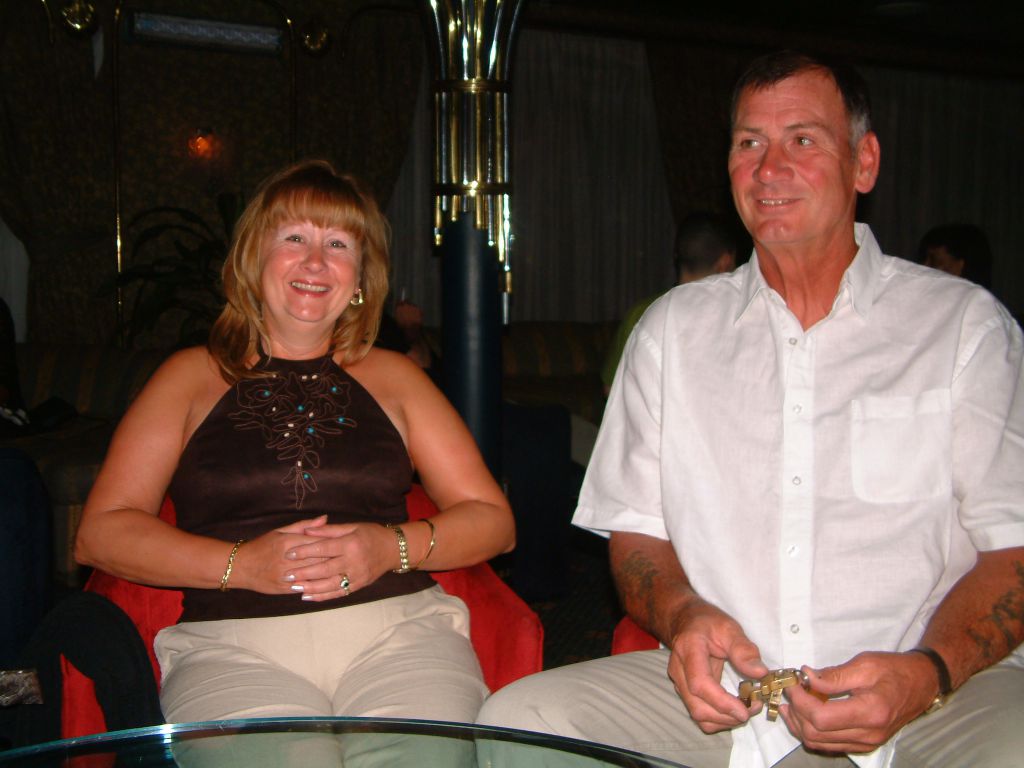
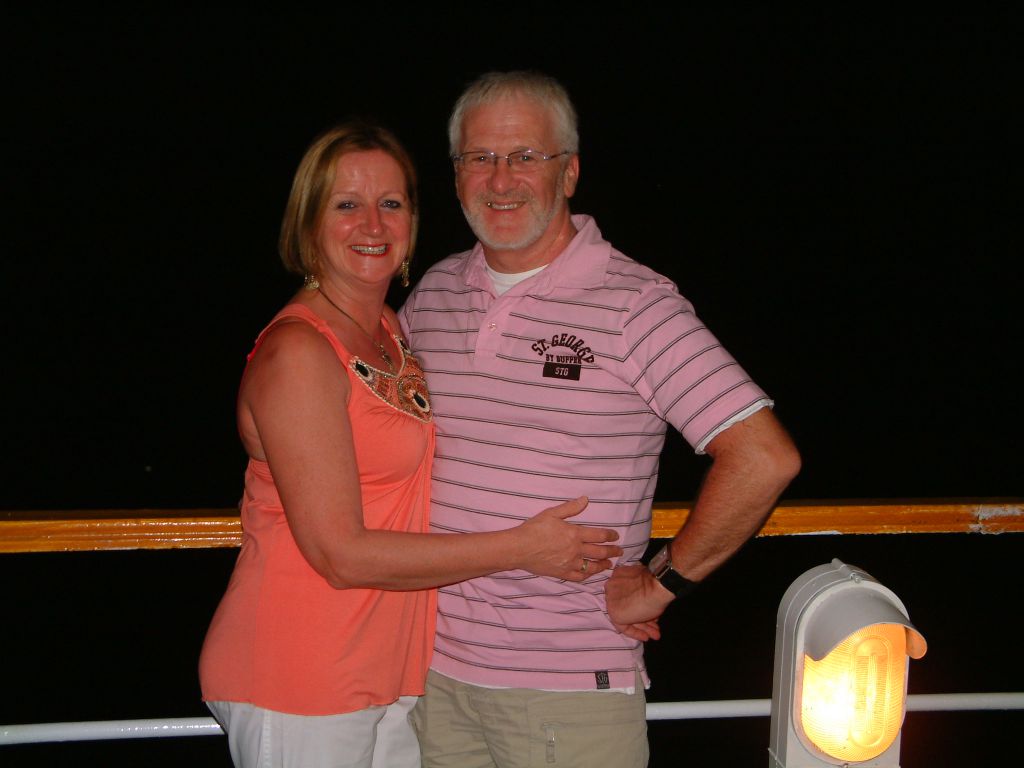
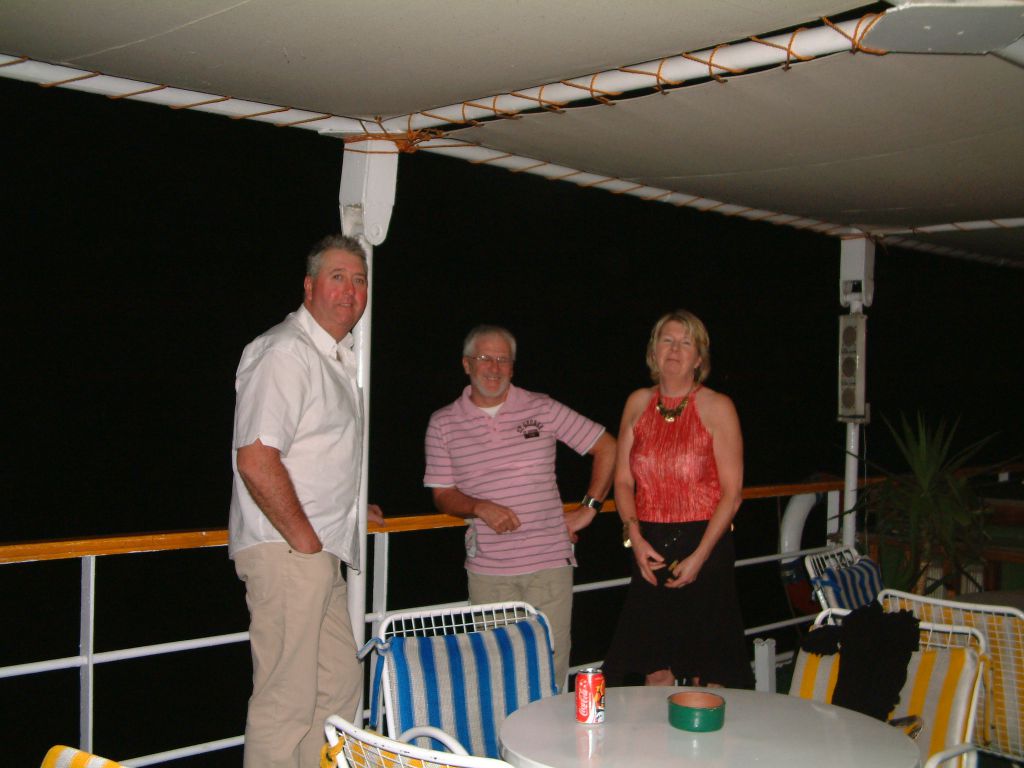
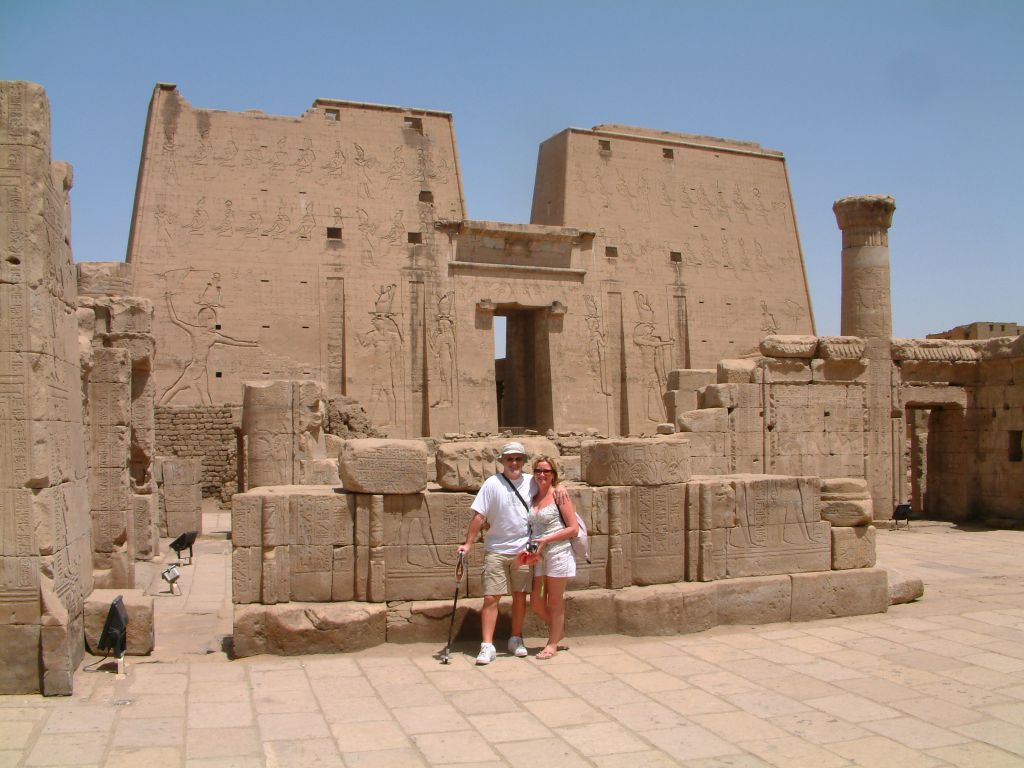
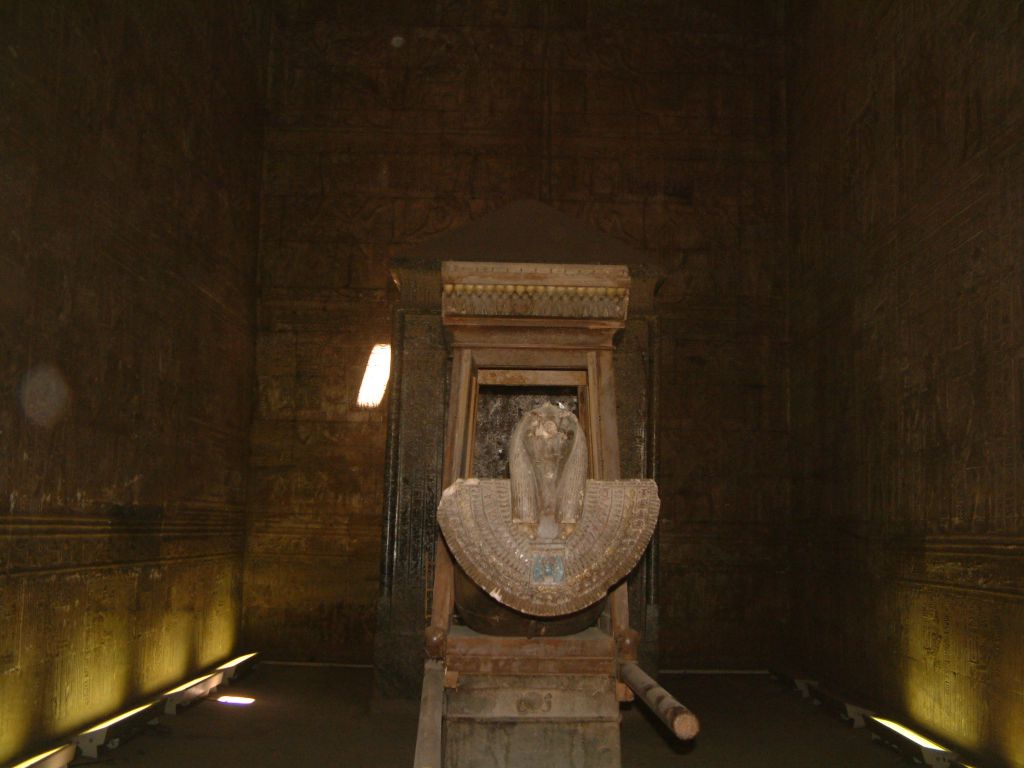

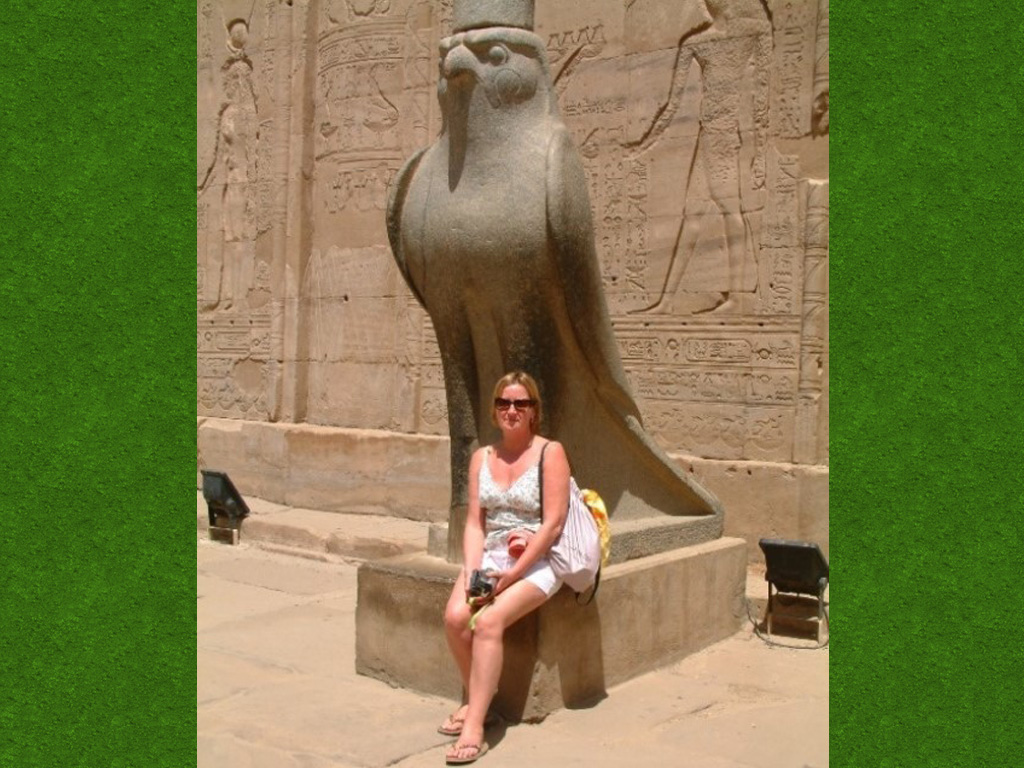
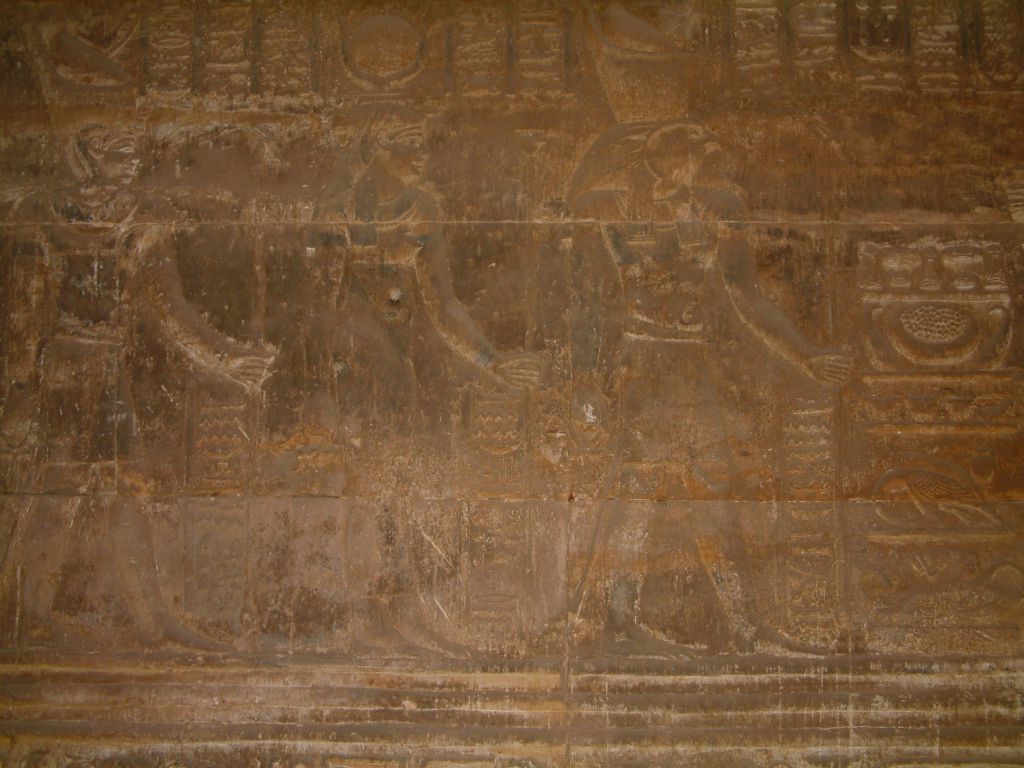
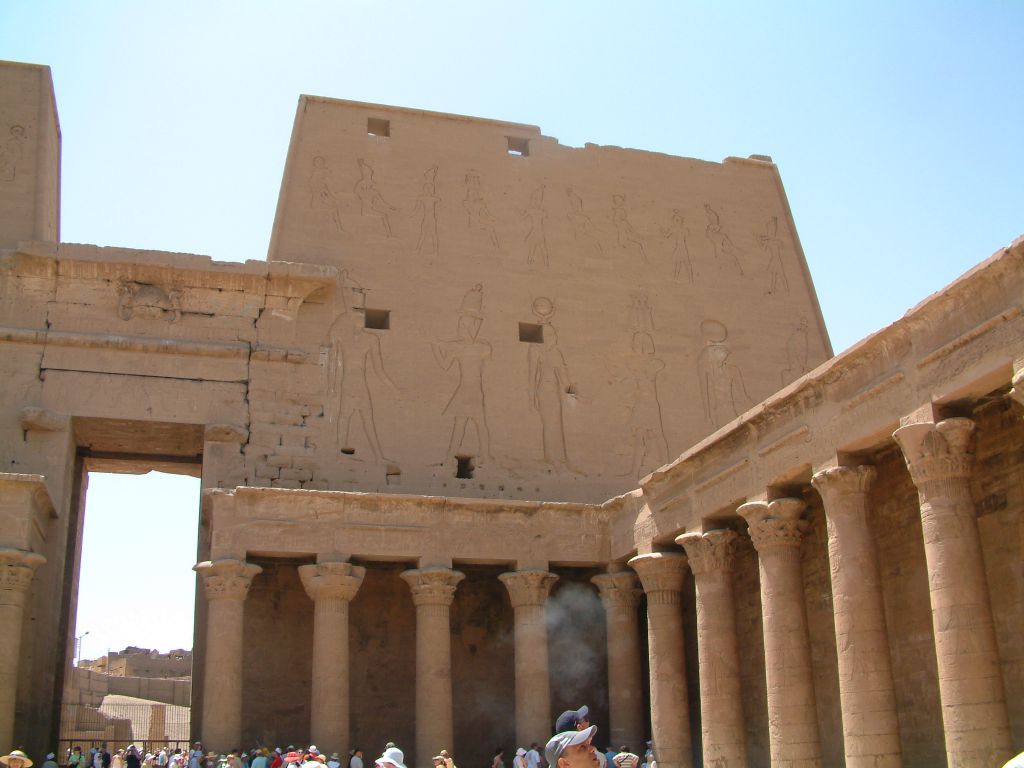
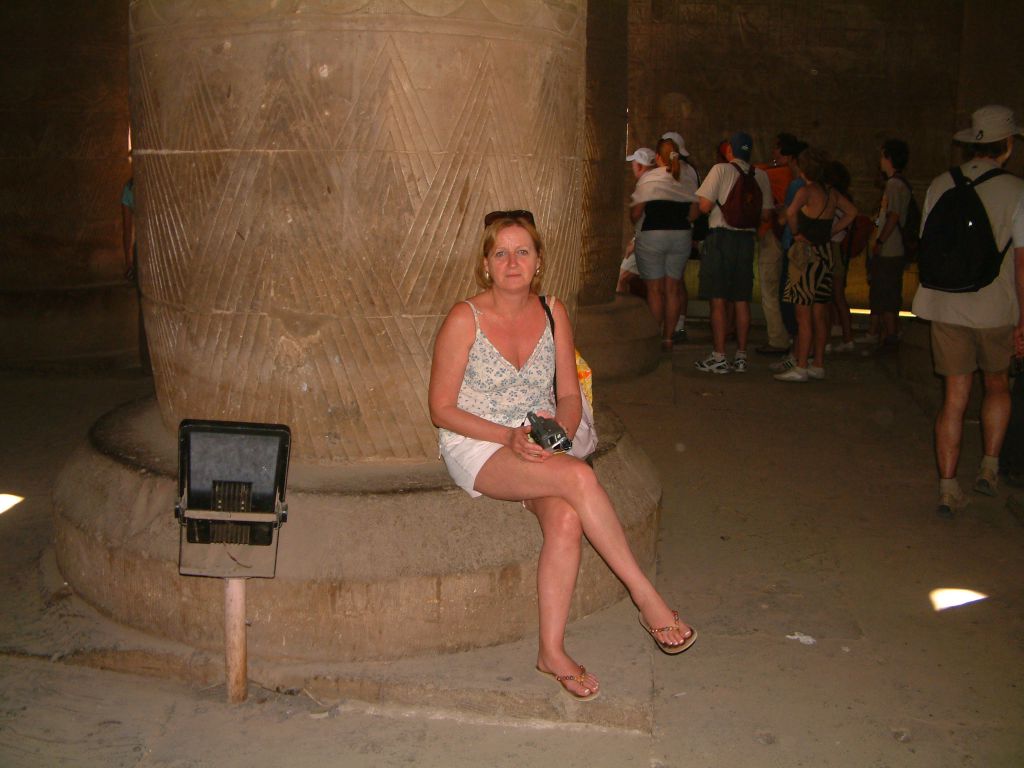
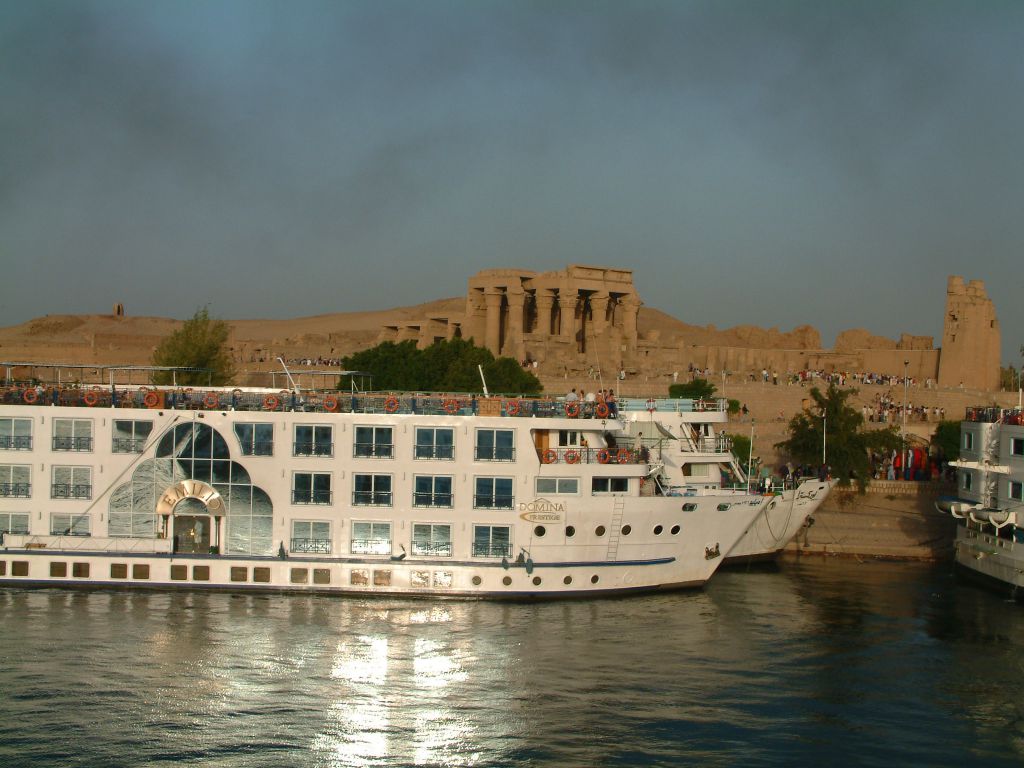
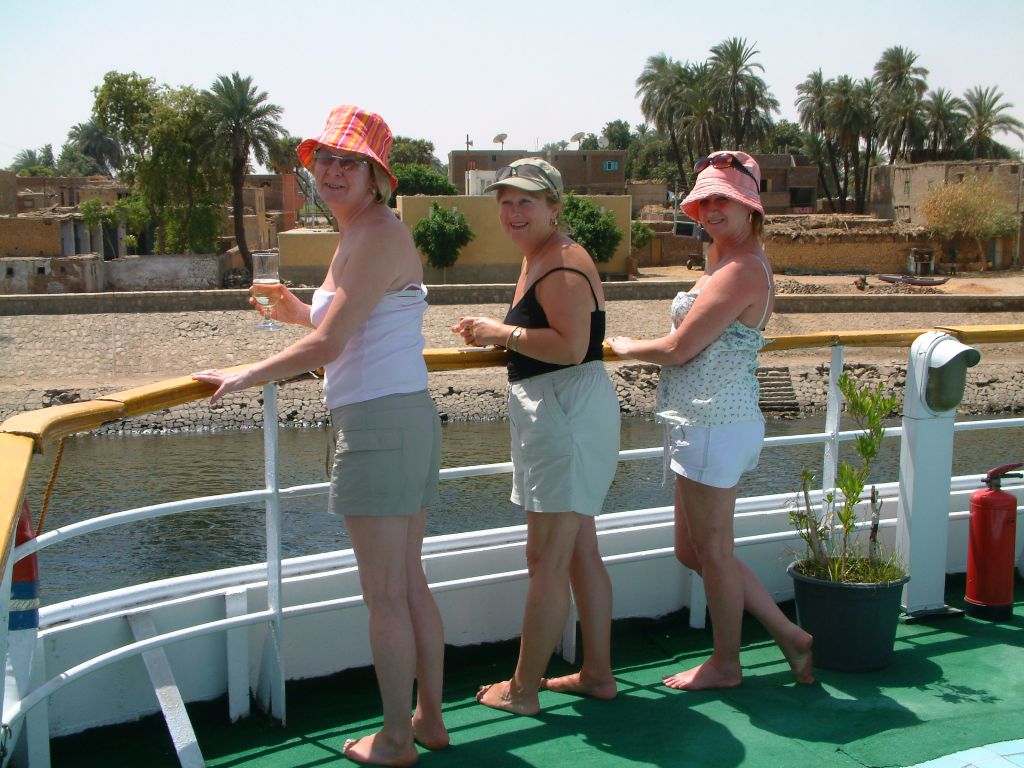
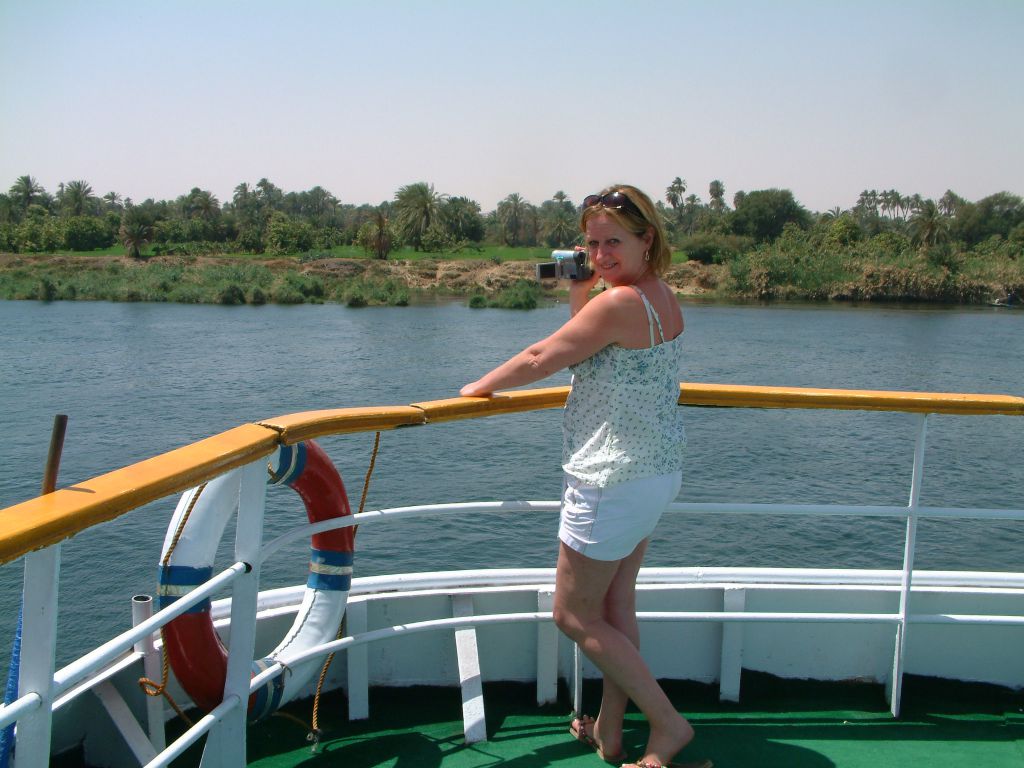
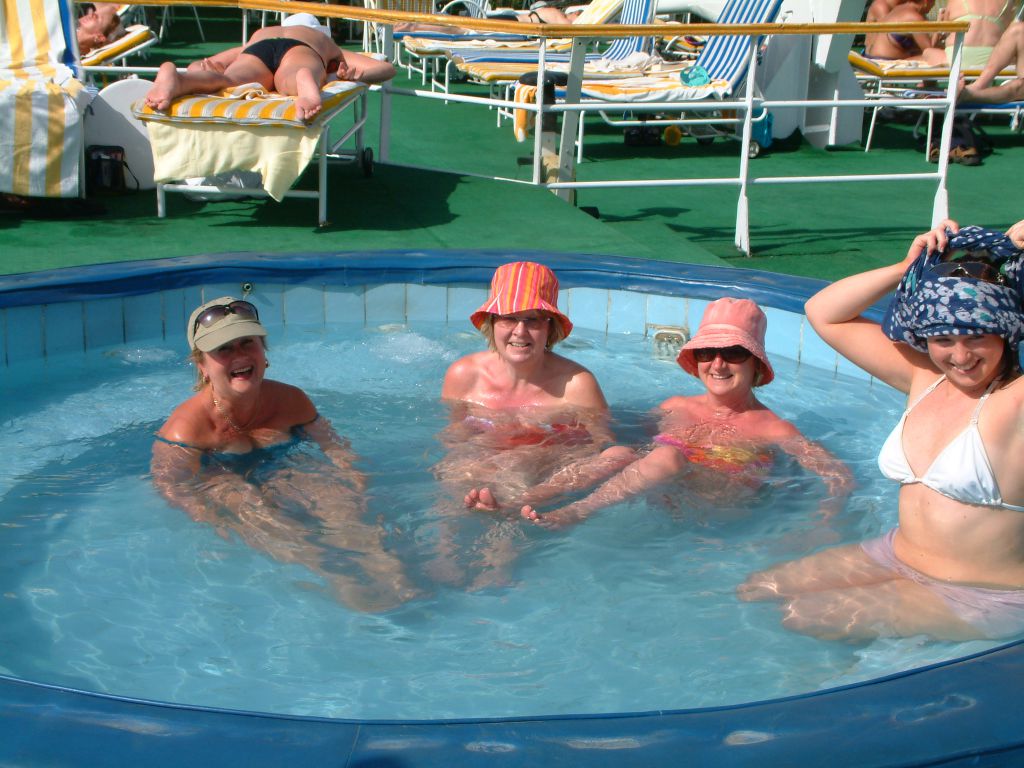
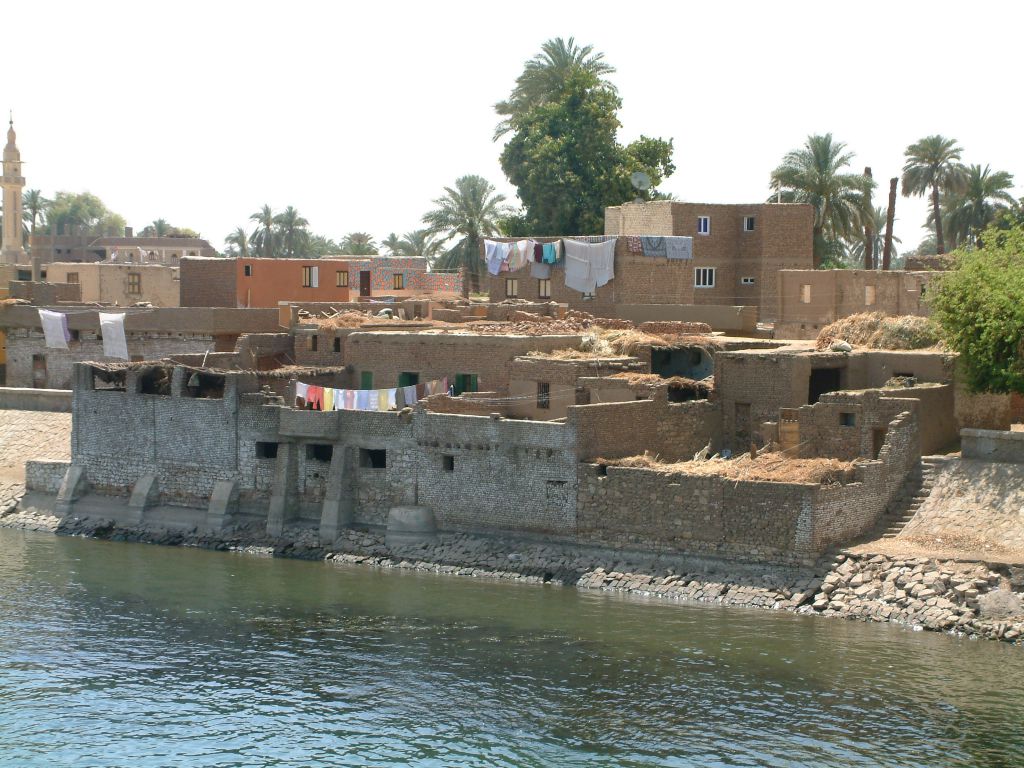
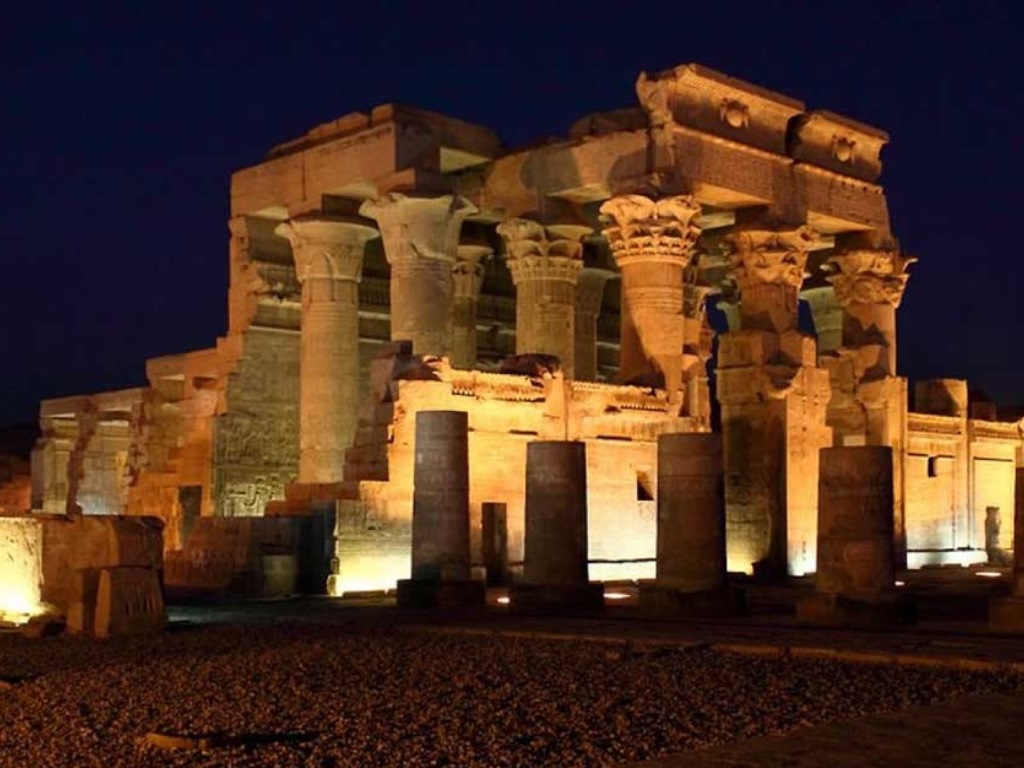
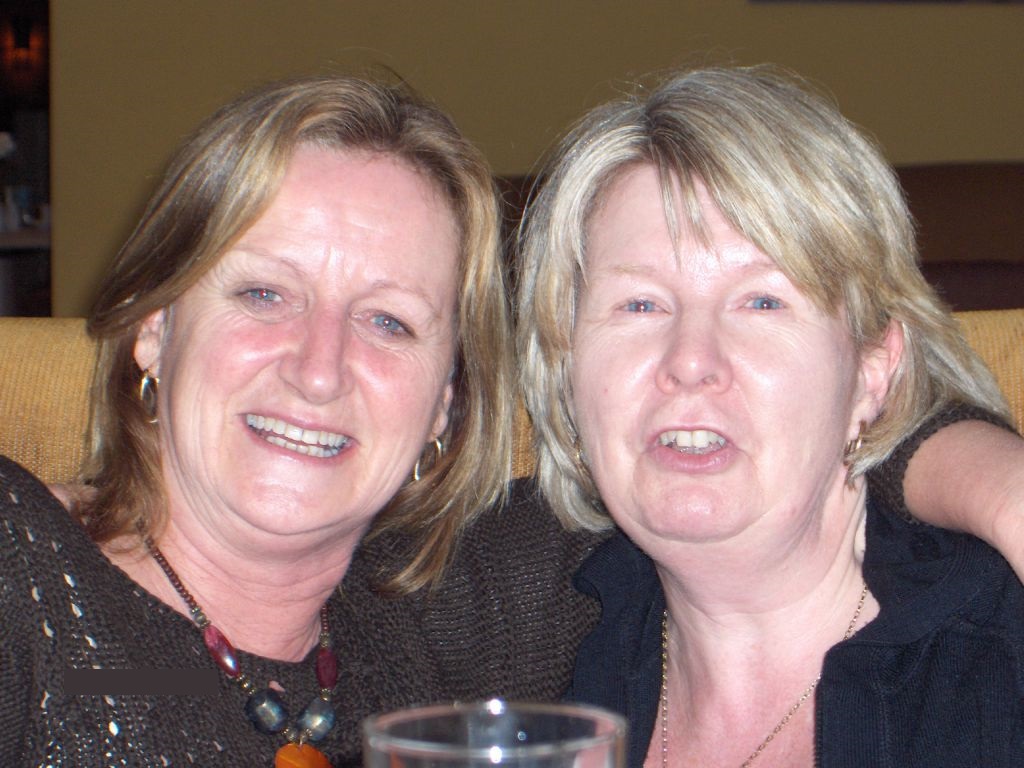
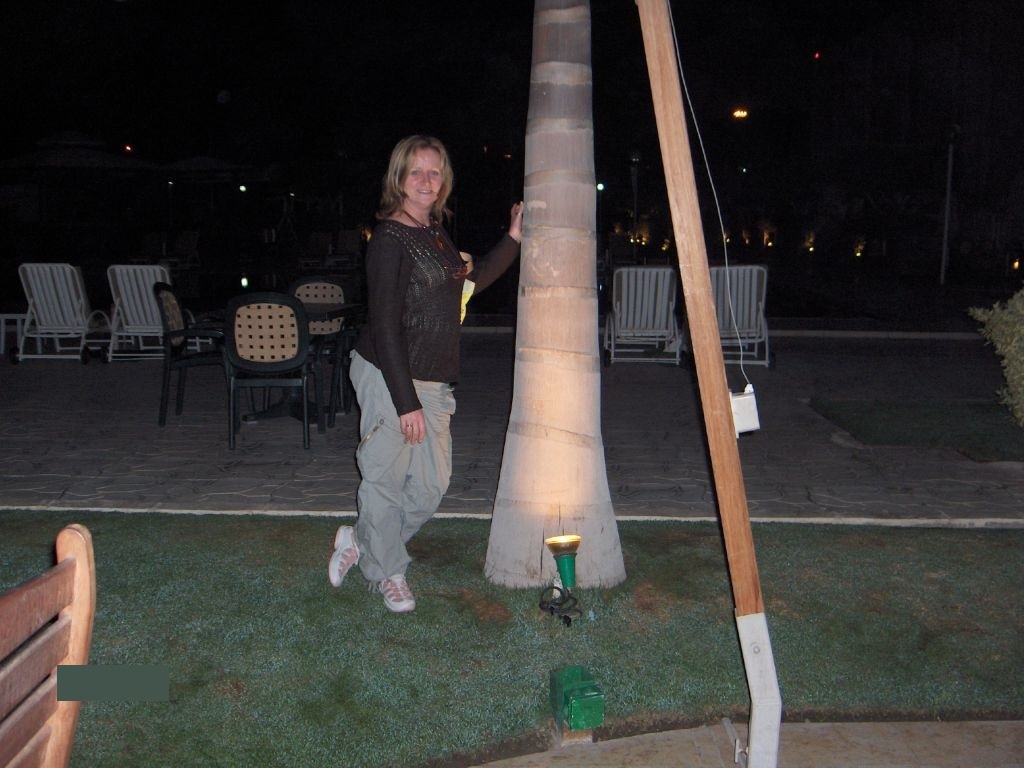
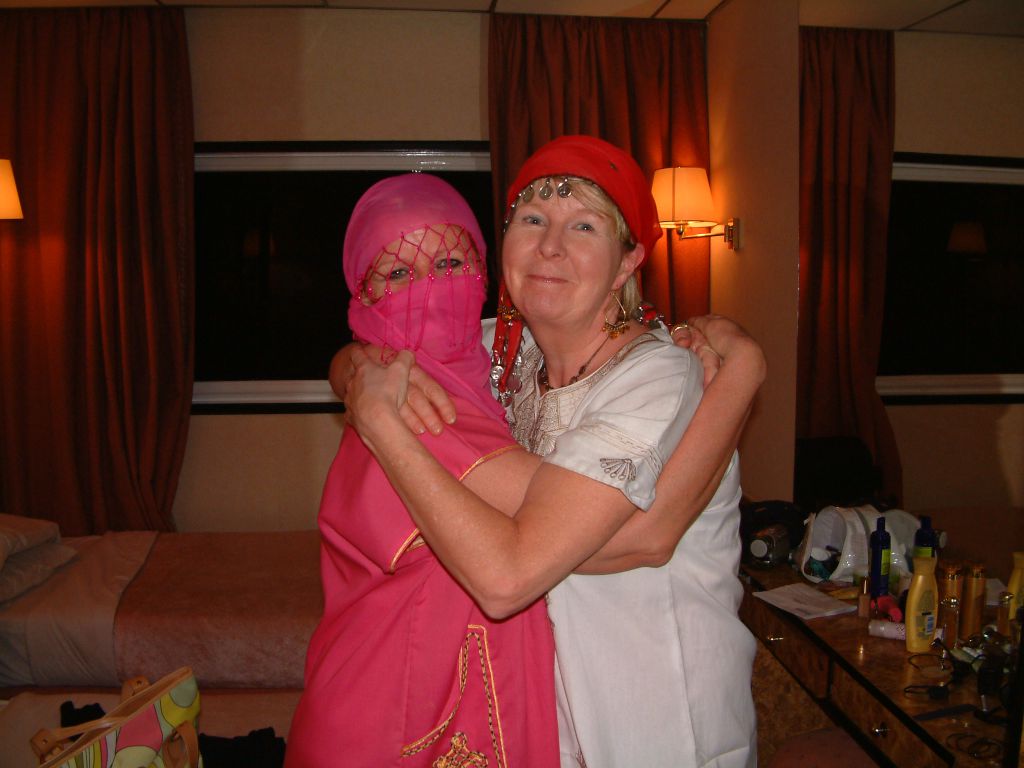
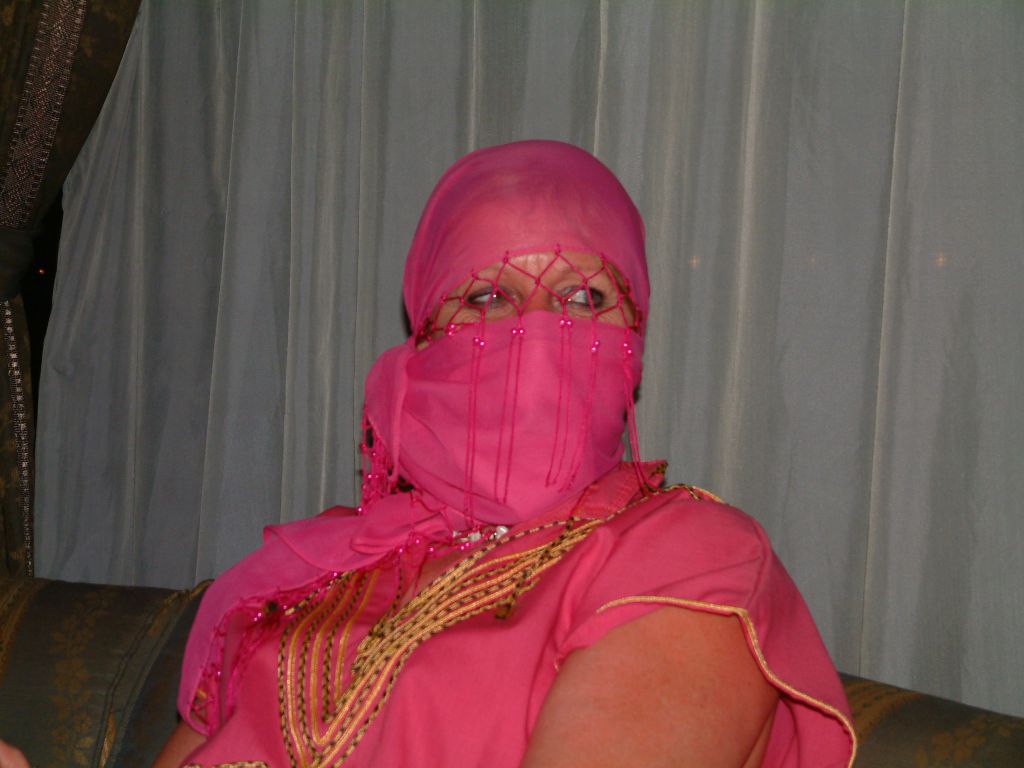
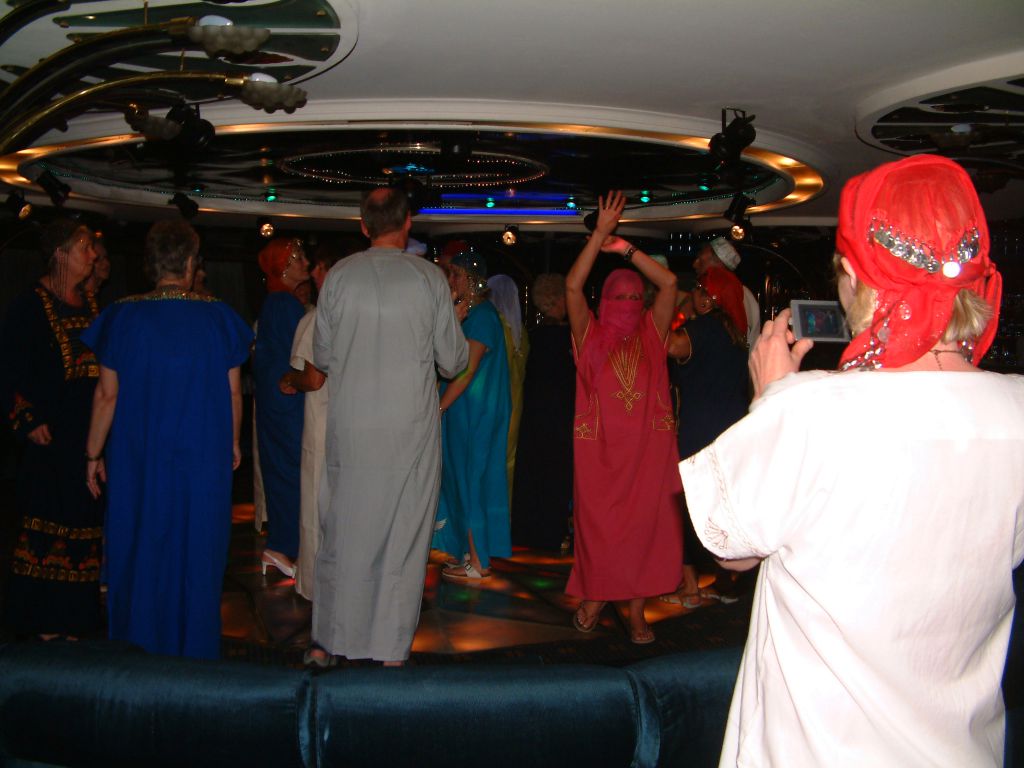
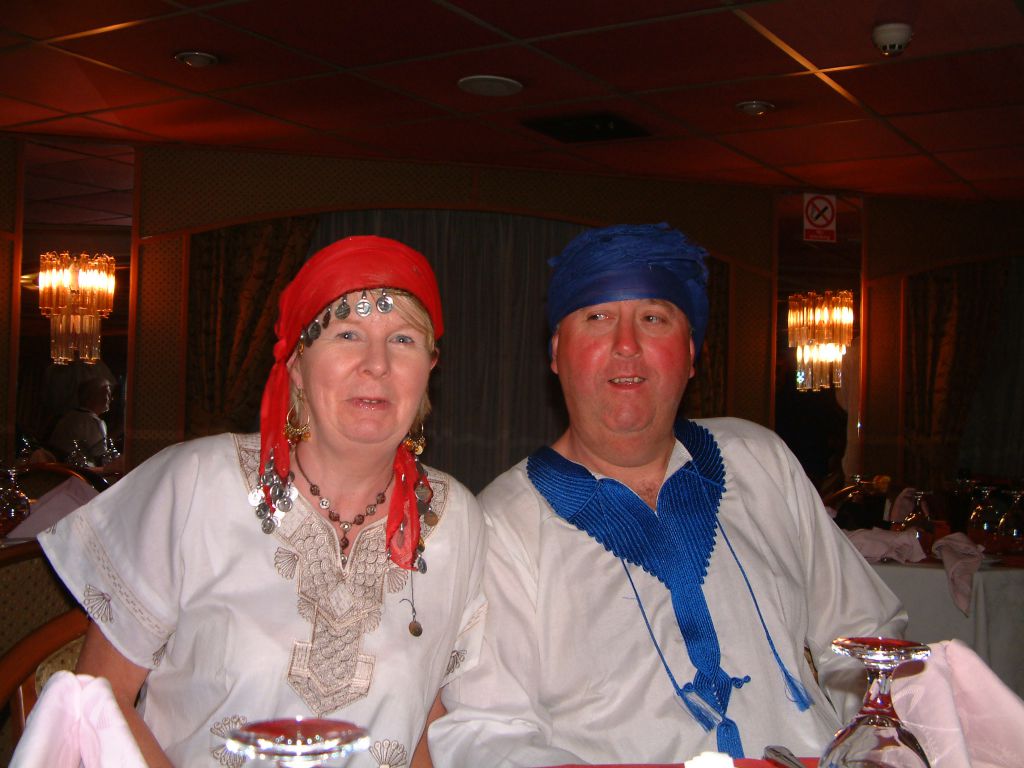
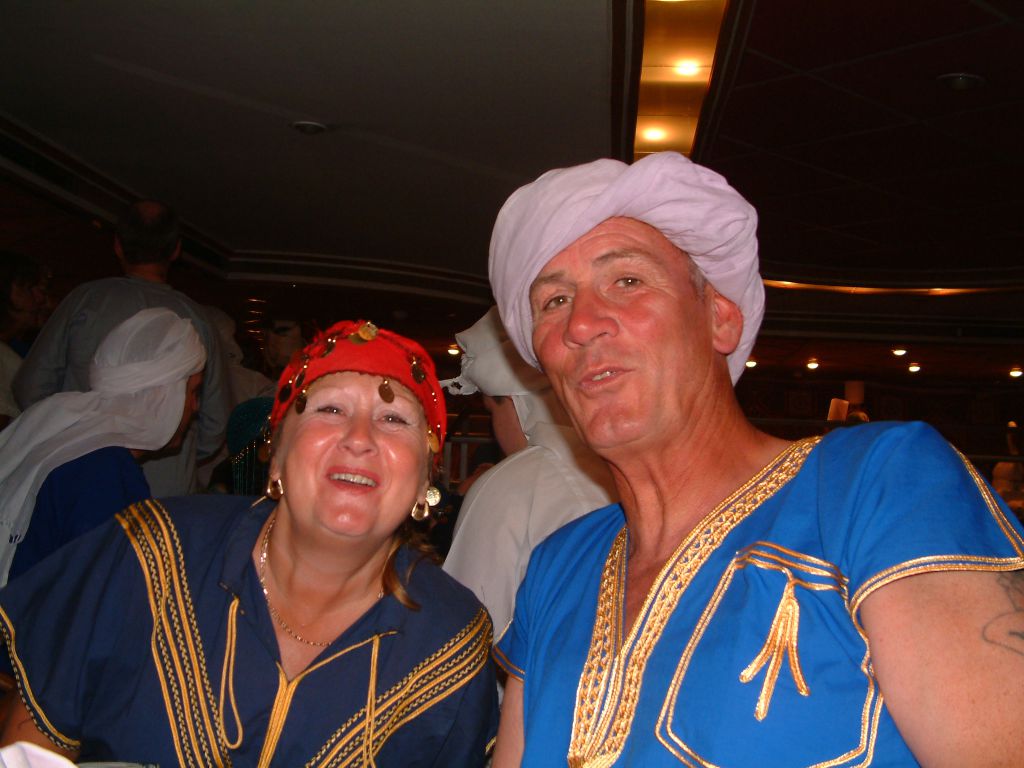
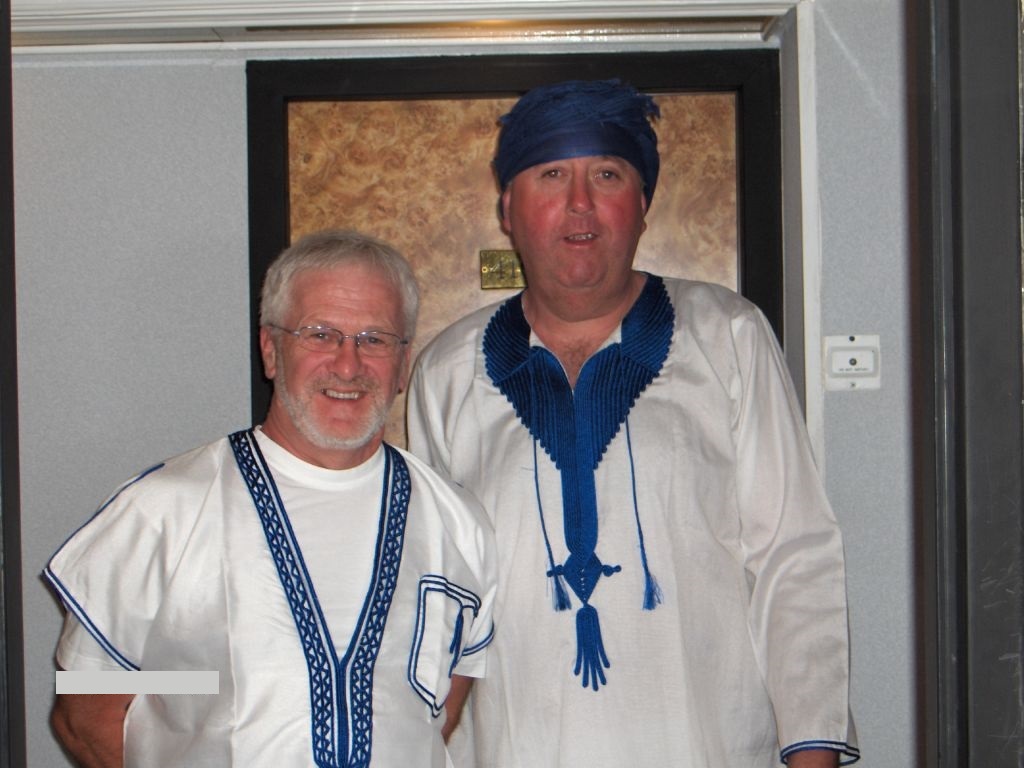
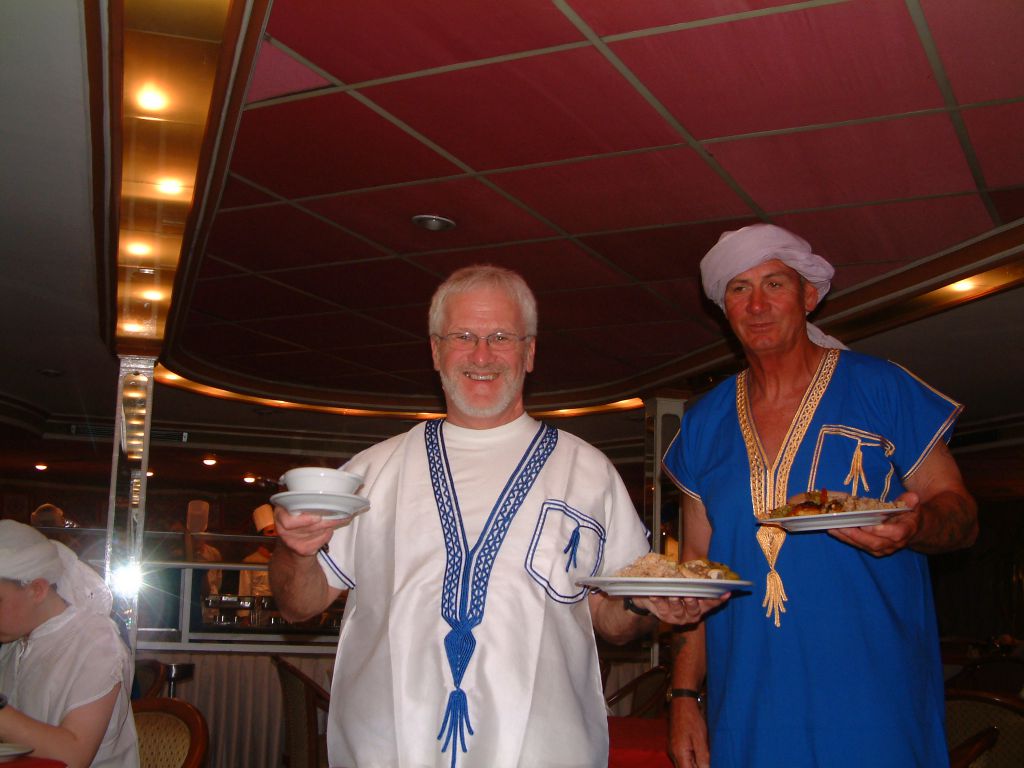
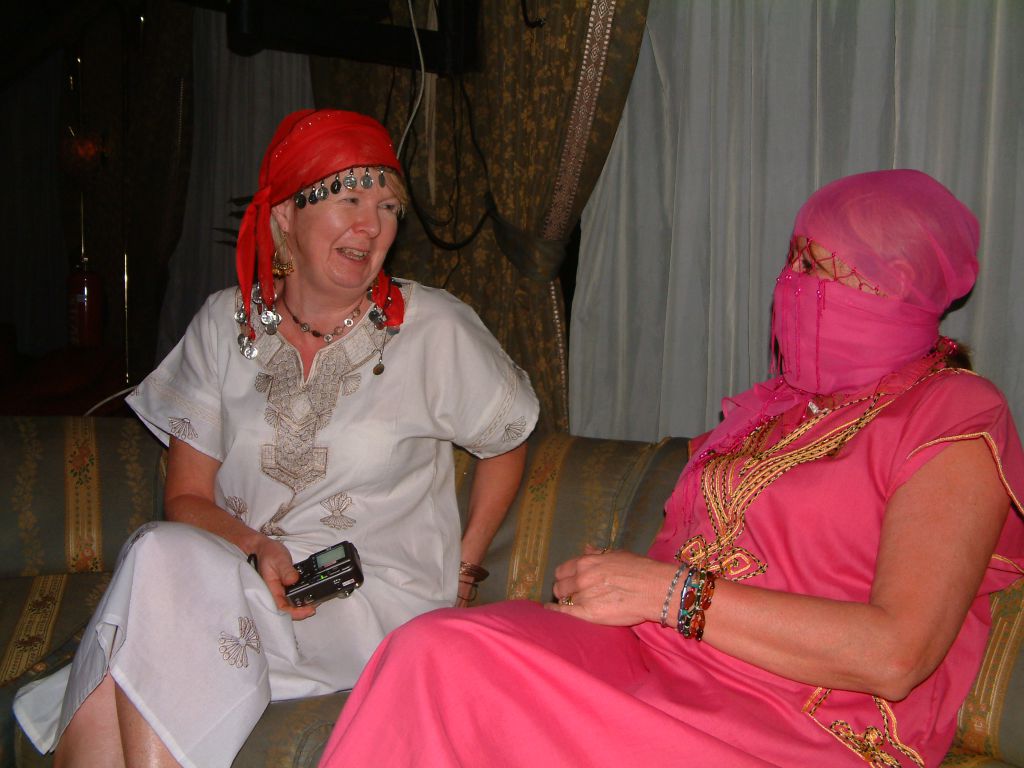

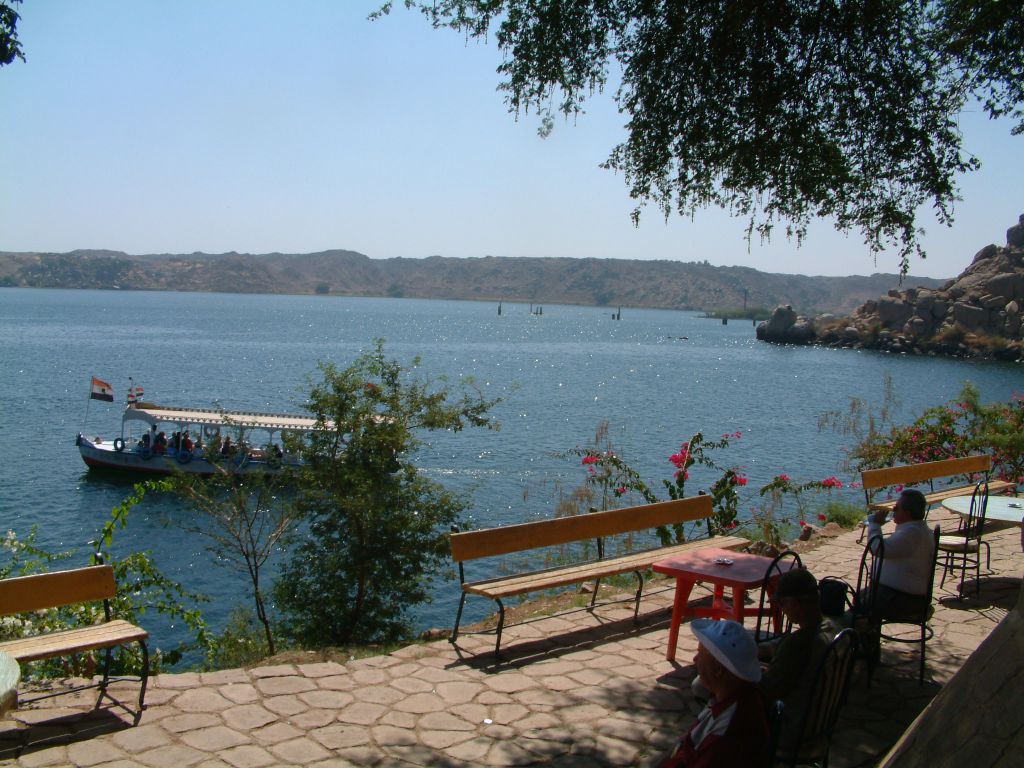
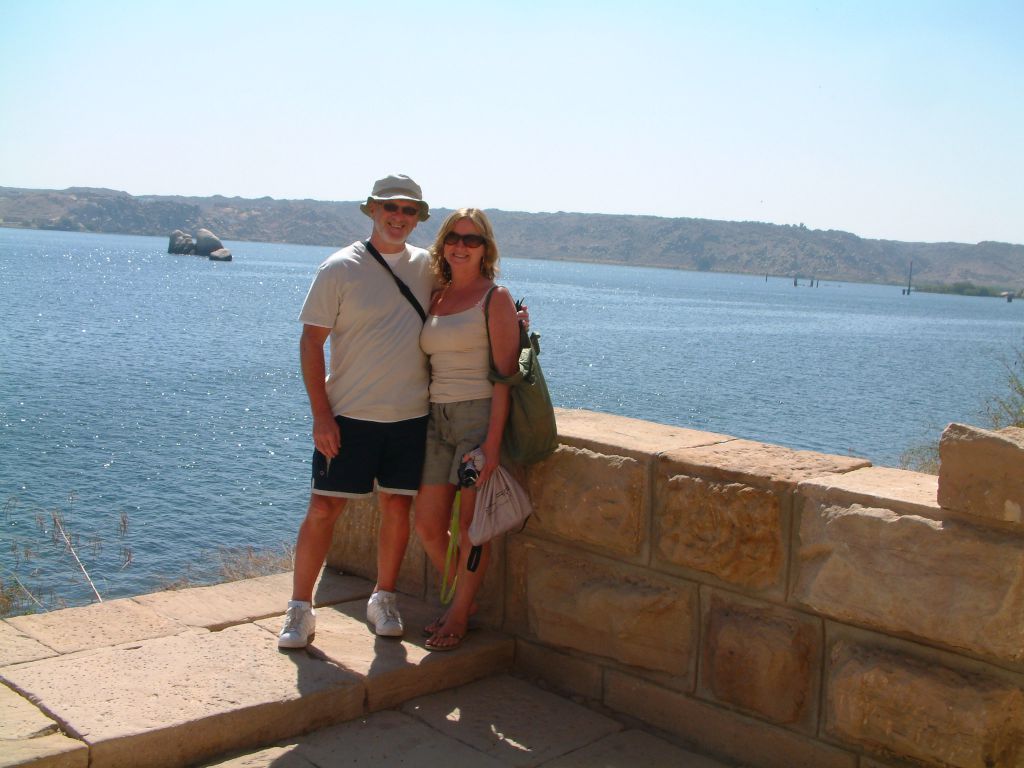
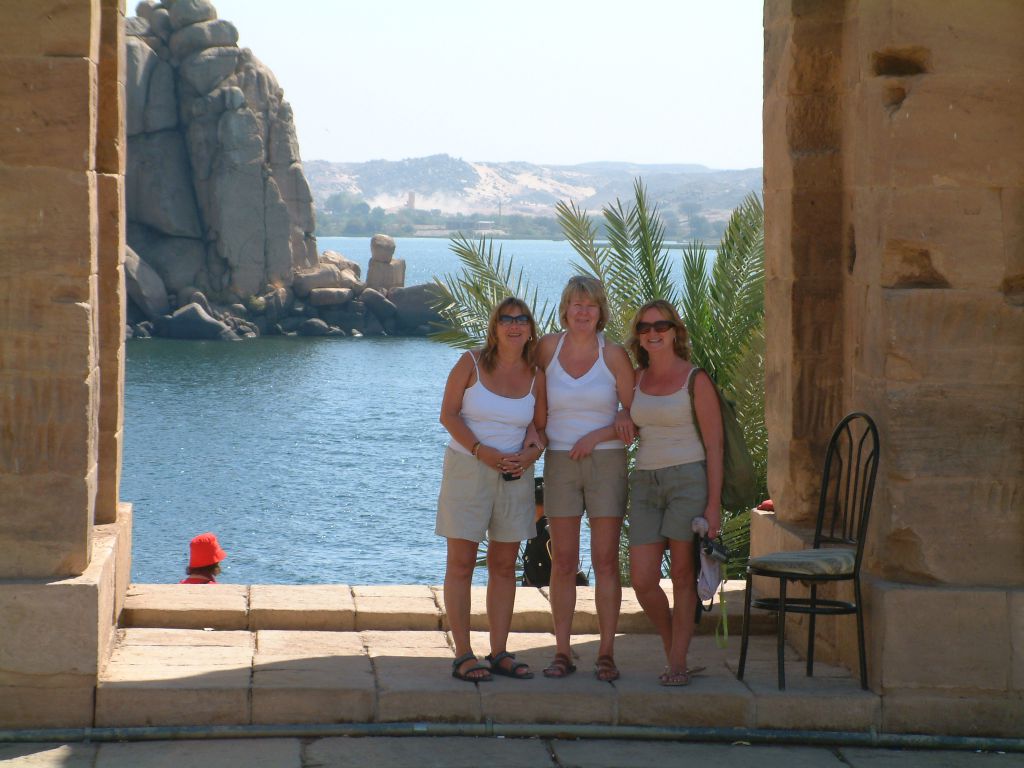
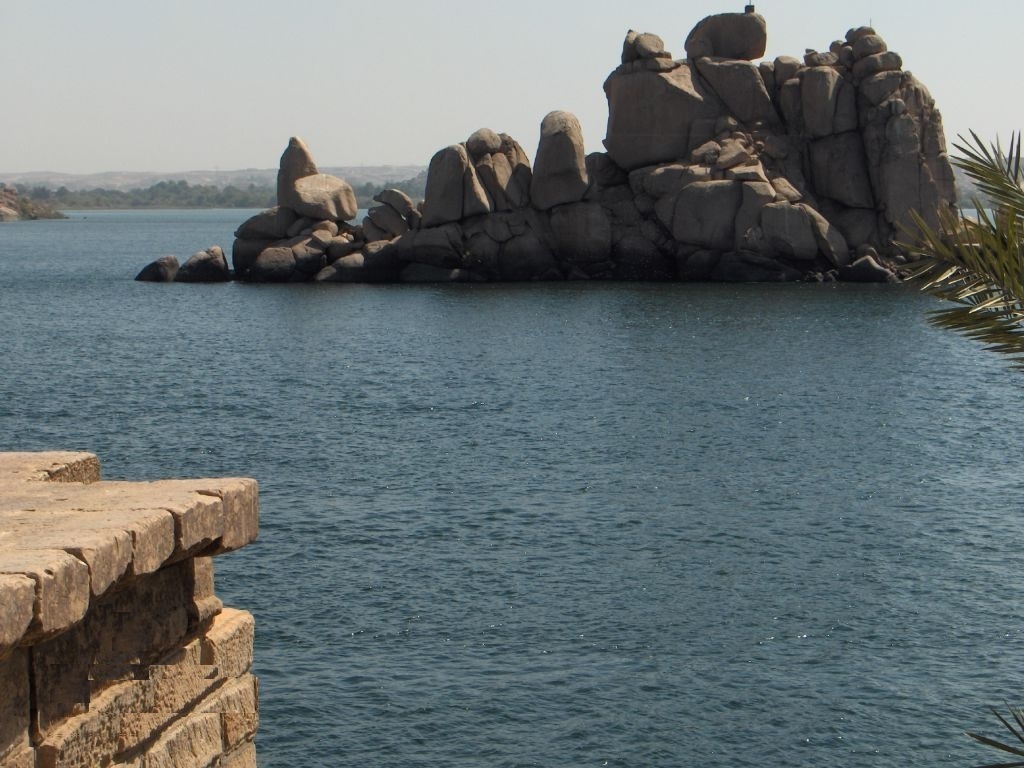
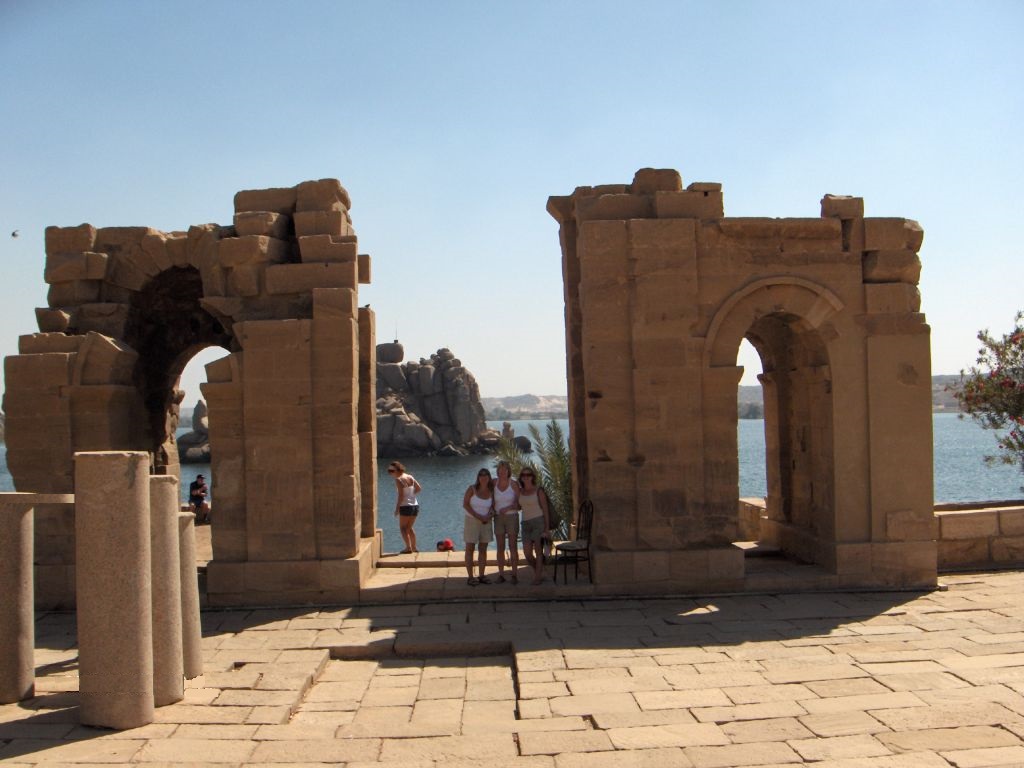
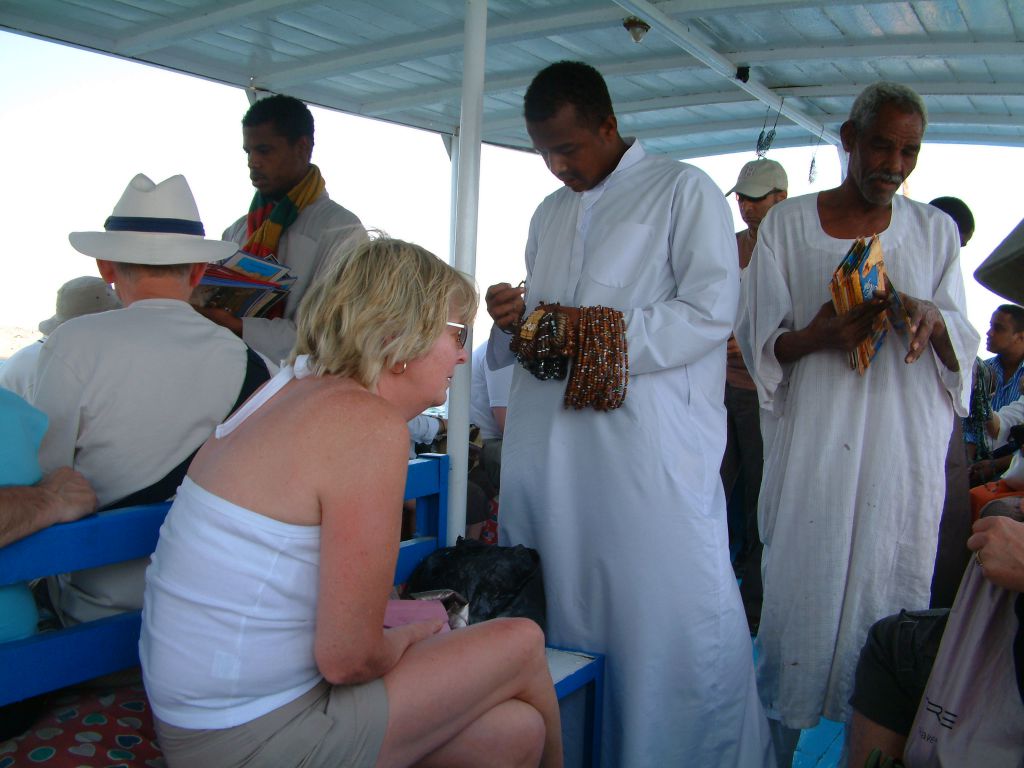
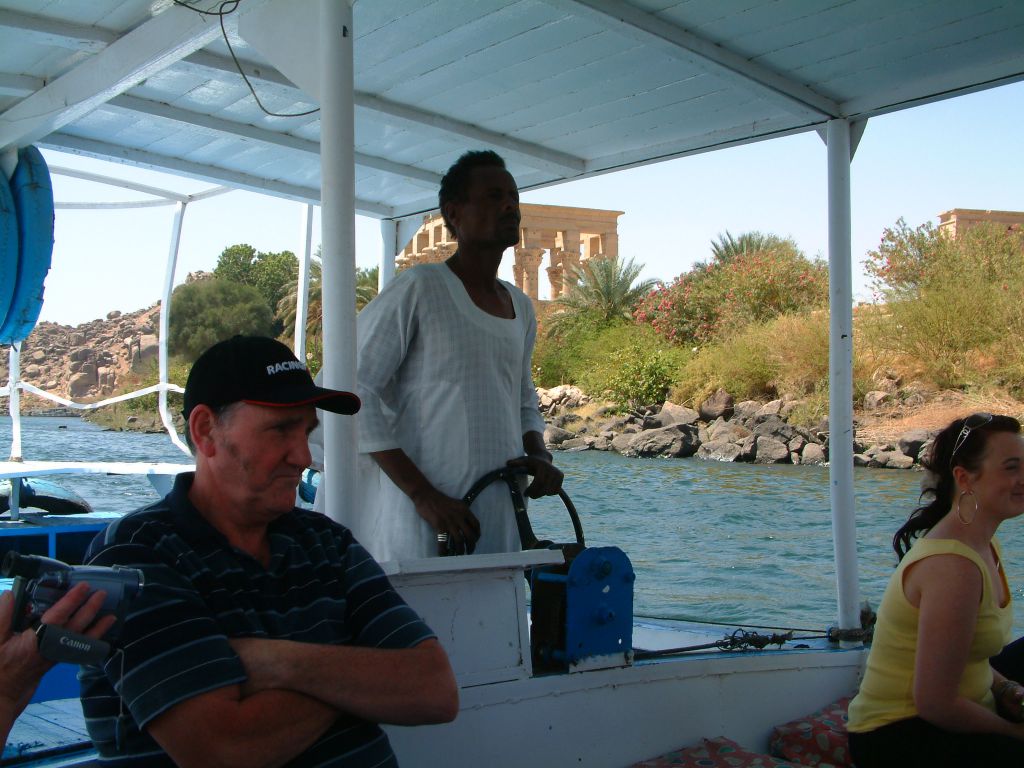
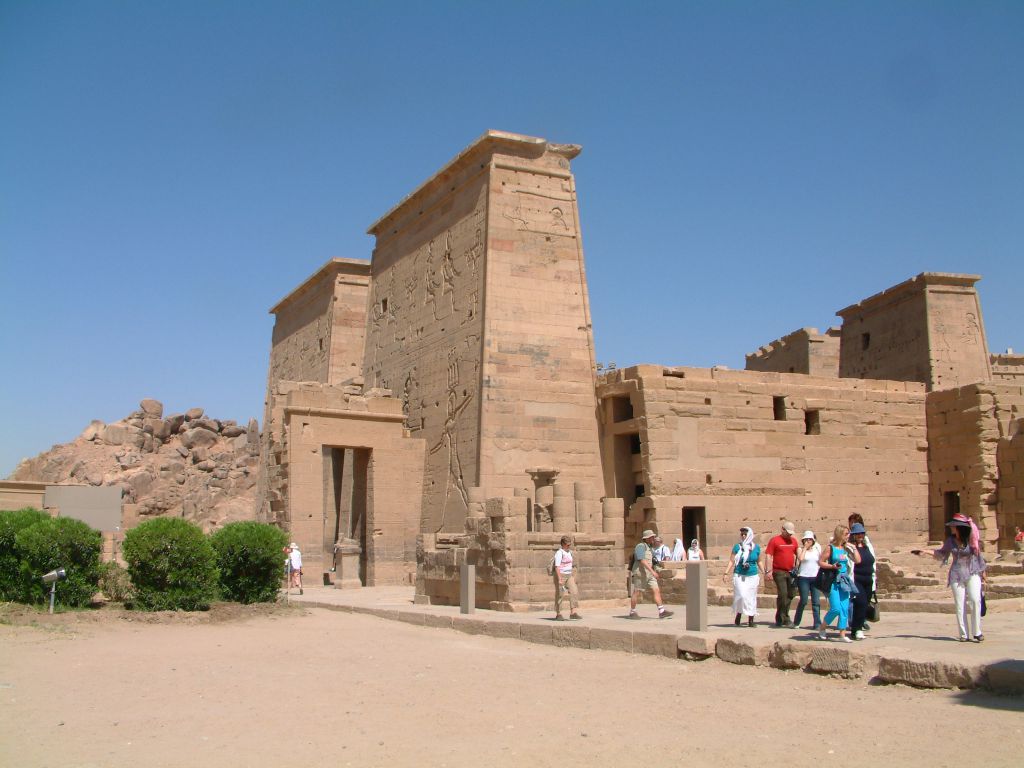
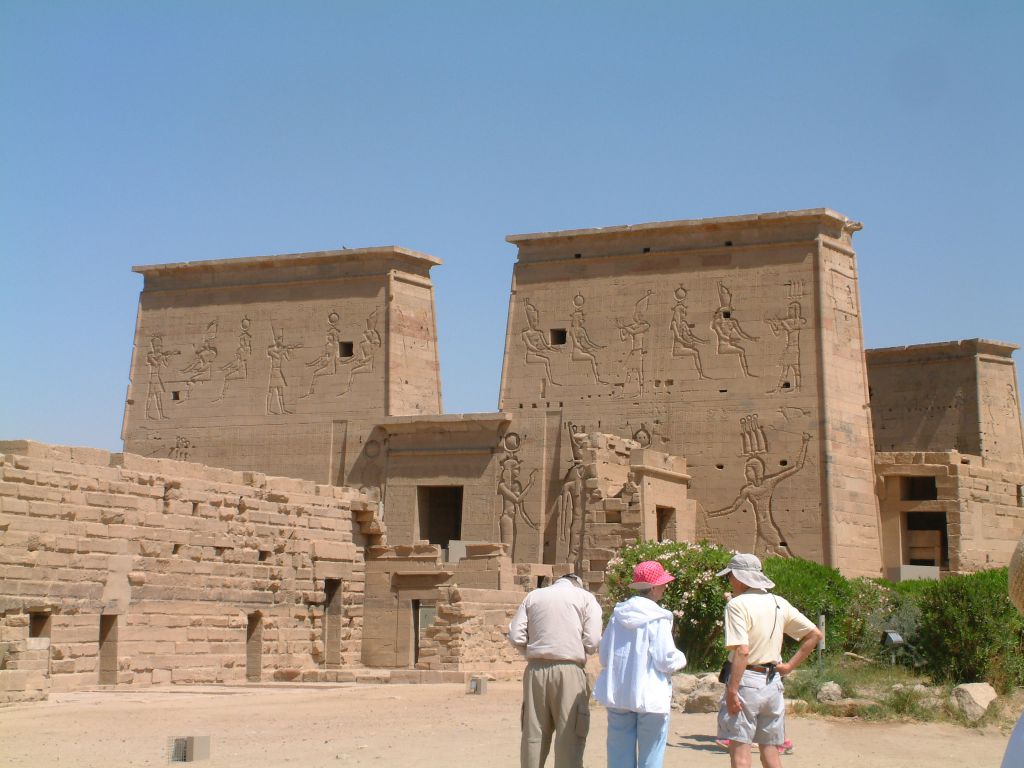
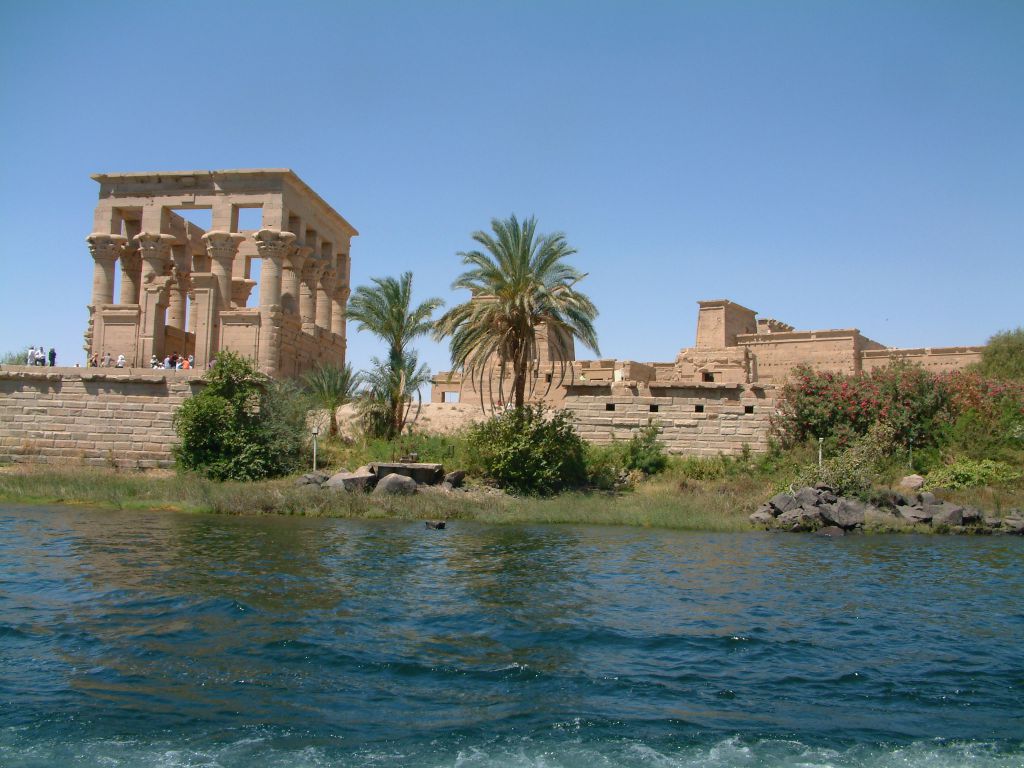
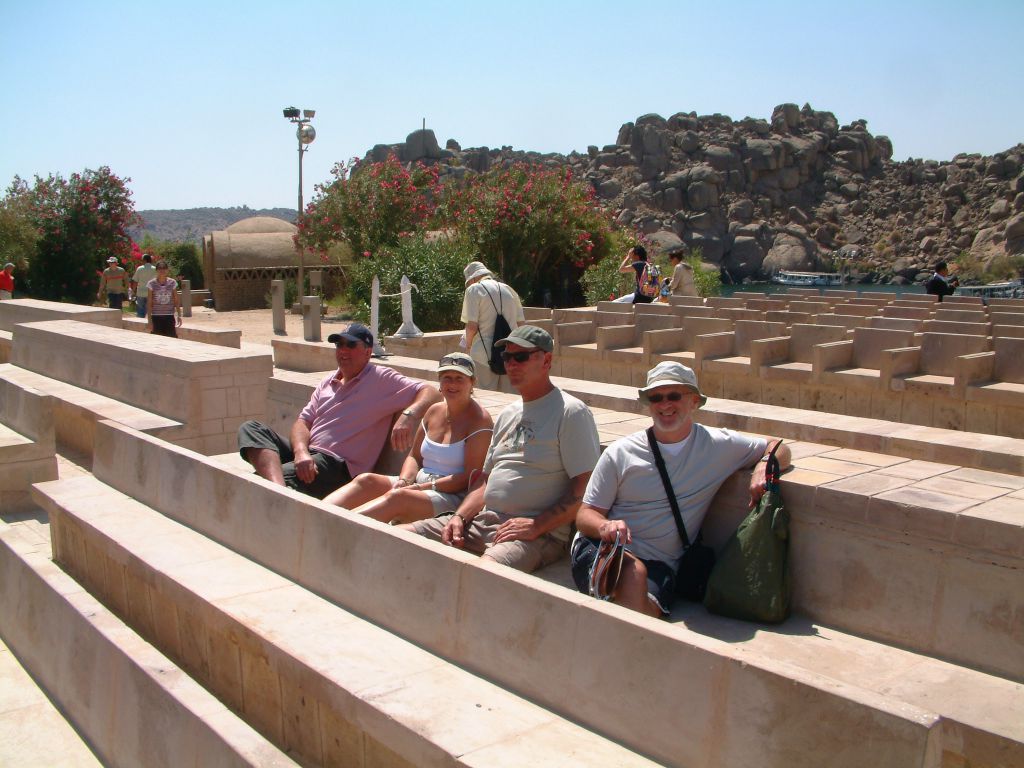
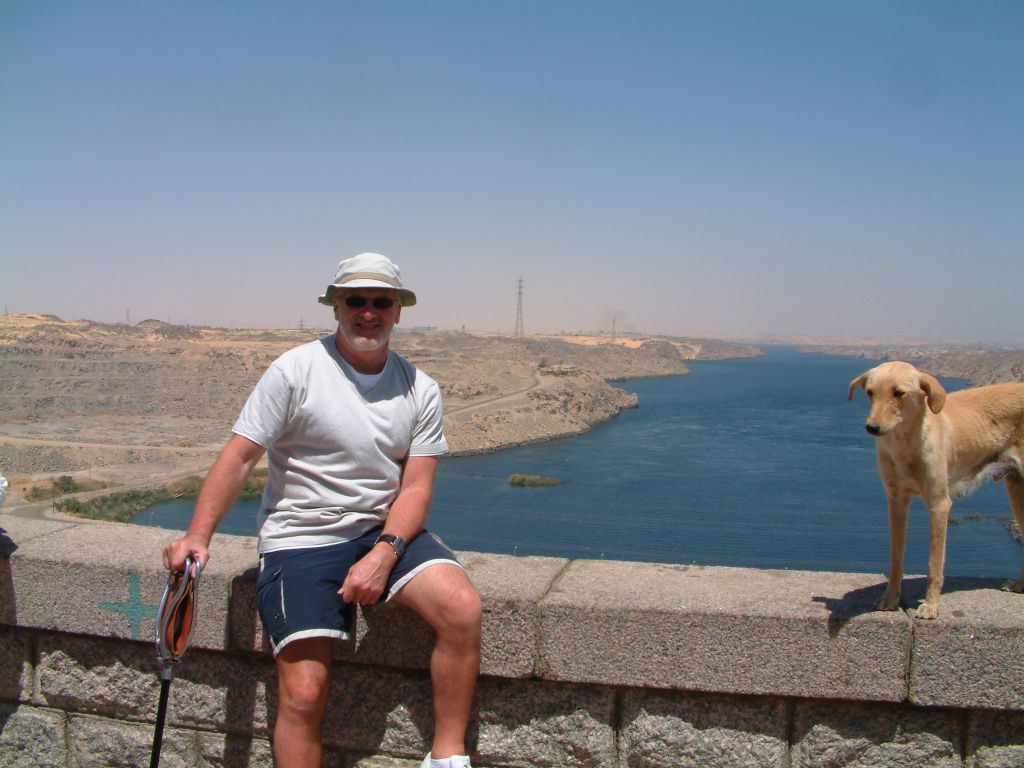
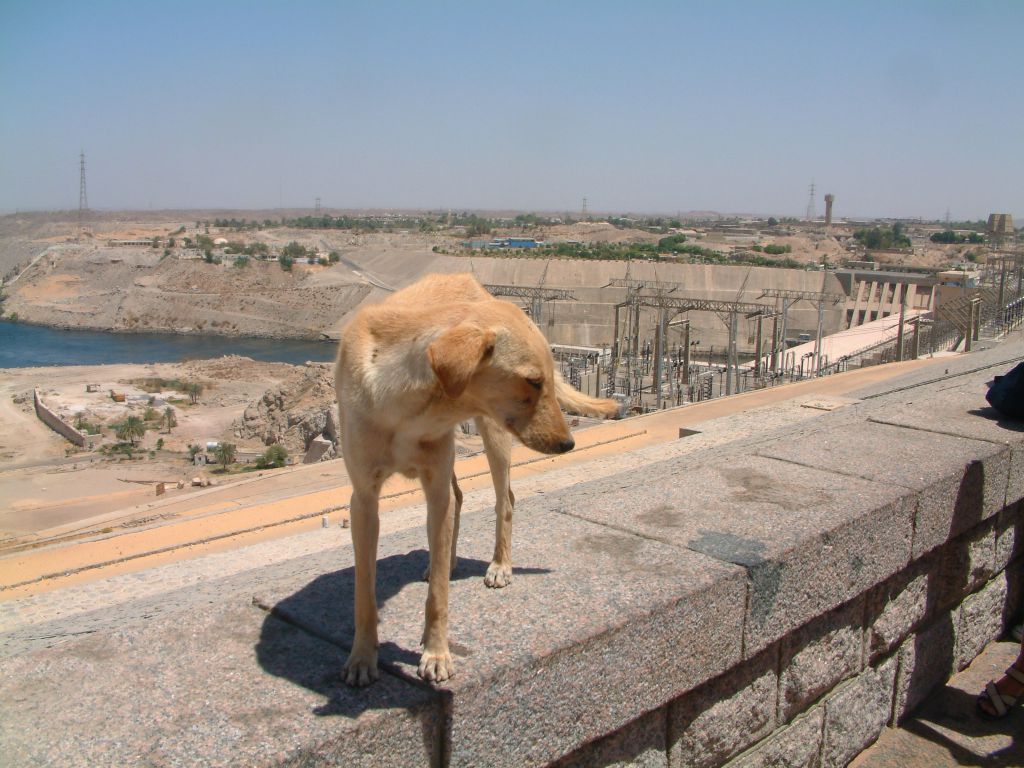
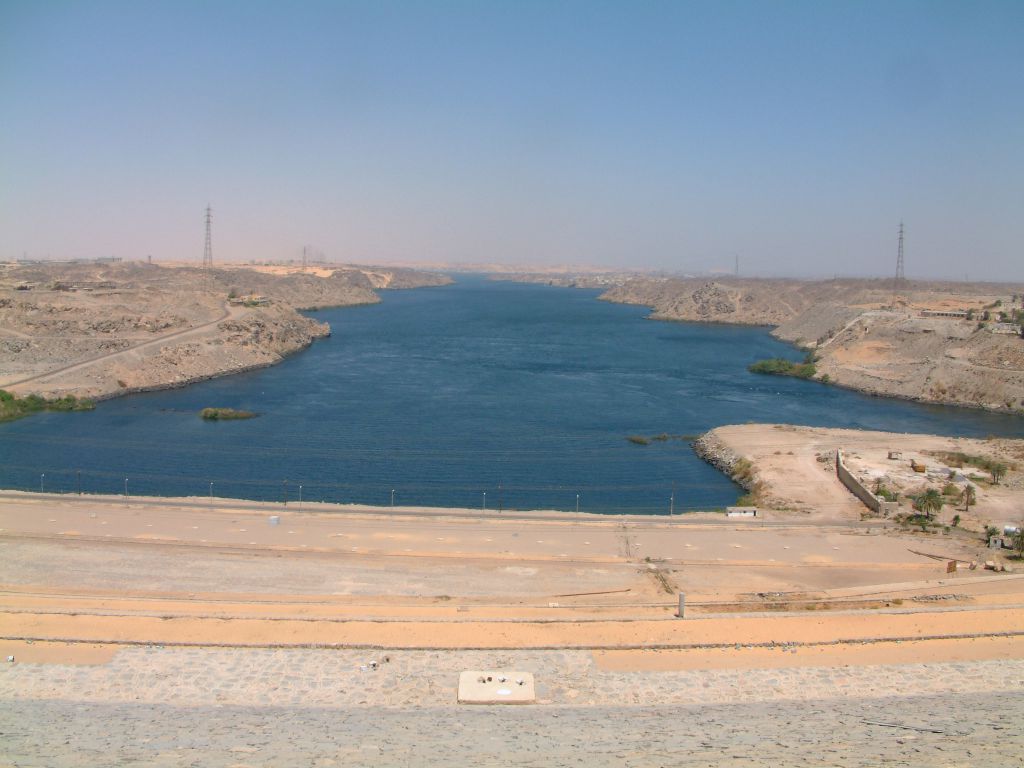
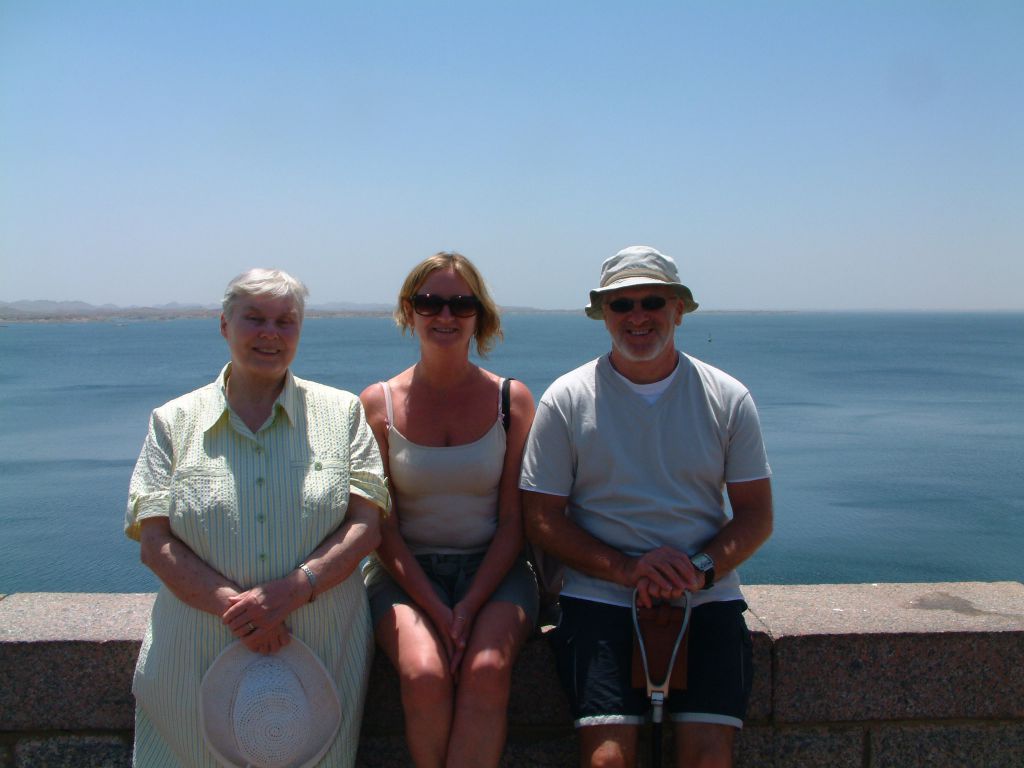
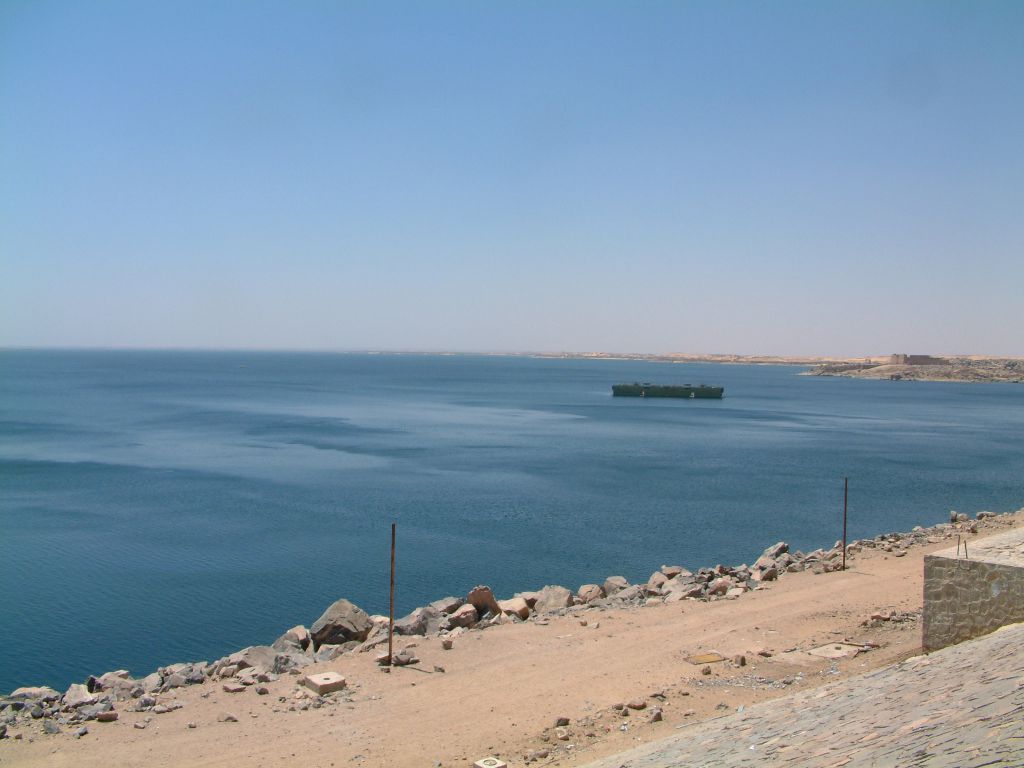
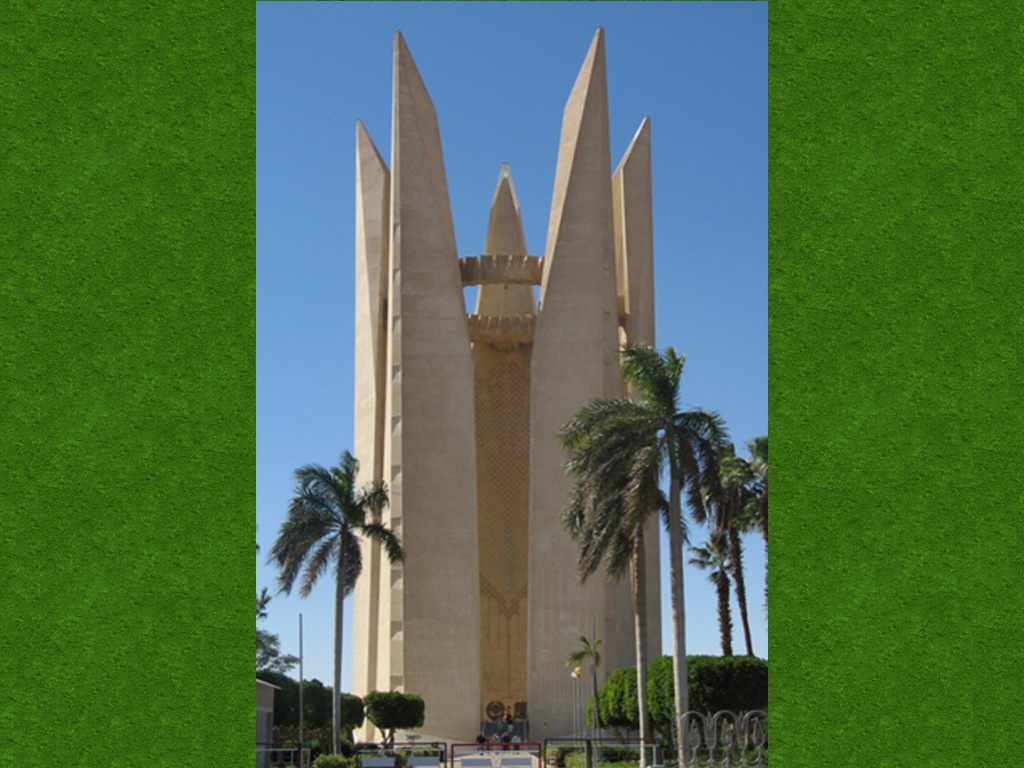
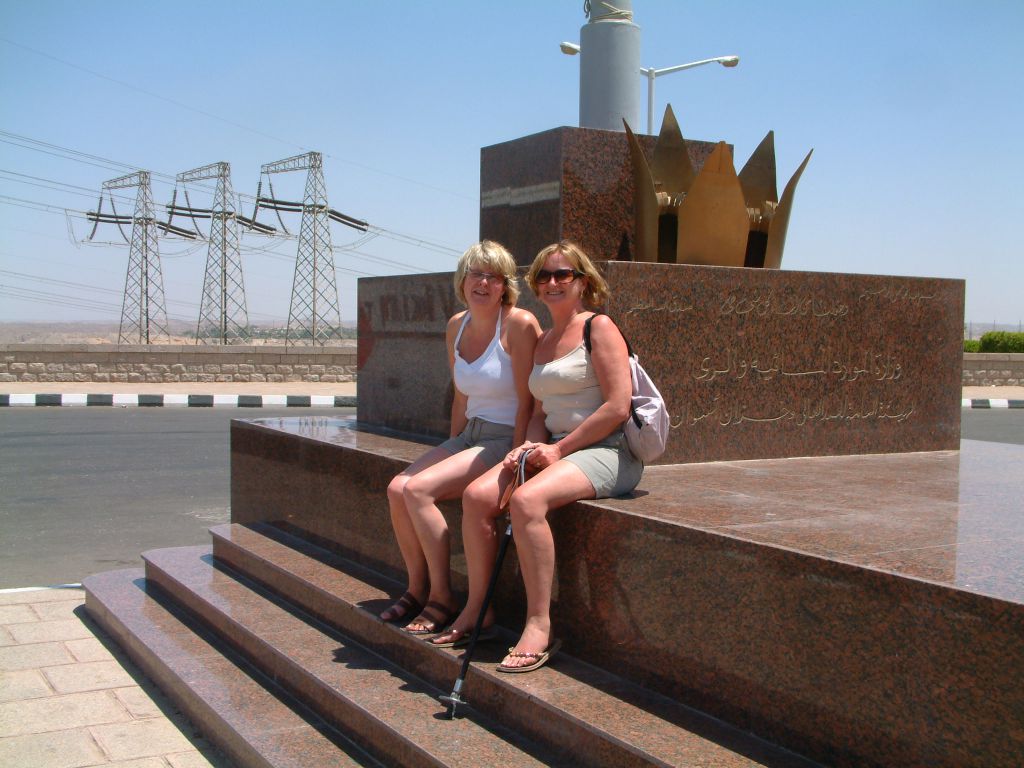
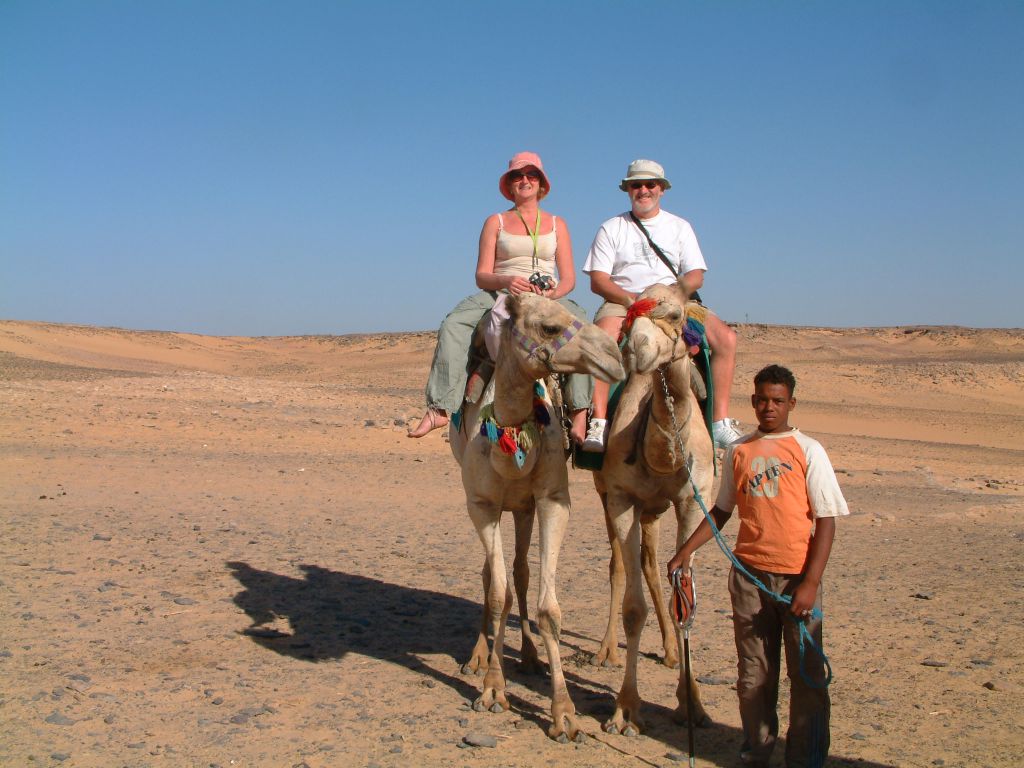
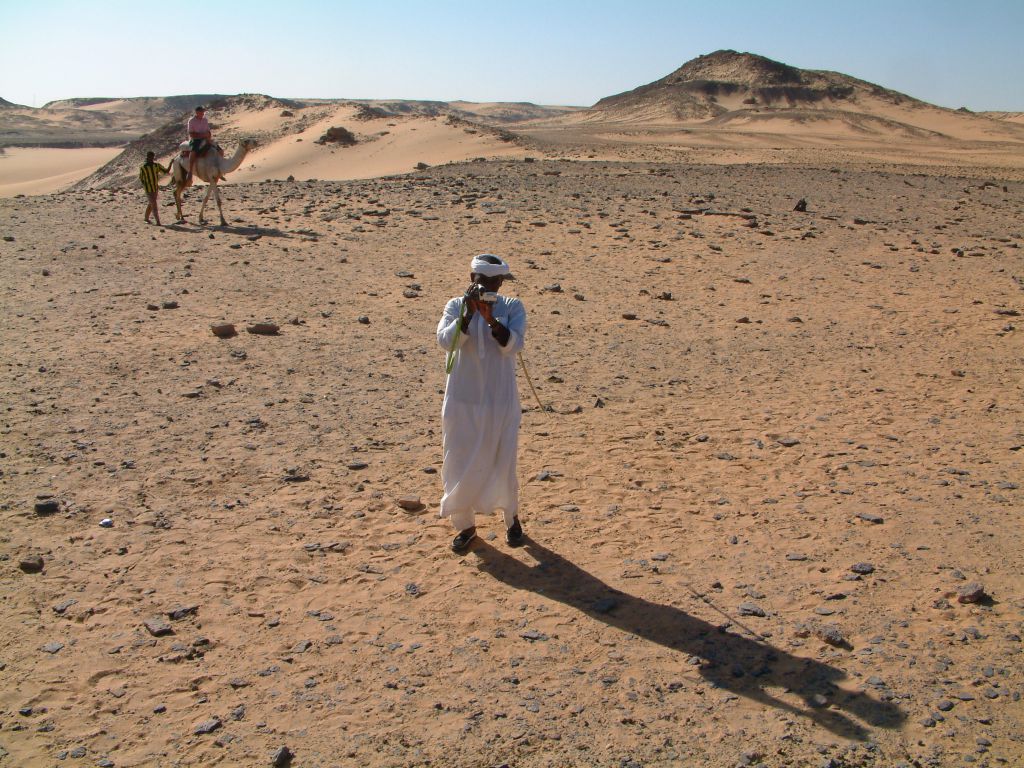
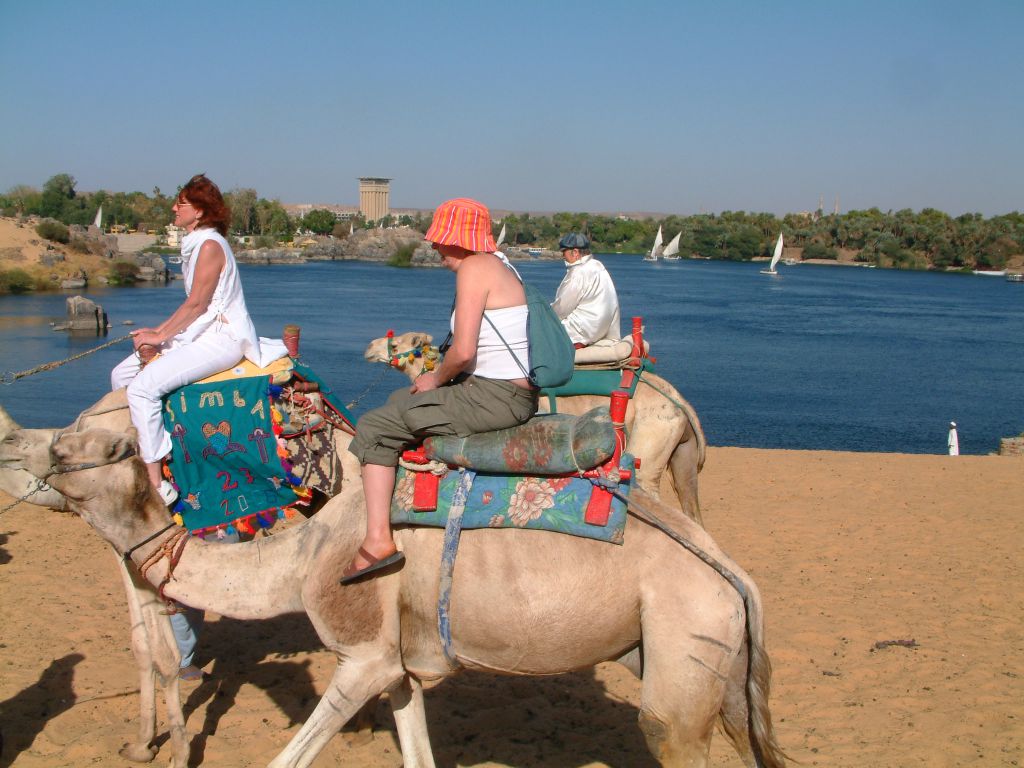
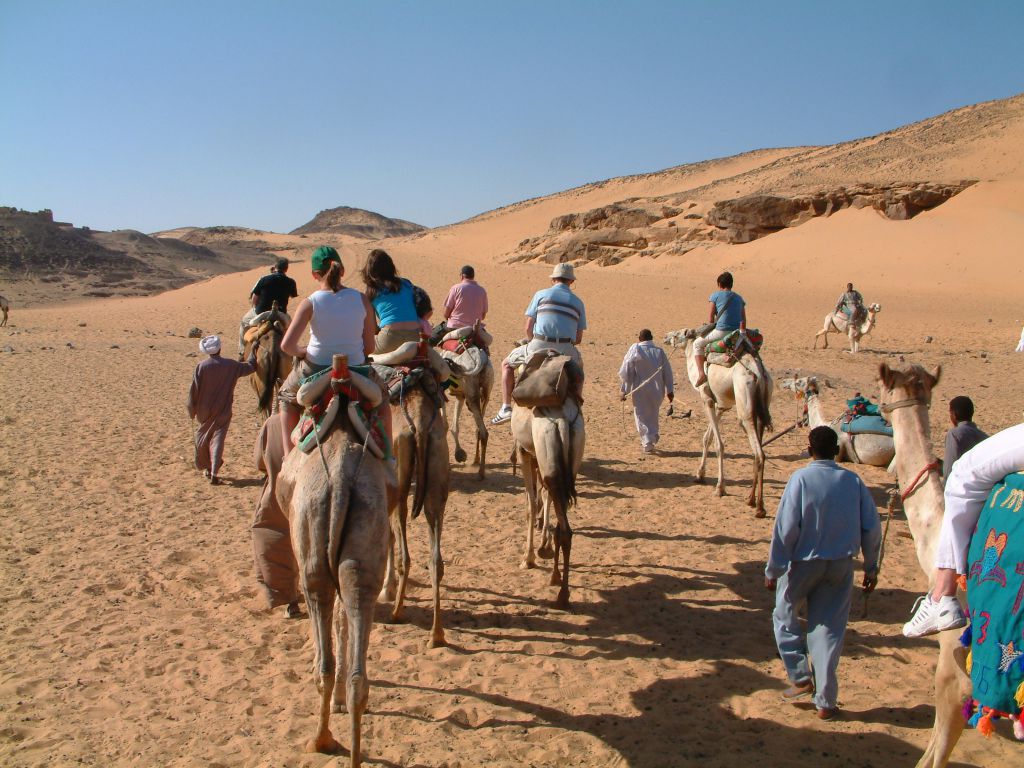
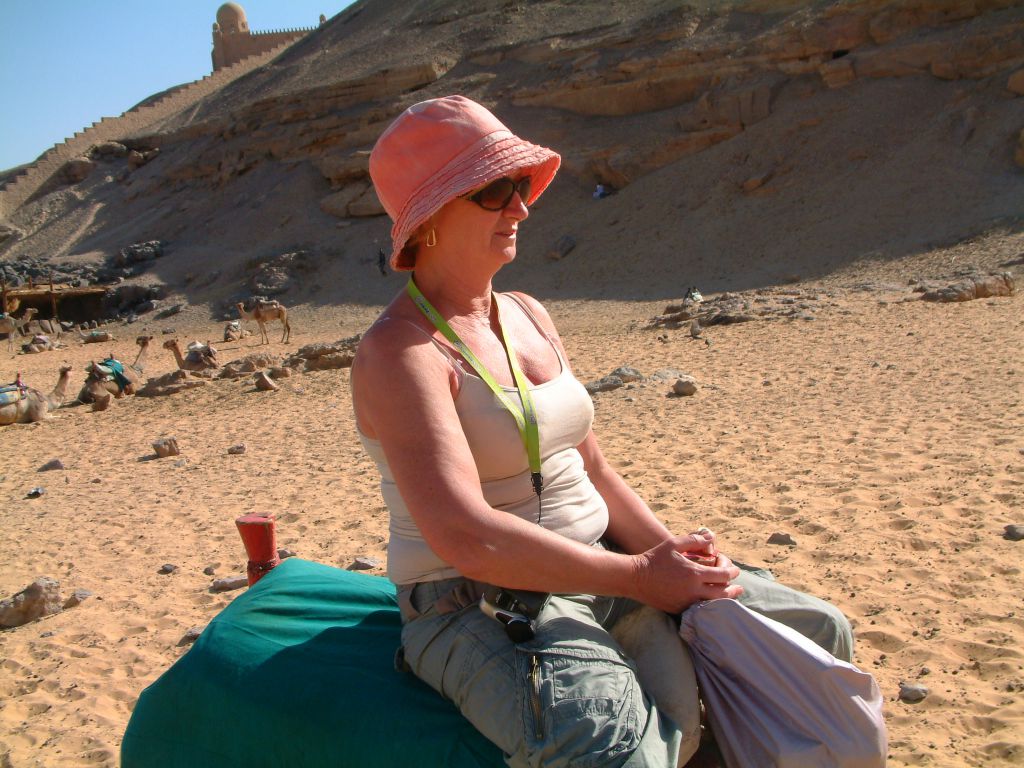
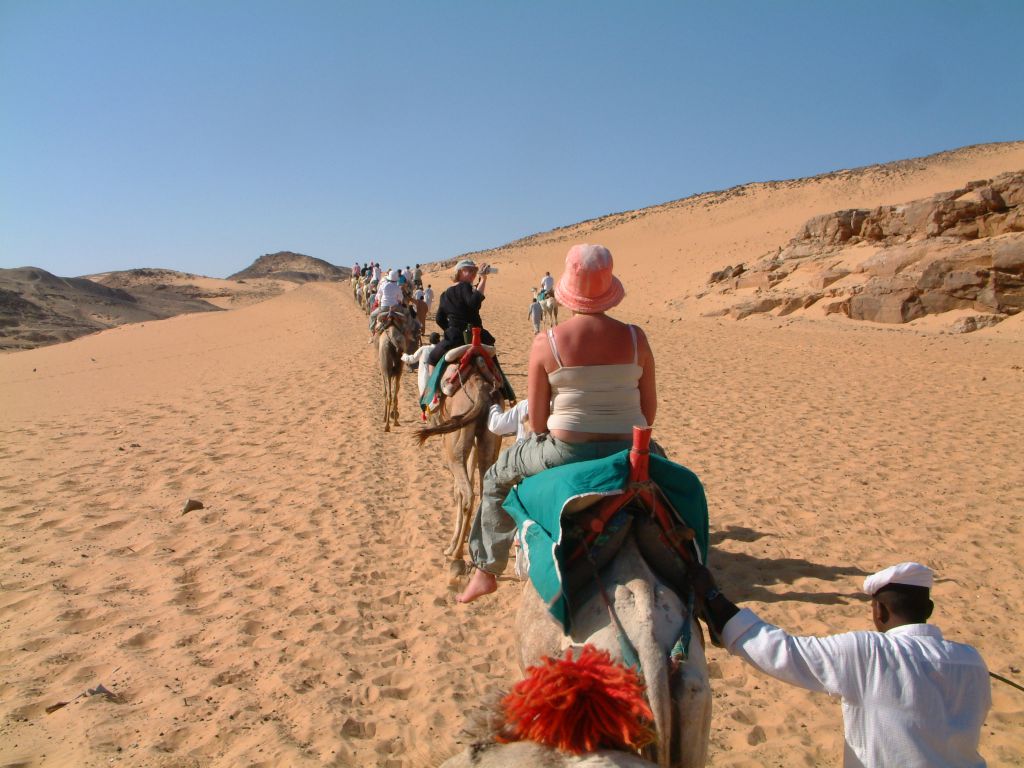
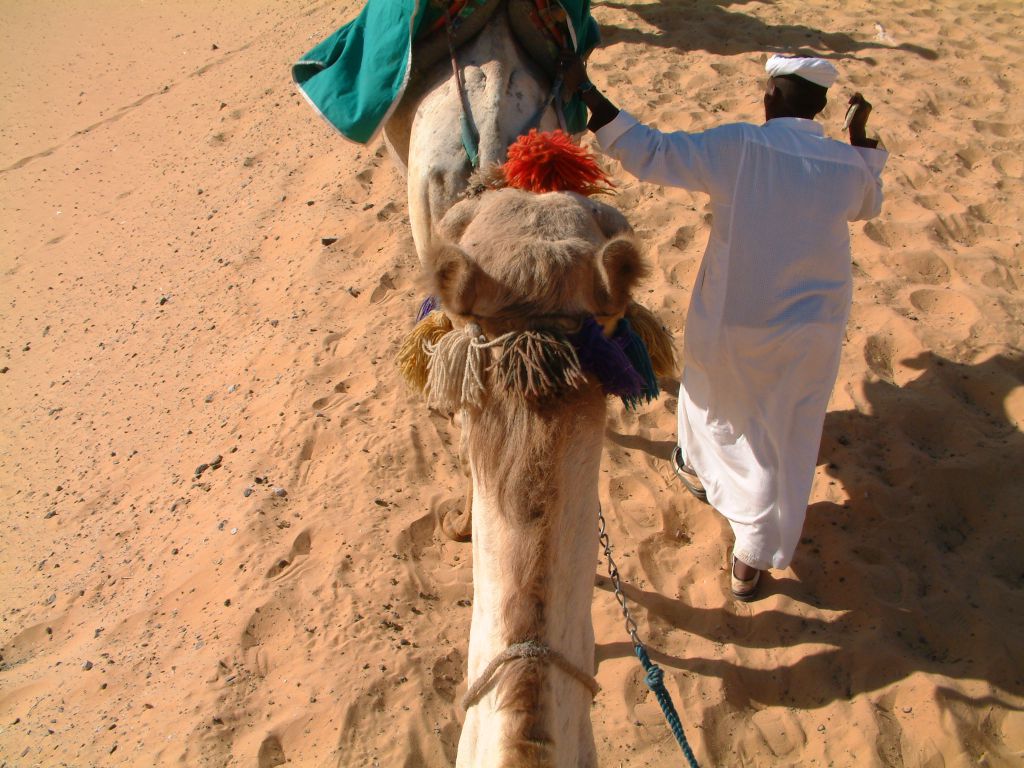
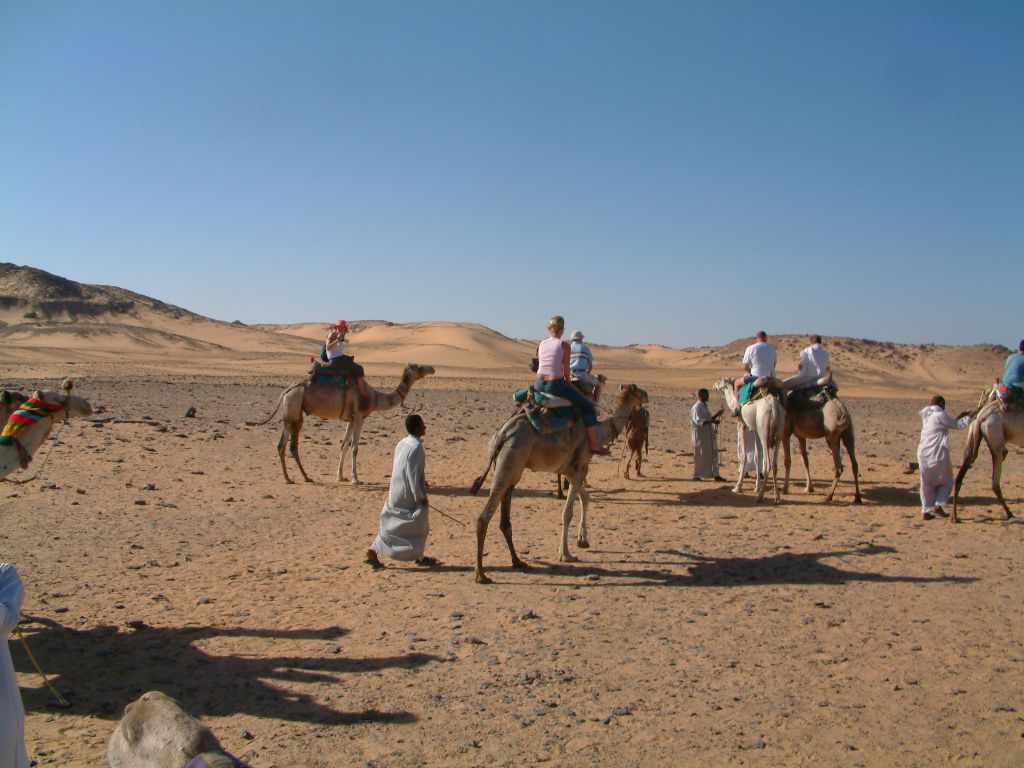
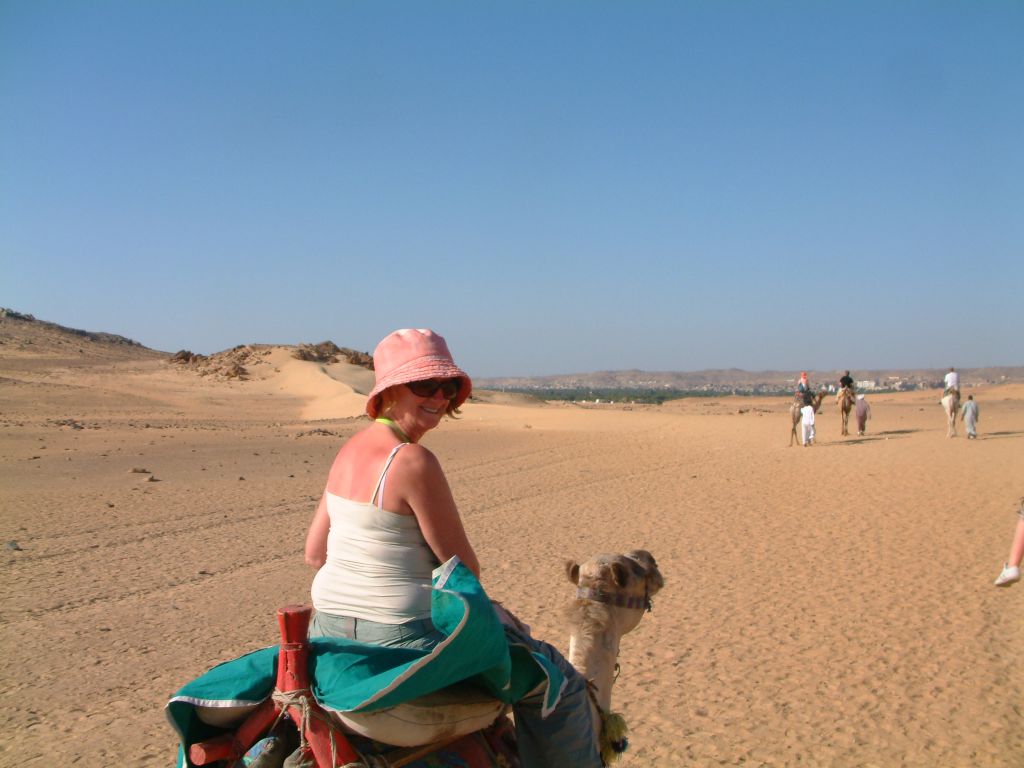
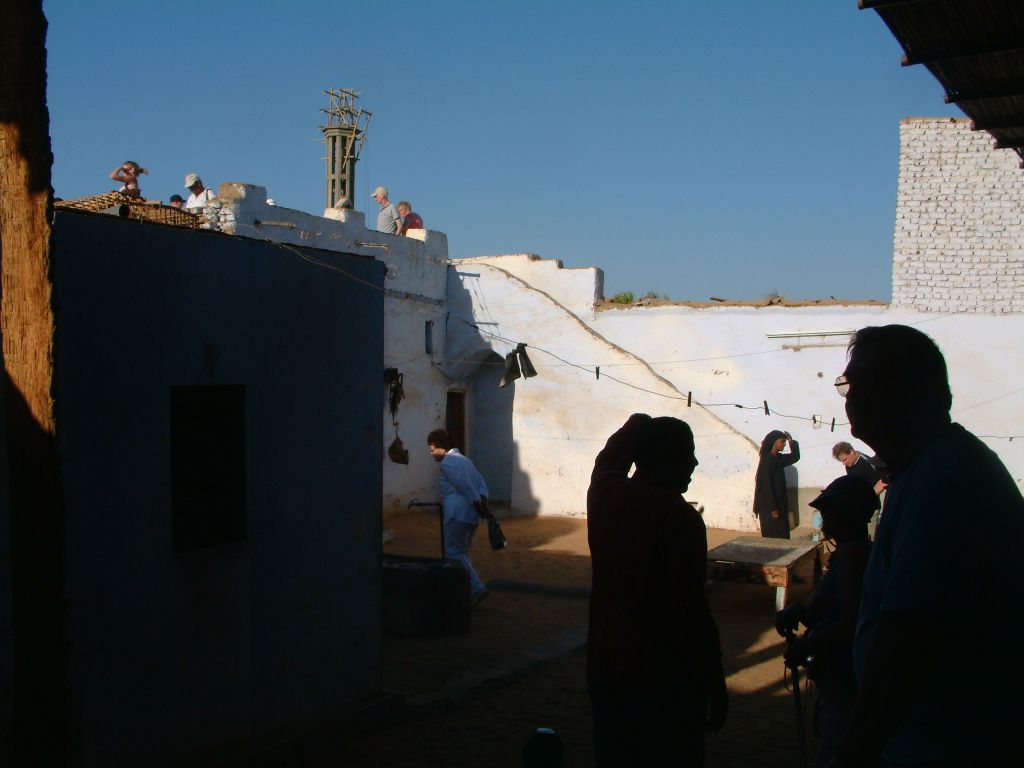
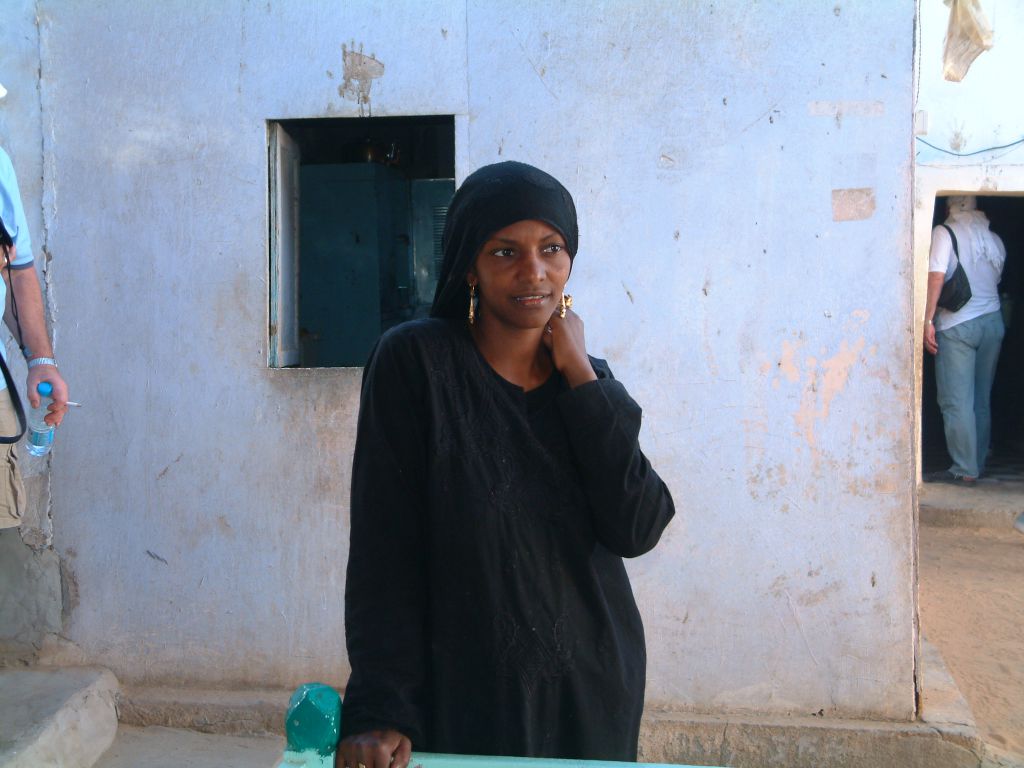
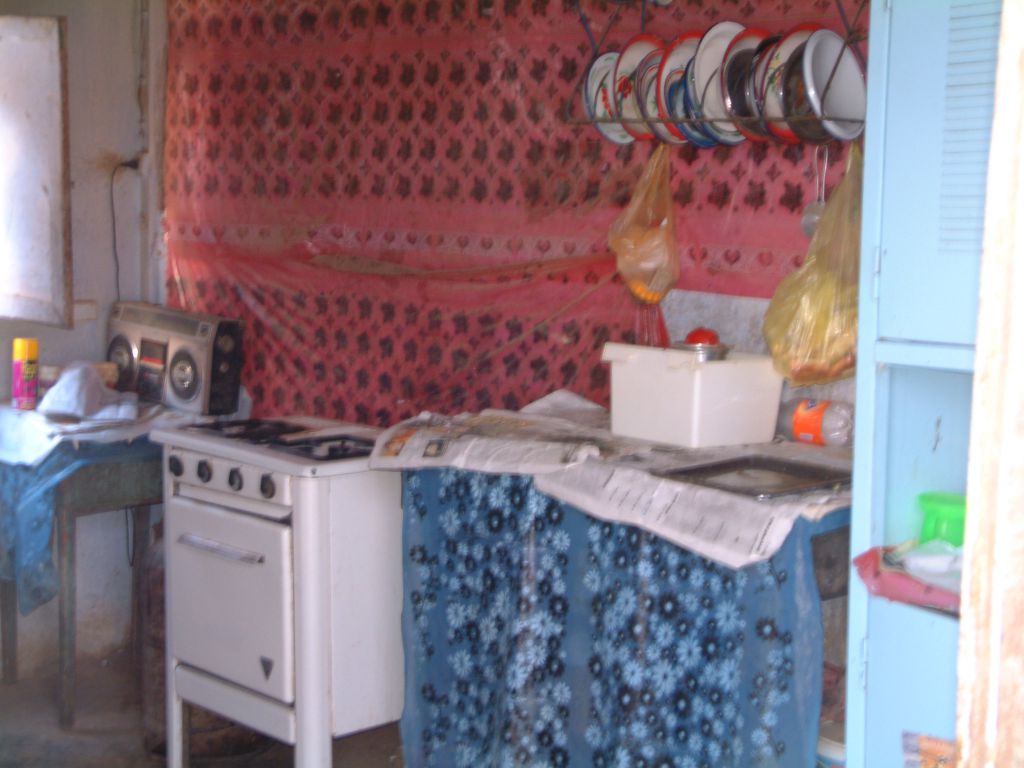
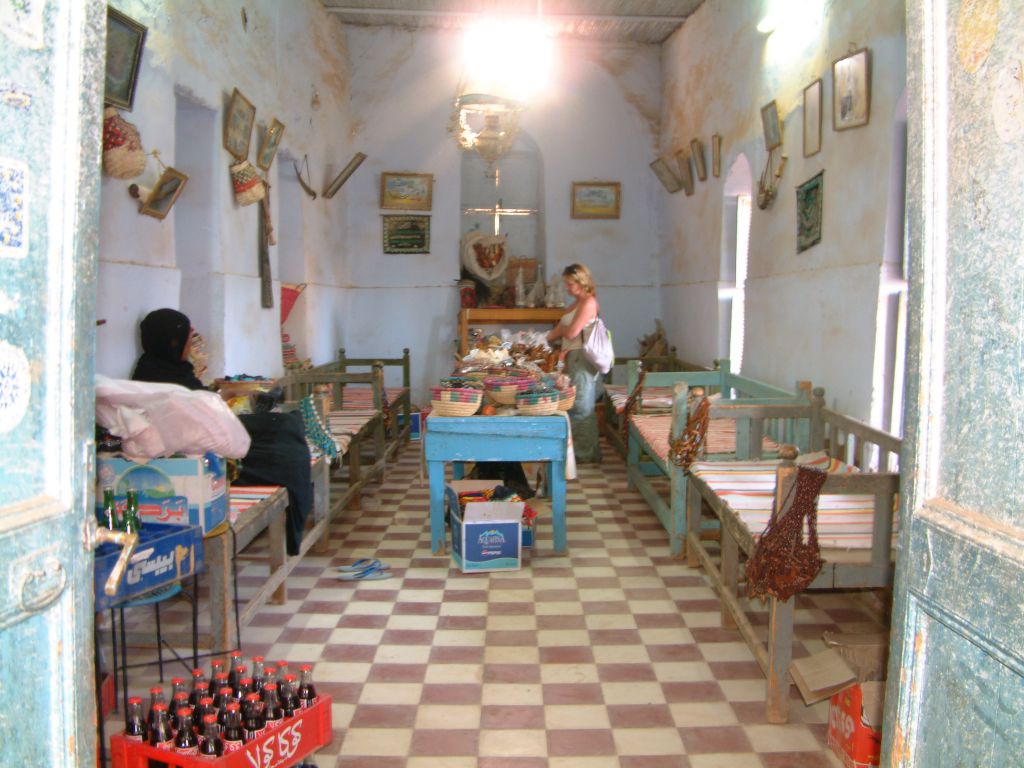
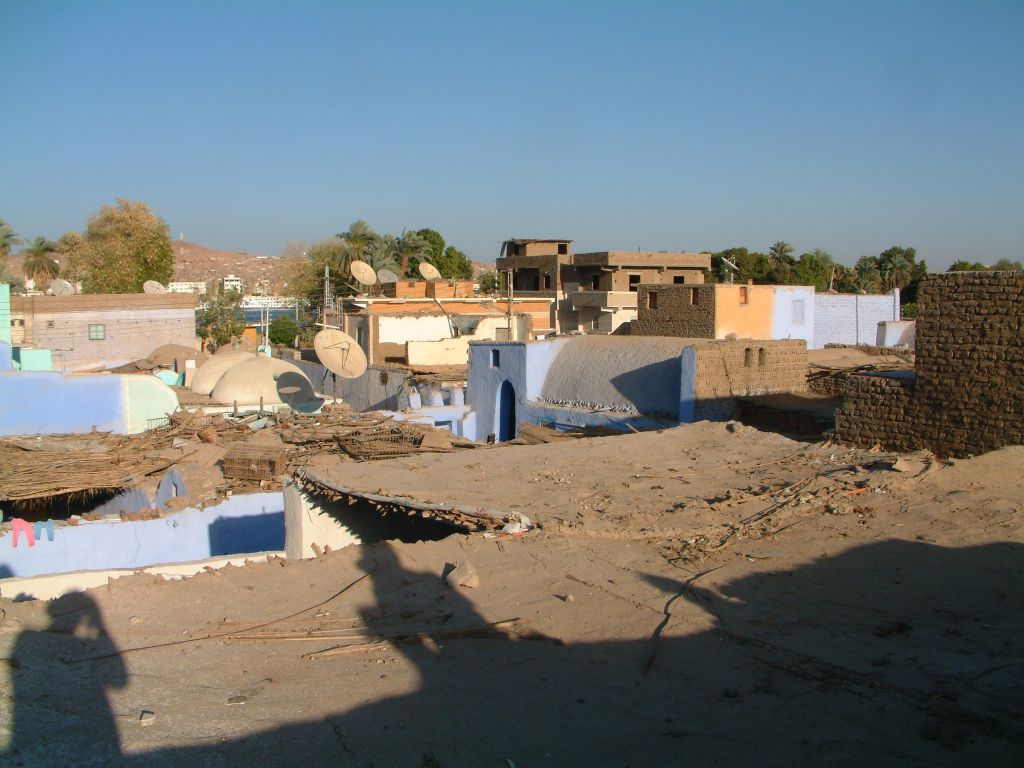
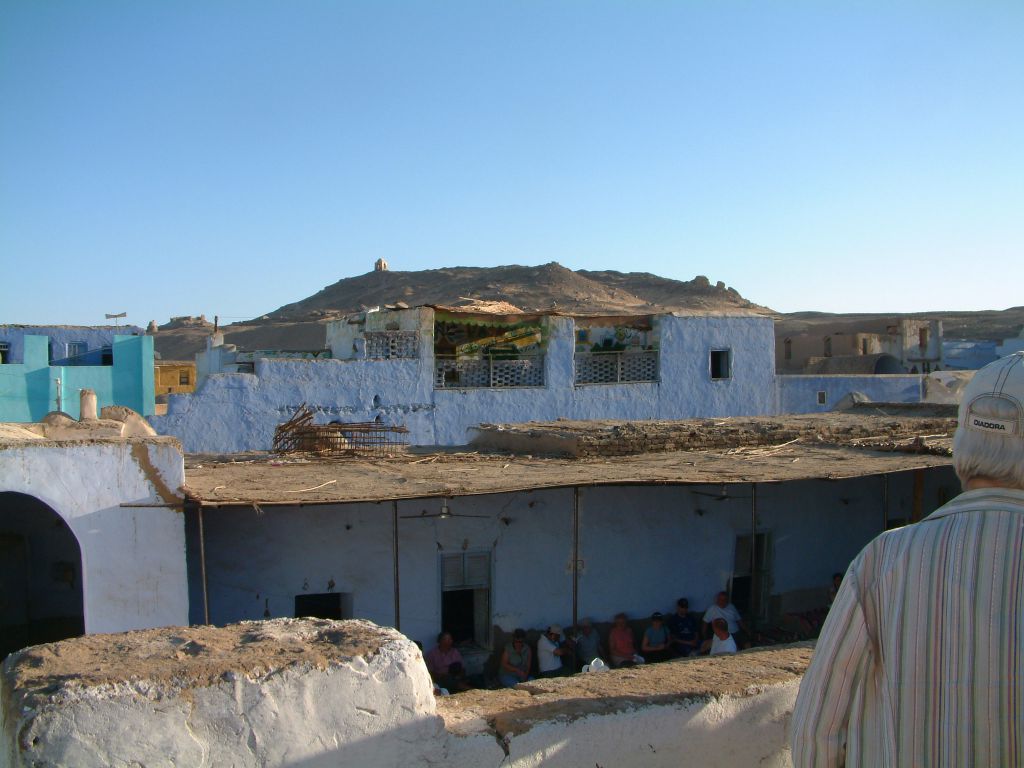
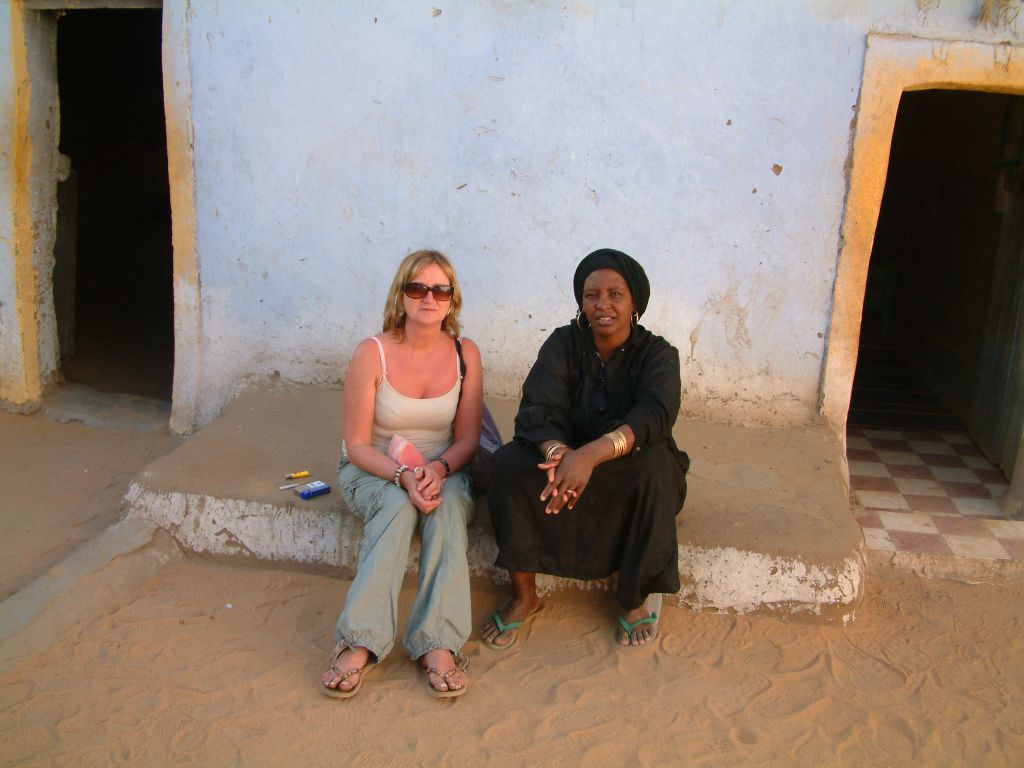
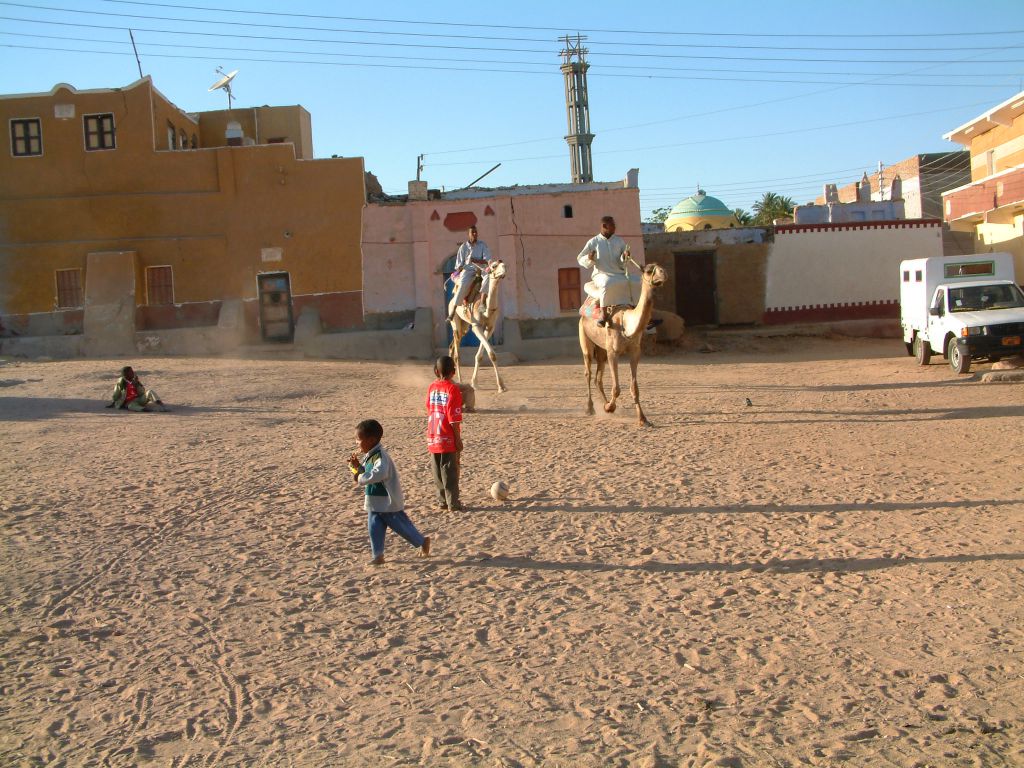
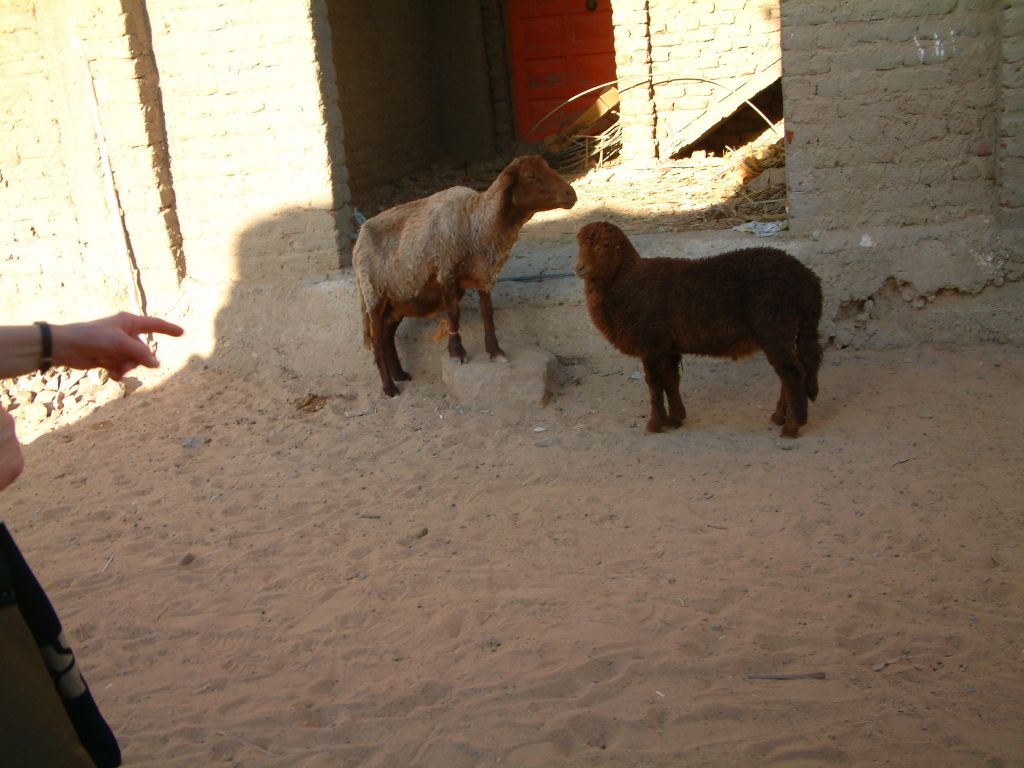
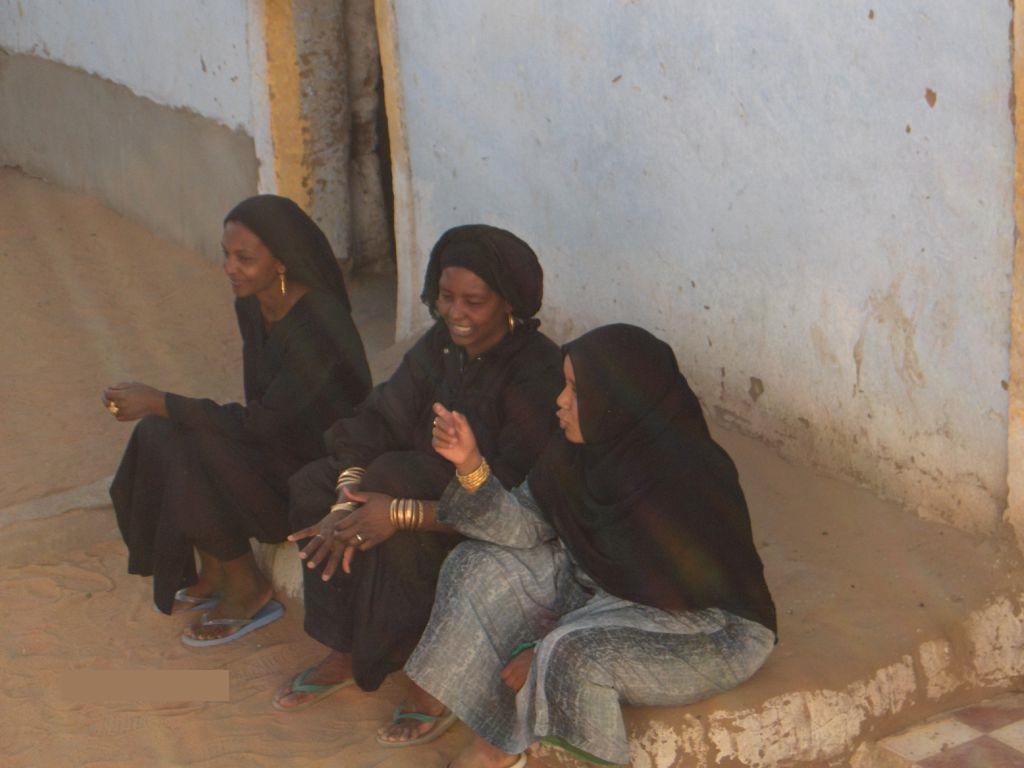
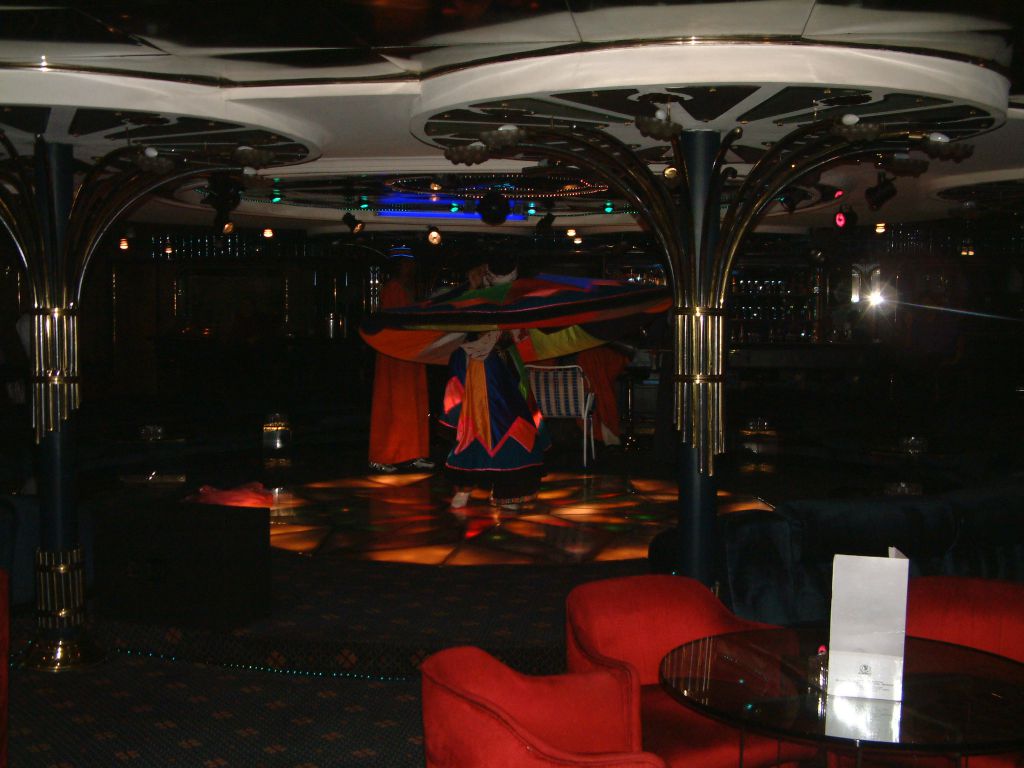
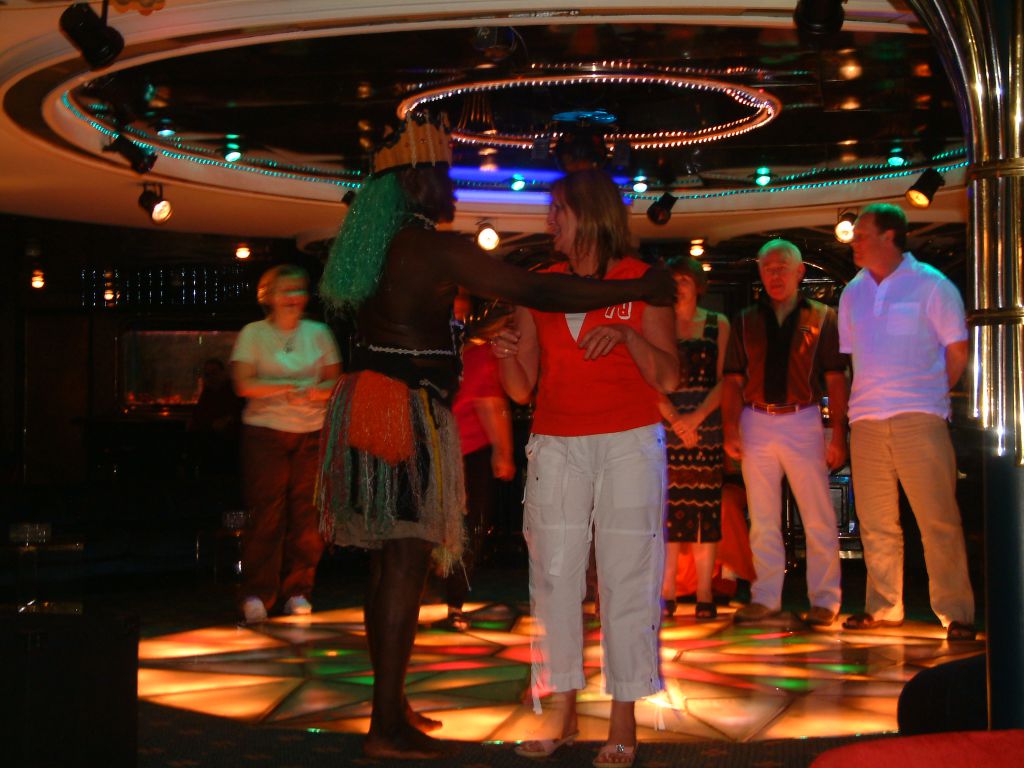

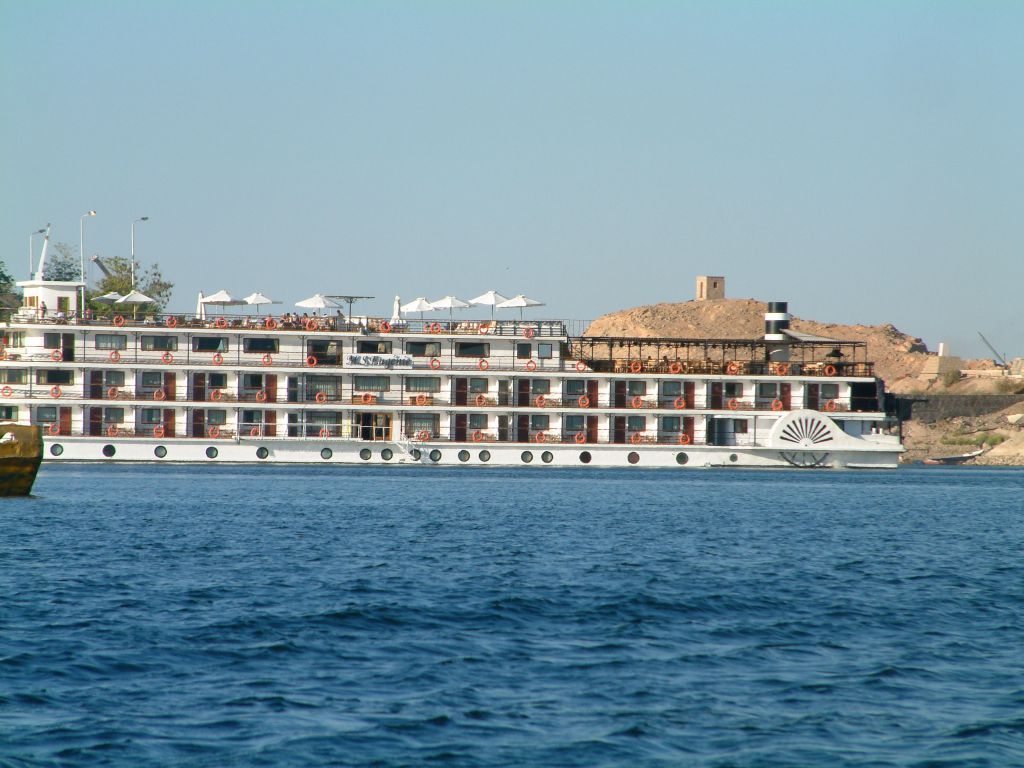
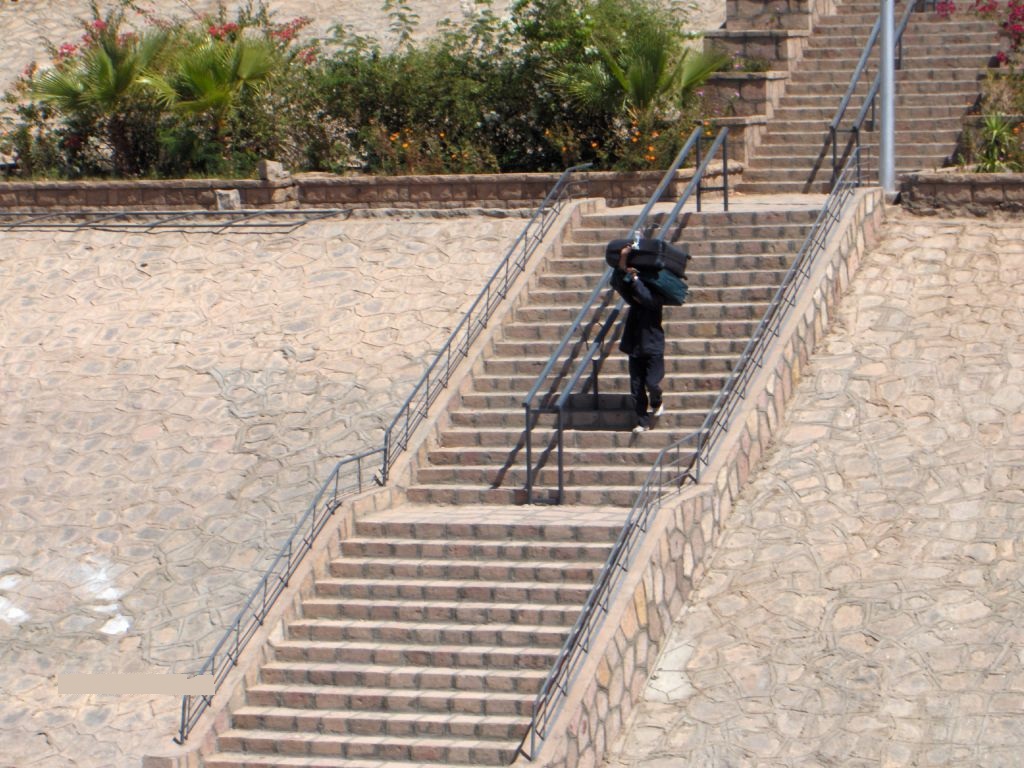
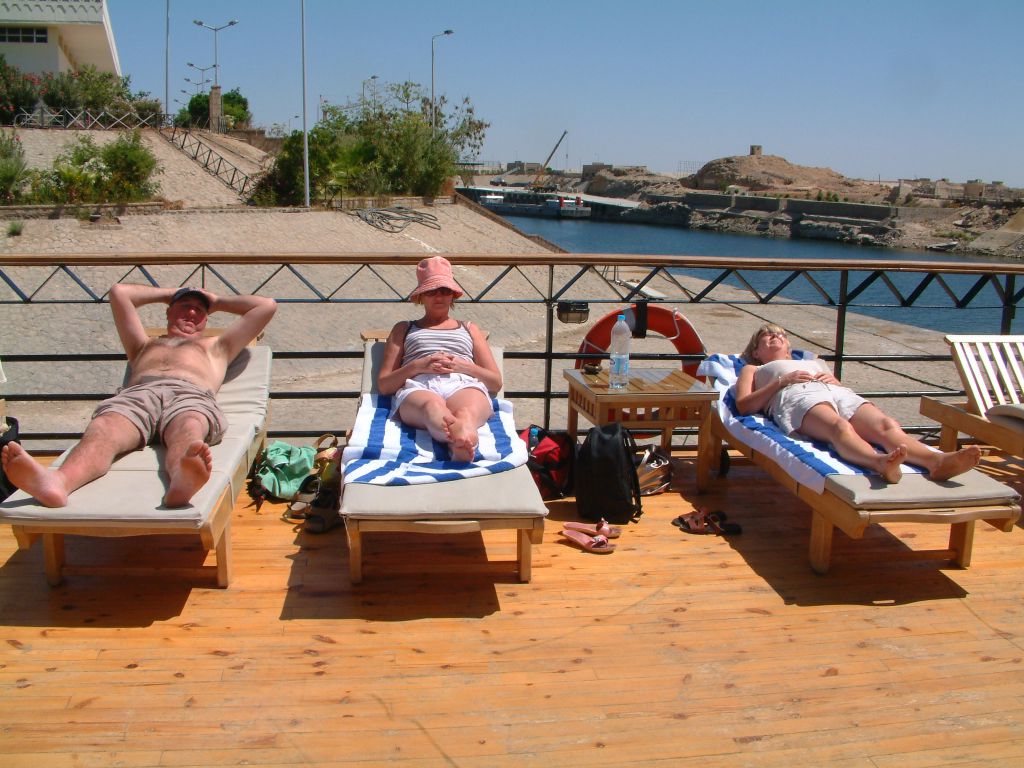
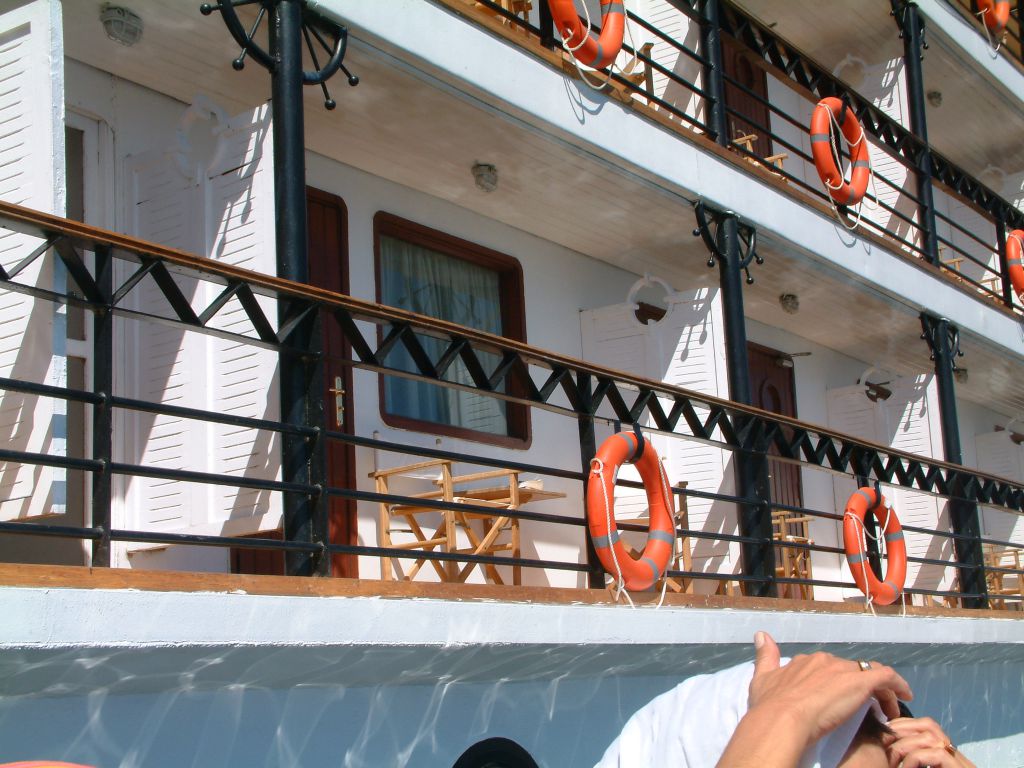
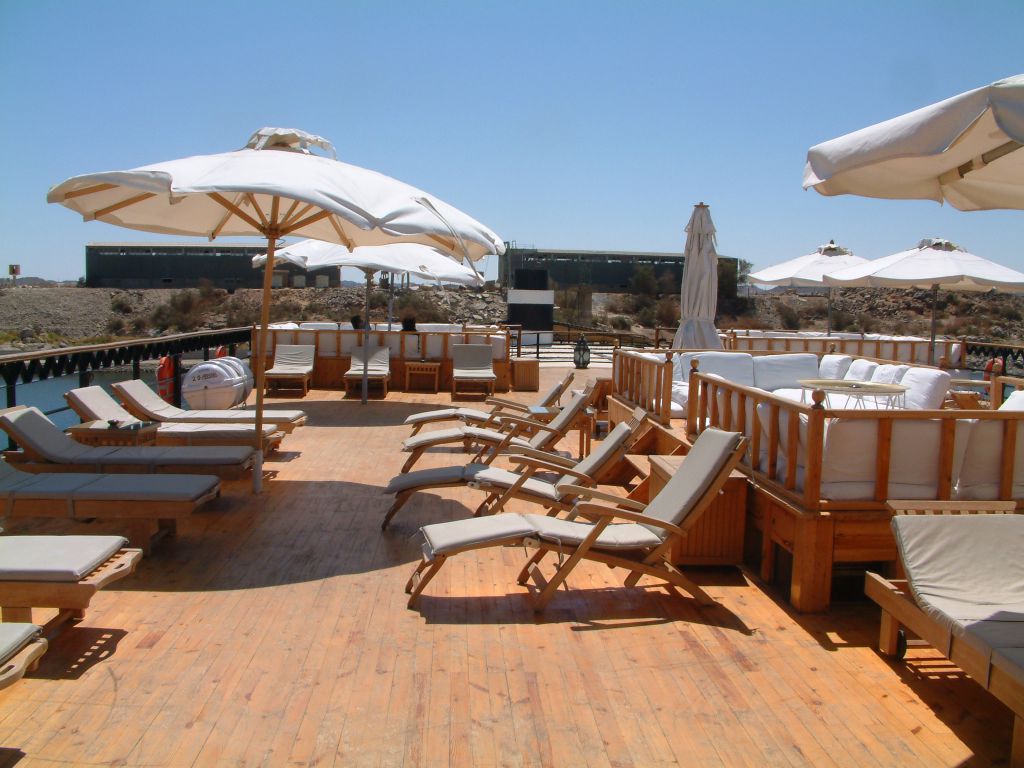
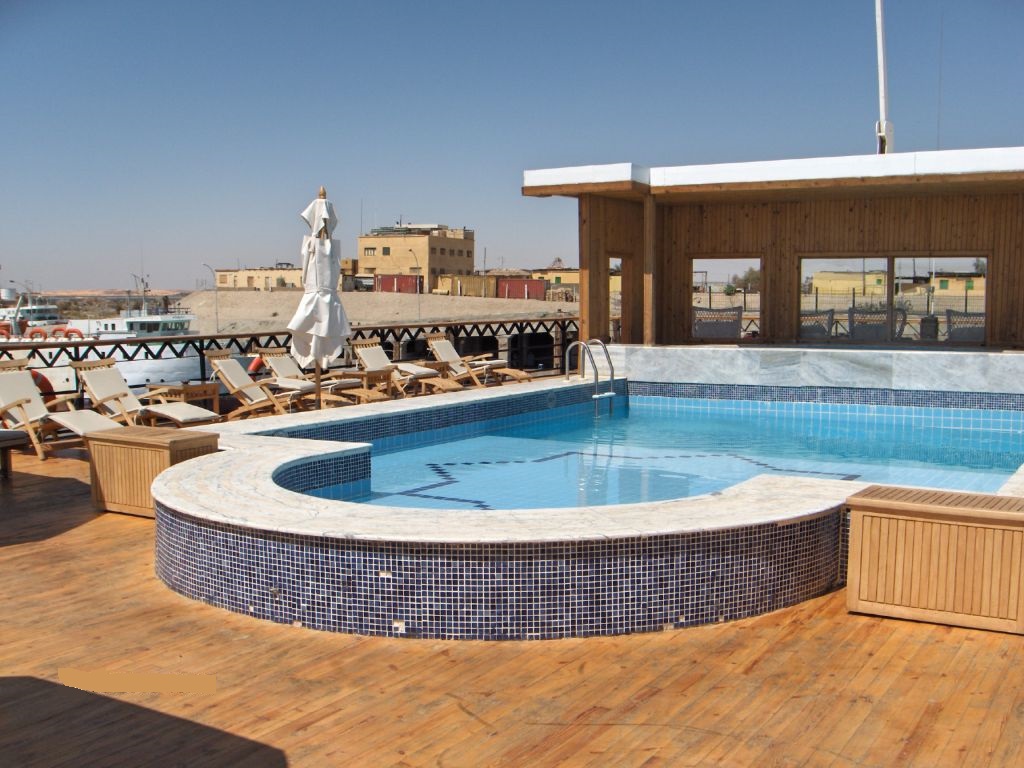
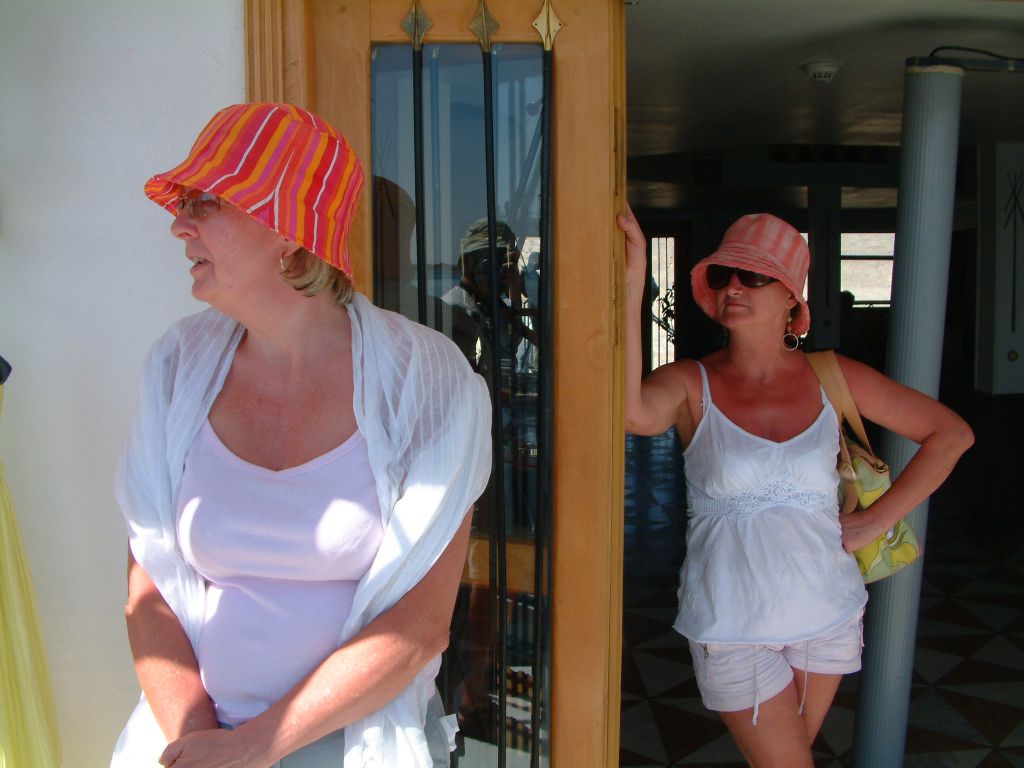
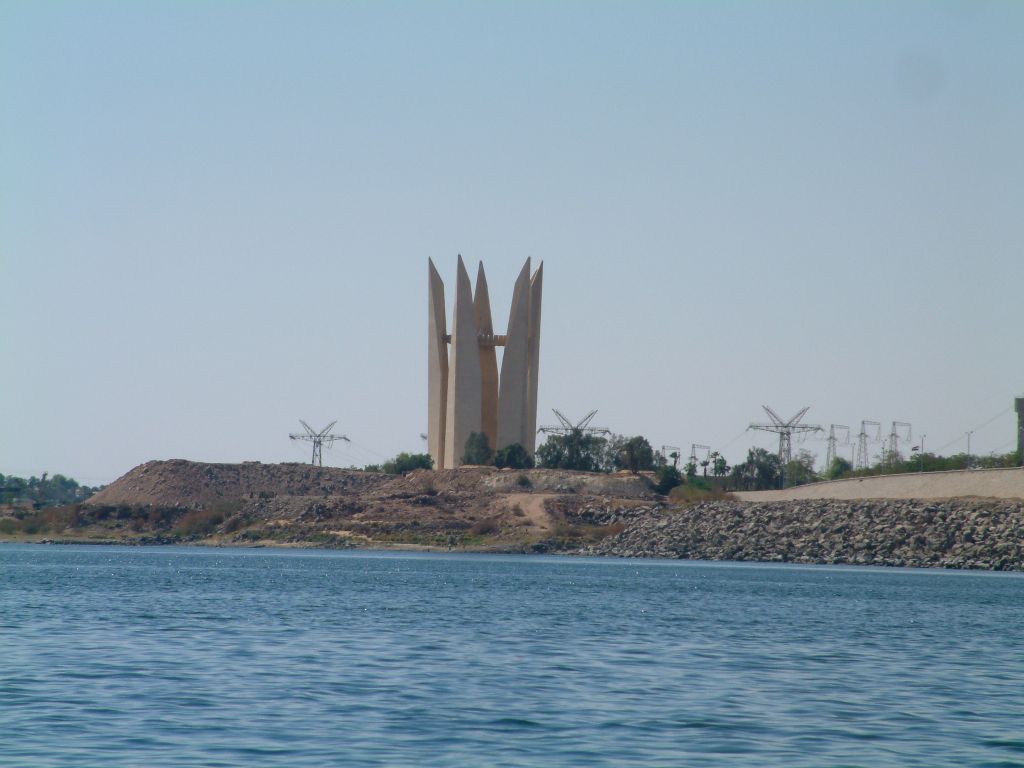
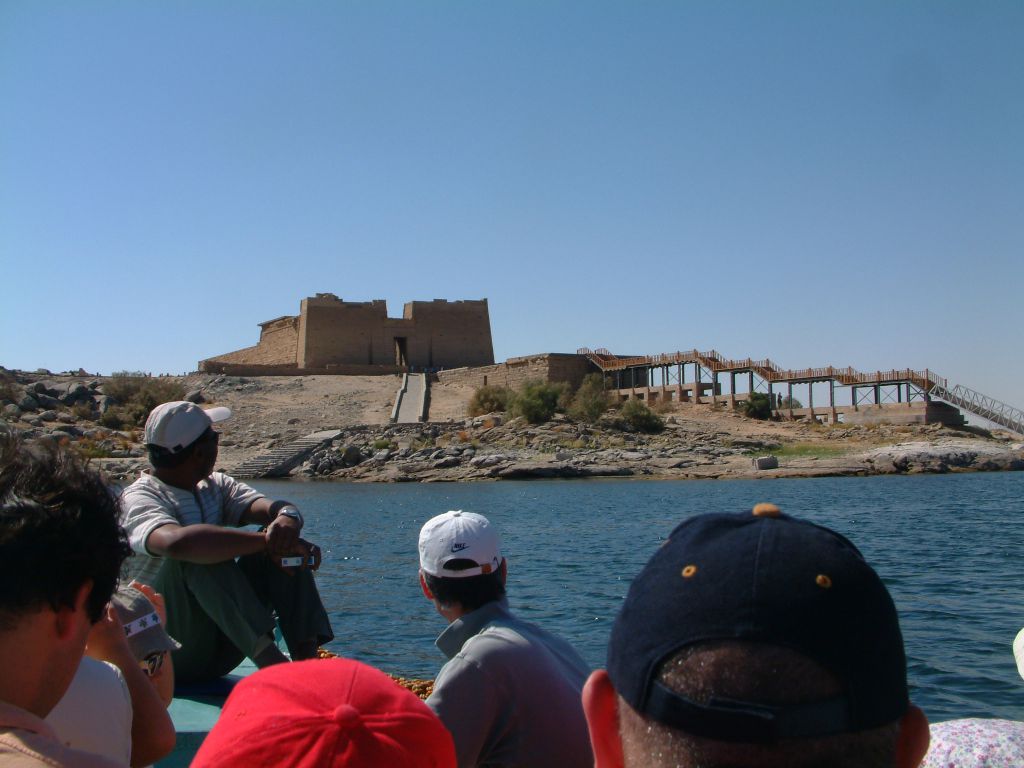
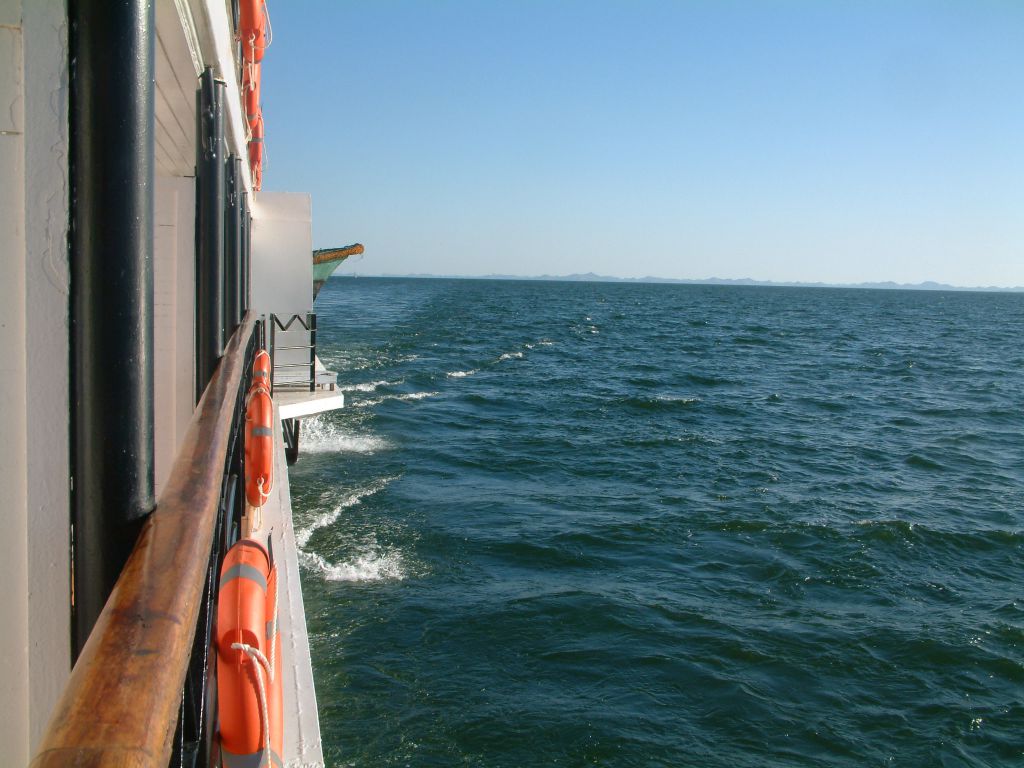
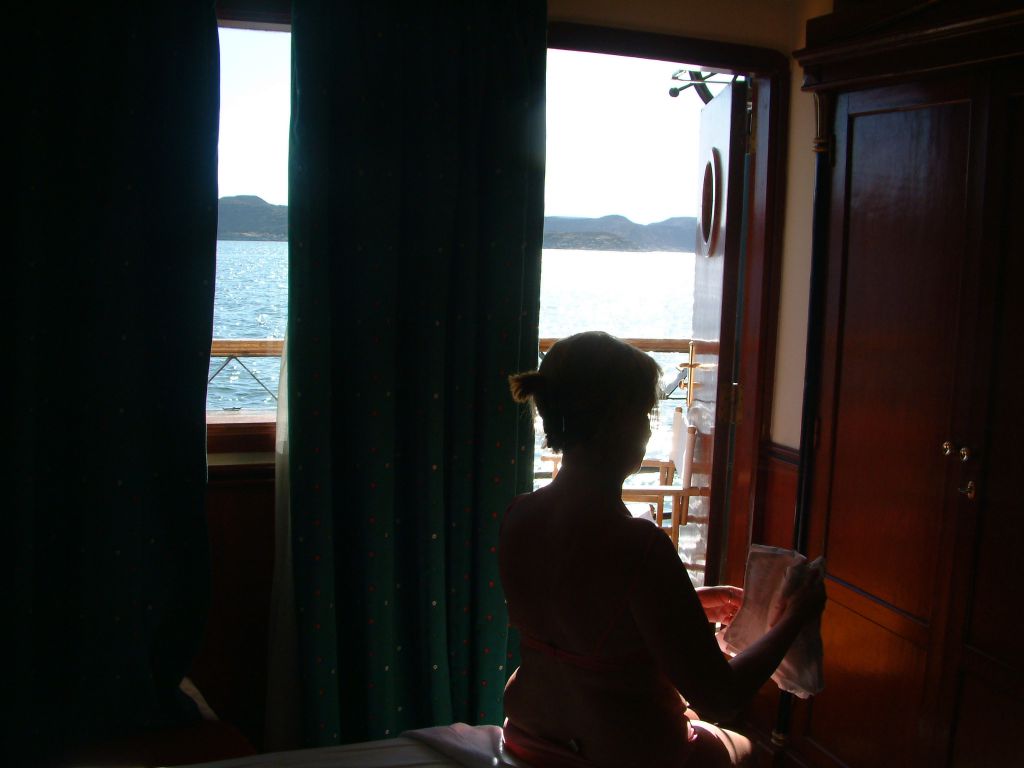
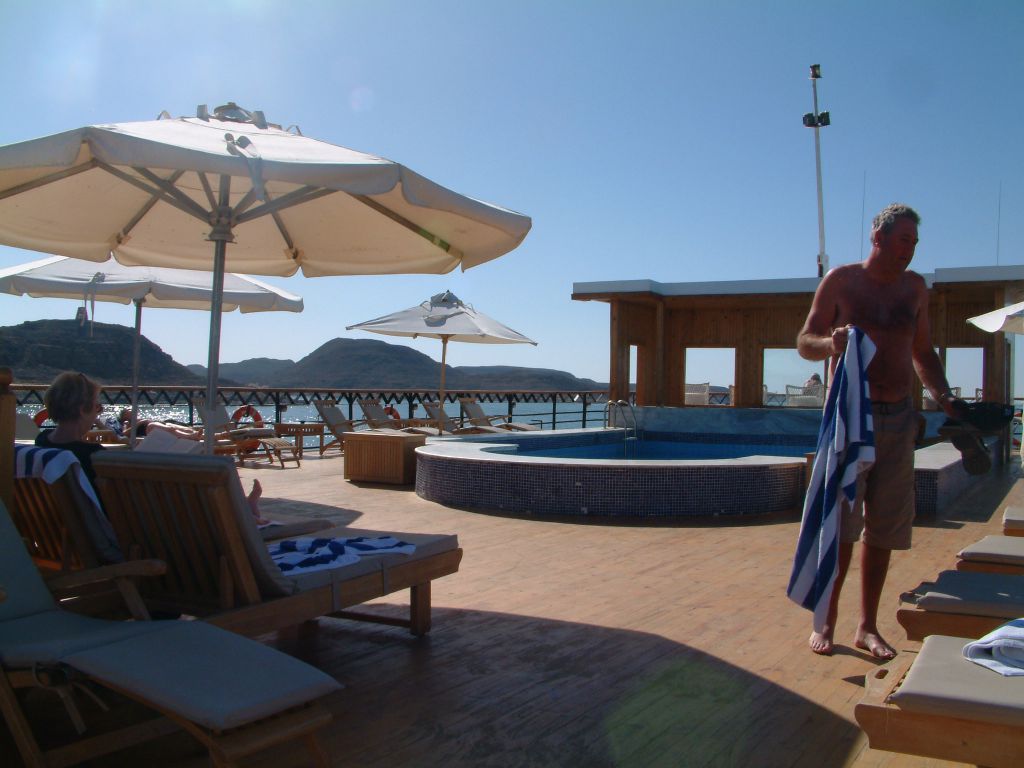
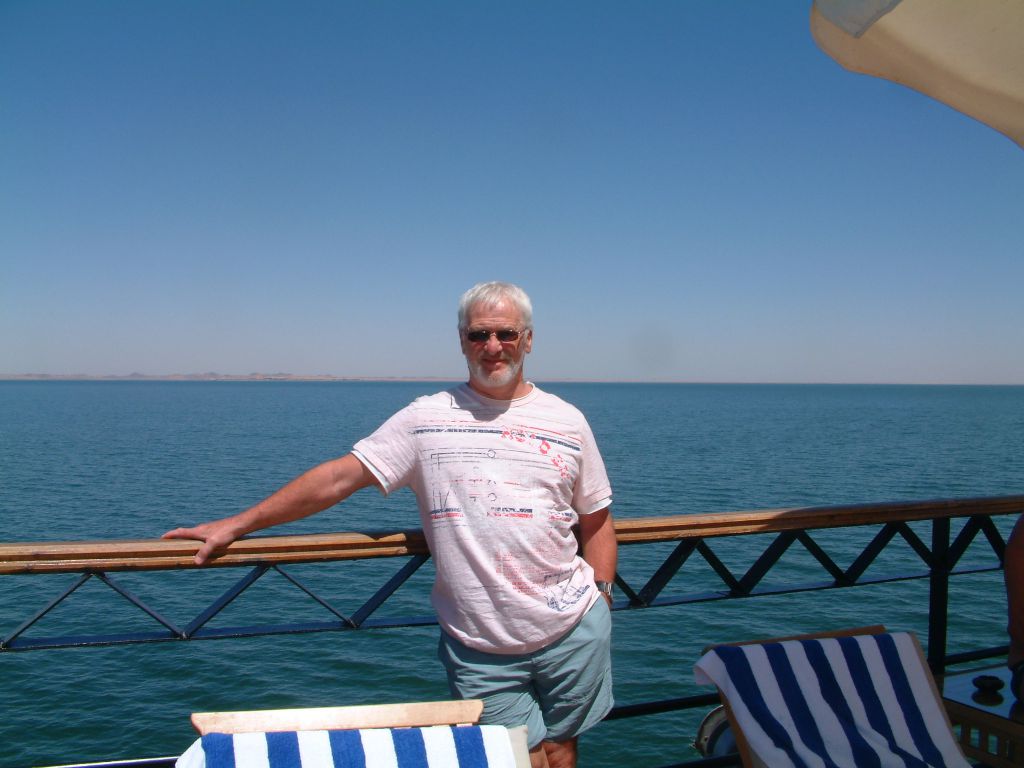

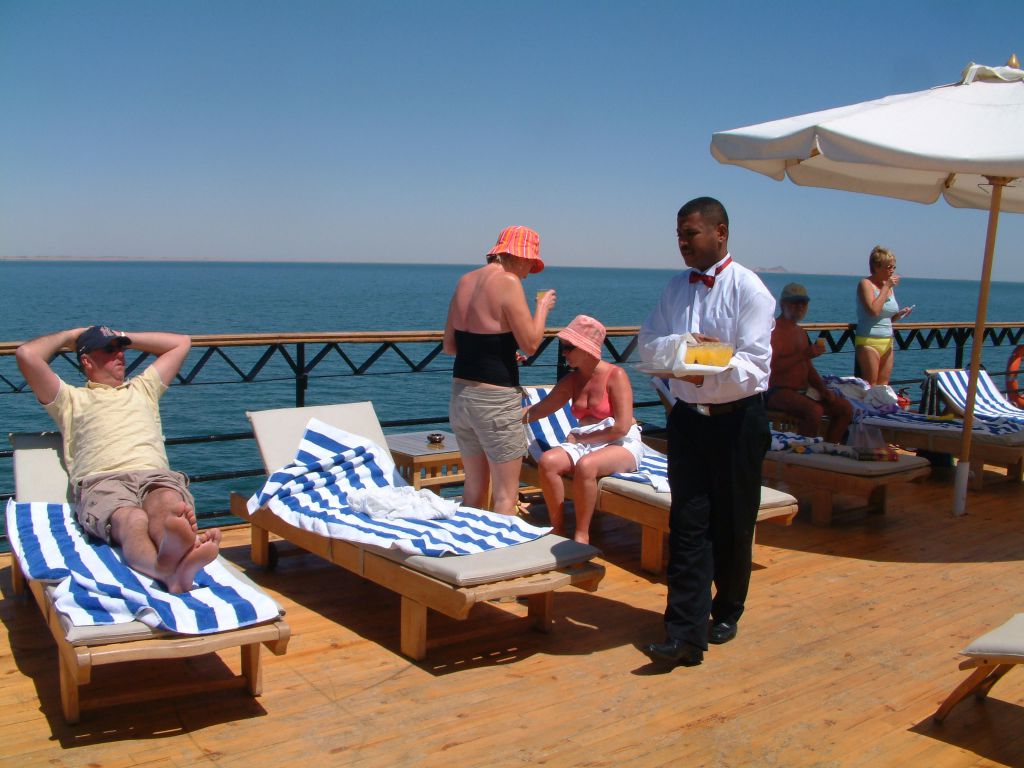
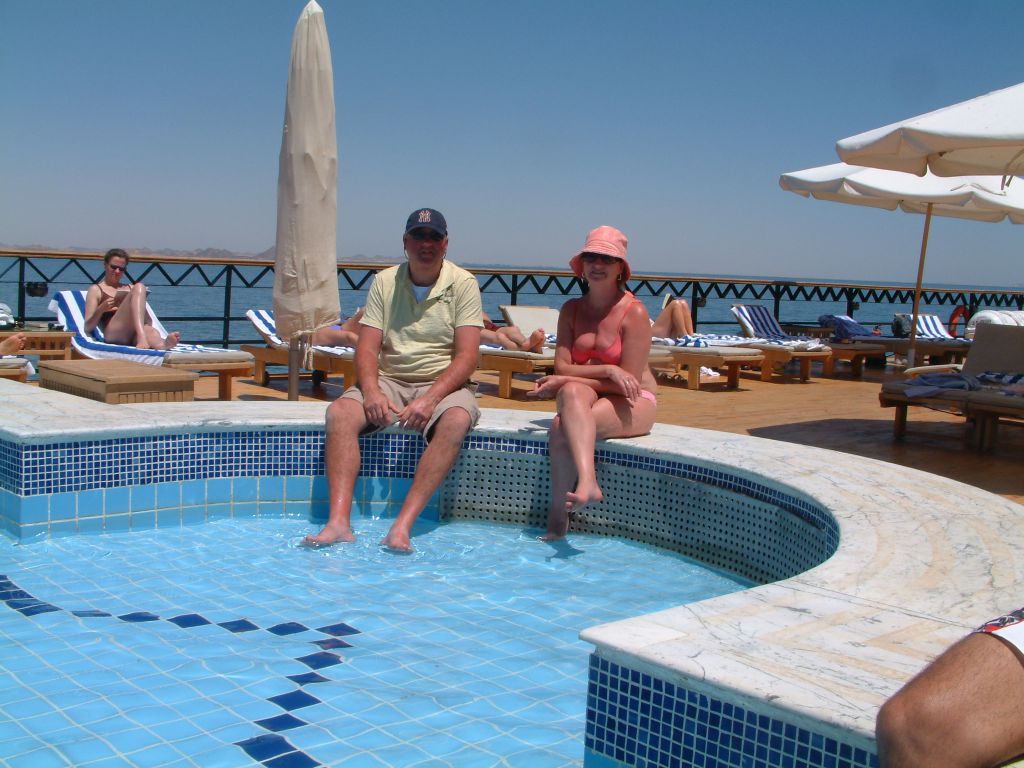
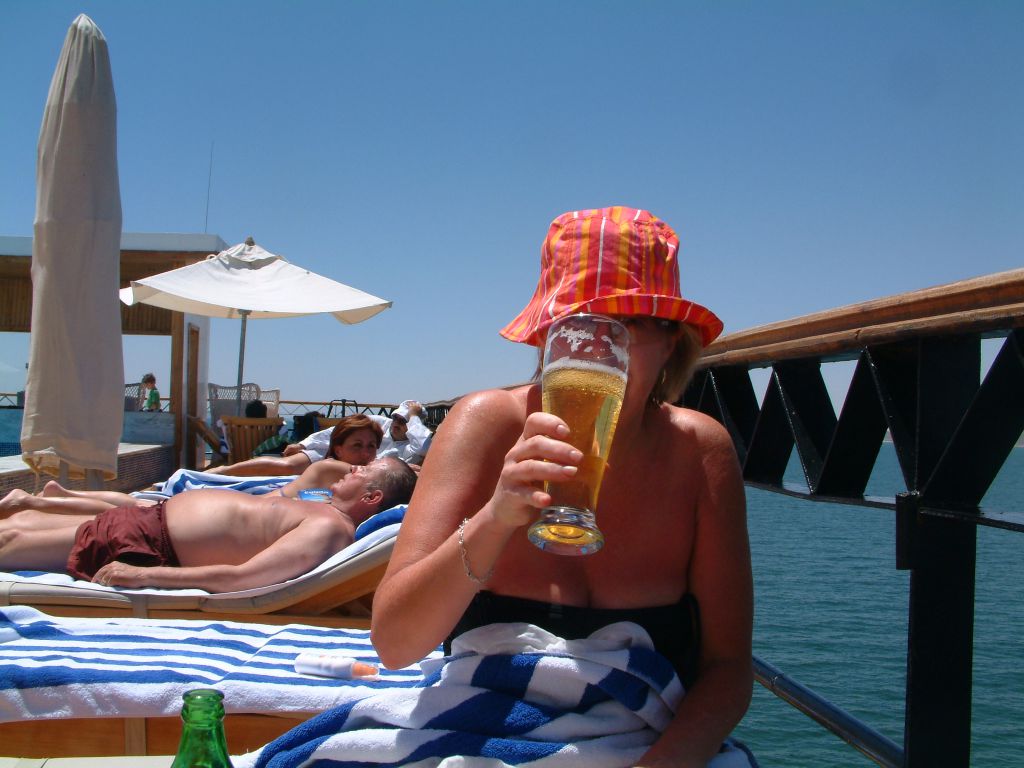
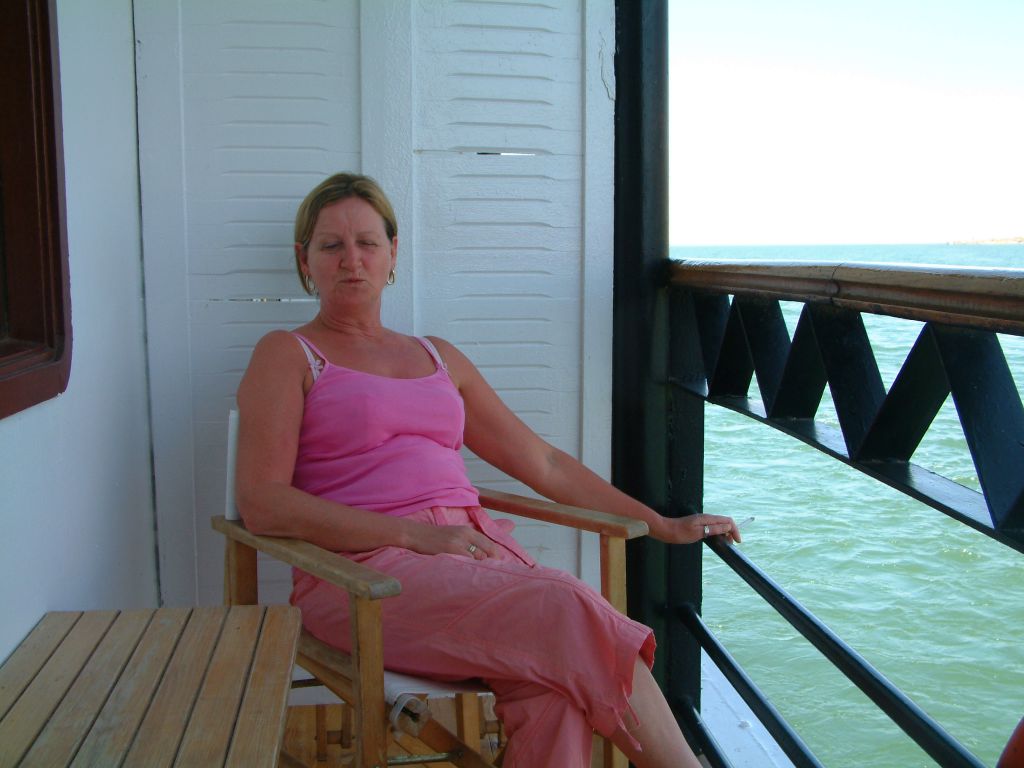
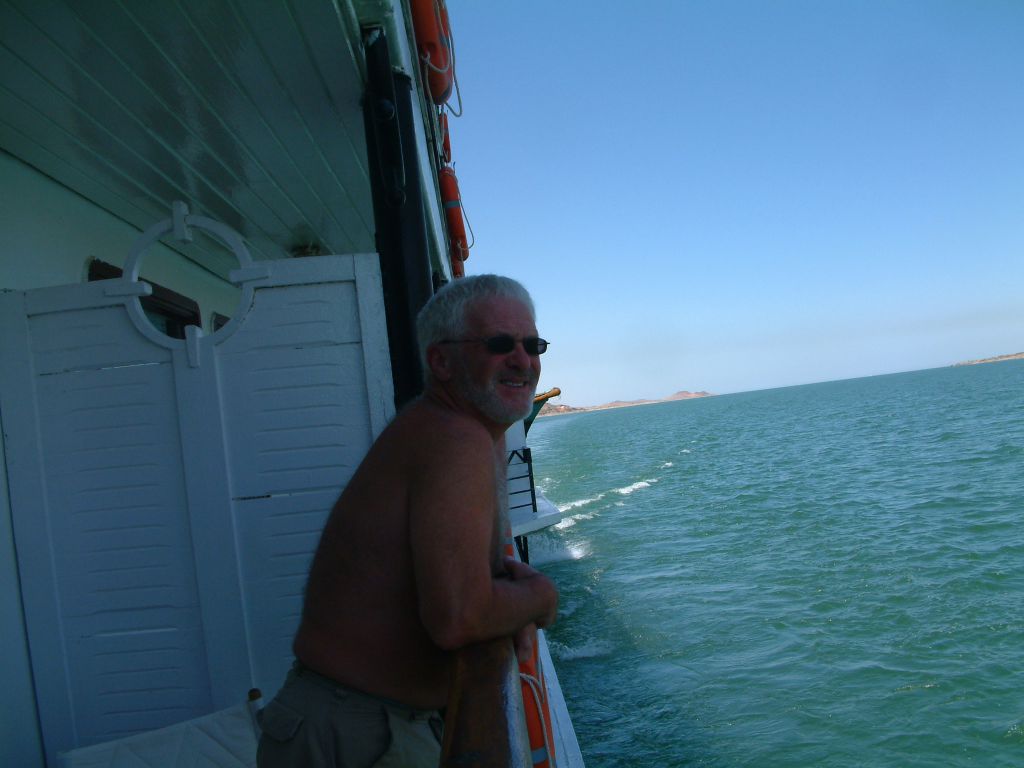
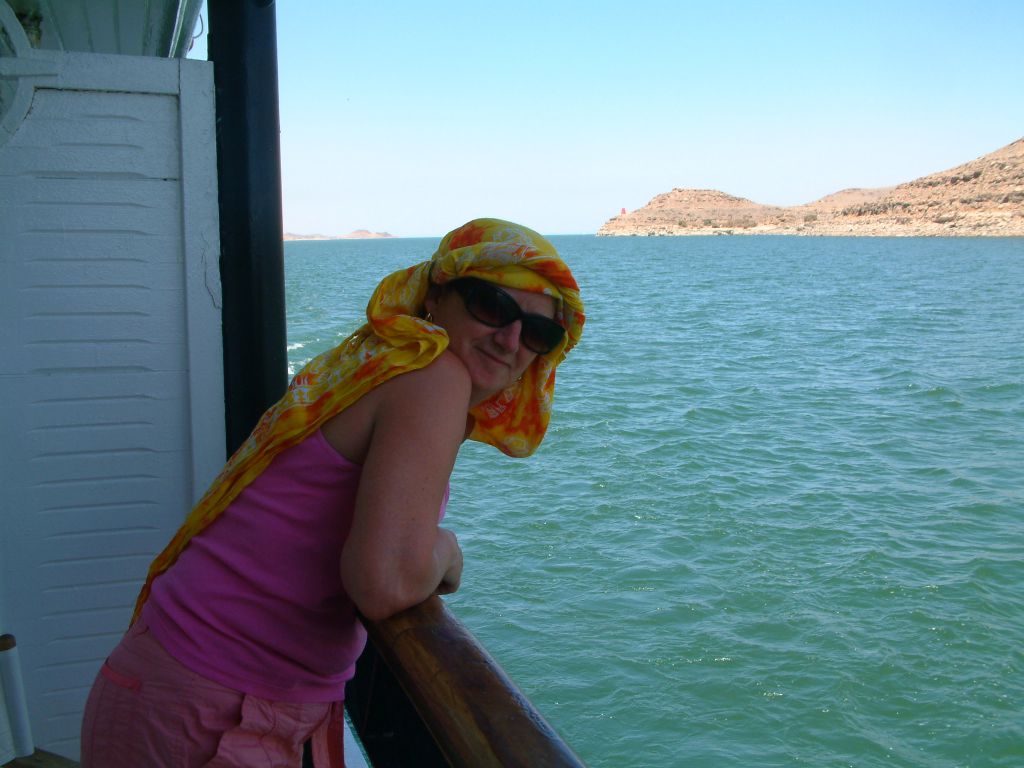
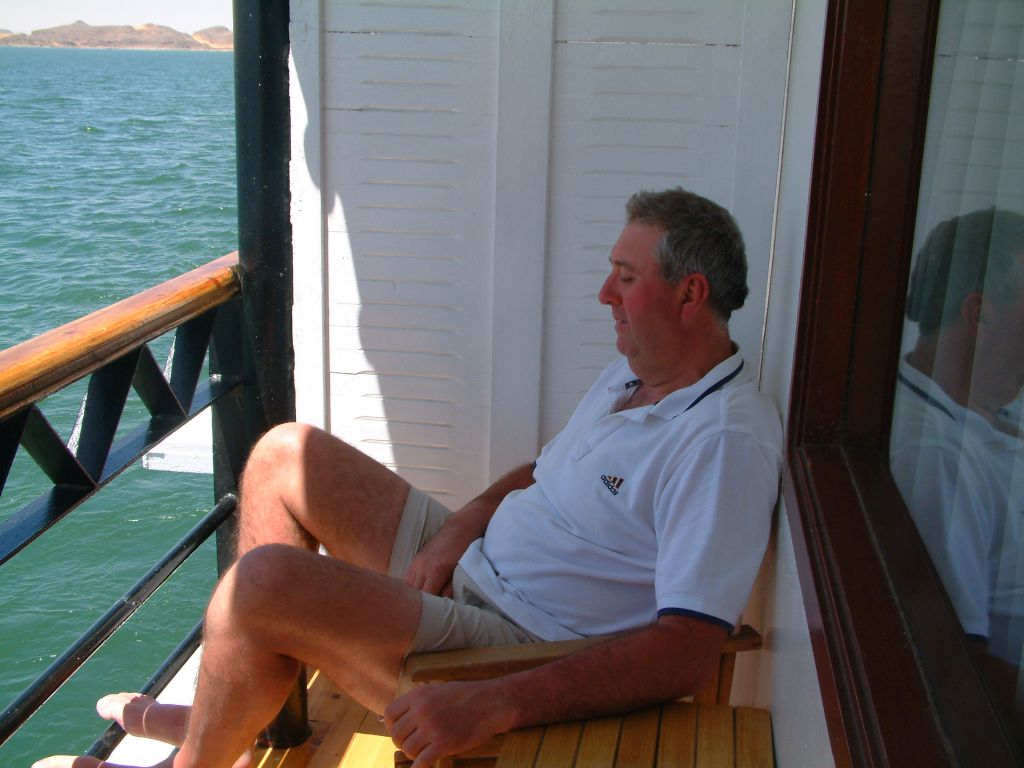
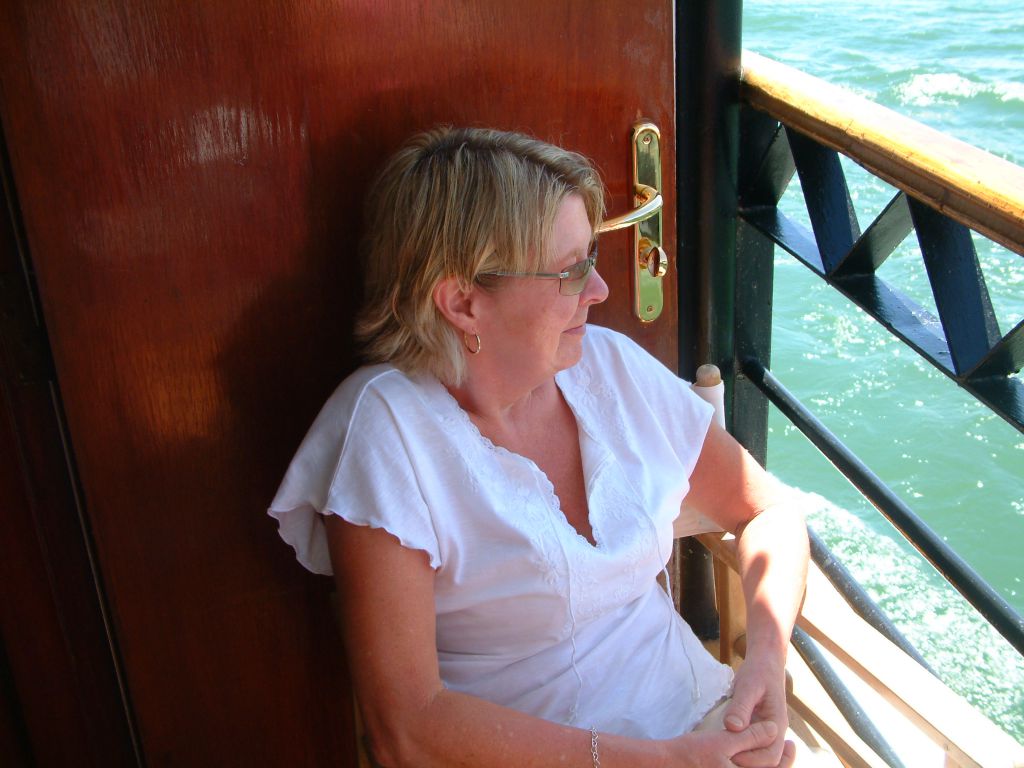
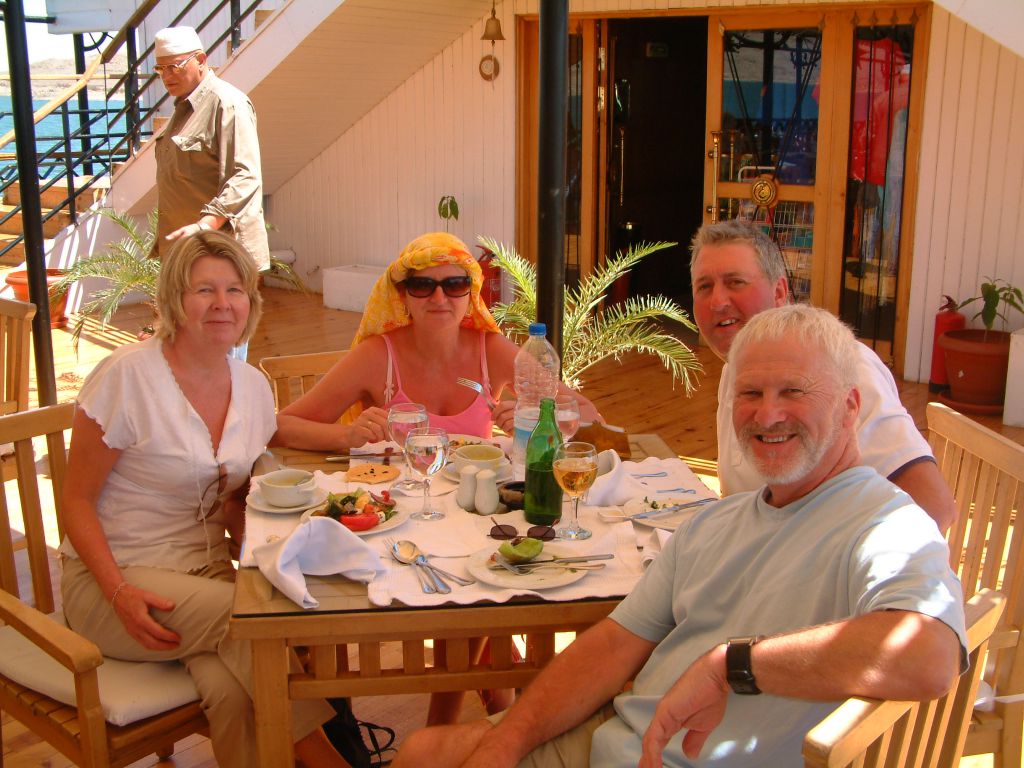
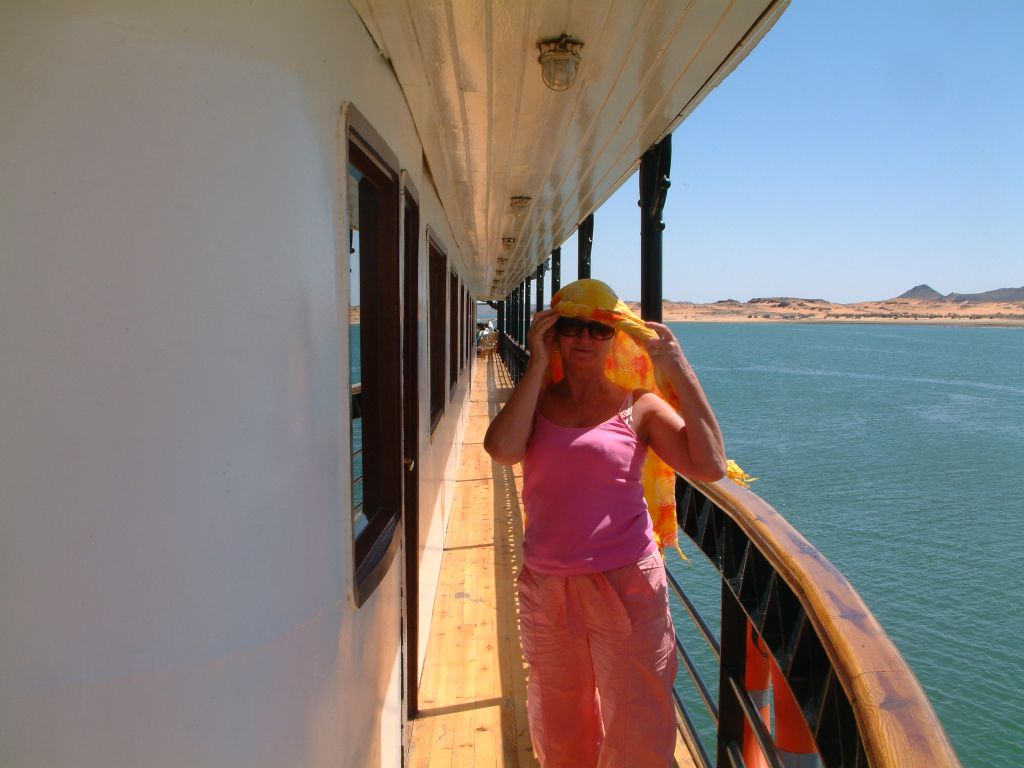
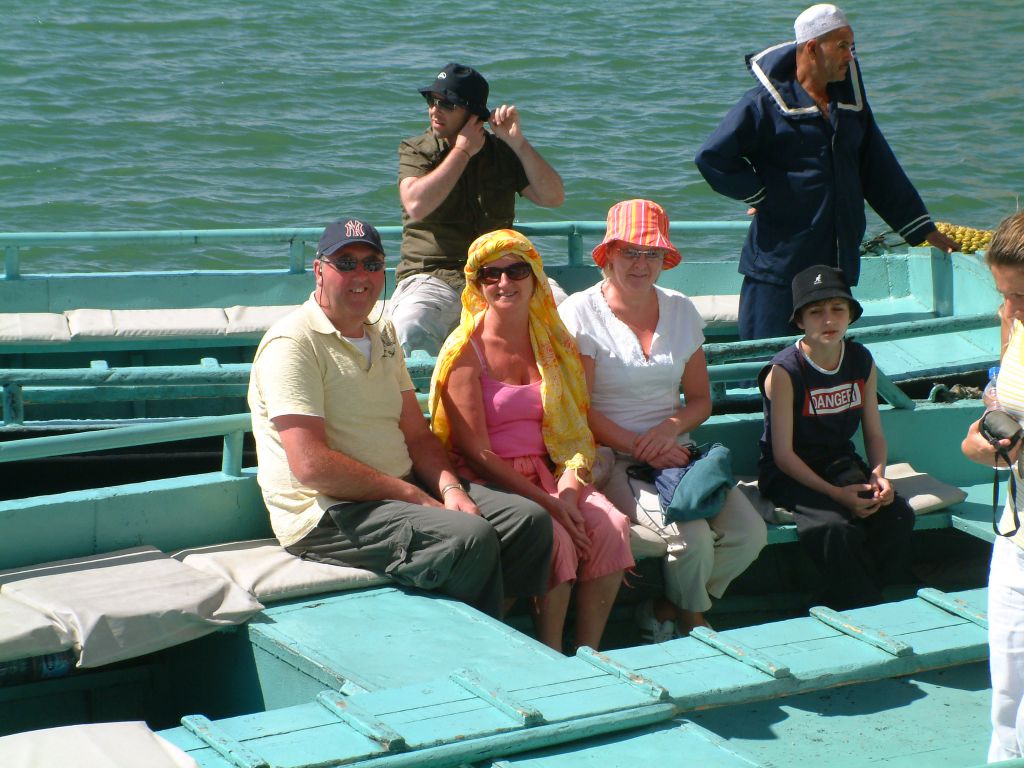
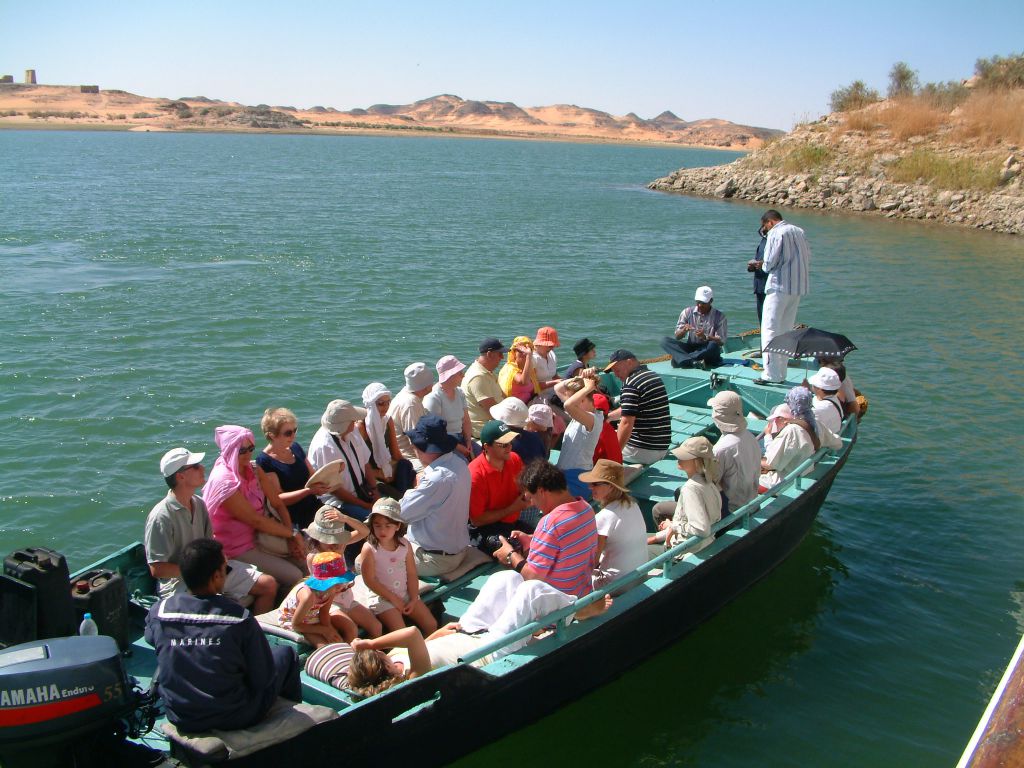
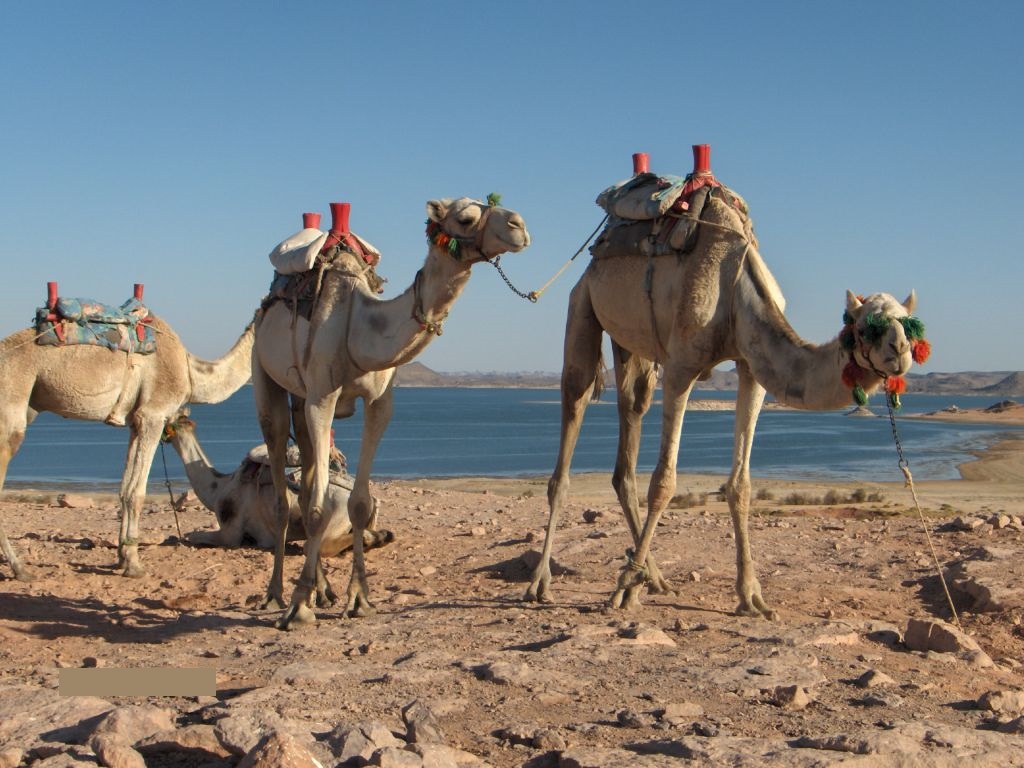
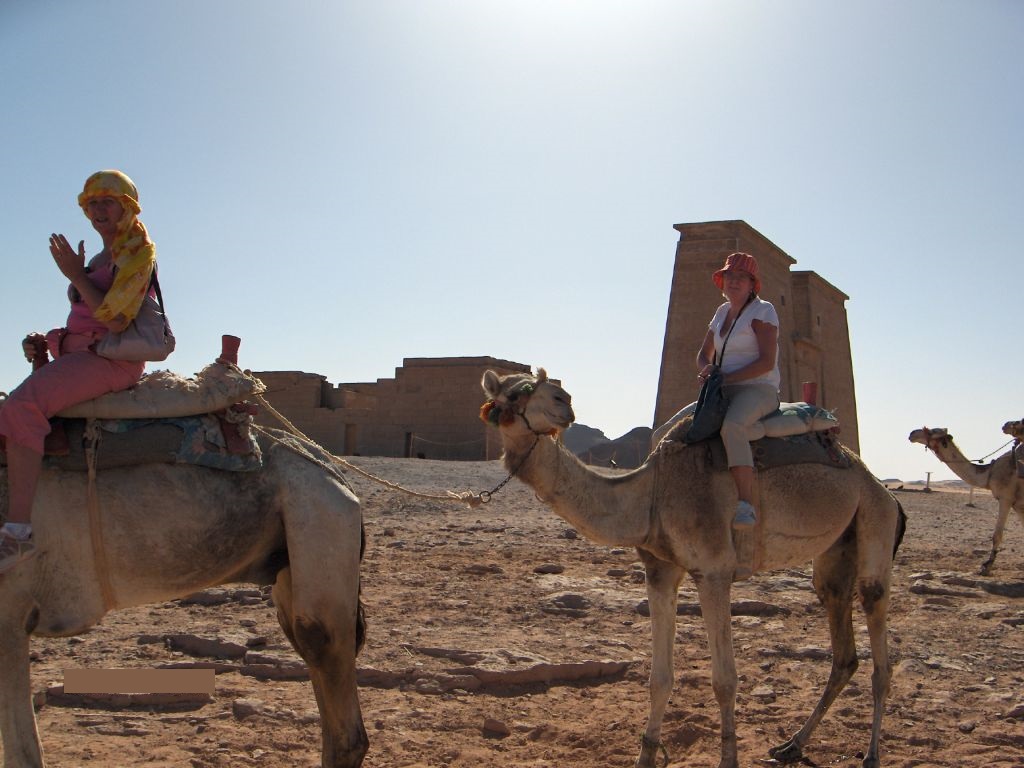
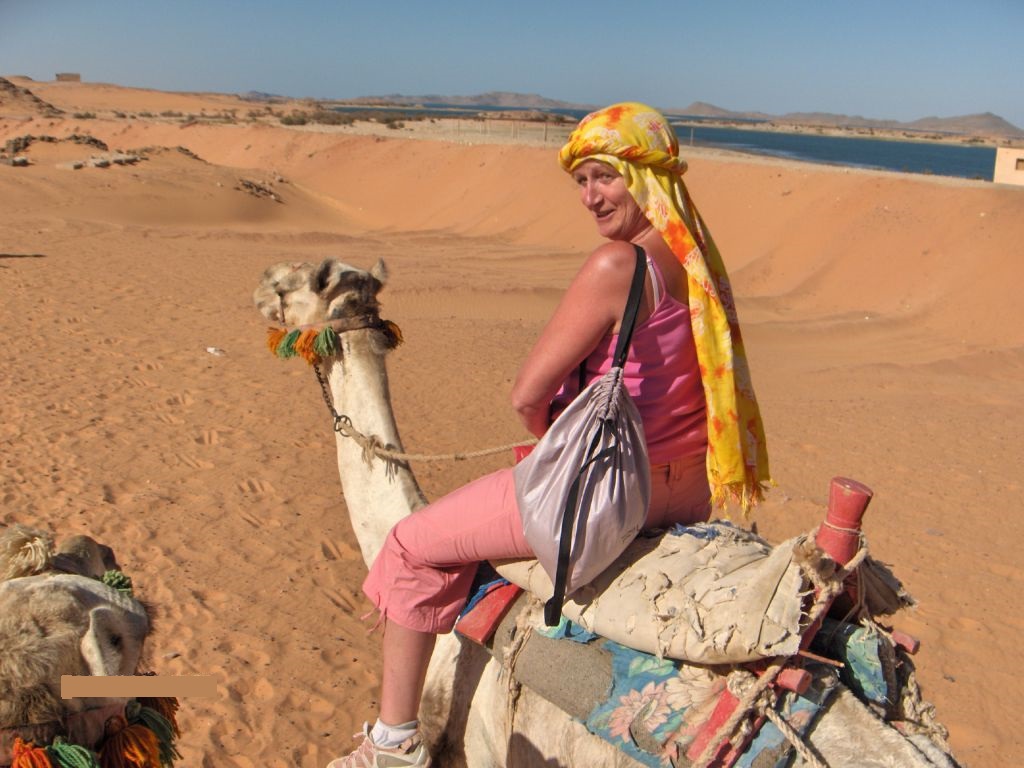
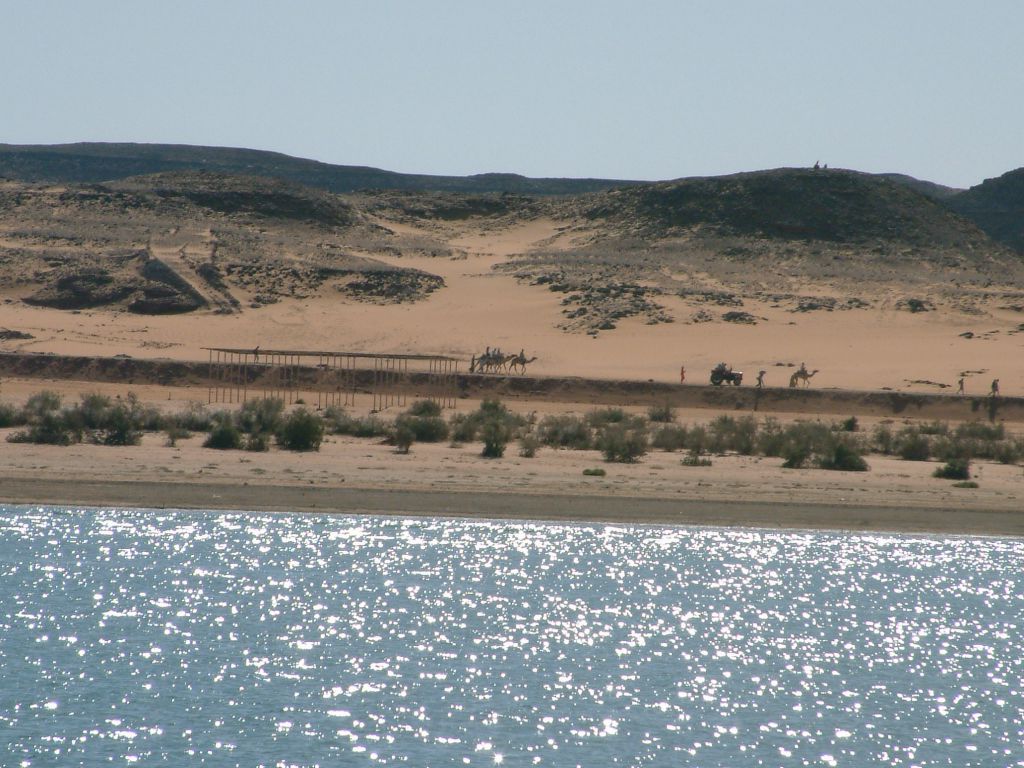
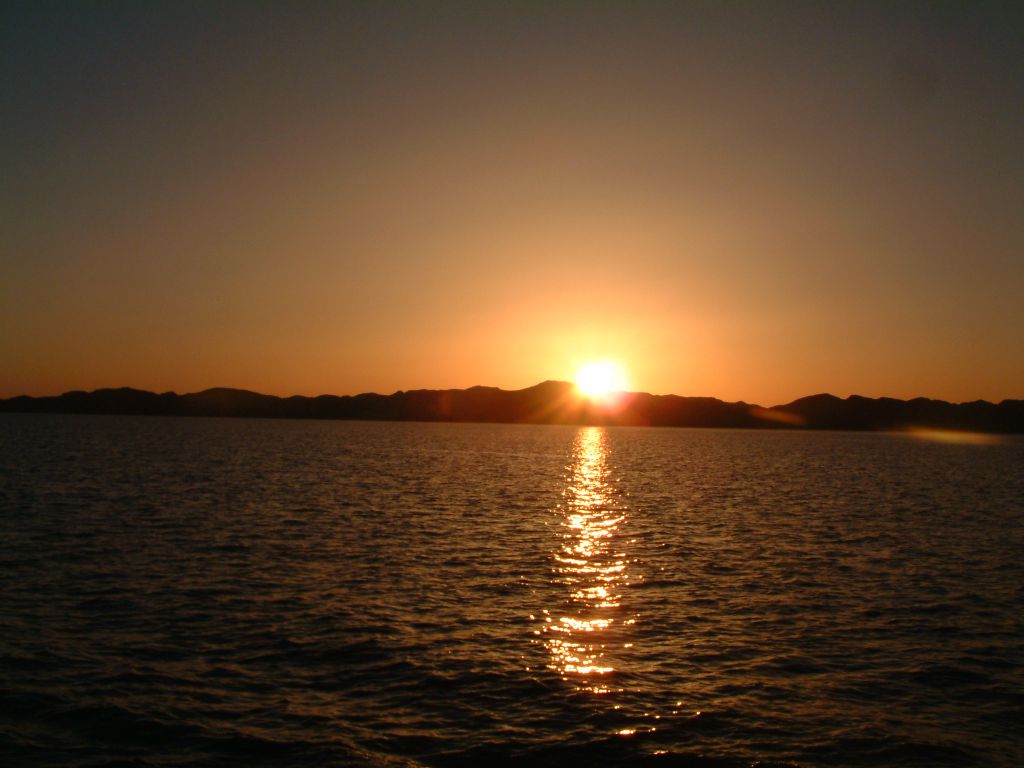
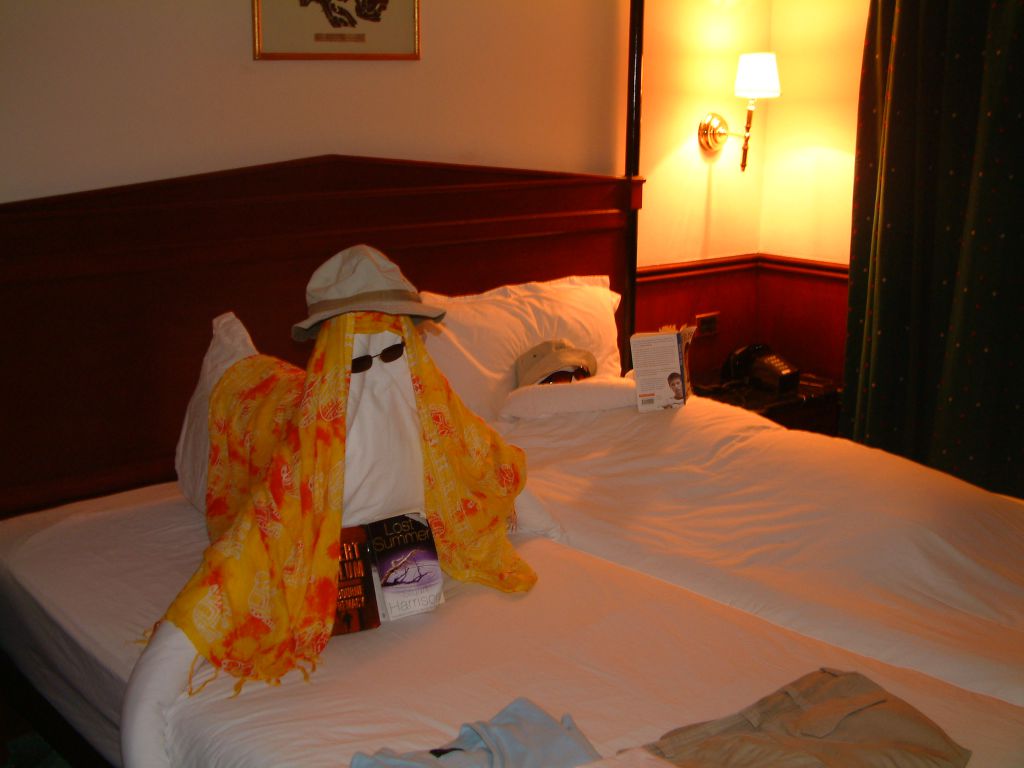
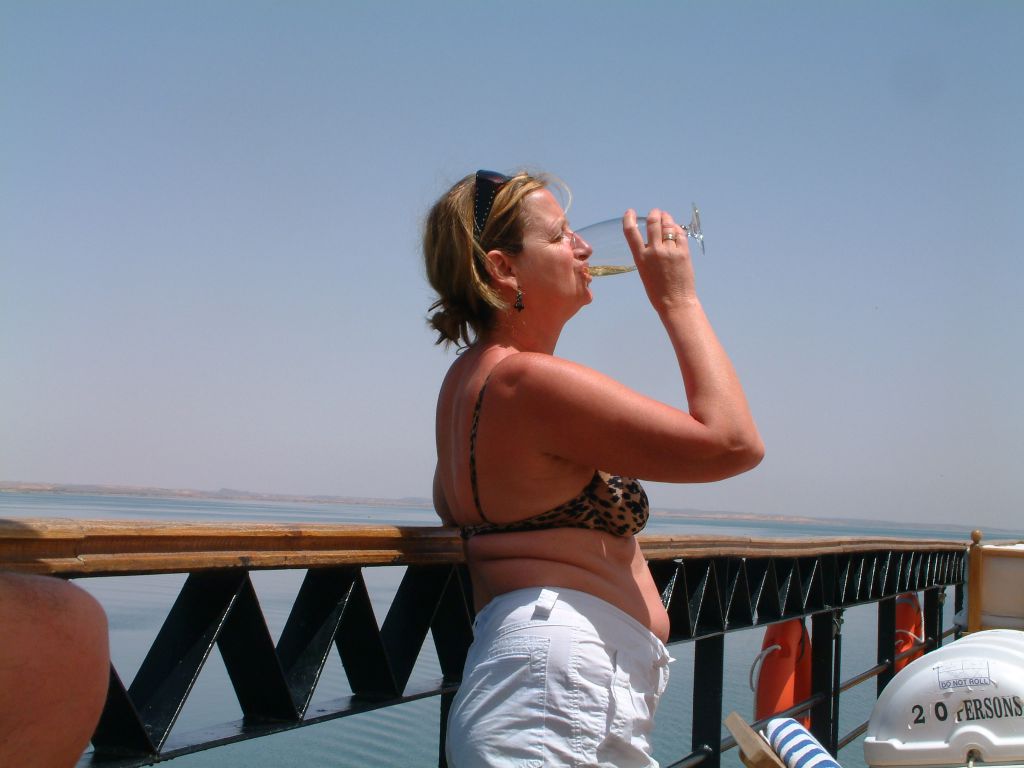
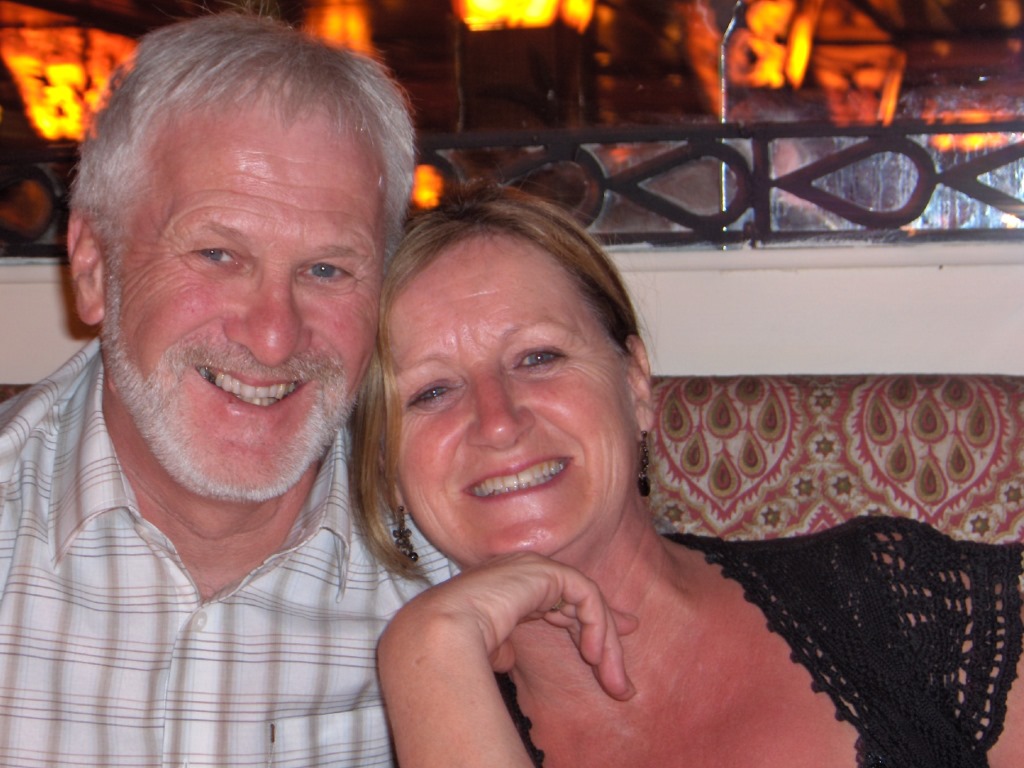
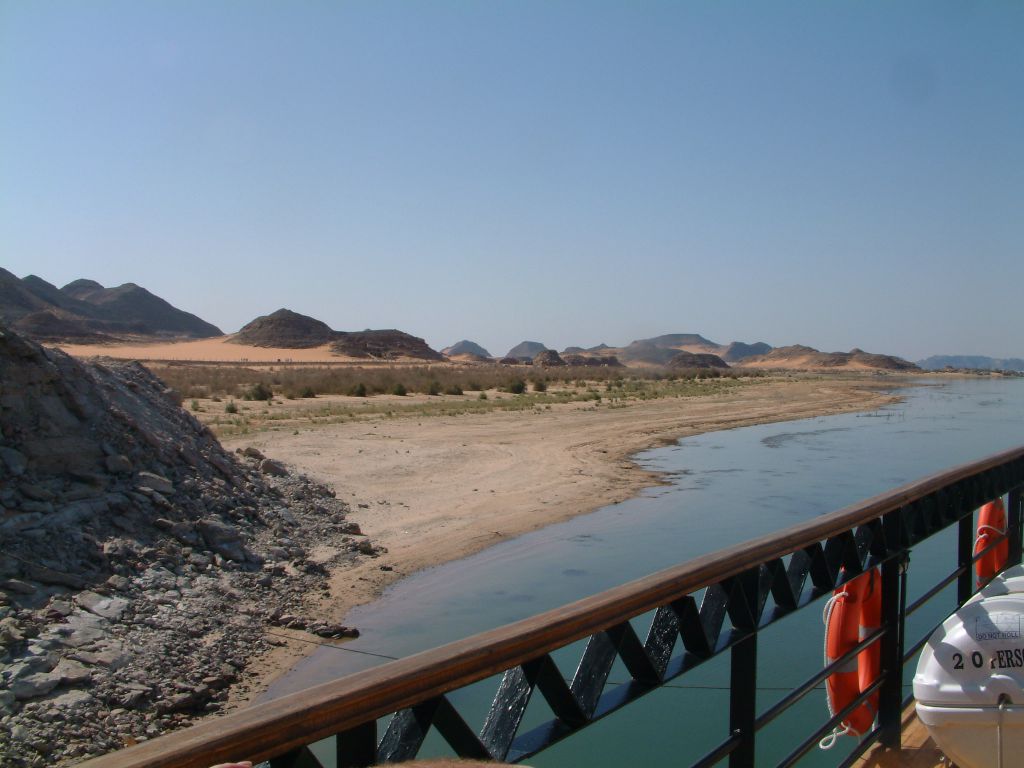
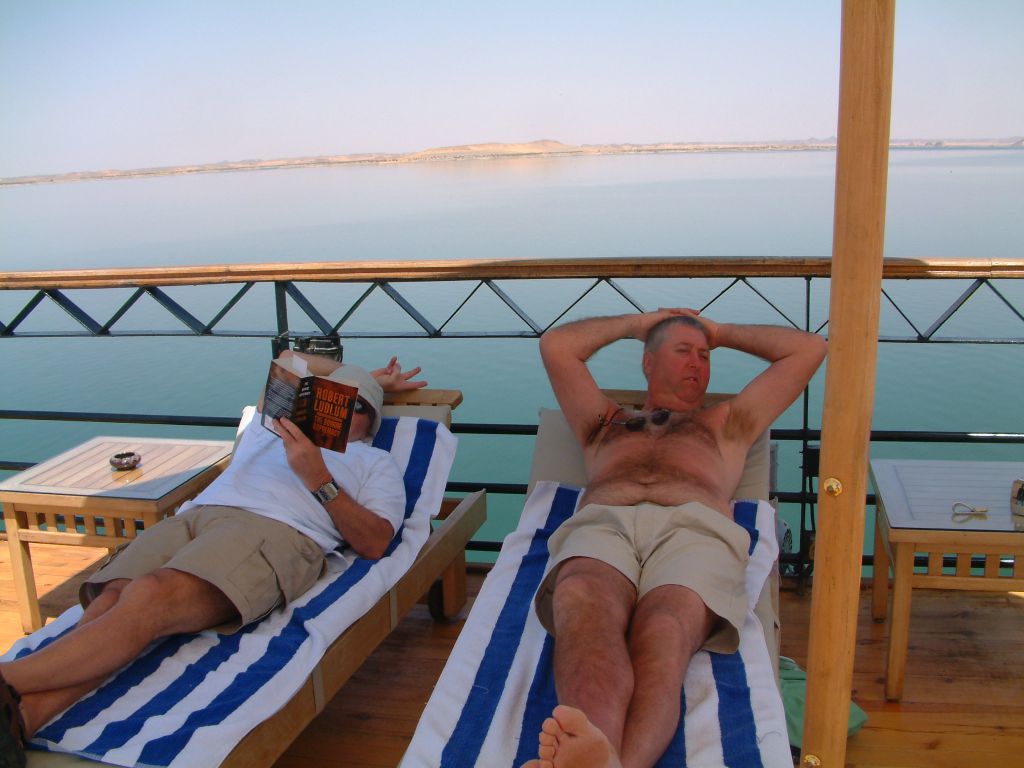

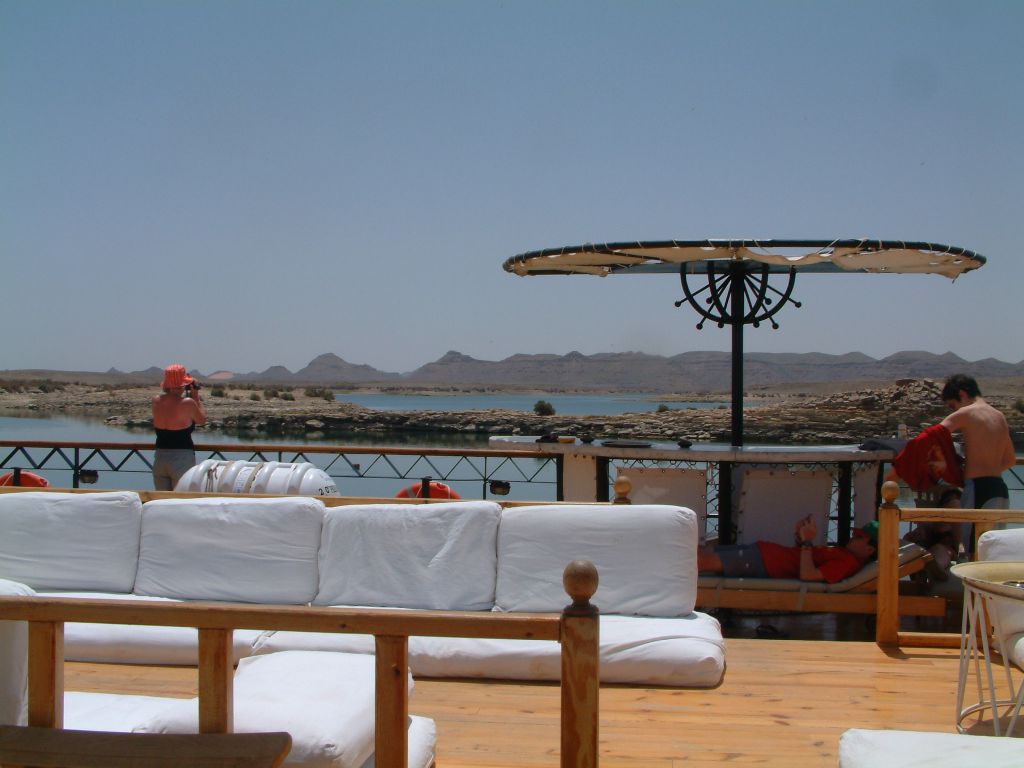
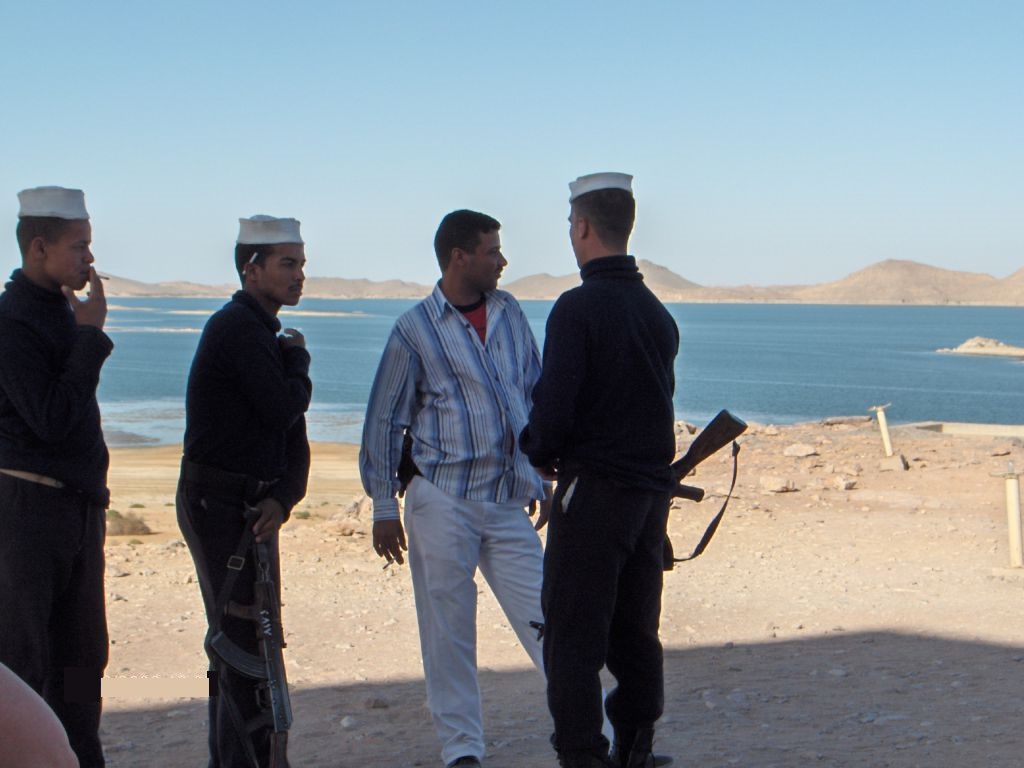
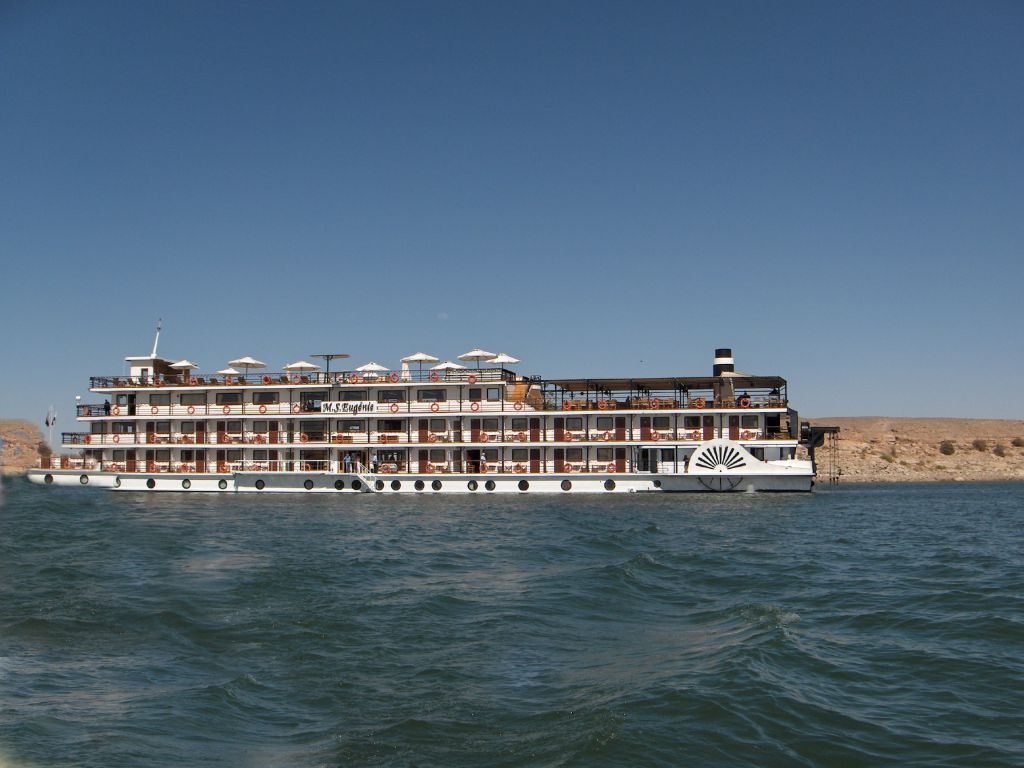
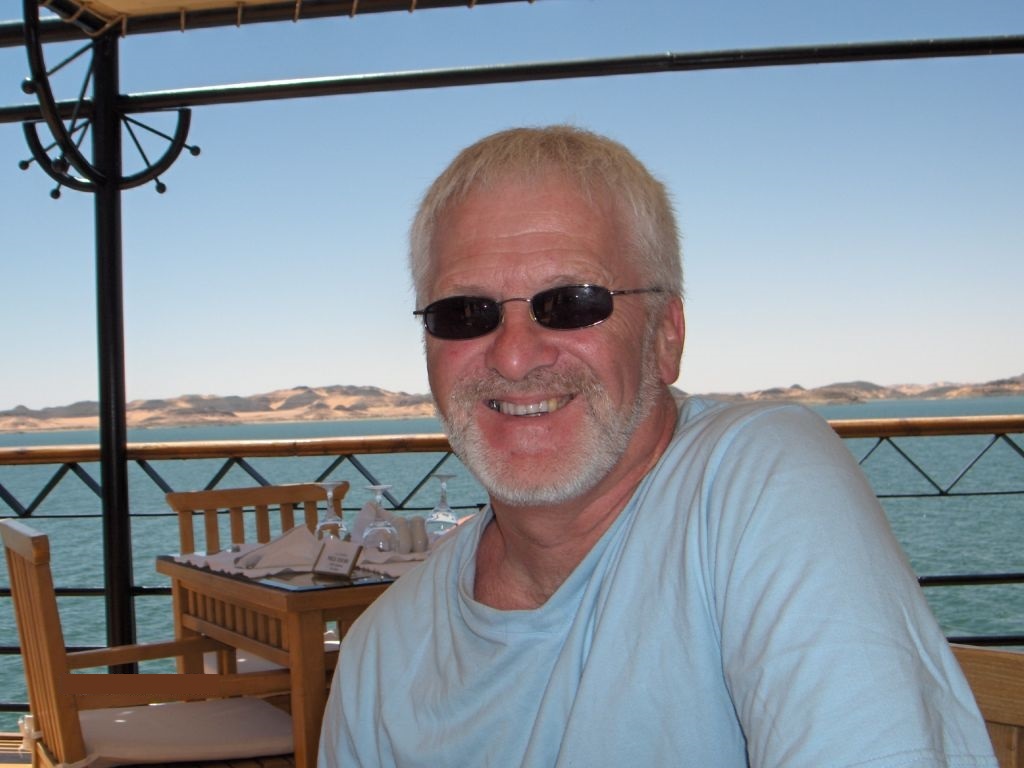
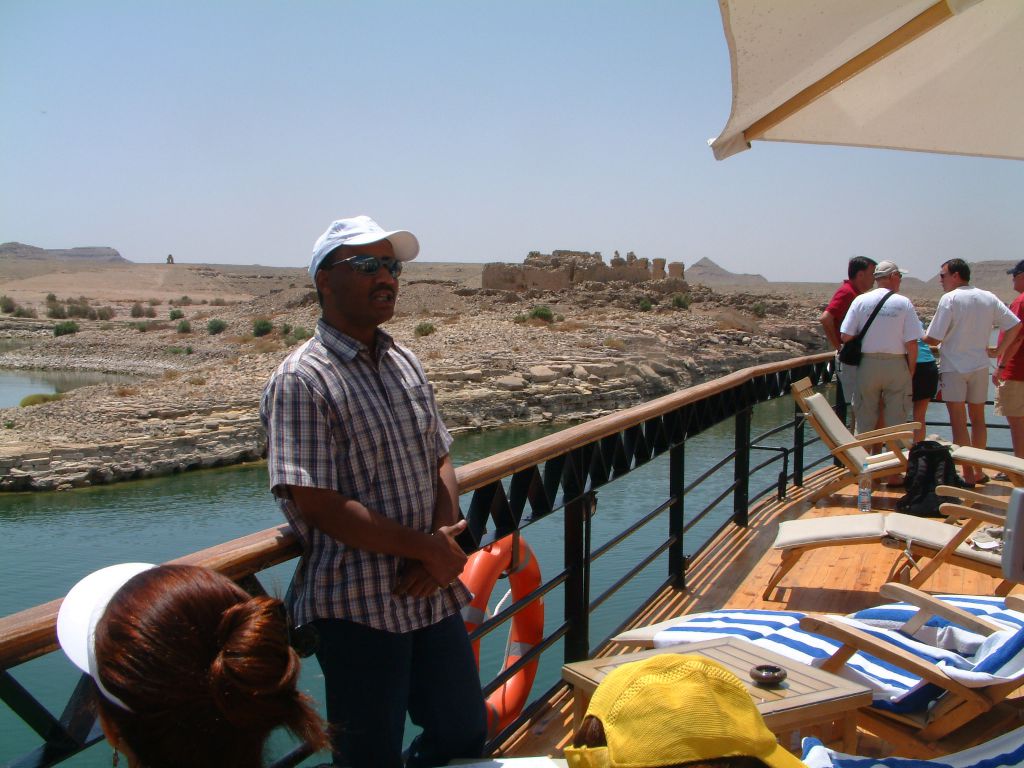
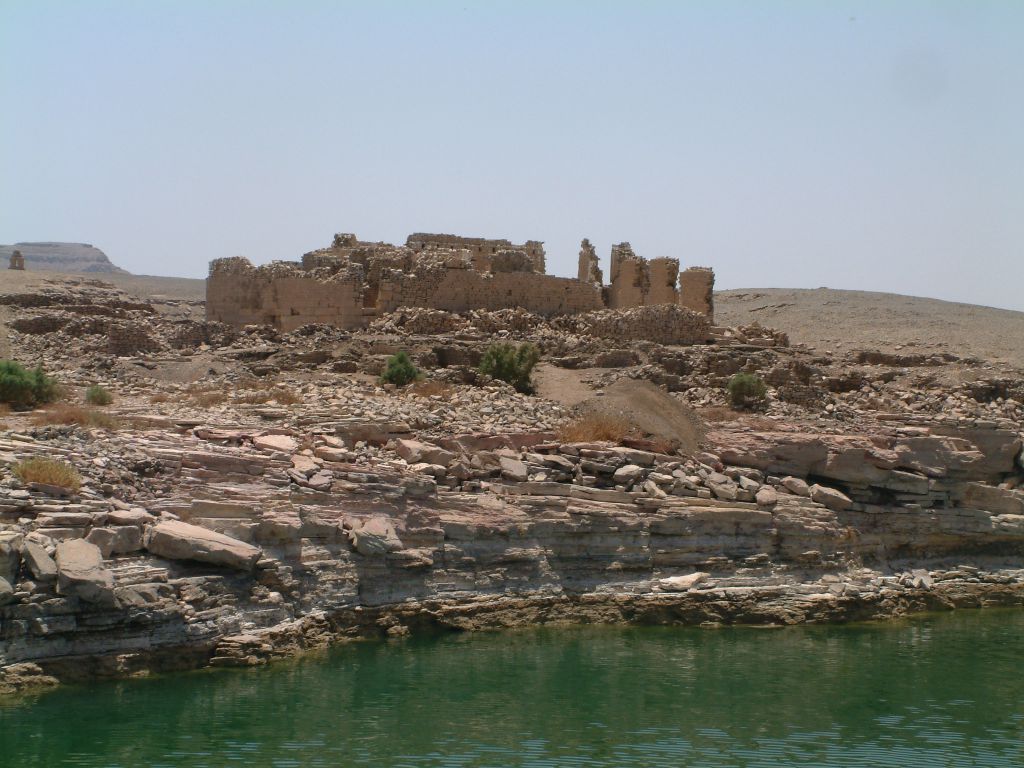
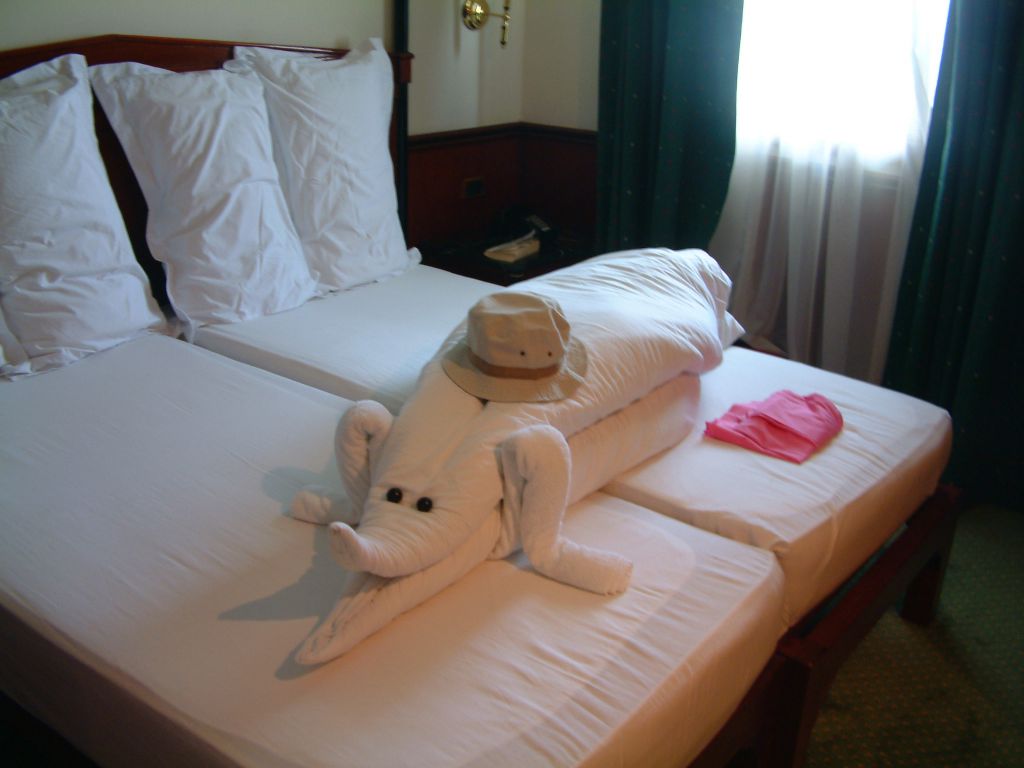
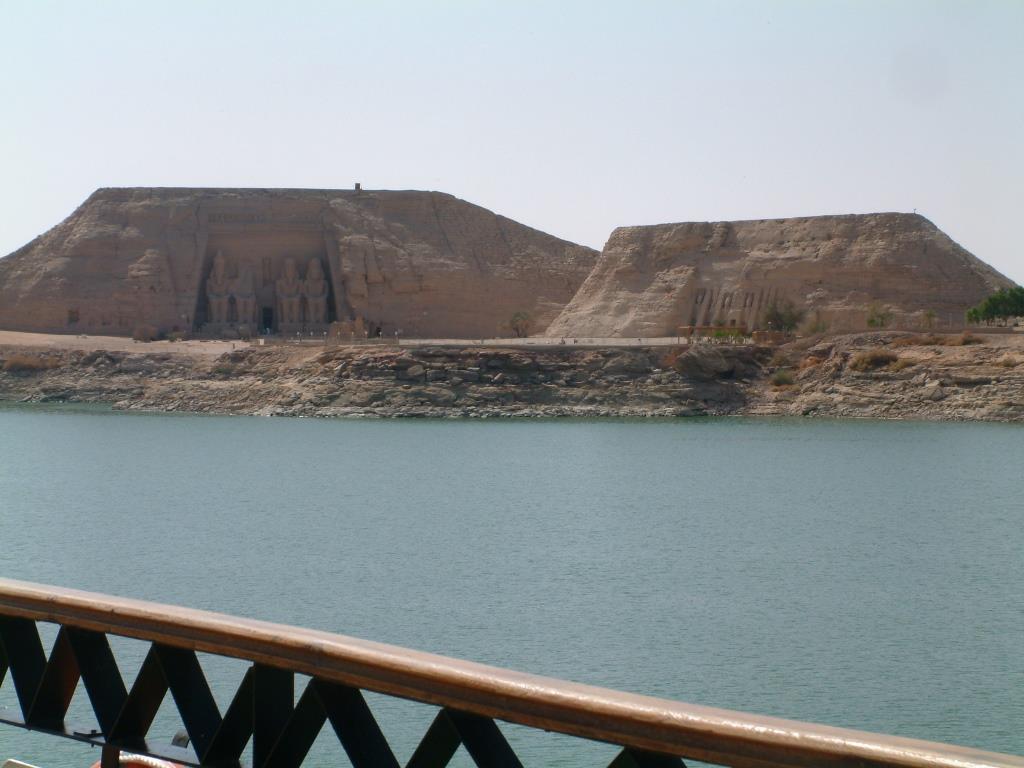
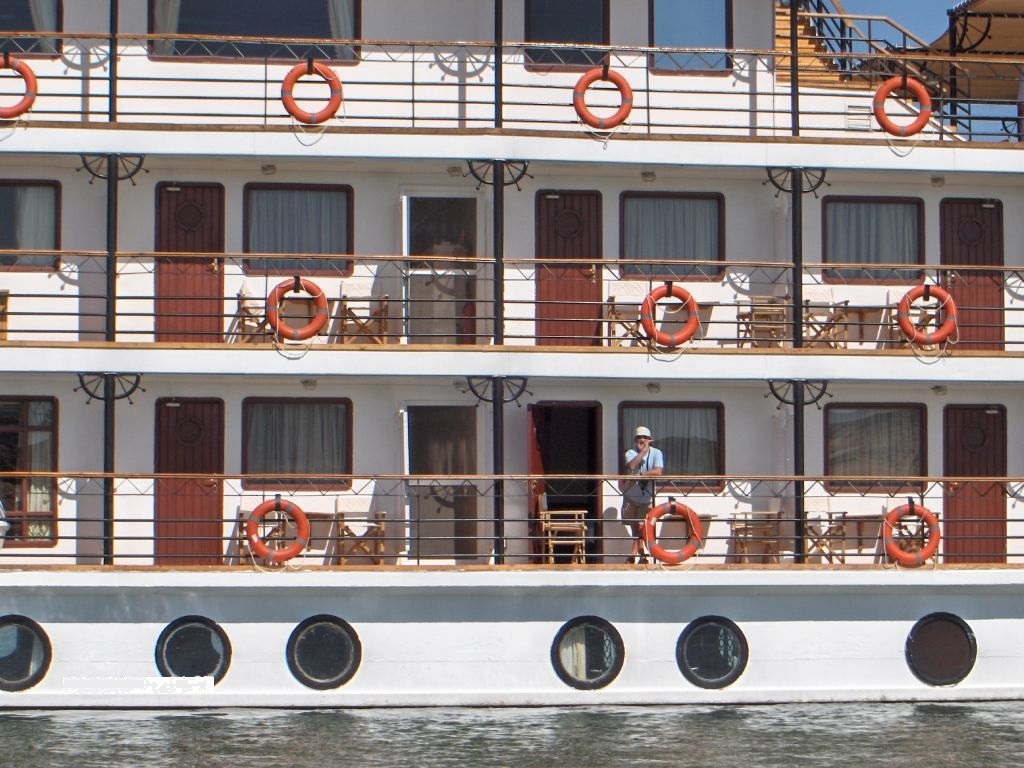
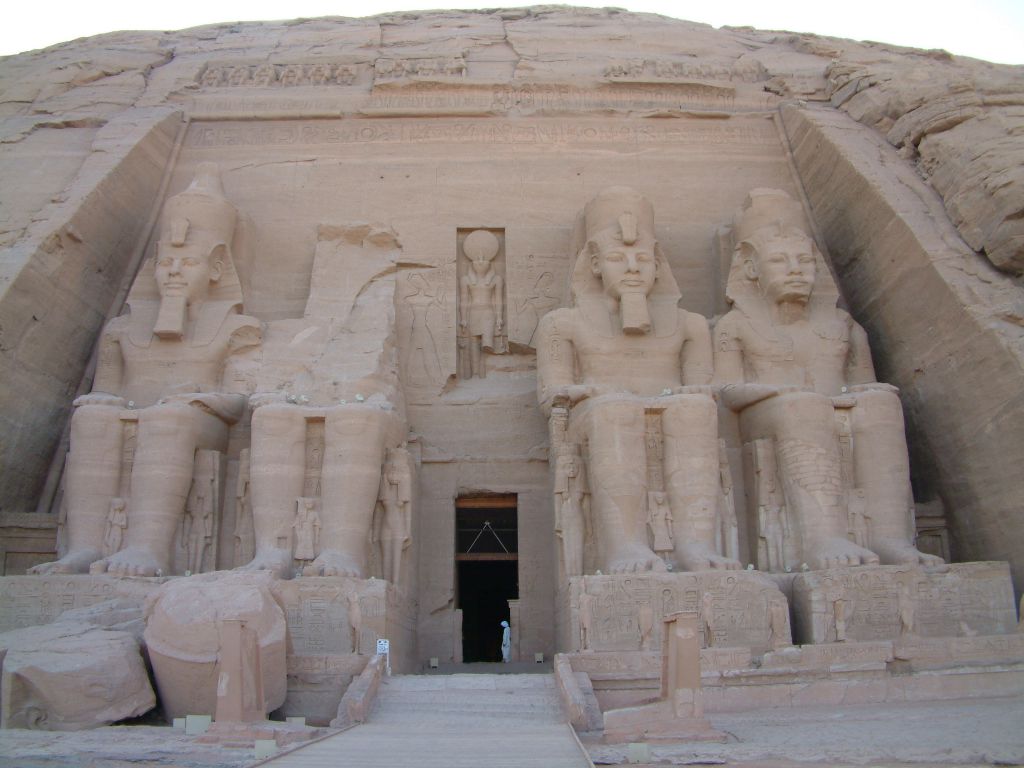
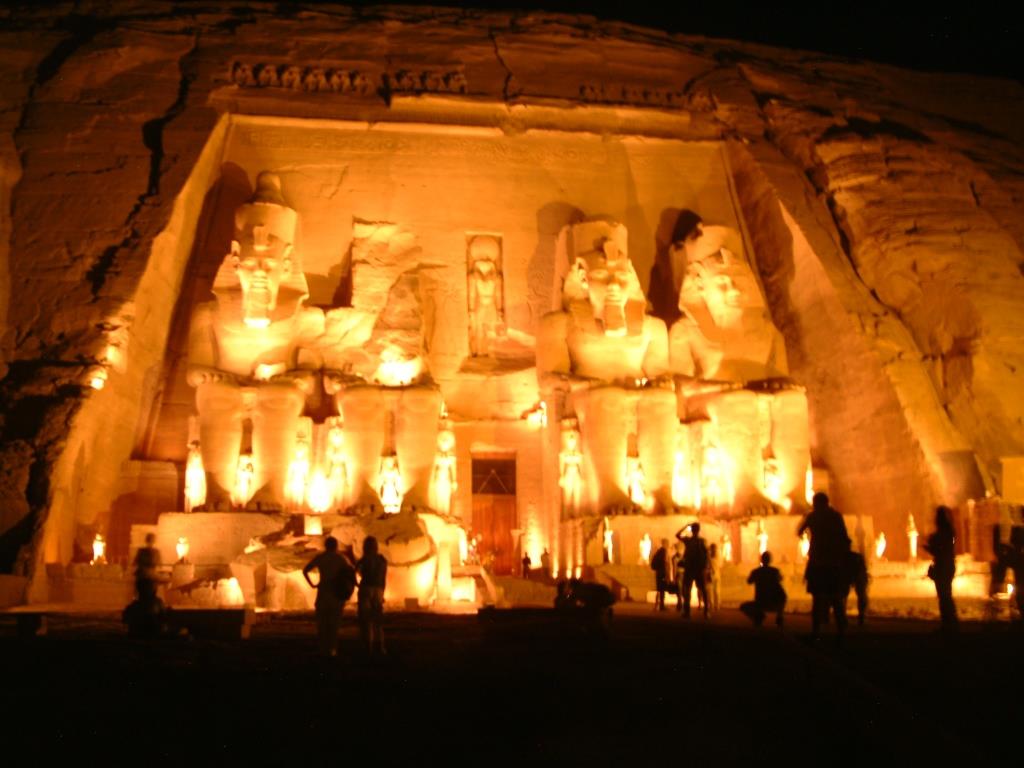
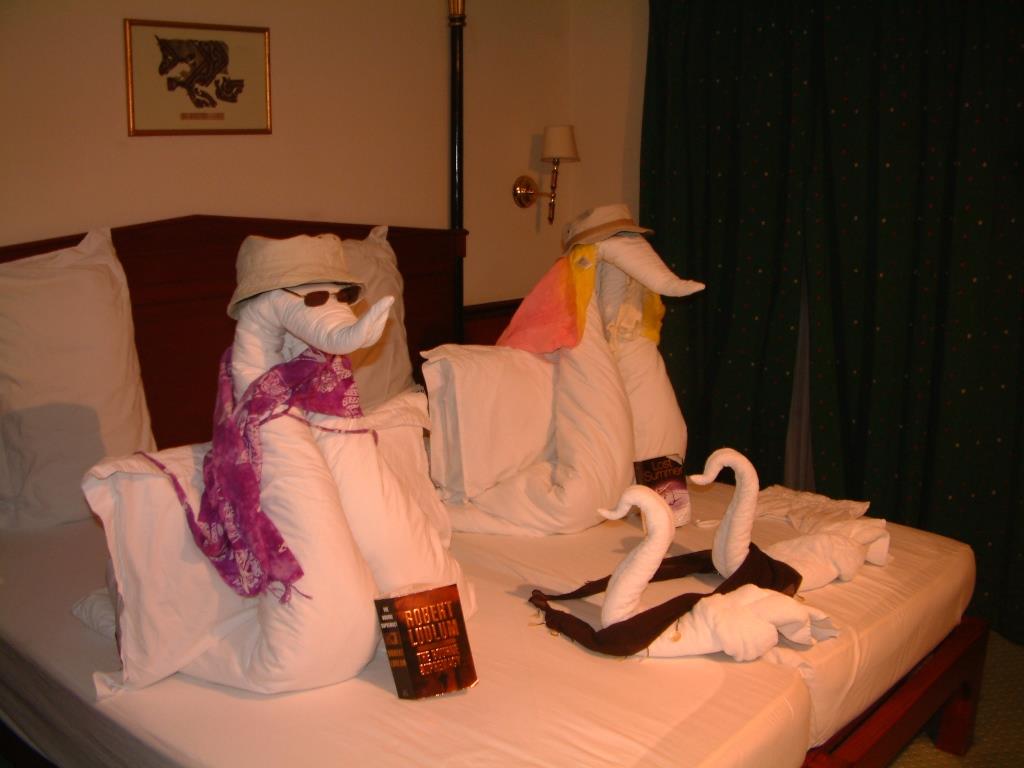
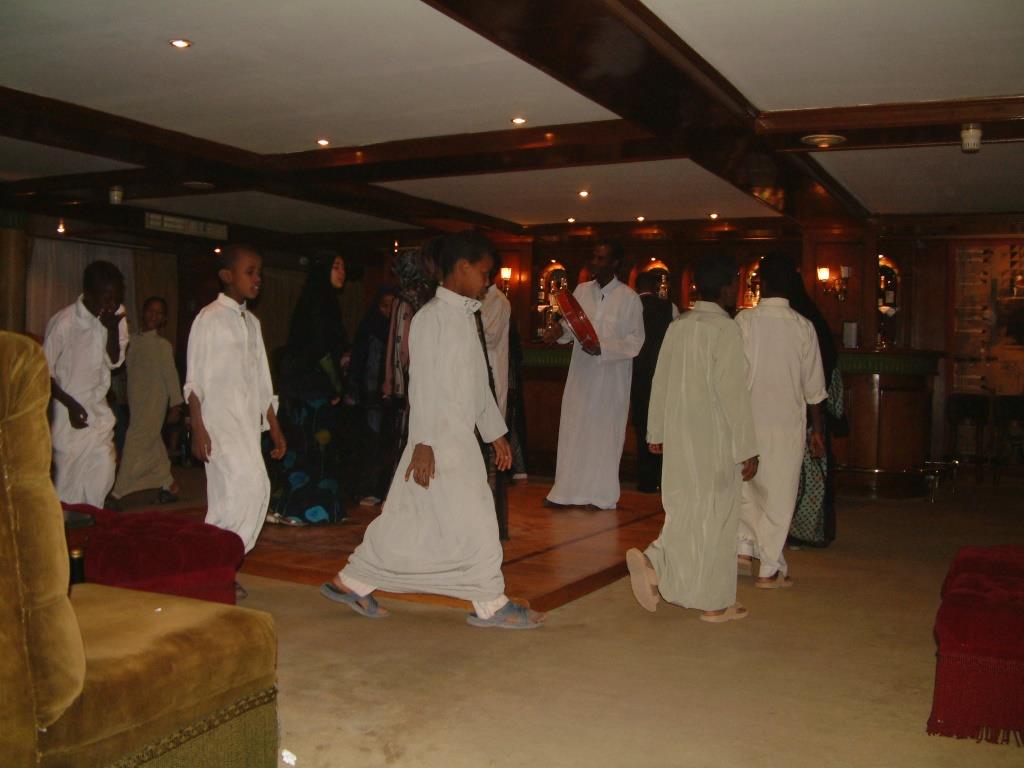
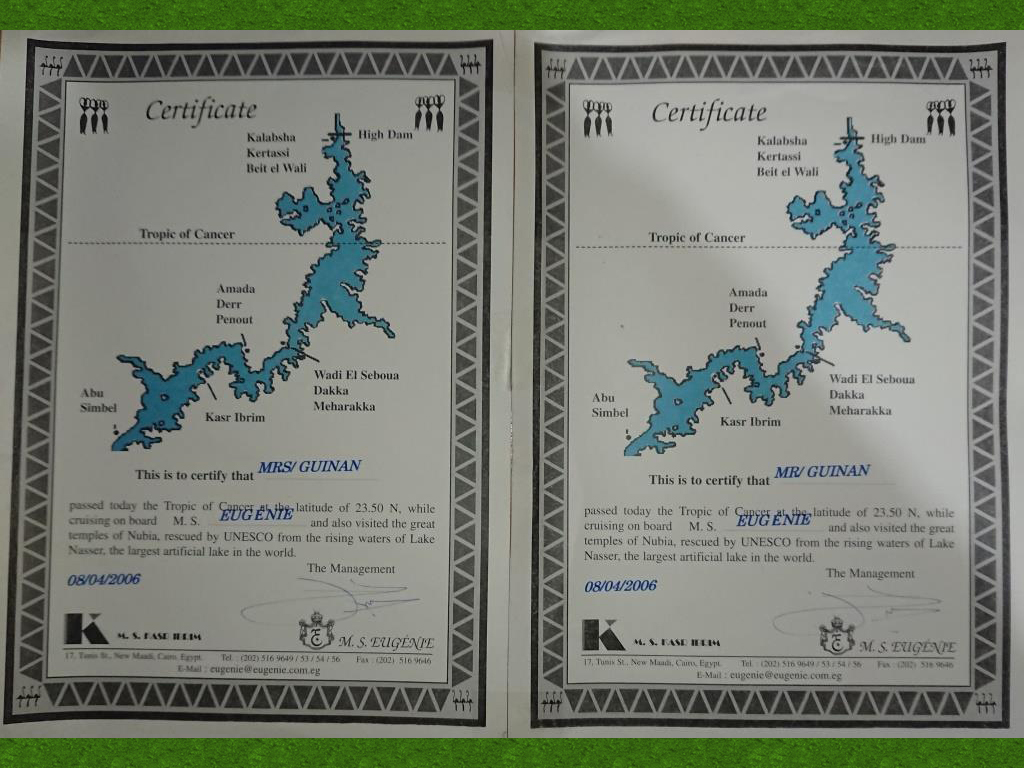
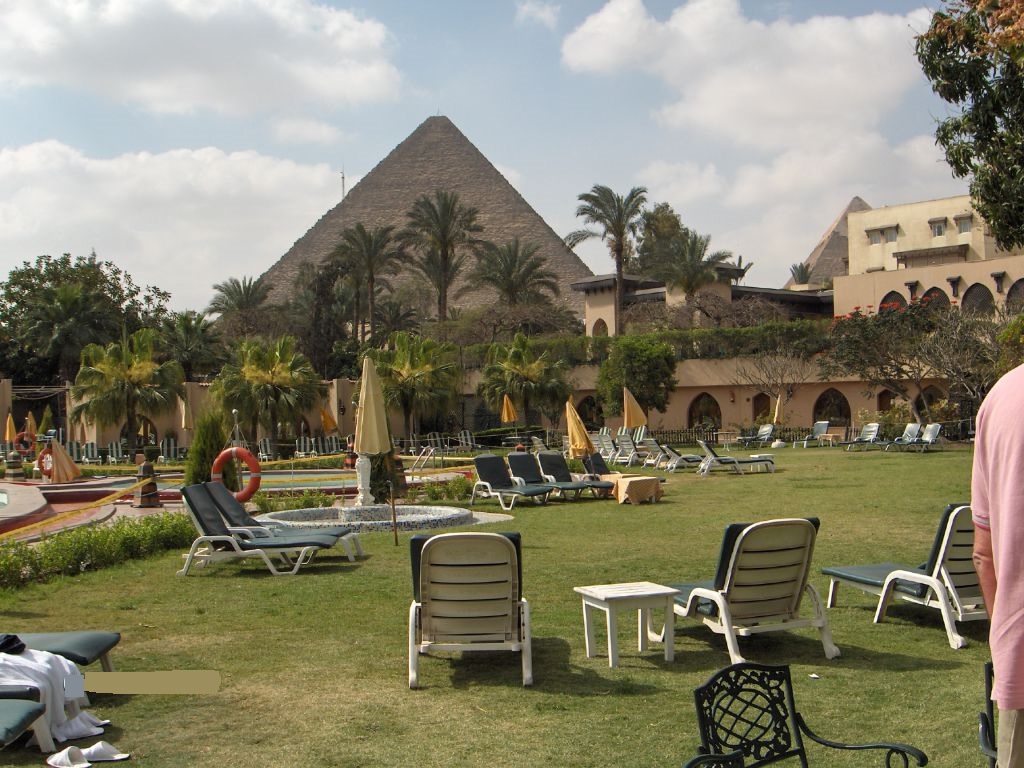
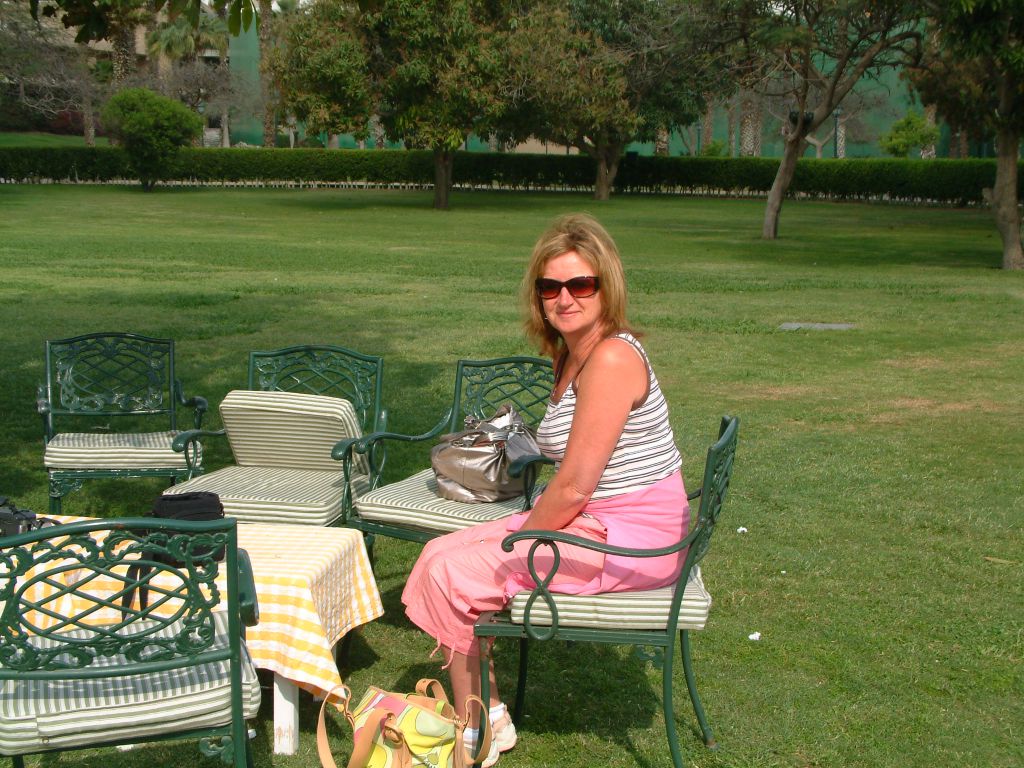
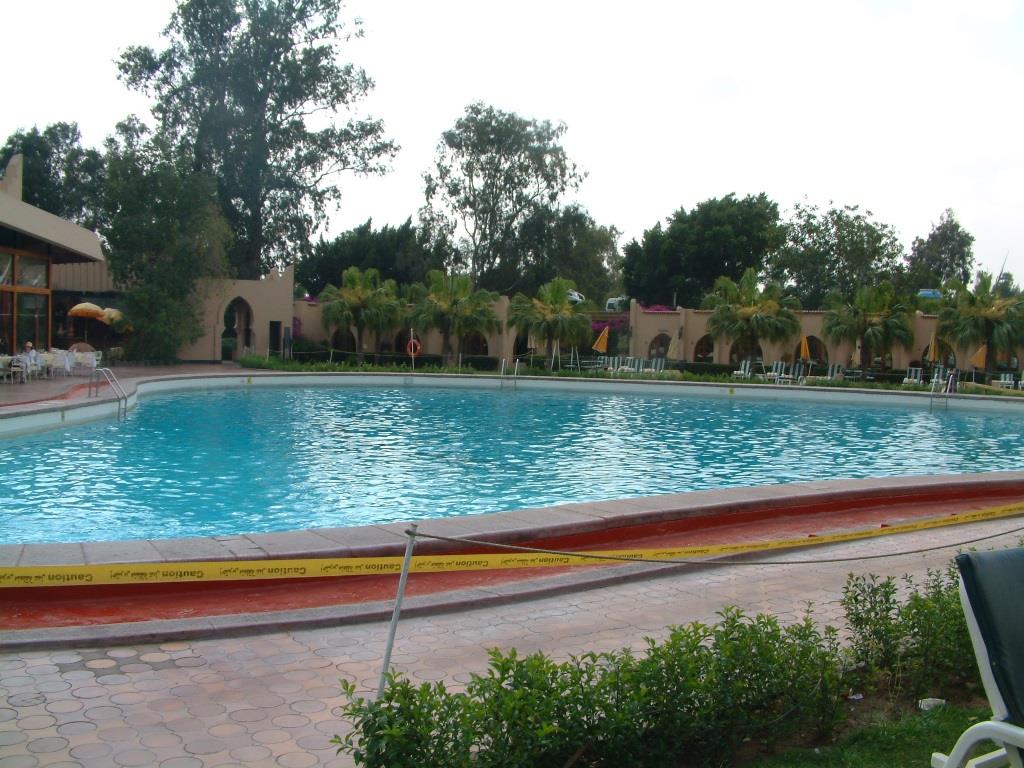
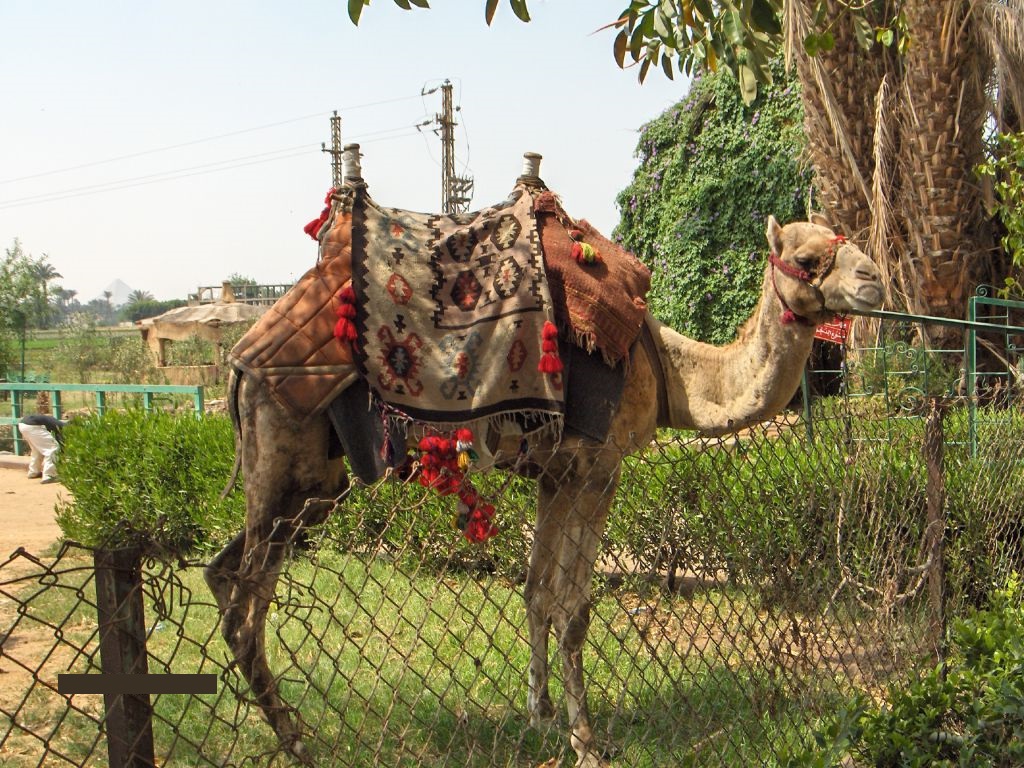
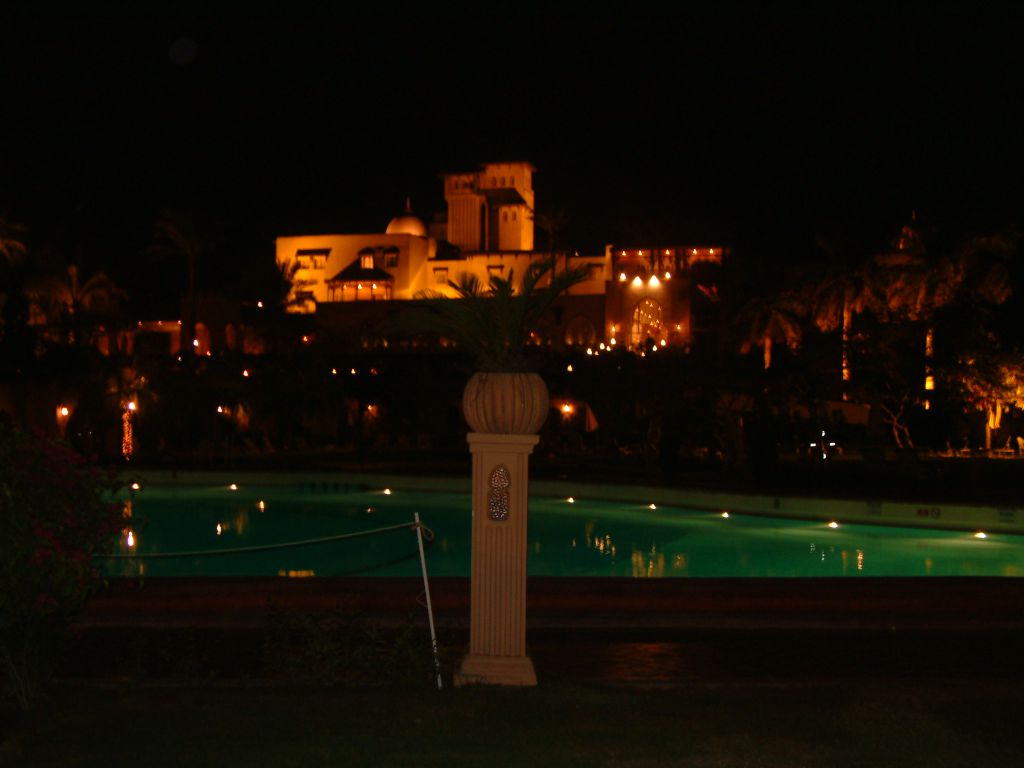
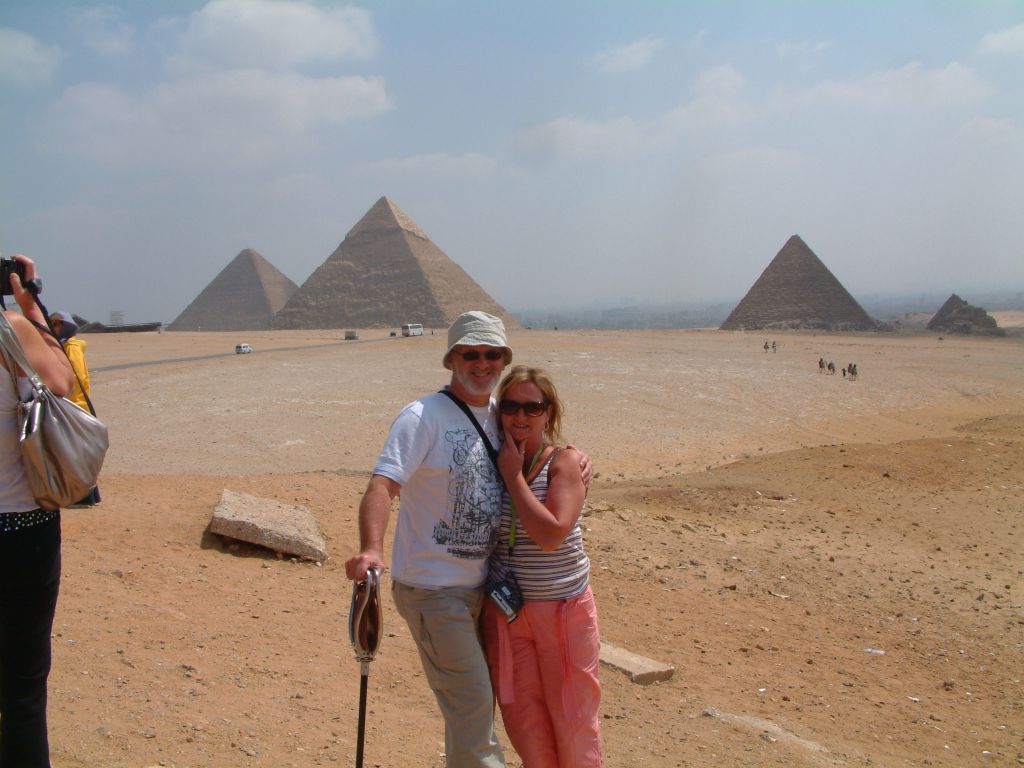
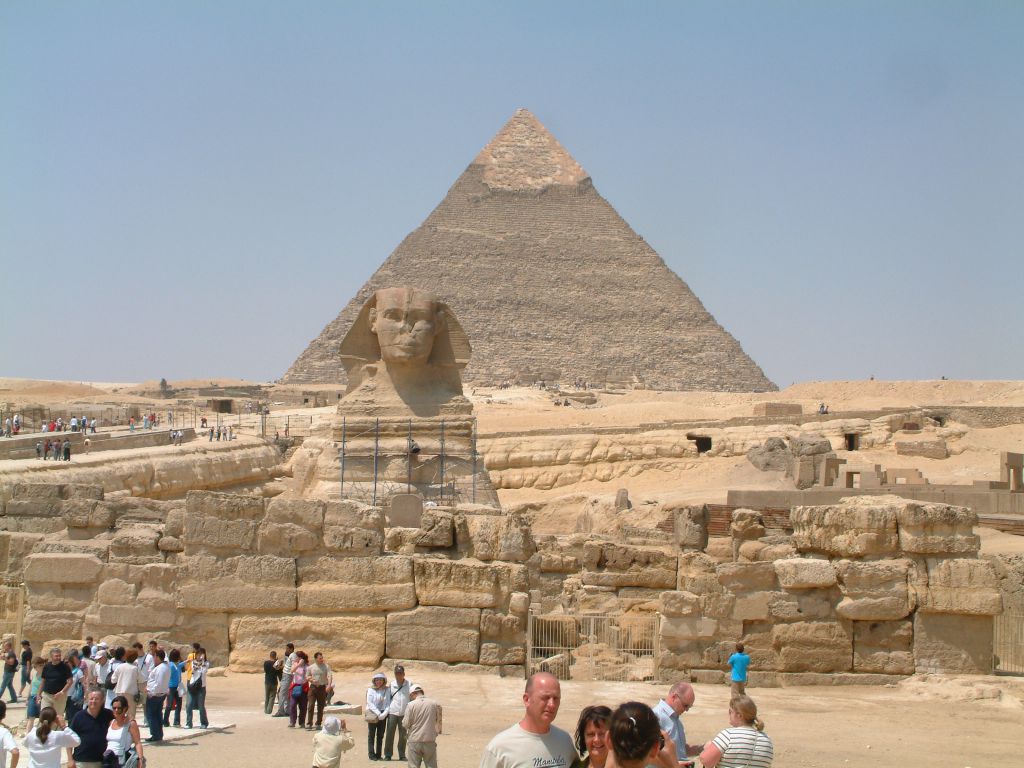
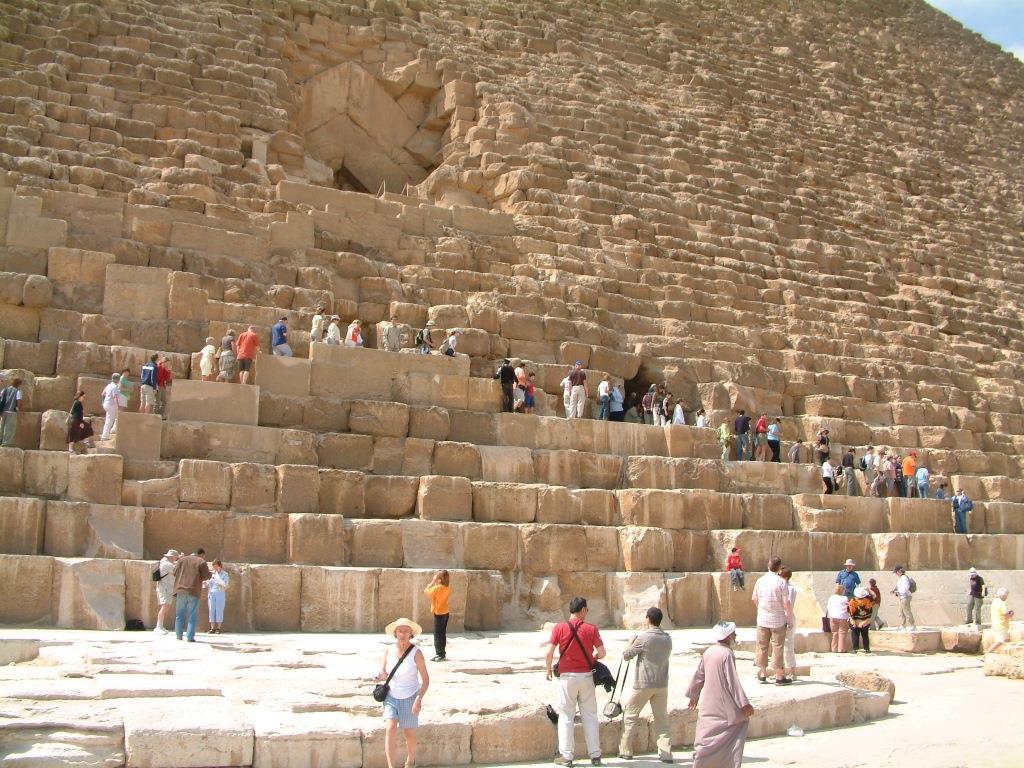
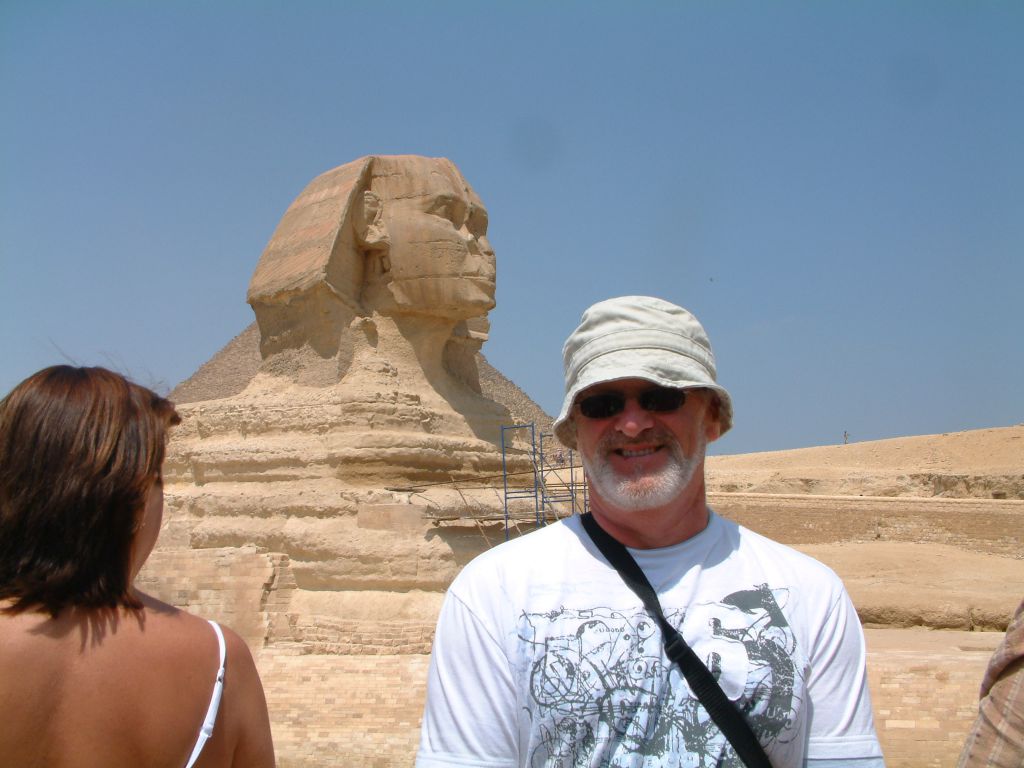
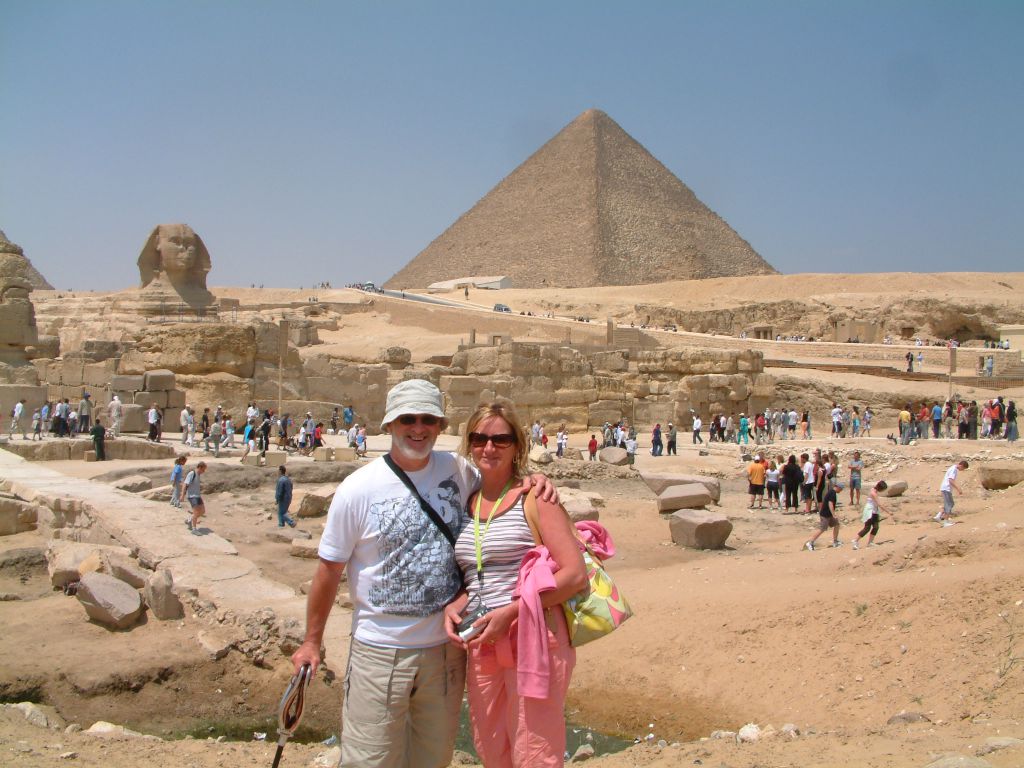
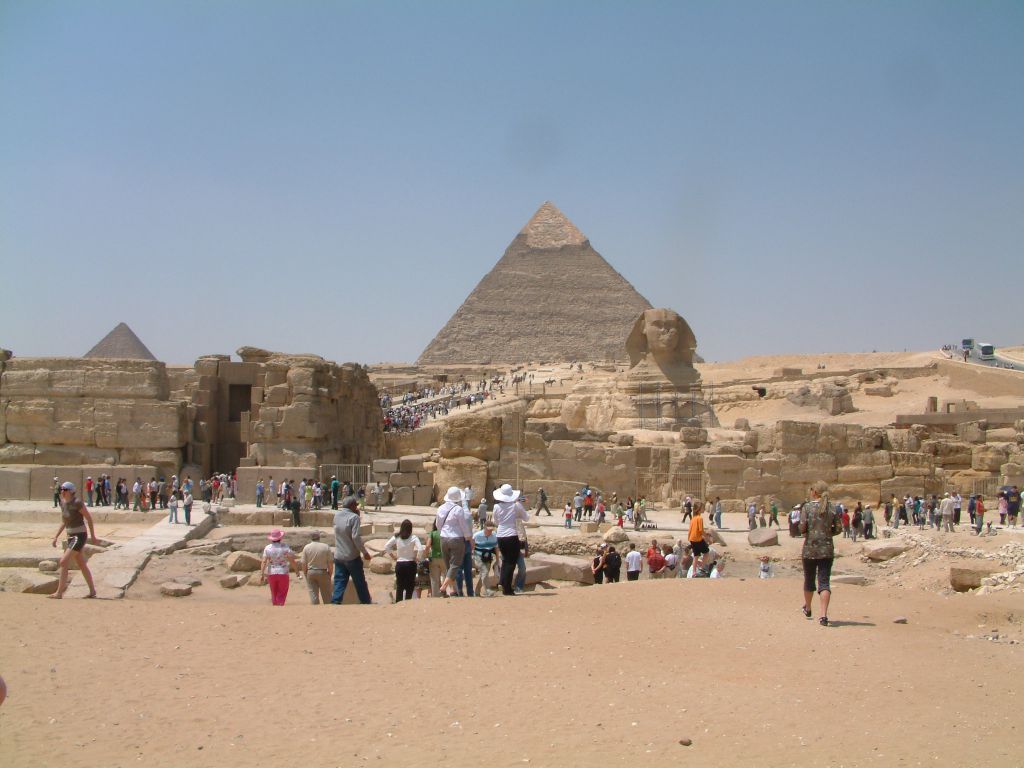
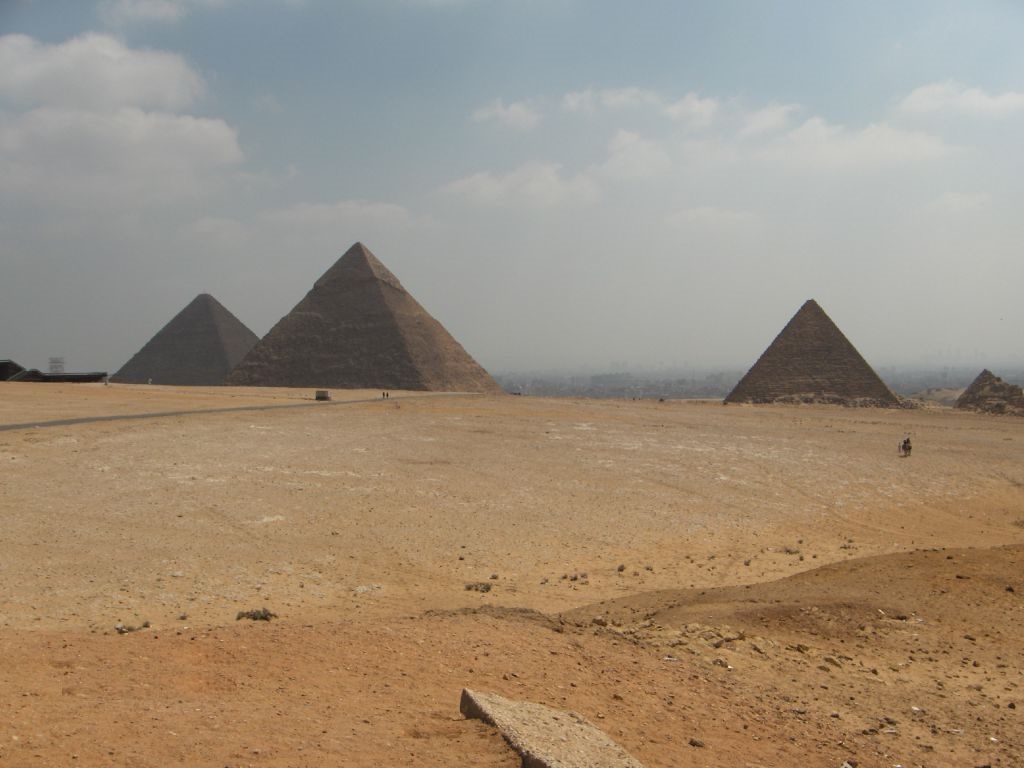
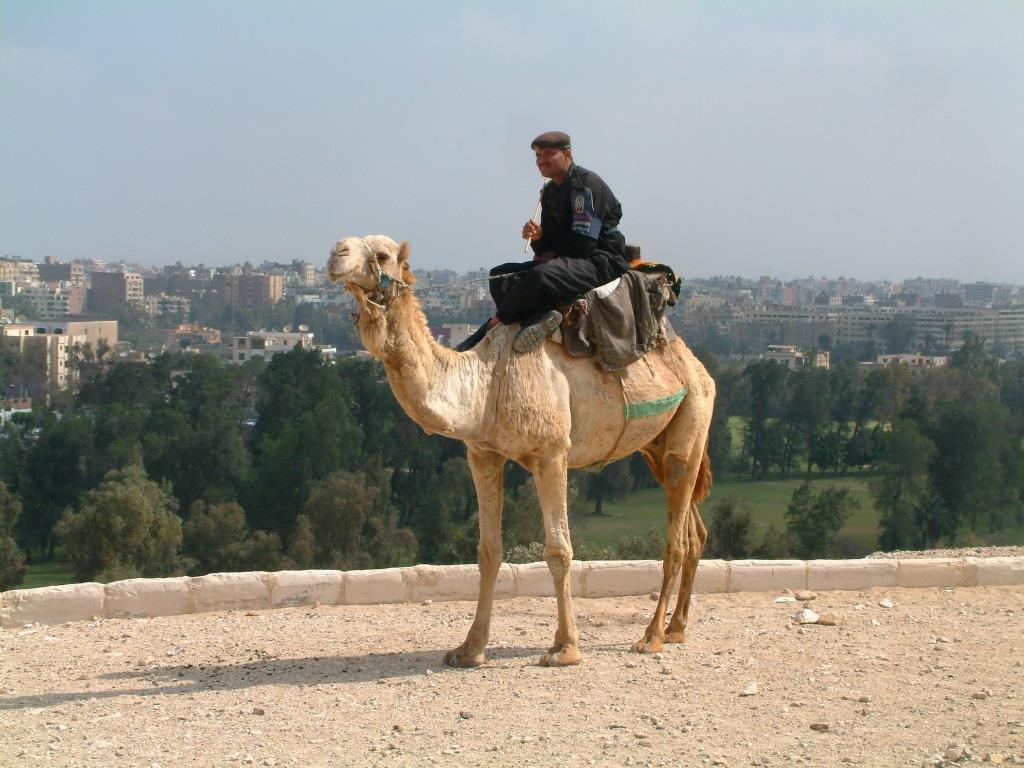
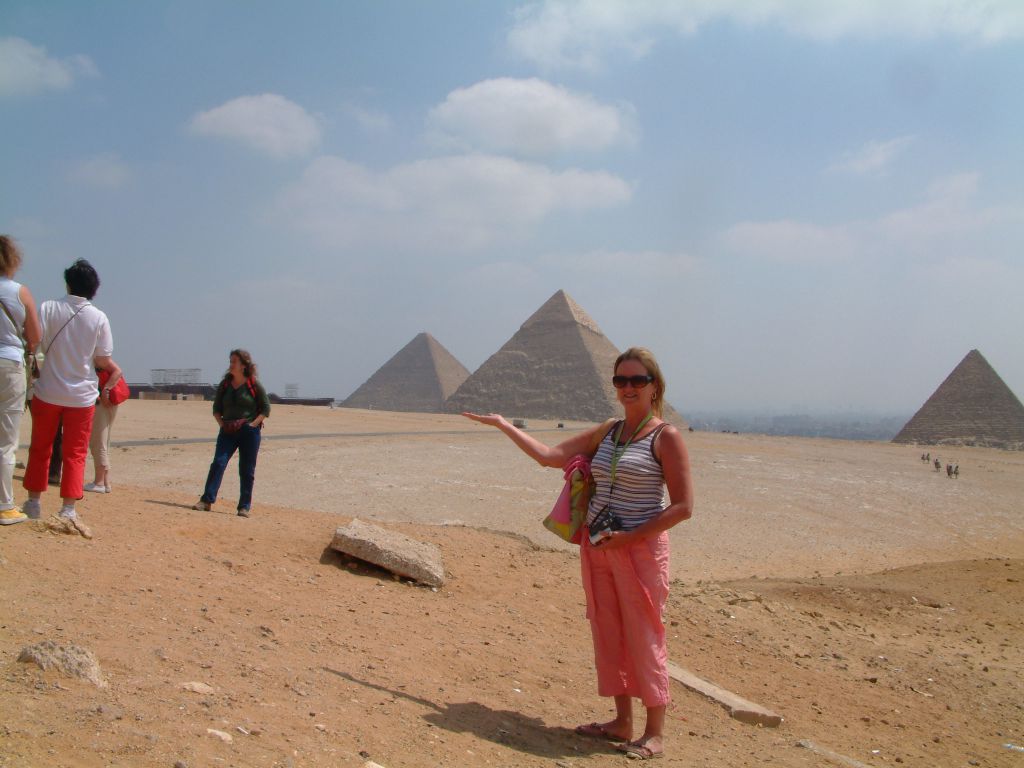
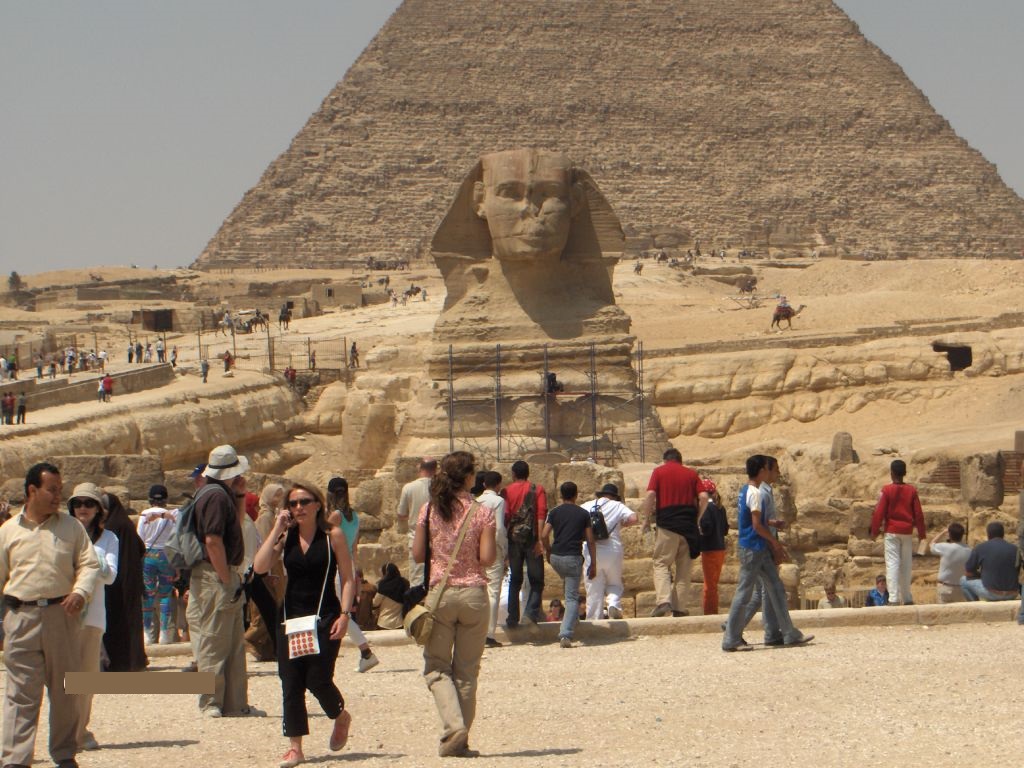
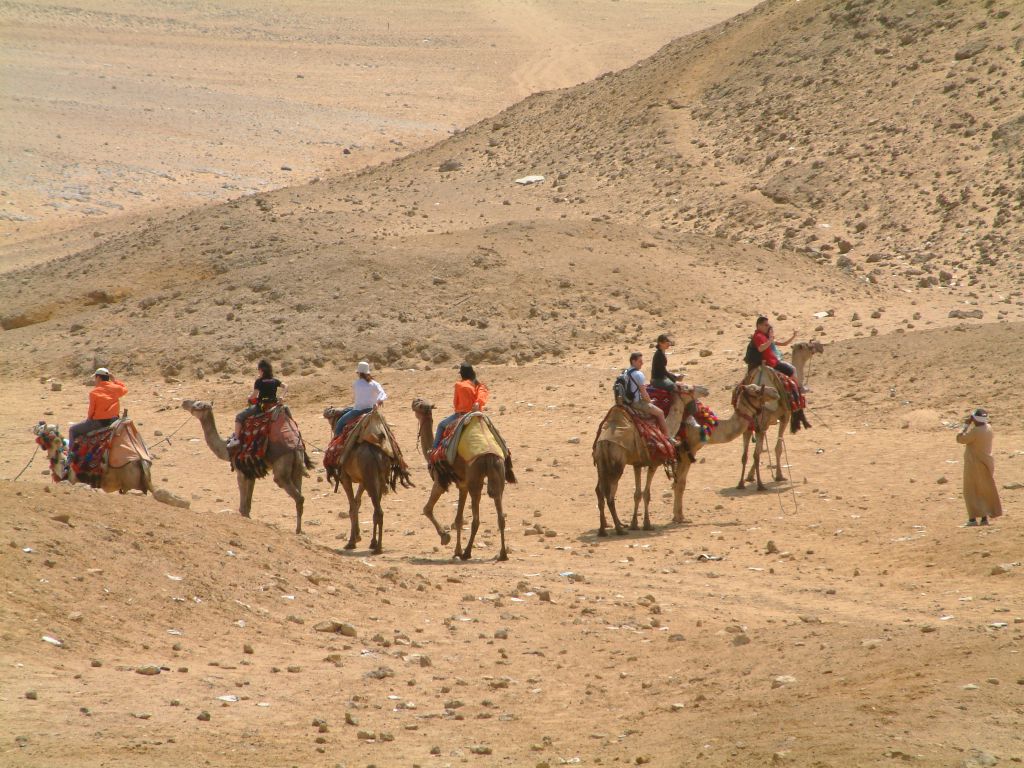
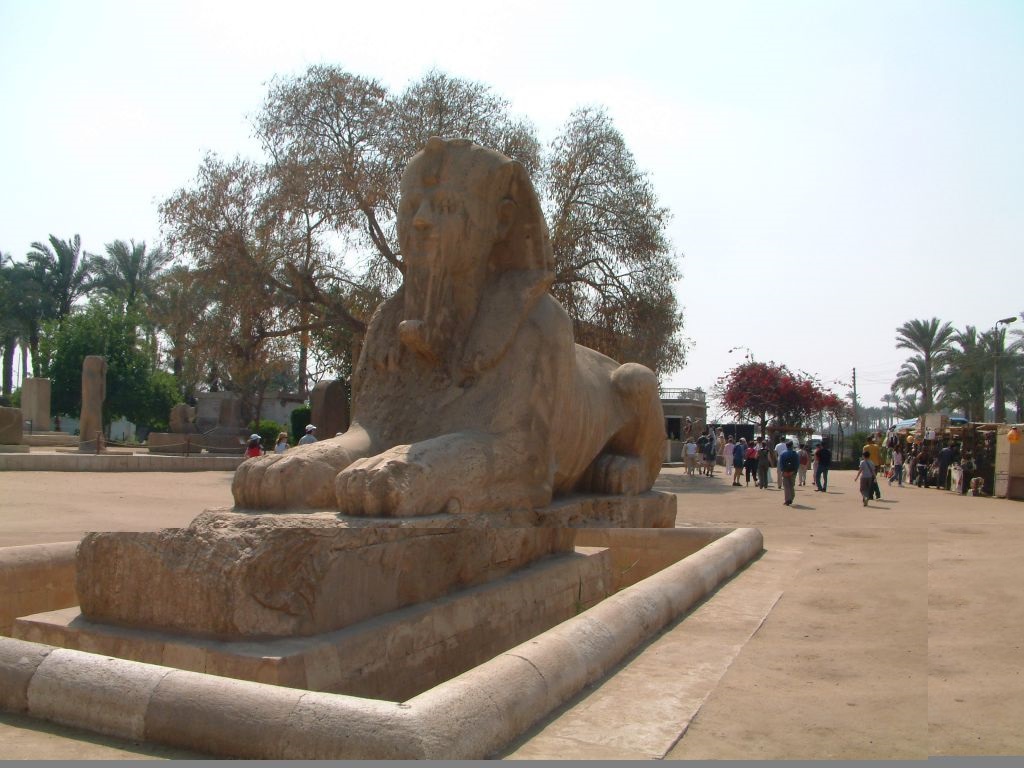
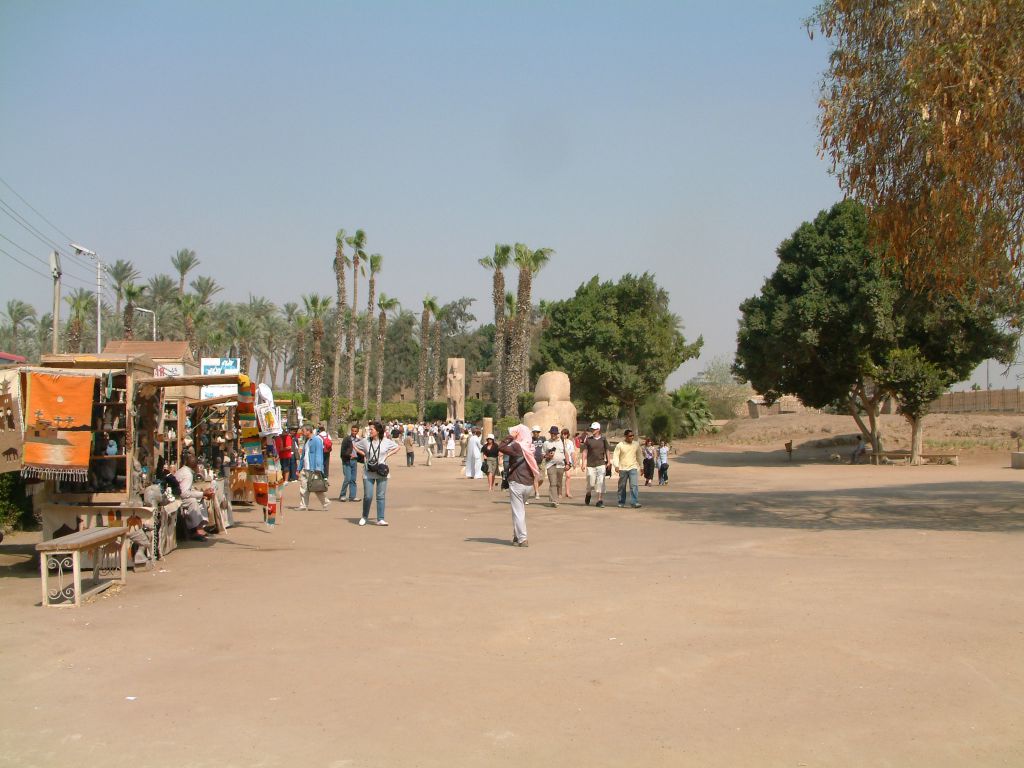
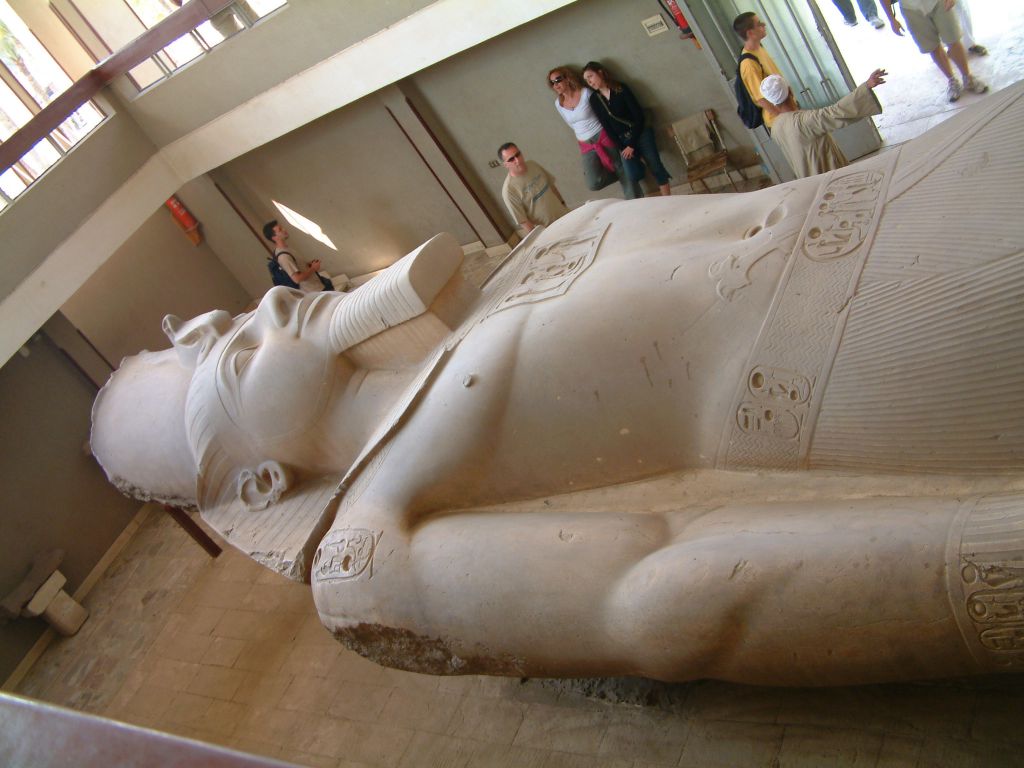
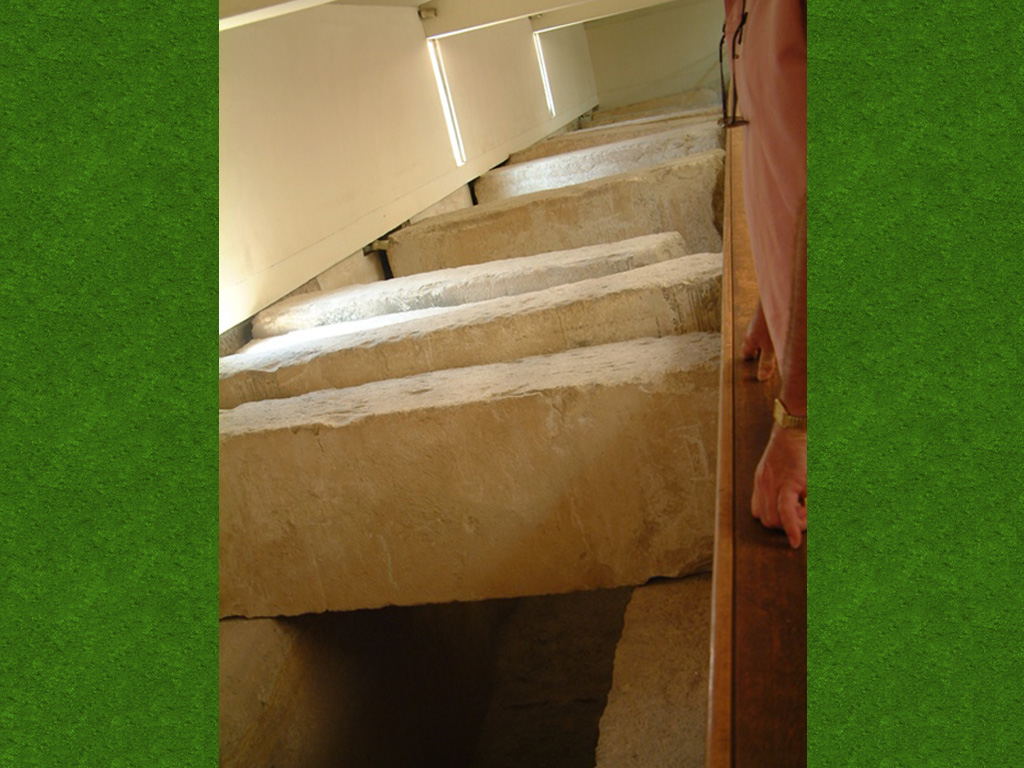
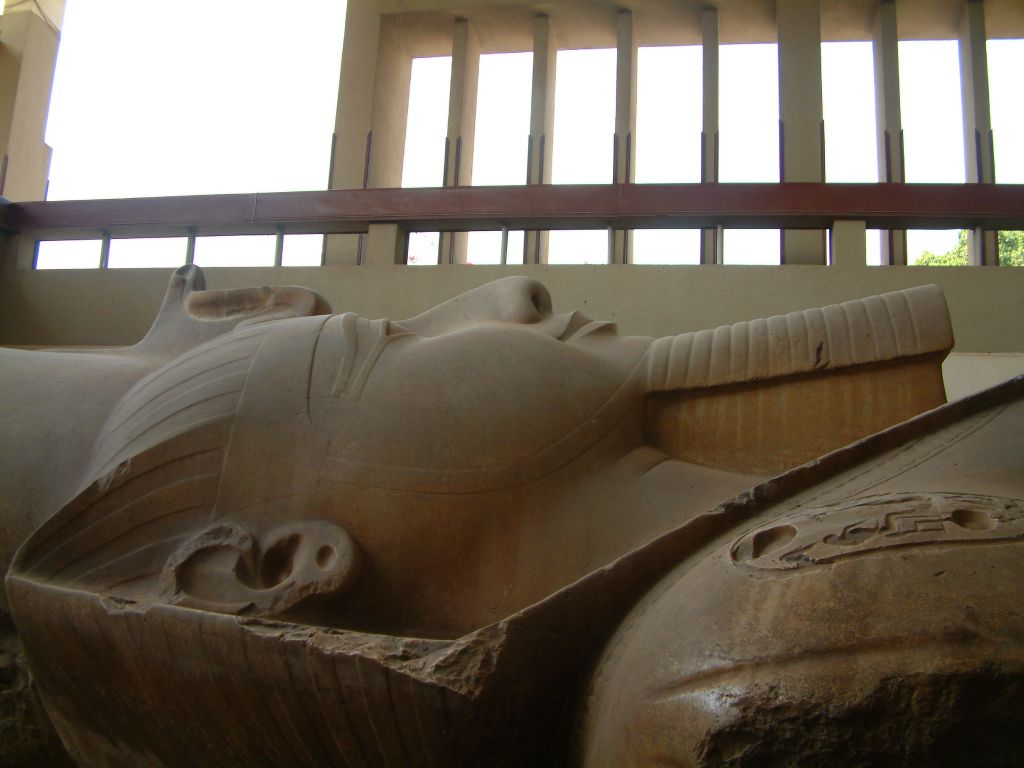

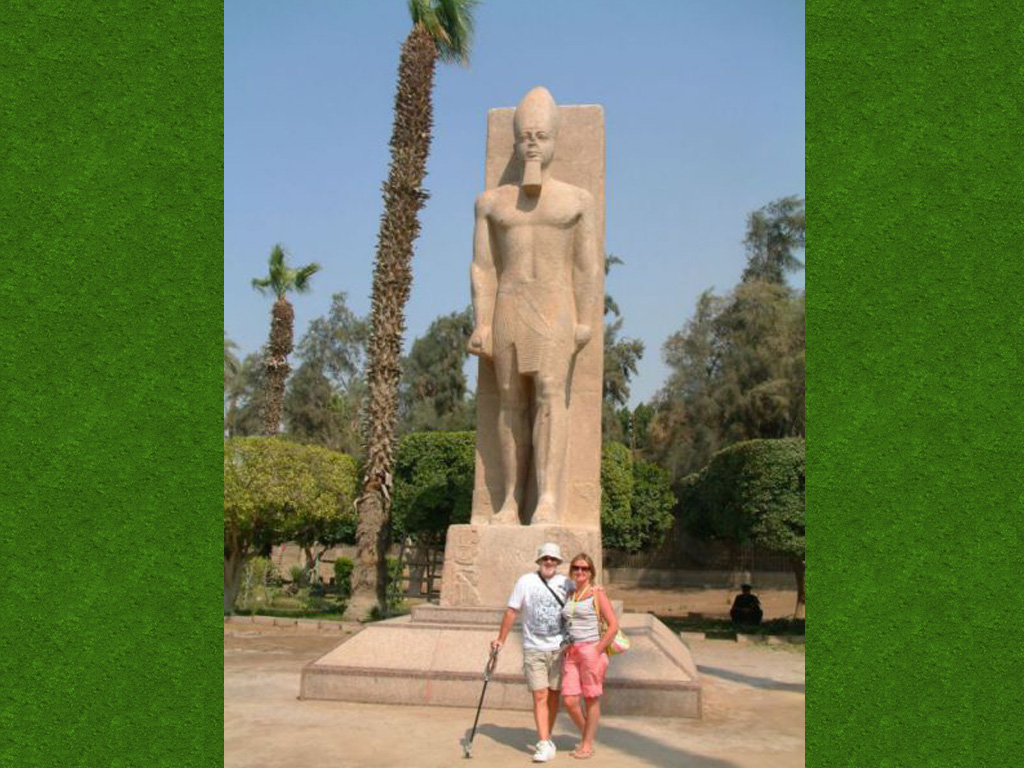
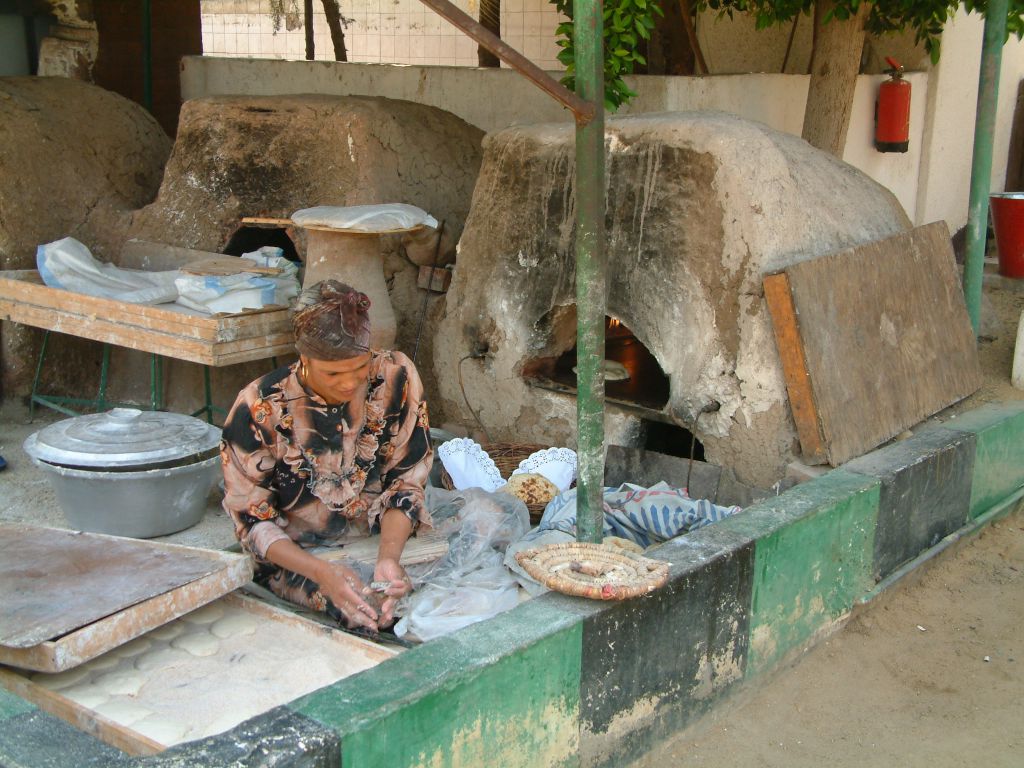

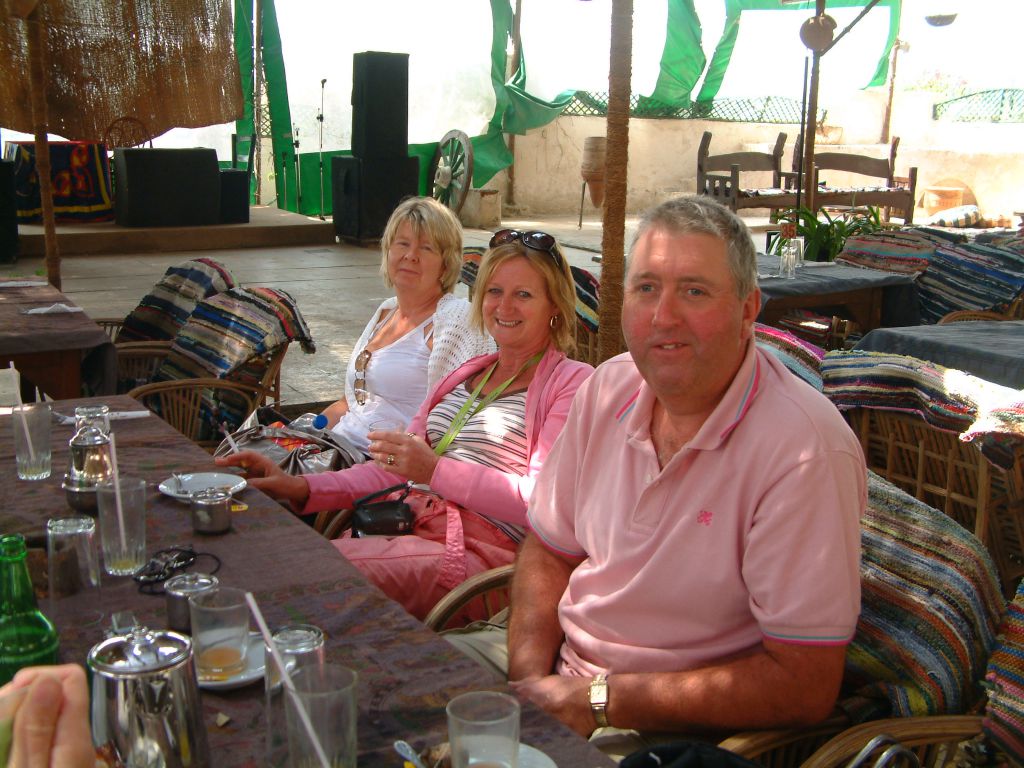
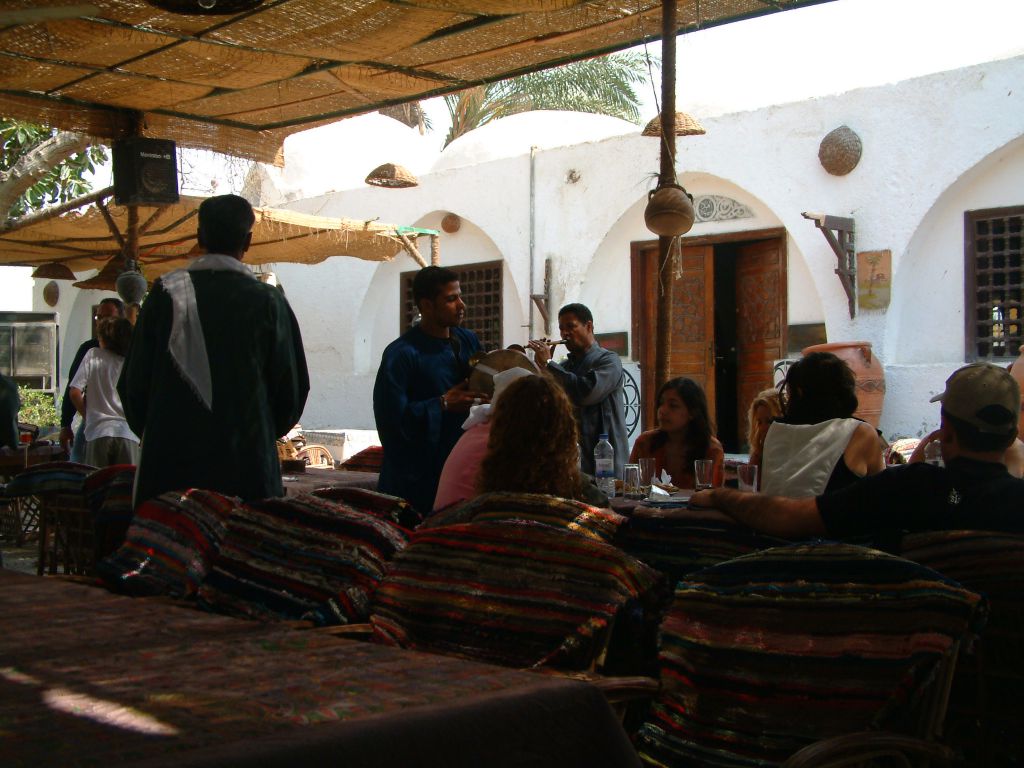
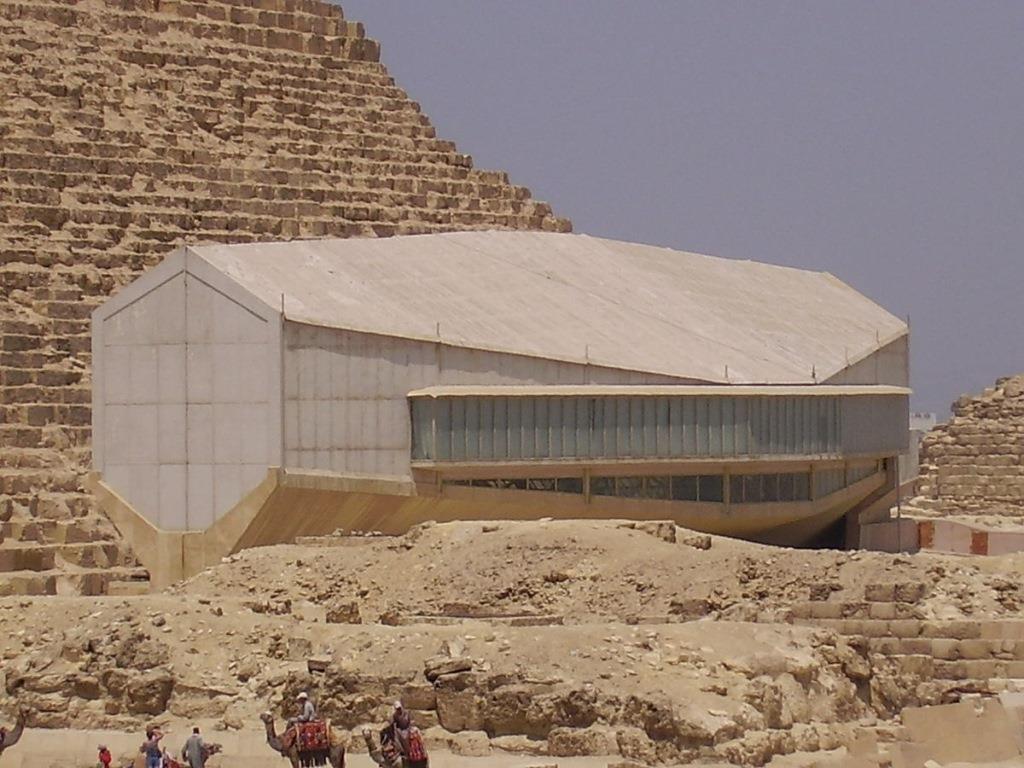
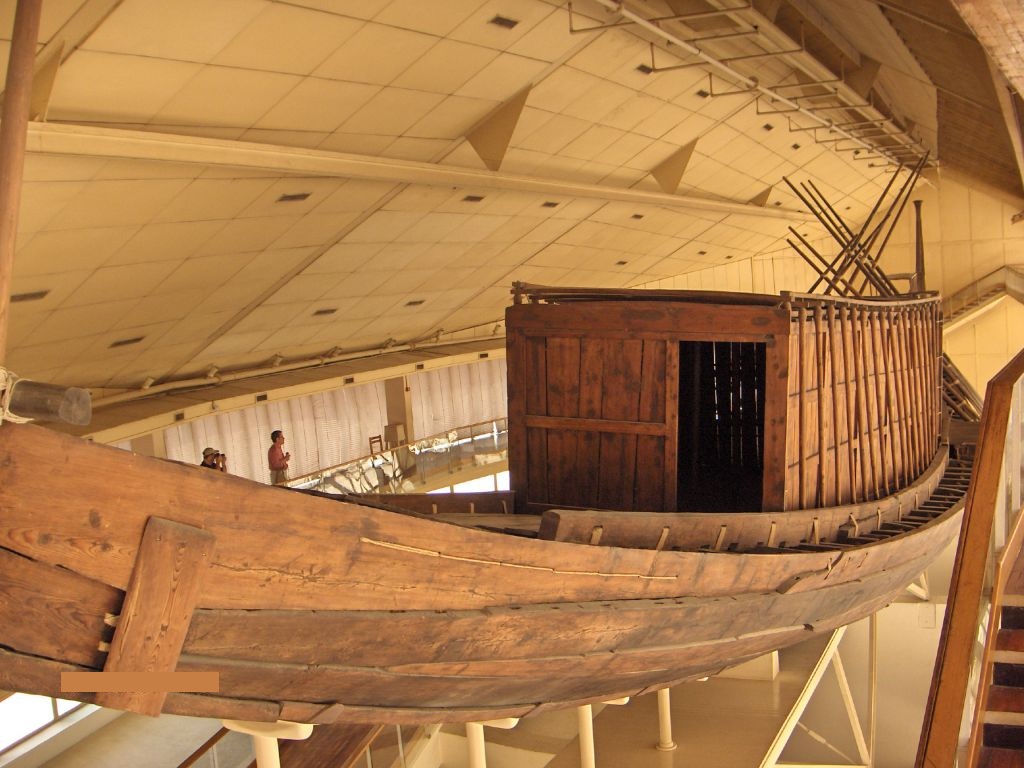
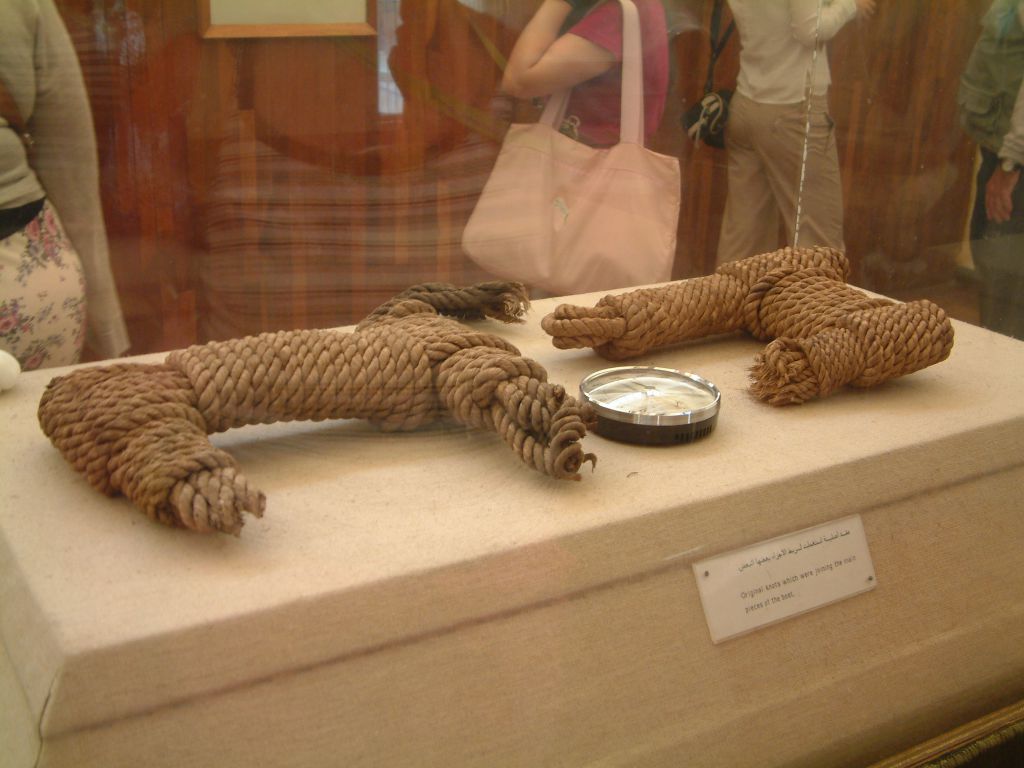
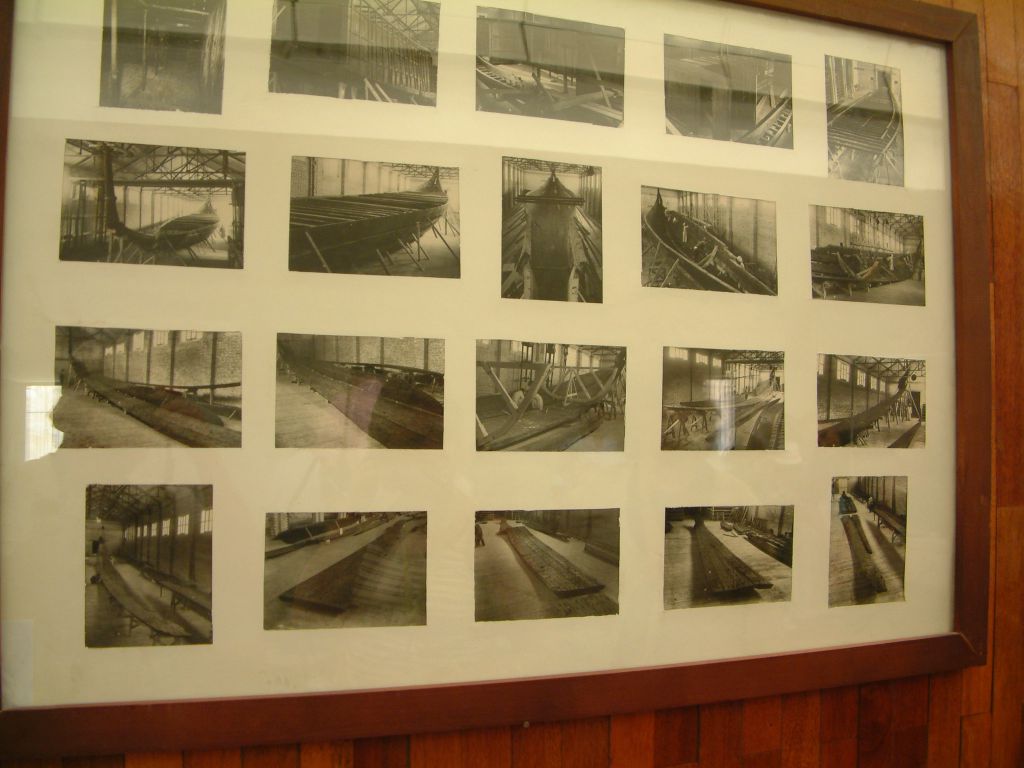
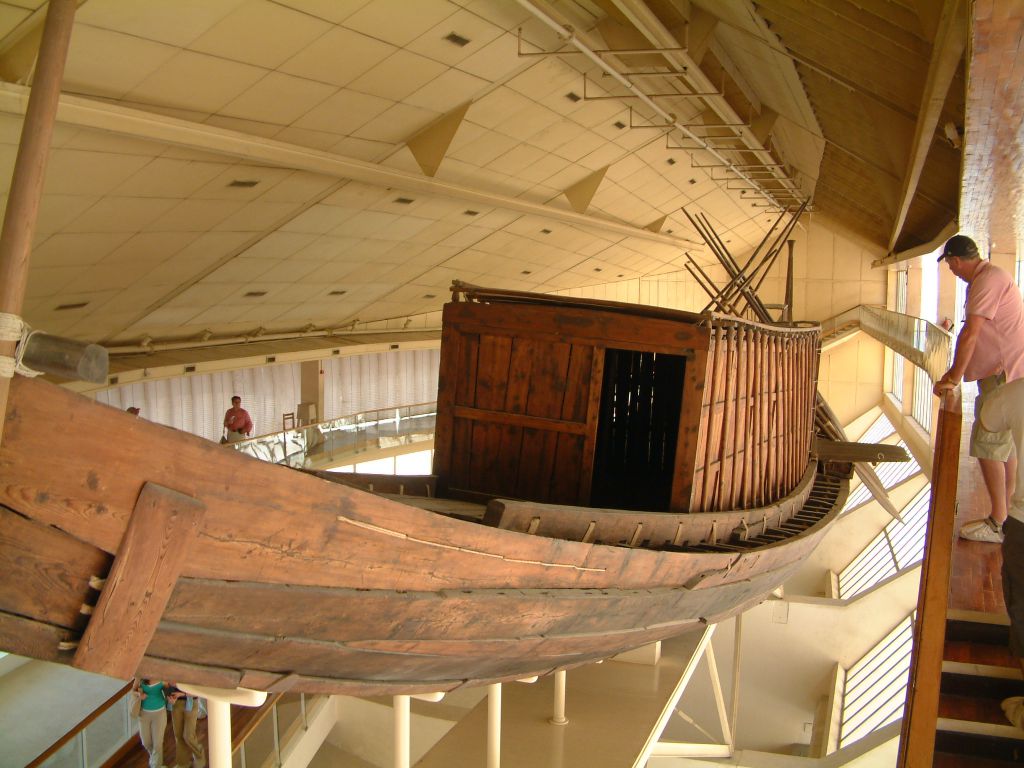
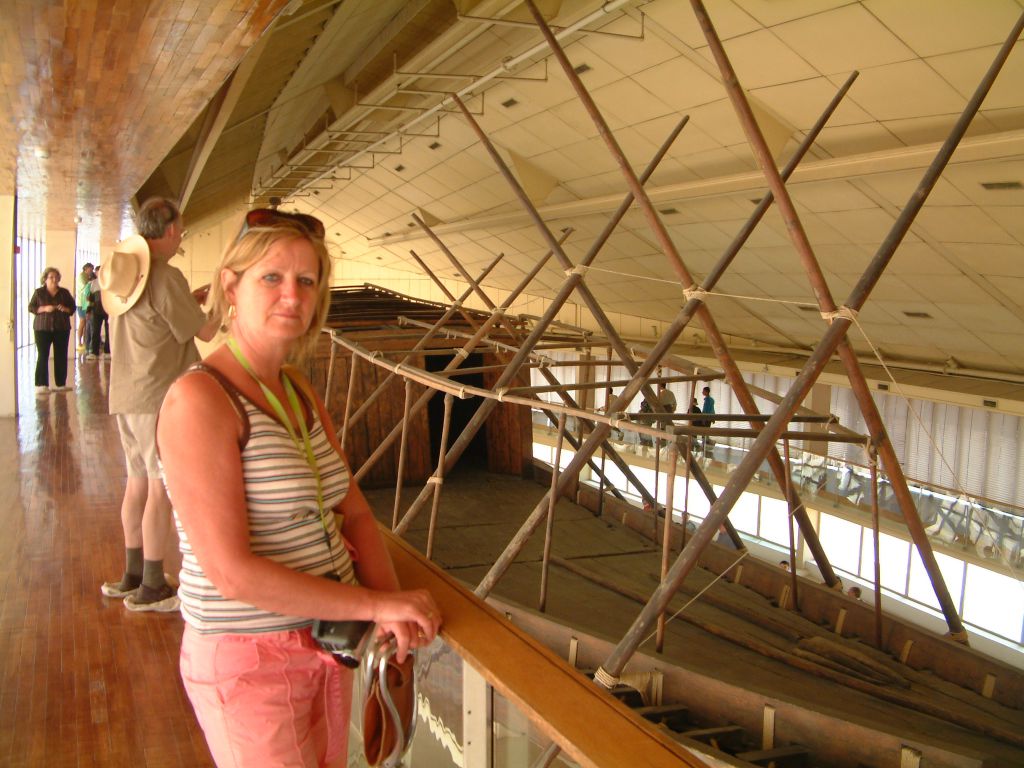
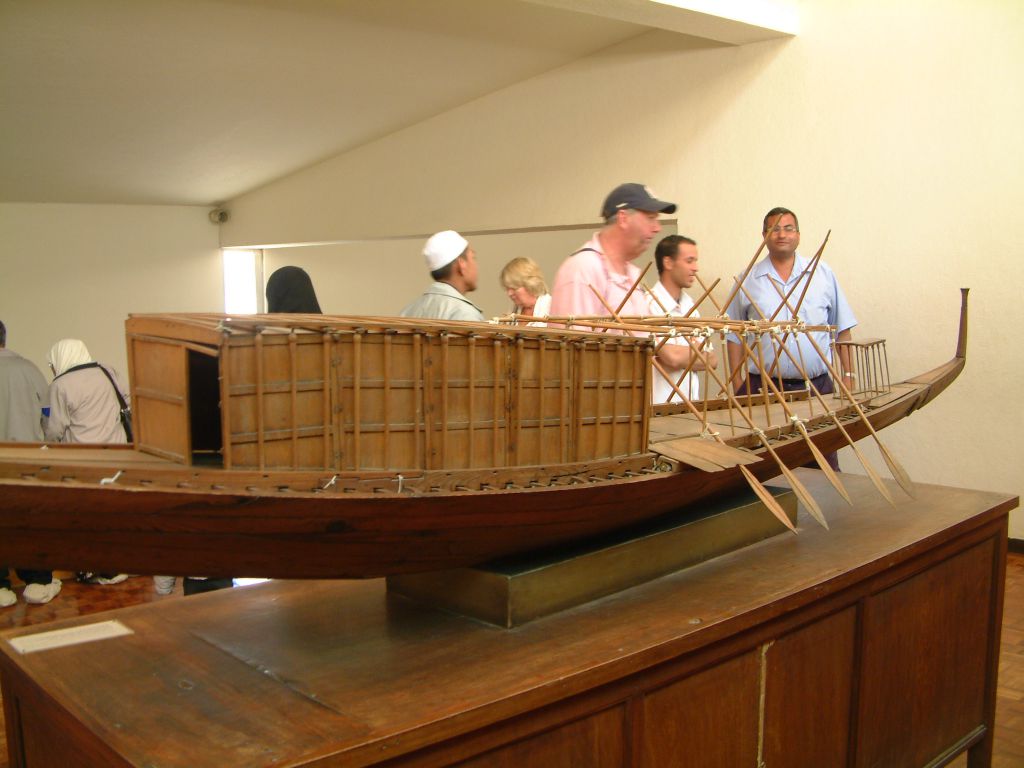
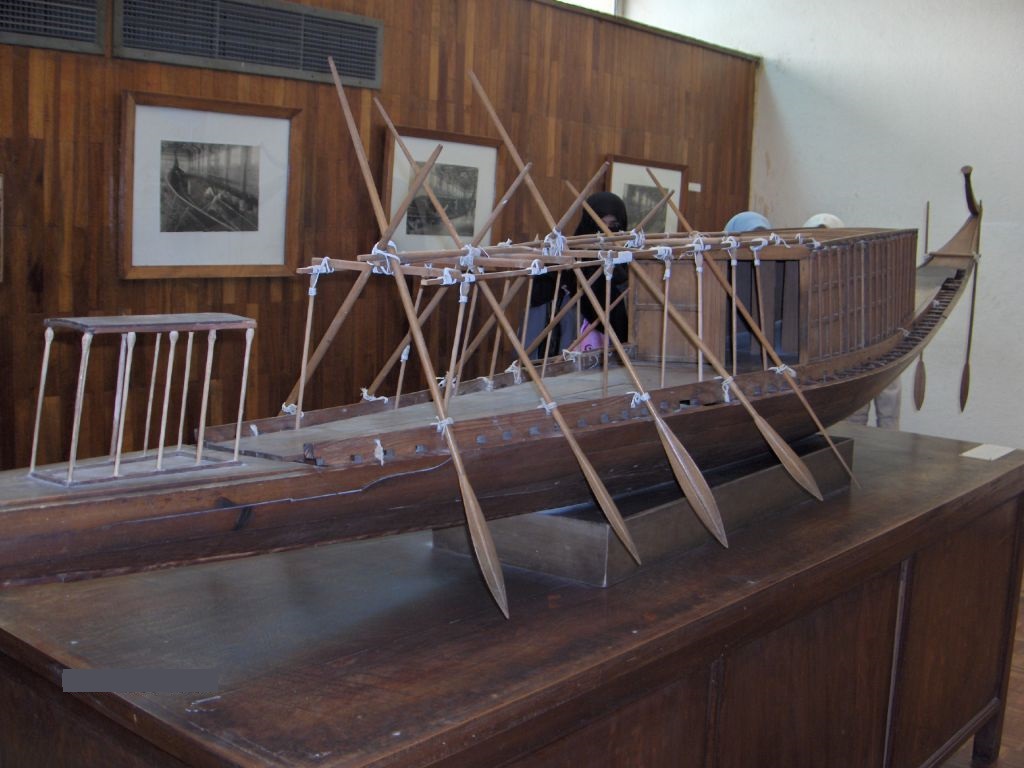
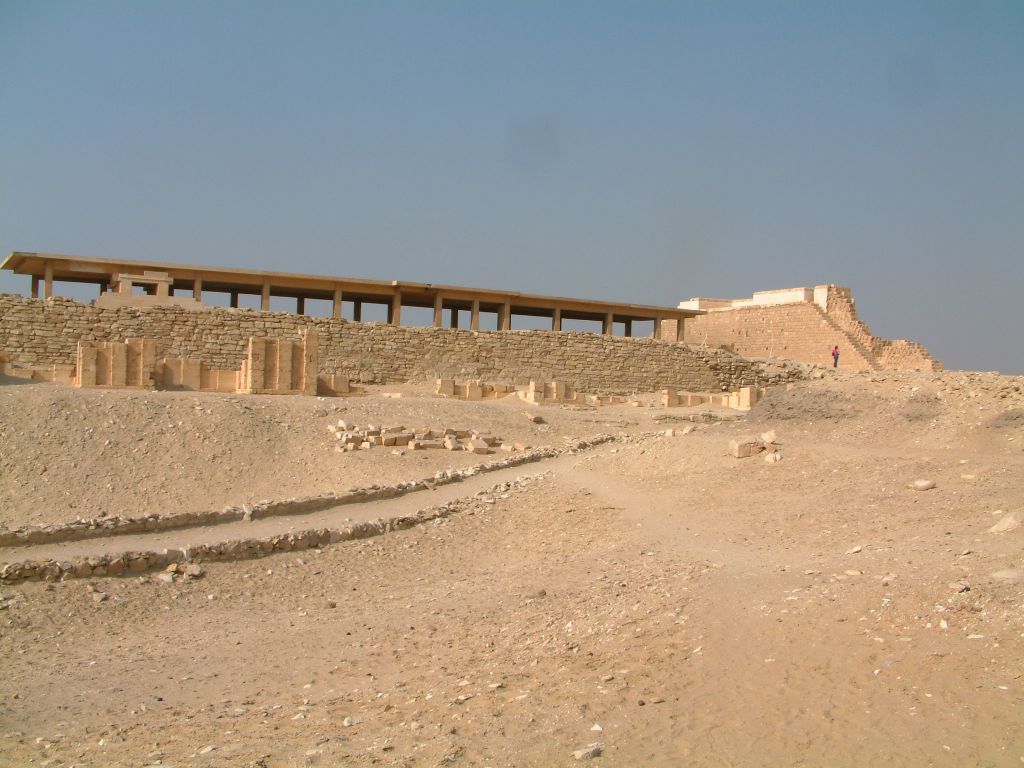
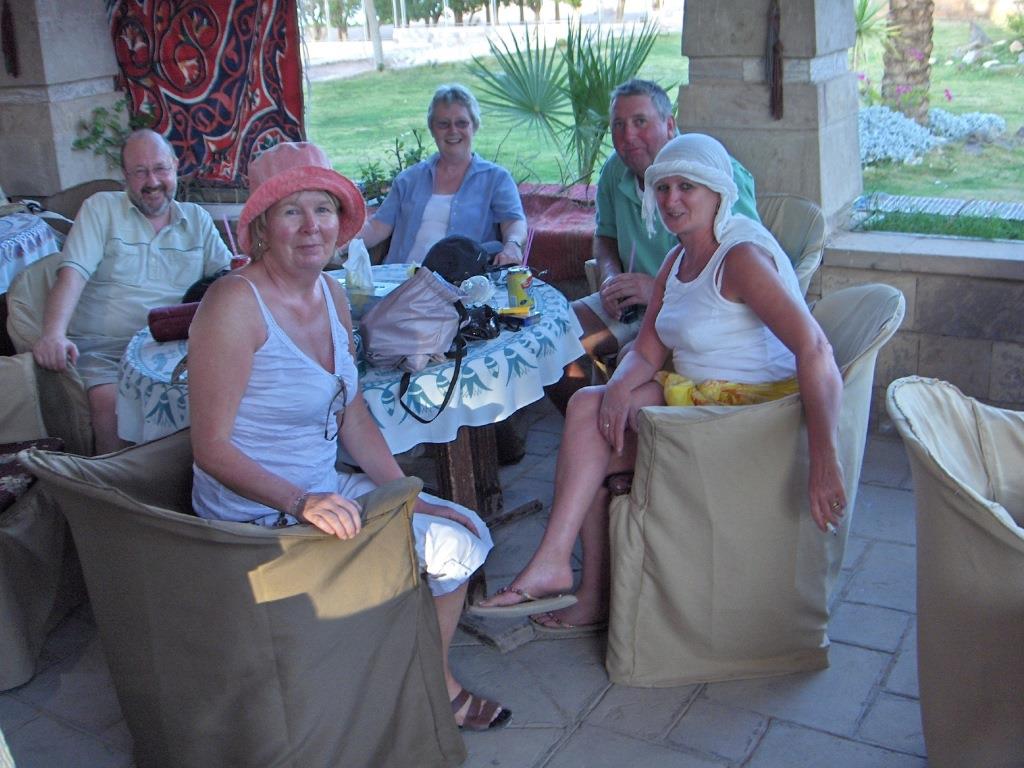
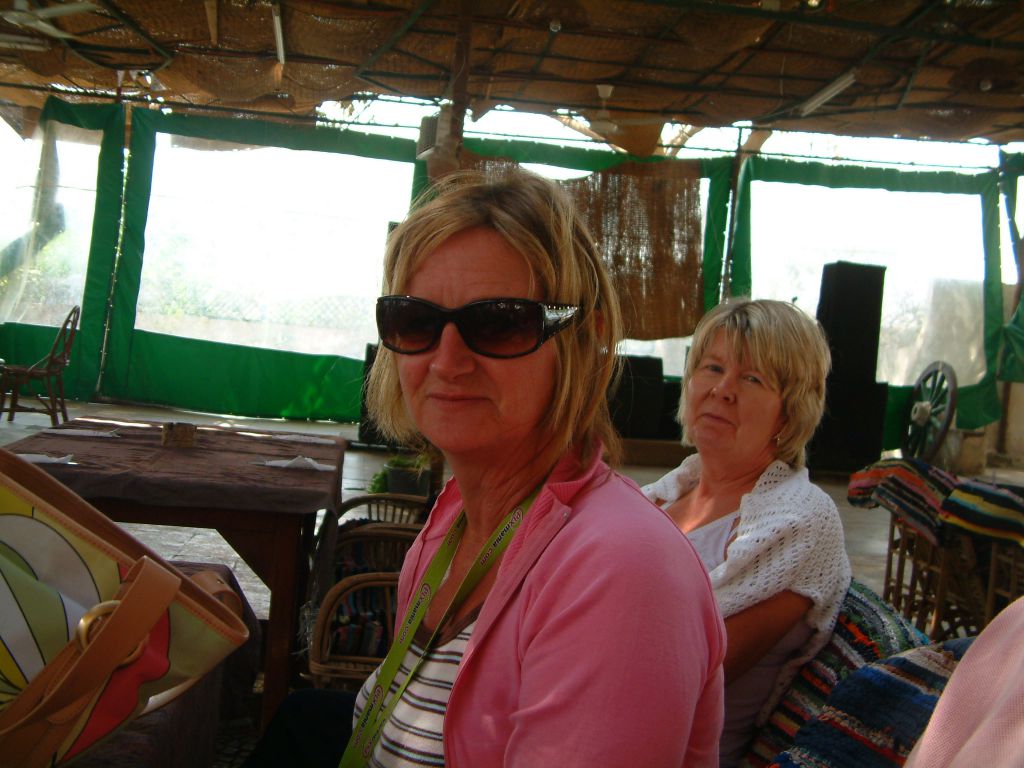
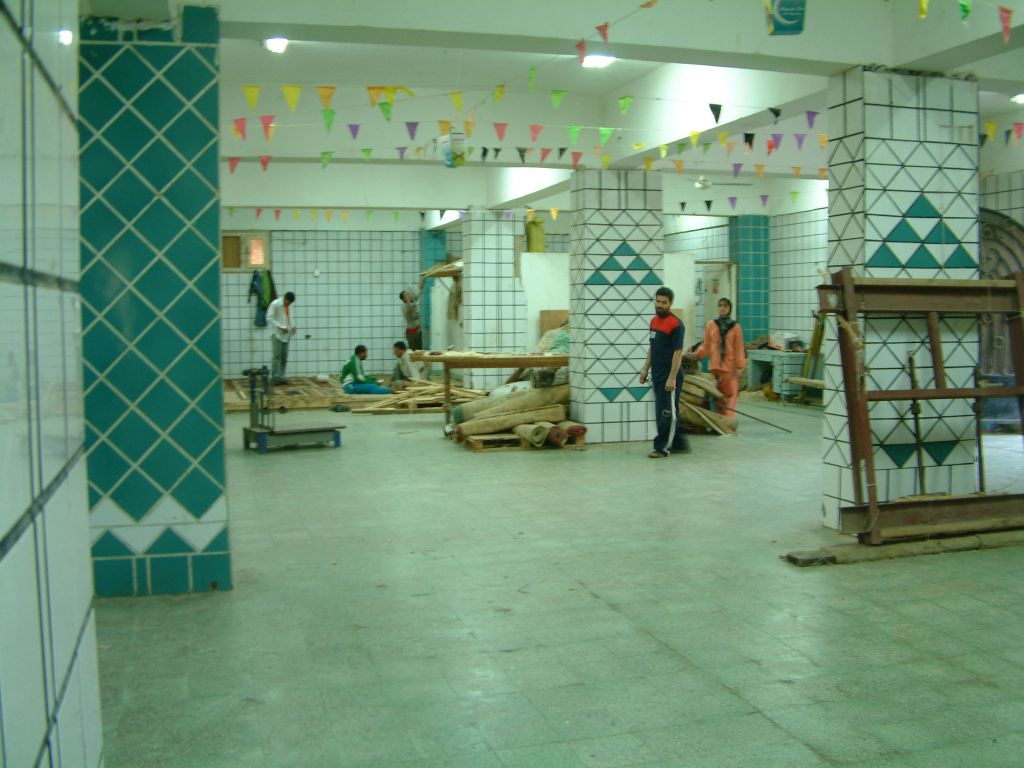
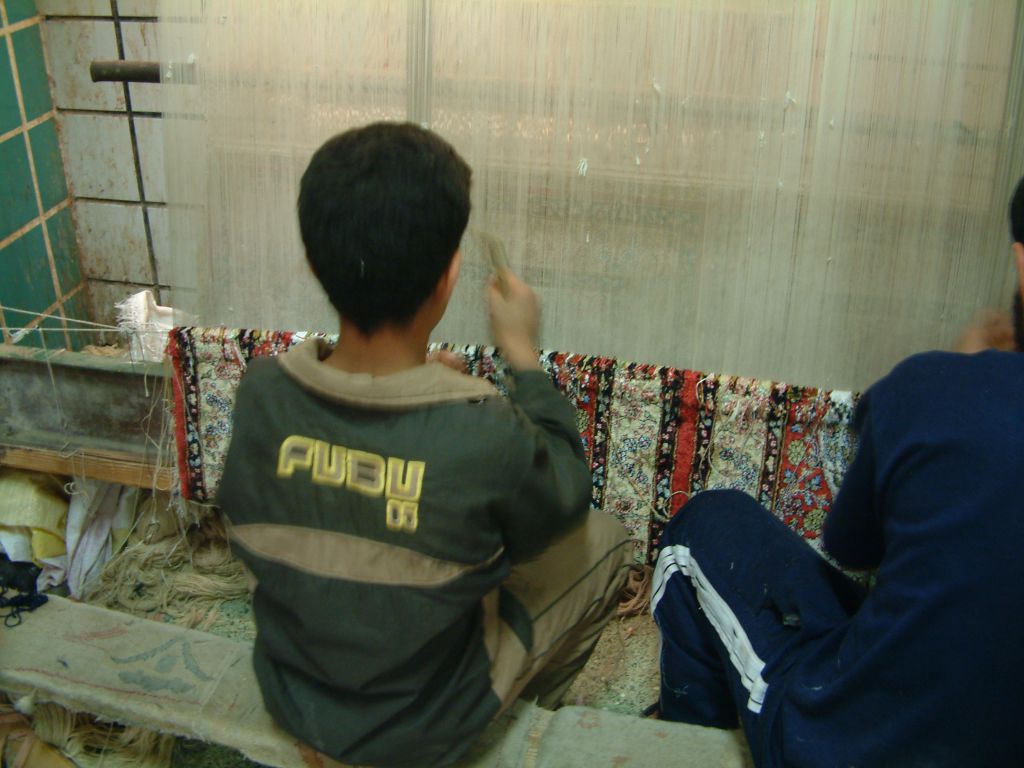
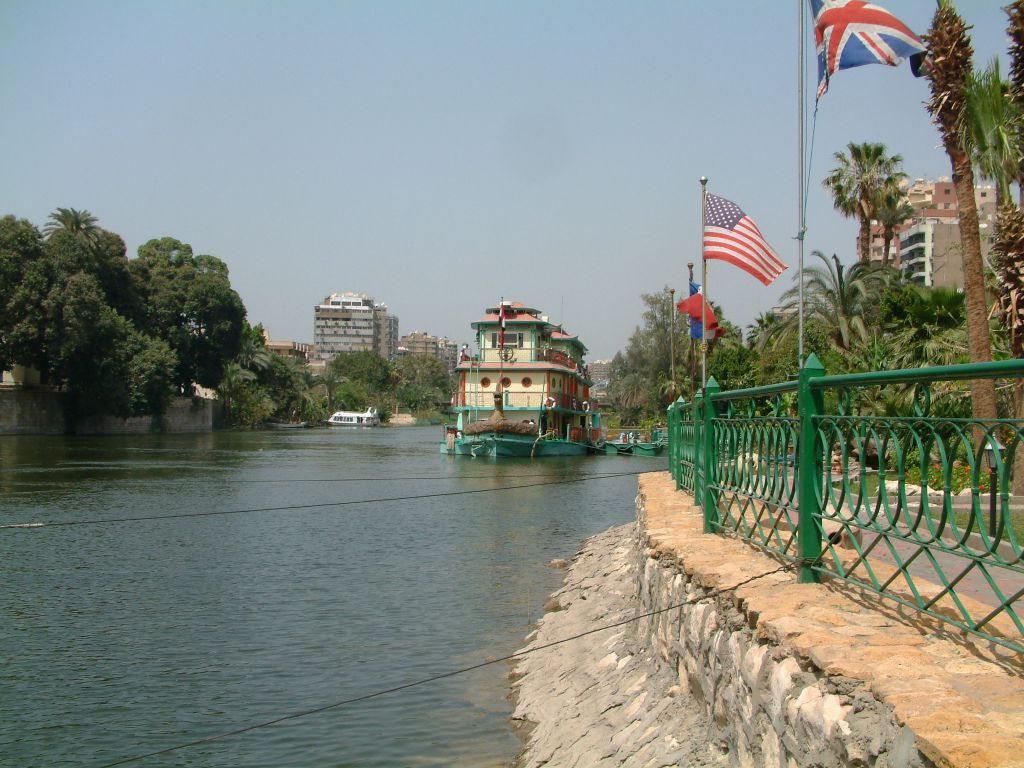
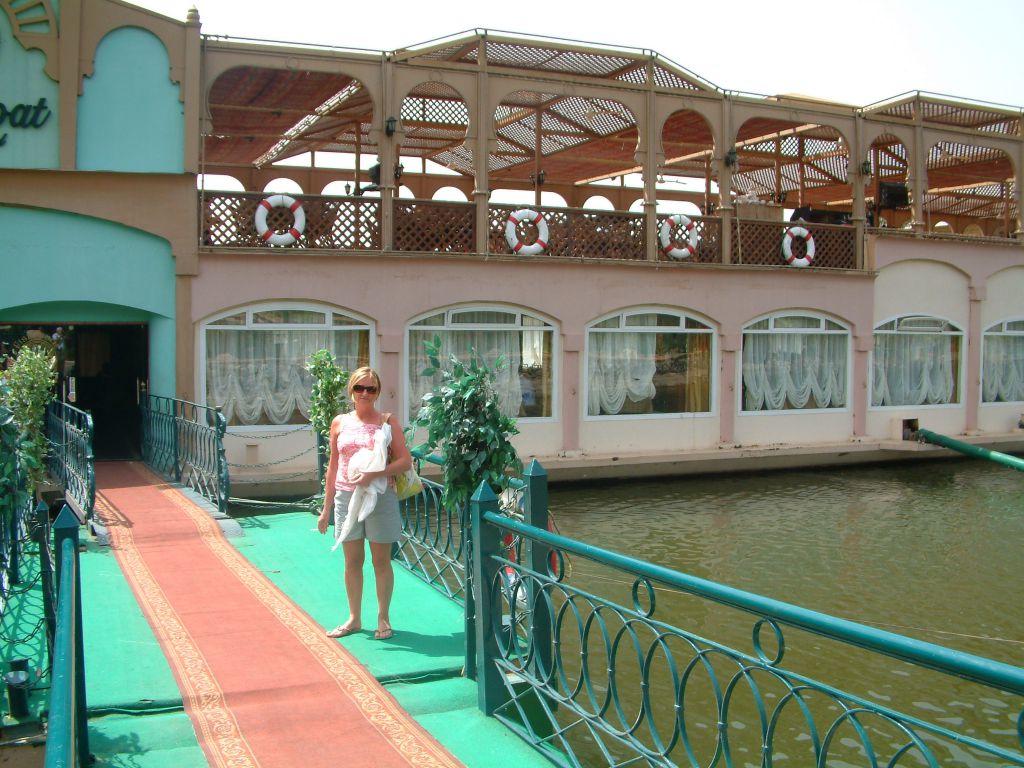
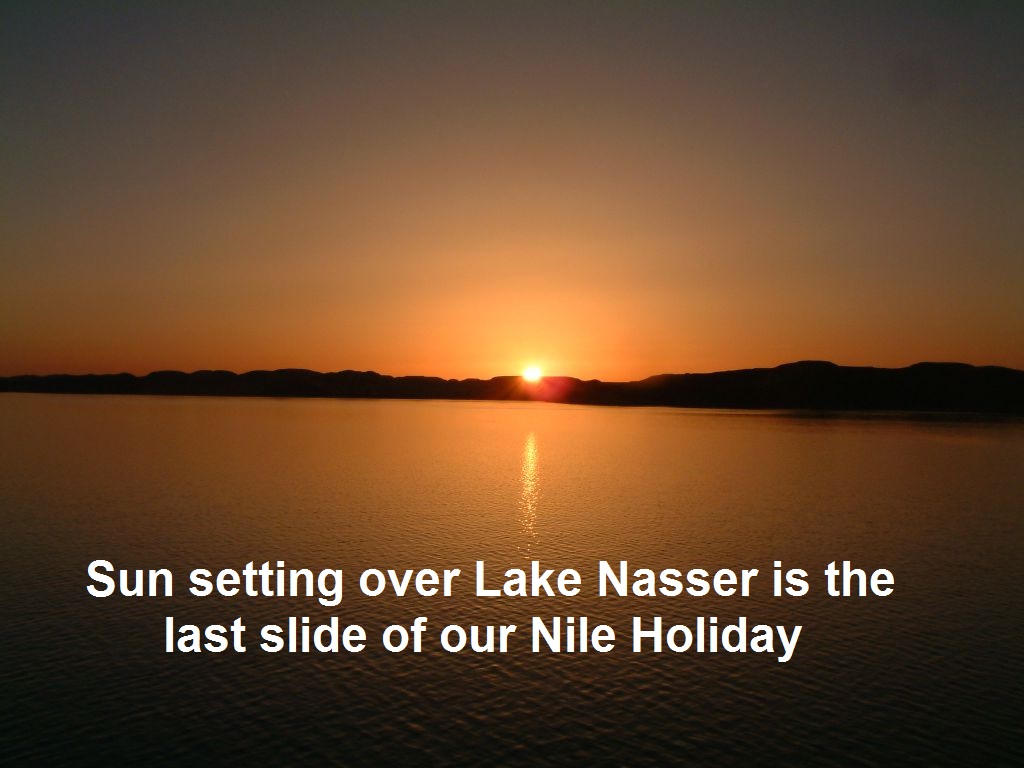
One of the first extensive holidays of our retirement was a Nile Cruise with our friends John and Sue and whilst on the trip we met Bob and Sue from Leicester who accompanied us the following year on our Kenya Safari. Our holiday involved a cruise down the Nile from Luxor to Aswan, where we transferred to another ship on Lake Nasser for a cruise across the lake to Abu Simbel. We then took a flight to Cairo for a 3 day stay which included attended trips out to the pyramids and the museum.
Although a long time now, there are some memories that I can still recall:
The Nile is like the M25 with so many cruise ships vying for mooring space that to get to the shore you often have to walk across anything up to 5 ships which are parked abreast of each other. When they pass through the locks on the river, there must be less than a finger space between the ship and the sides of the lock.
The Egyptian staff both here and in holiday hotels love to make things out of towels and blankets to leave in your room or cabin (in anticipation of a good tip I'm sure). The most memorable was a couple reading in bed which is pictured in one of the photos.
We had to go ashore on one occasion when there were no gangplanks as such and we achieved this with the help of two staff (one on land and the other on the ship) holding a broom for us to grip as we walked up a 6inch wide scaffold board stretched across the 3 feet of water. I'm not sure how the disabled managed this!
The Valley of the Kings is not to be missed for its historical value but in reality is a bit of a disappointment with many of the tombs closed and those that were open had very little to see. It was explained that in order to preserve the tombs it was necessary to only open a few at a time to reduce the foot traffic which would otherwise erode the tombs over time.
Nowhere in Egypt was safe at that time and we were escorted off ship everywhere by armed guards.
The Nile cruise ships (at least those we went on are OK, a bit gaudy and bright, but the ship we crossed Lake Nasser, the MS Eugenie, was fabulous and Lake Nasser is very quiet with not too many ships and much more space to utilise. This part of the holiday was very restful and the scenery was beautiful, especially the sunsets.
It was quite amusing watching the 'looky-looky' men from their small skiffs trying to sell you towels by throwing them up to you on the decks of the ships inside poly bags; Jane and Sue caught two before throwing them back into the water wherupon the men on the boats frantically gathered them in.
We visited the Pharaoh Hatshepsut's Temple of Deir el-Bahri which less than 10 years previously had been the site of the shooting of 62 tourists by 6 Islamist gunmen. This temple is quite unlike any other we visited and appears much more modern, although it was originally constructed during Hatshepsut's reign (1479-1458 BCE).
The following link (Queen Hatshepsut) gives a very interesting account of her reign and achievements.
Our visit to the temple at Abu Simbel was a real highlight as we approached it from Lake Nasser in mid afternoon with champagne on deck and Aida by Verdi playing in the background. It is truly amazing how this temple was re-assembled on higher ground (stone by stone) and aligned with the east so that, twice a year, on 21 February and 21 October, the sun shines directly into the sanctuary of The Great Temple to illuminate the statues of Ramesses and Amun, dates that are thought to correspond to Ramesses' birthday and coronation.
Most evenings on the ships were organised with dancing, fancy dress and cabarets; one evening on the Nile the men had to use the galabayas we had purchased and the girls a female form of the galabaya and fancy shawl around their heads. All good fun and I'm sure the quayside traders made a few shekels selling the clothing.
We had the obigatory camel ride near Aswan to a Nubian village which at the time was quite dilapidated (although there were several satellite dishes on the roofs I noticed). I understand that the Nubians have made big changes now and tourism is very big business. The Nubians are a lovely, welcoming people and deserve all they can make from the modern world, although I think I prefer it as it was 13 years ago.
Jane decided on another camel ride with the others but my stomach was a bit dodgy so I declined, fortunately. Jane returned having done some damage to her coccyx and vowed that would be her last ride on a camel.
Understandably much of our trips out involved going to a temple as there are so many with history going back centuries to BC times. It's amazing that so much is still preserved, probably due to the very dry climate, and I decided to read up on some of them which can be read by clicking on the pictures above. It would be fair to say that we were 'templed' out by the end of the holiday but it was a wonderful experience that I would put near the top of anyones' bucket list to be seen before we leave this place.
We had a stressful flight up from Abu Simbel to Cairo for the last three days of our holiday; it was a typical domestic flight, with no reserved seats and first come first served and as such was impossible to get seats together. Jane hates flying at the best of times and this caused her great stress. Fortunately the flight was only about 30 minutes but it did spoil our day a bit. The hotel we stayed at was literally underneath the Gisa pyramids which you could see from our room and was nice place to stay. We hired a guide to take us around and the sights we visited were the pyramids, sphynx, the boat museum, the Cairo museum, a rug making factory and Memphis.
The Cairo Museum is an absolute must for any visitor but half a day as we had was clearly insufficient to see what is an incredible collection of Egyption historical memorabilia including the Tutankhamun exhibition. There is so much and still more being found that a new museum to house everything is currently being built outside central Cairo, on the Giza plateau on the edge of the Western Desert.
The visit to Memphis was also quite memorable with one of the two Colossi of Ramses II on display, but this one laid down due to the absence of feet on the statue. The (83 ton) second statue was transported to the new Grand Egyptian Museum and when the new museum opens at the end of 2020 (Covid pandemic permitting) is destined to be located at the entrance to the museum. Also in the grounds of the Memphis museum is an alabaster sphynx. The site of the museum comes under the umbrella of the United Nations Educational, Scientific and Cultural Organisation (UNESCO) and was the ancient and first capital of Egypt, founded by King Meni who united Upper and Lower Egypt, and most of which was built under the rule of King Ramses II, one of the most revered and powerful pharoahs in Egyptian history.
Our guide for this trip out into Cairo and the surrounding areas was very good and took us into areas that we probably would not have seen if by ourselves. We experienced the delights of travelling by car in Cairo where it appears there are no rules of the road. We saw a pick-up truck with 6 camels standing in the back driving along the main roads. In order to get to the carpet factory, we reverted to driving on the wrong side of a duel carriage way, against the traffic flow, but apart from a lot of honking of horns, no-one seemed to care. We saw houses close up which had the typical Egyptian construction of floor on top of floor with the pillars extended ready for the next floor; this allows each generation to live in the same house with latest generation on the ground floor and older generation on floors above, i.e. parents (ground floor), grandparents (first floor), great-grandparents (second floor). Very interesting. At the restaurant we went to for lunch we watched a lady making Egyptian Flatbread and baking the dough in a sort of make-shift oven.
At the end of our holiday we all agreed that it was truly wonderful experience although I suspect that it would be much more commercialised now especially some of the areas we visited, e.g. the Nubian village, and I expect there are far more ships on Lake Nasser now which was the part of the holiday I enjoyed the most. It was such a relaxing 3 days and the approach to Abu Simbel with Aida playing whilst being served with champagne on deck is one of my abiding memories. We visited in 2006 and now 14years later I have had to rack my brains to remember what we did and what all the photos we took were of. Although we don't like to go to the same place twice as it is usually not so good the second time, I think that Egypt, along with Kenya may be the exception.
Click link below for more information about places we visited